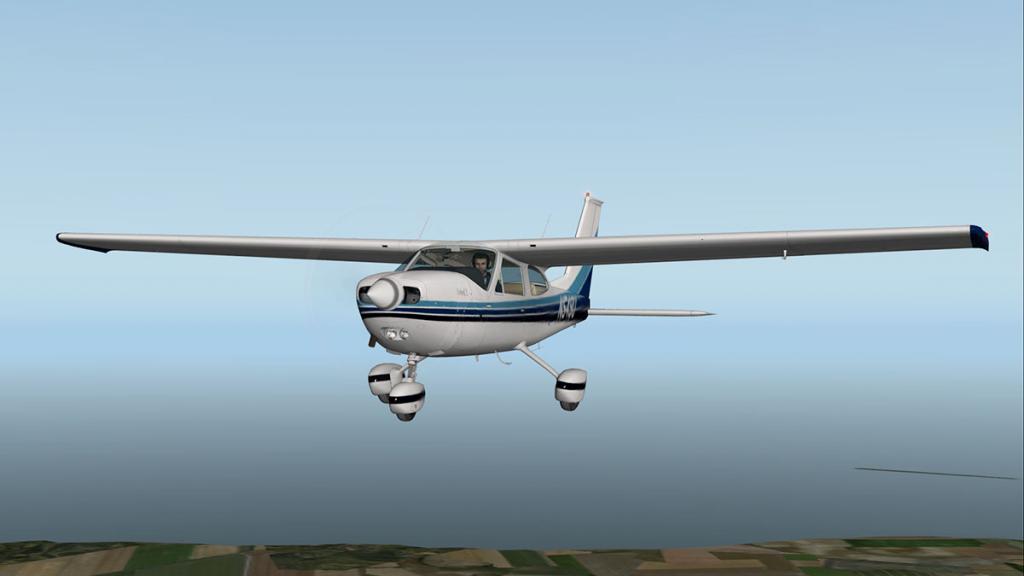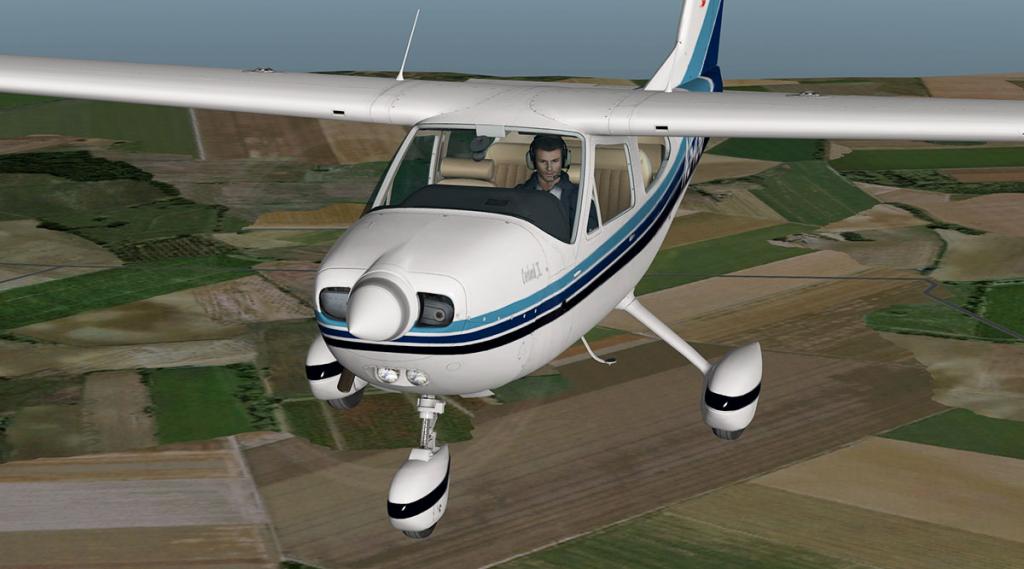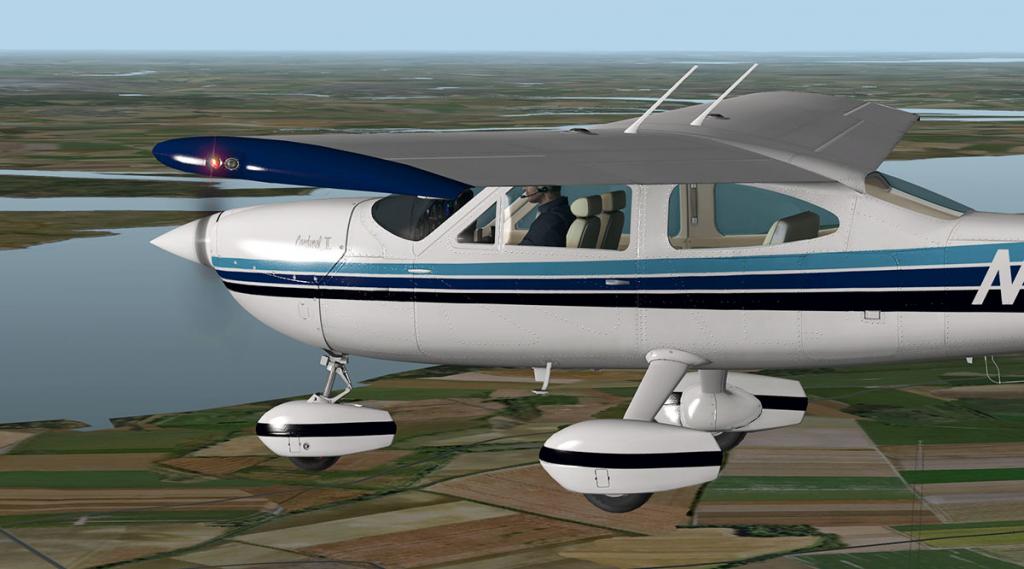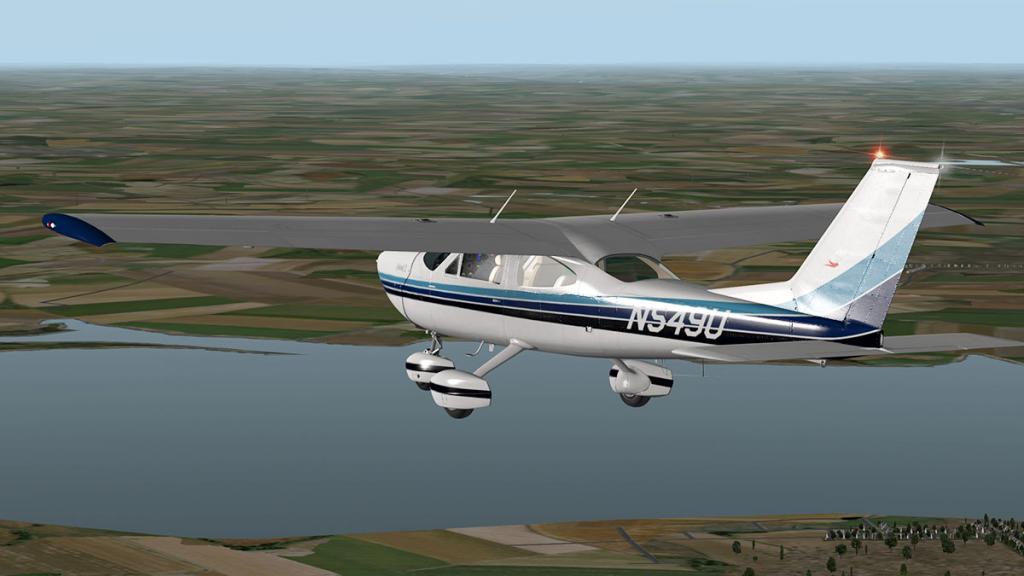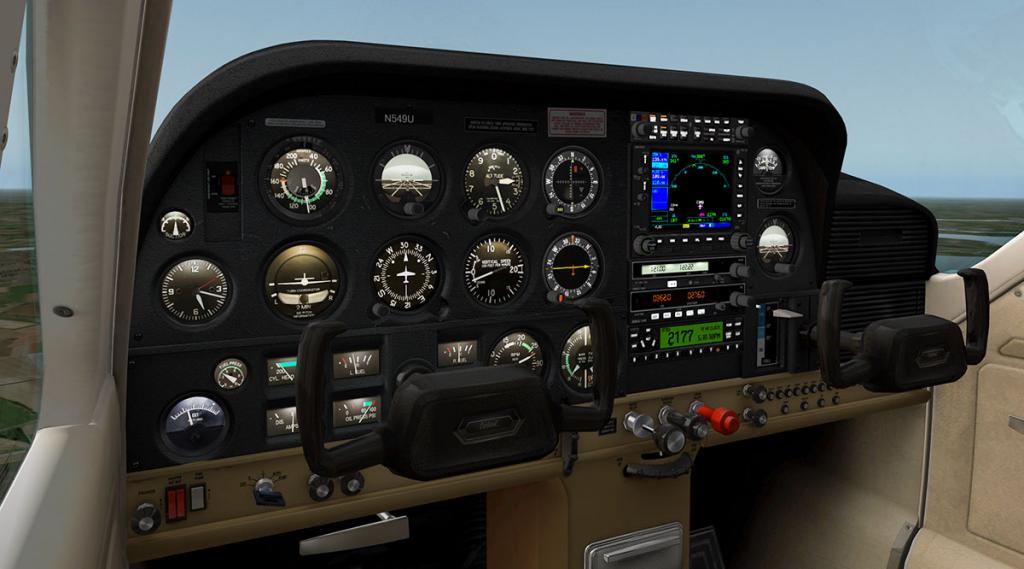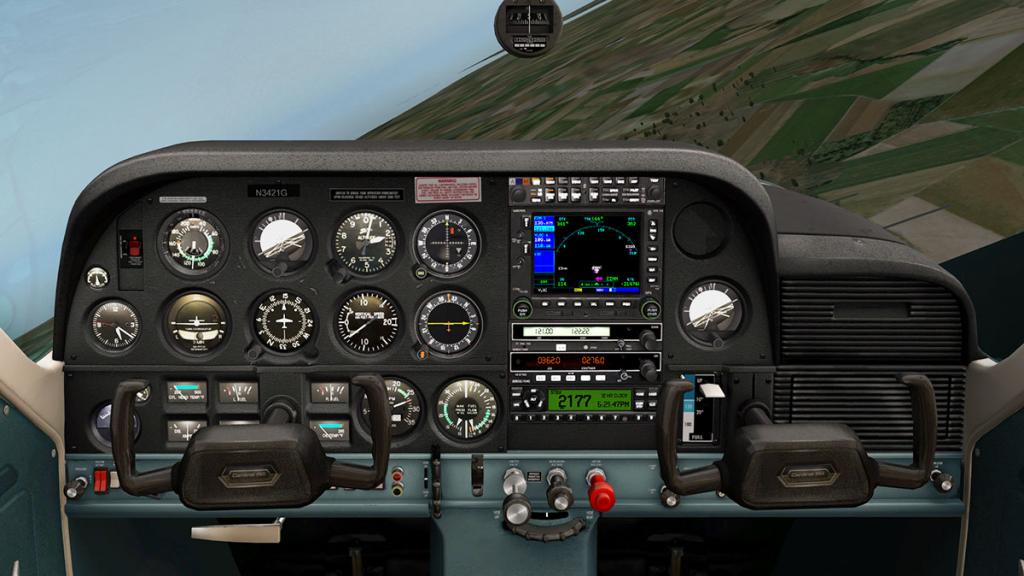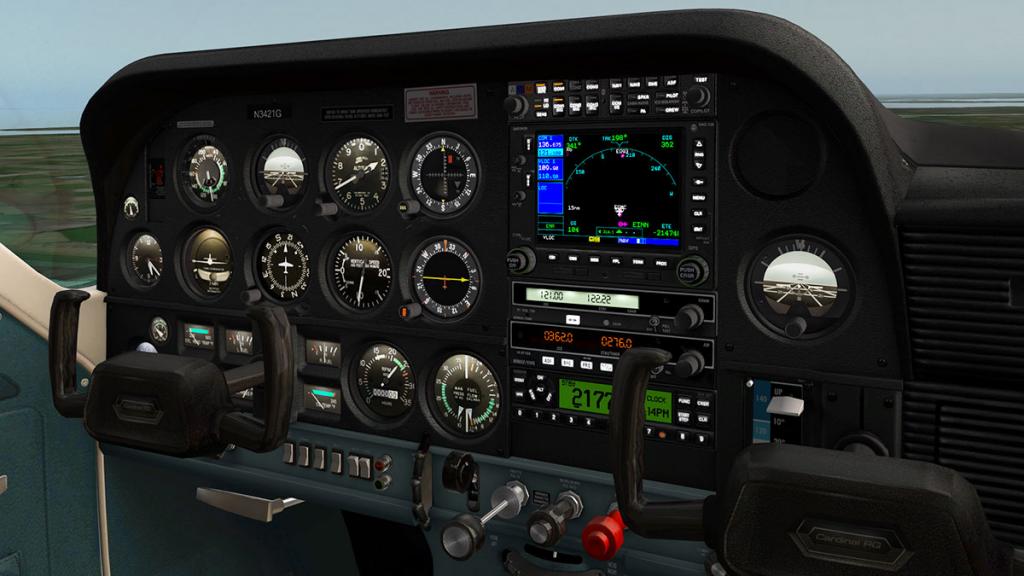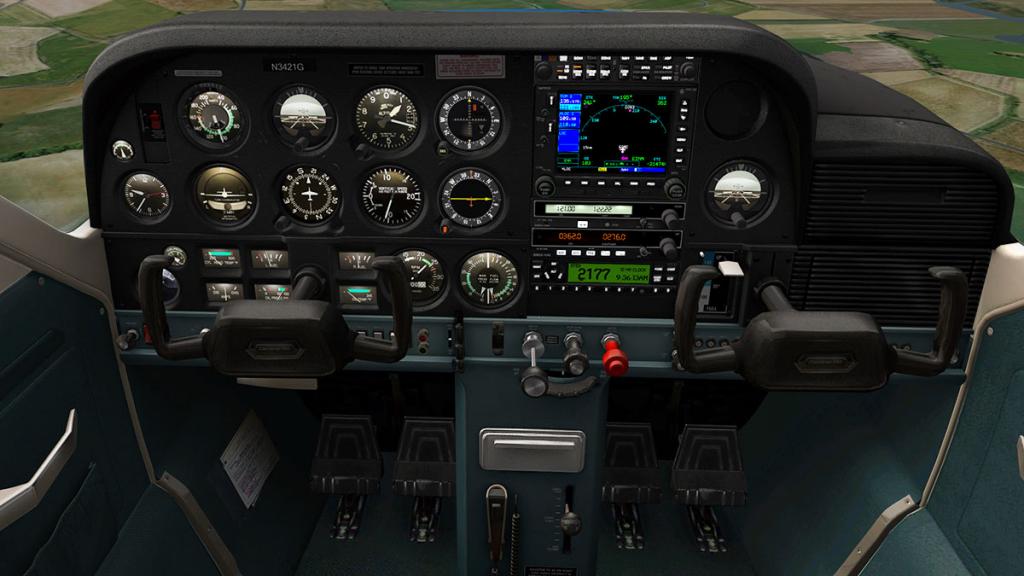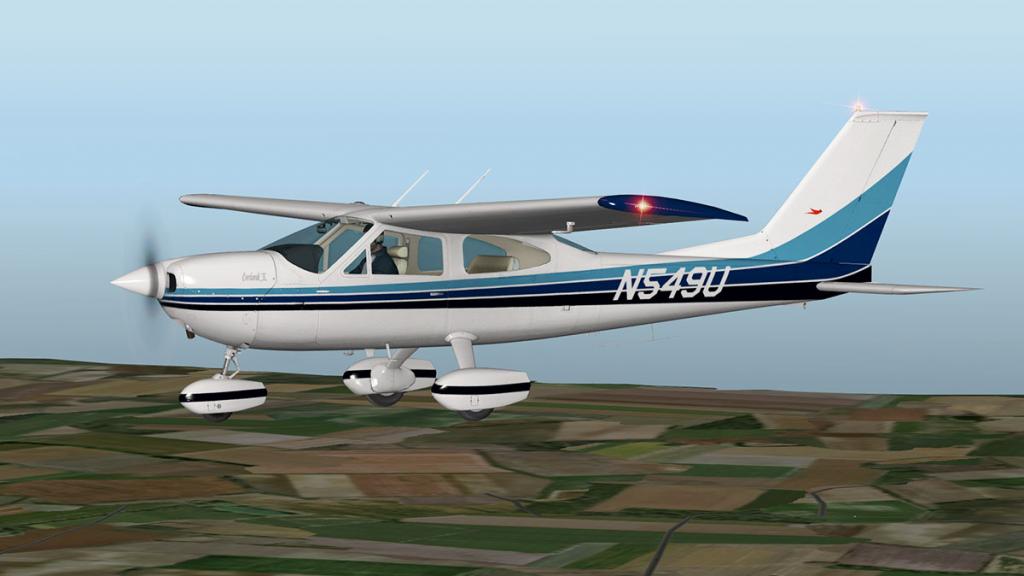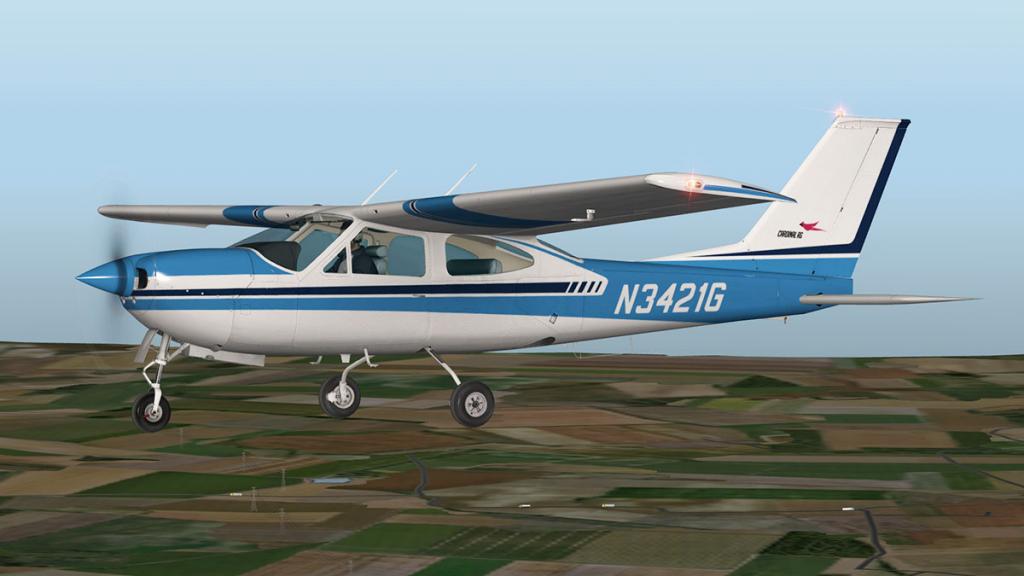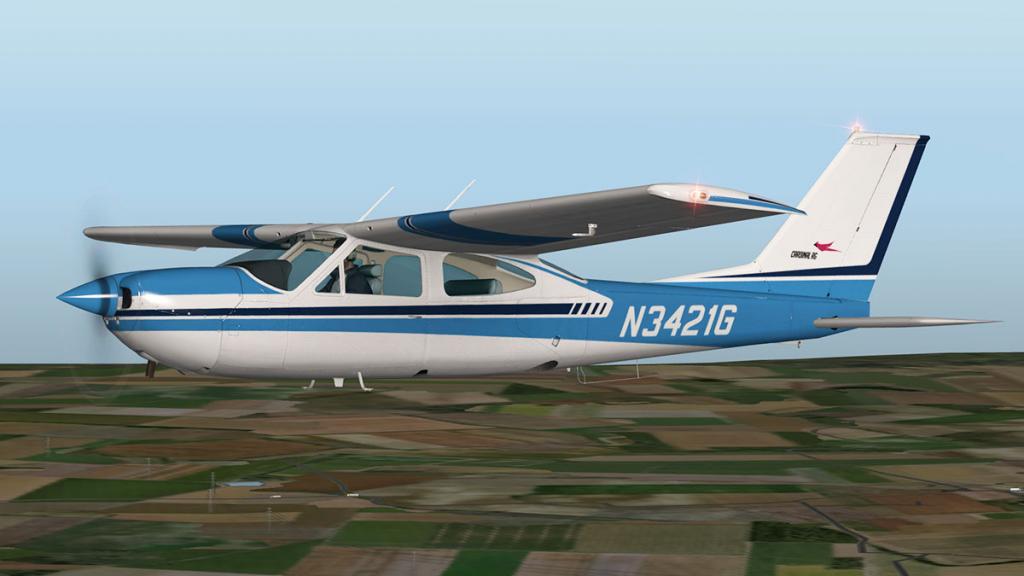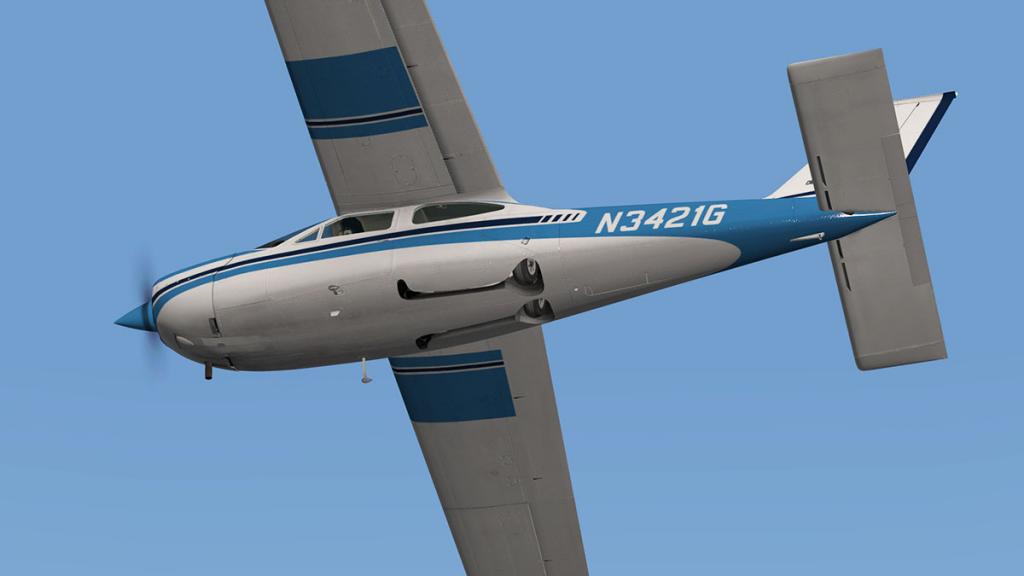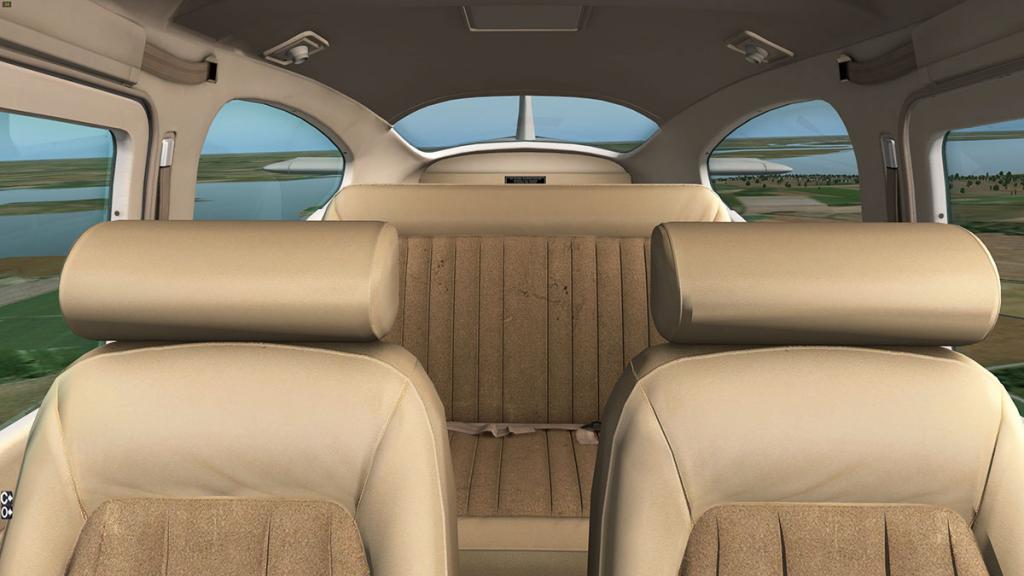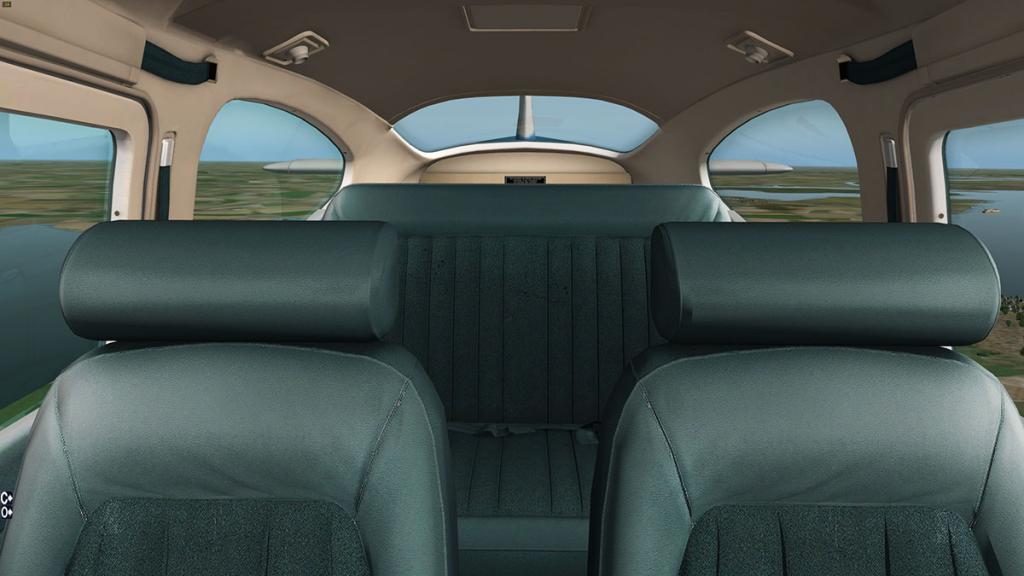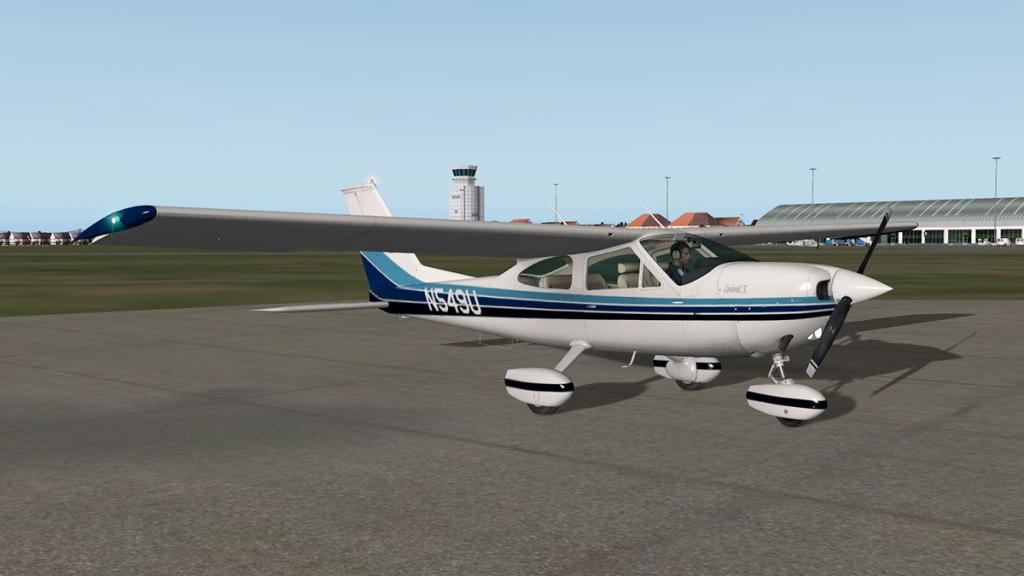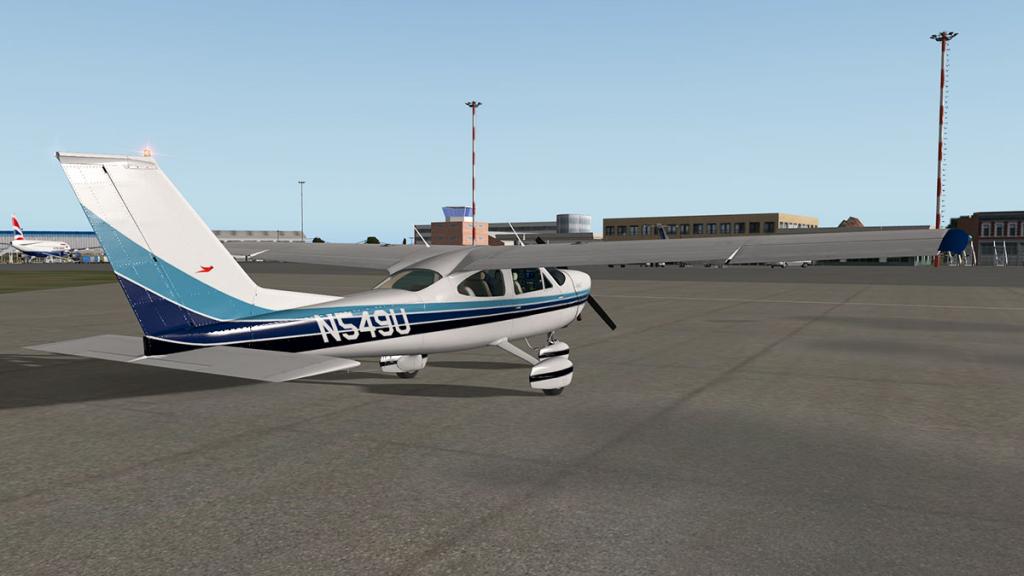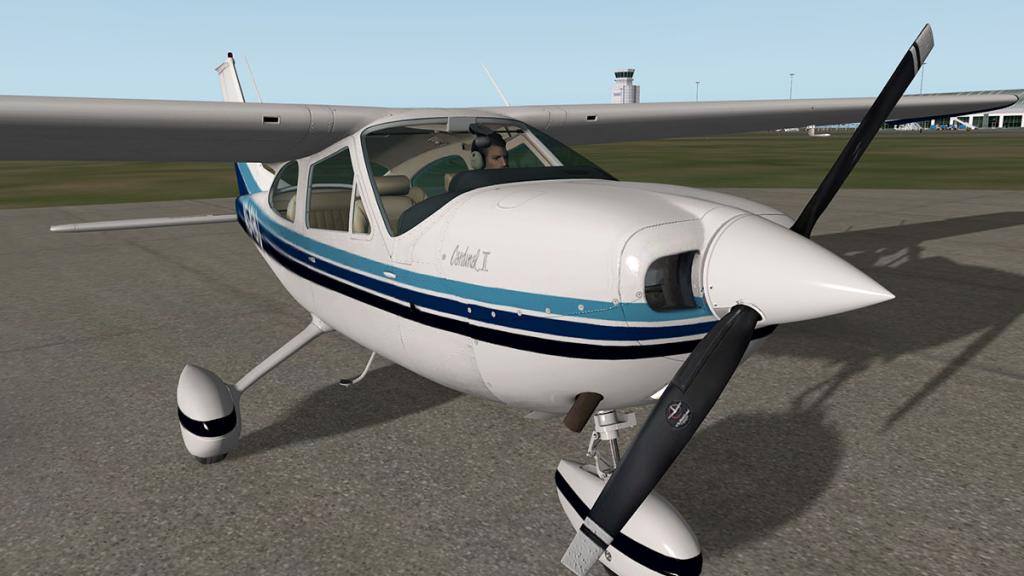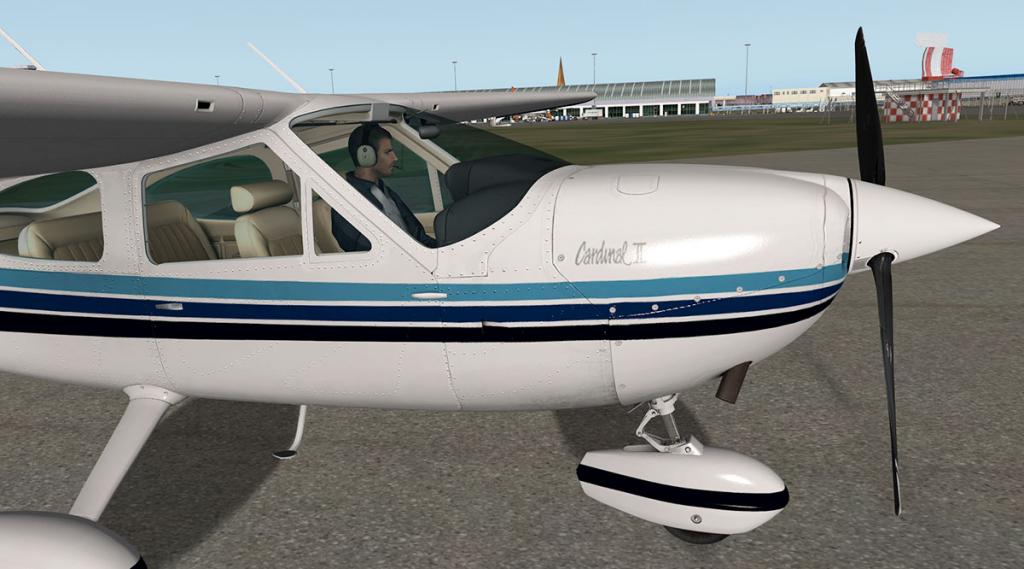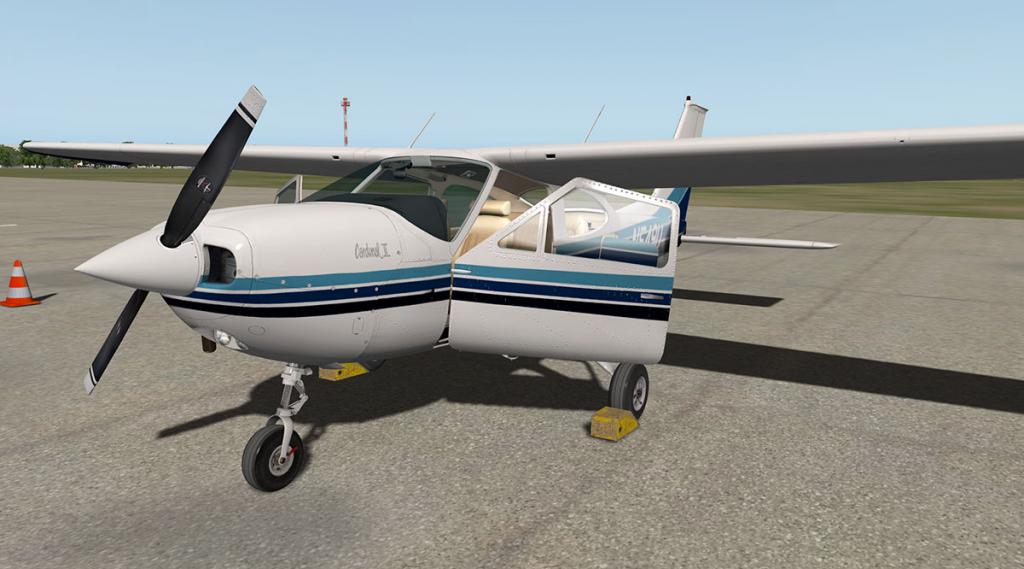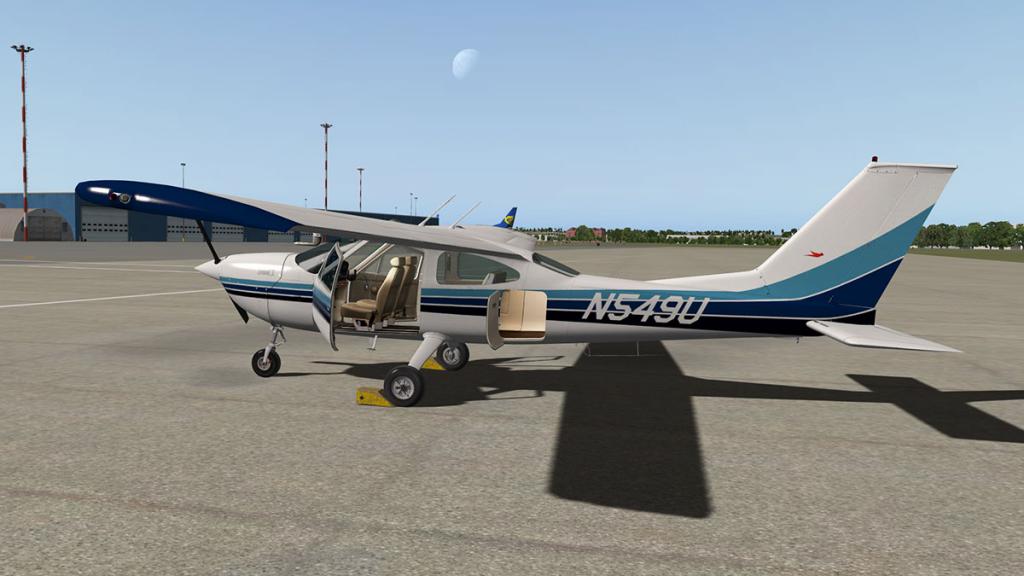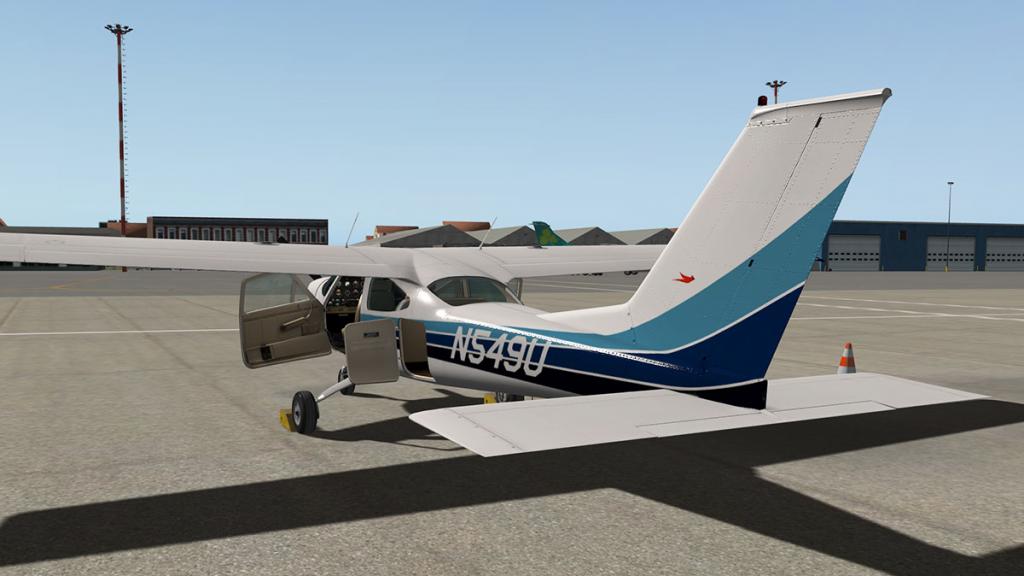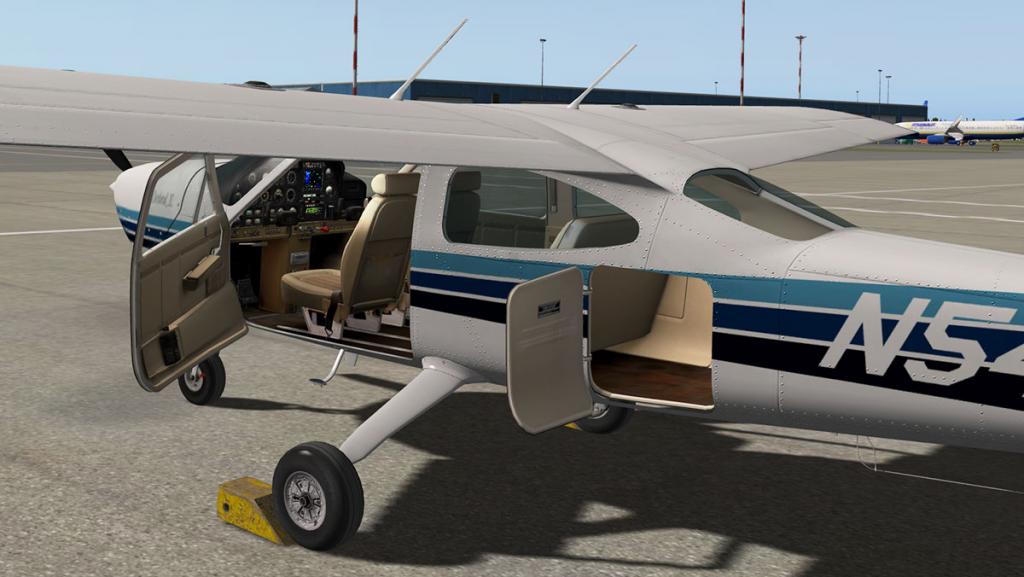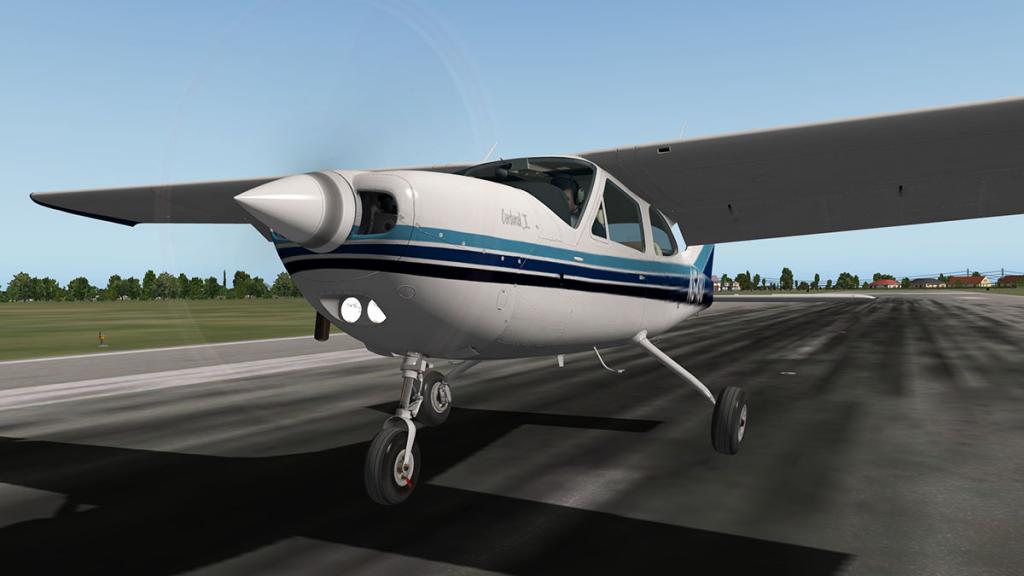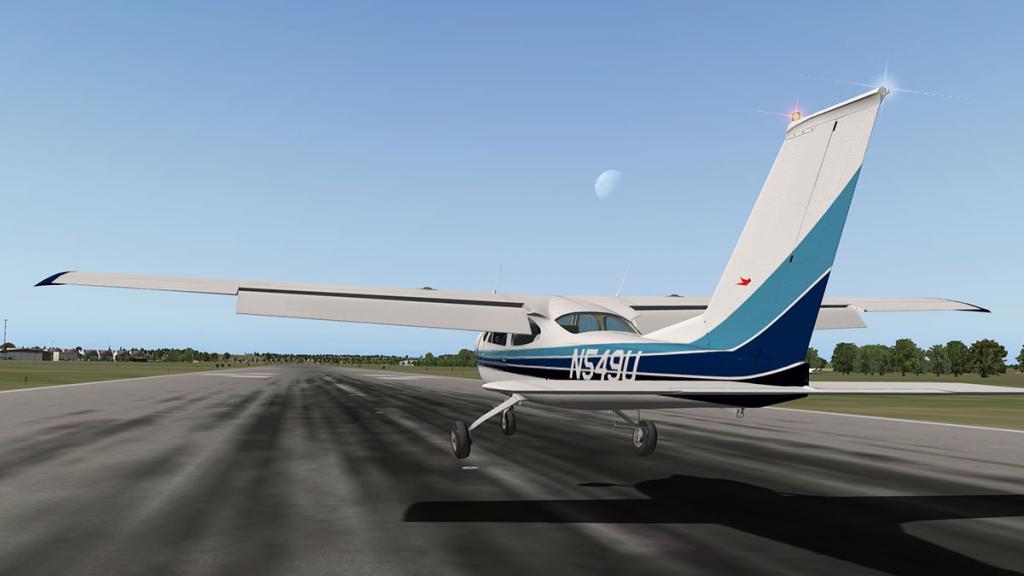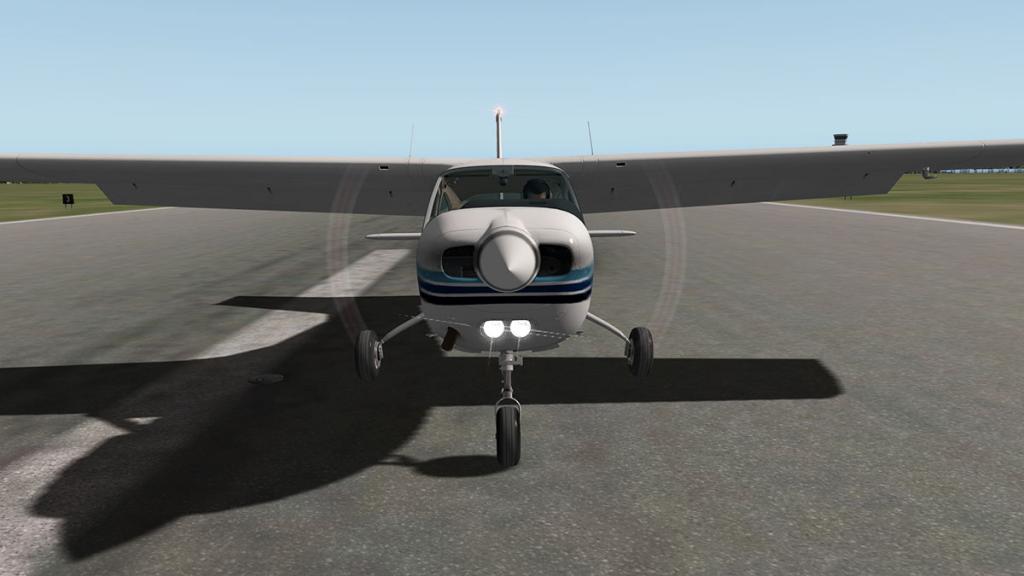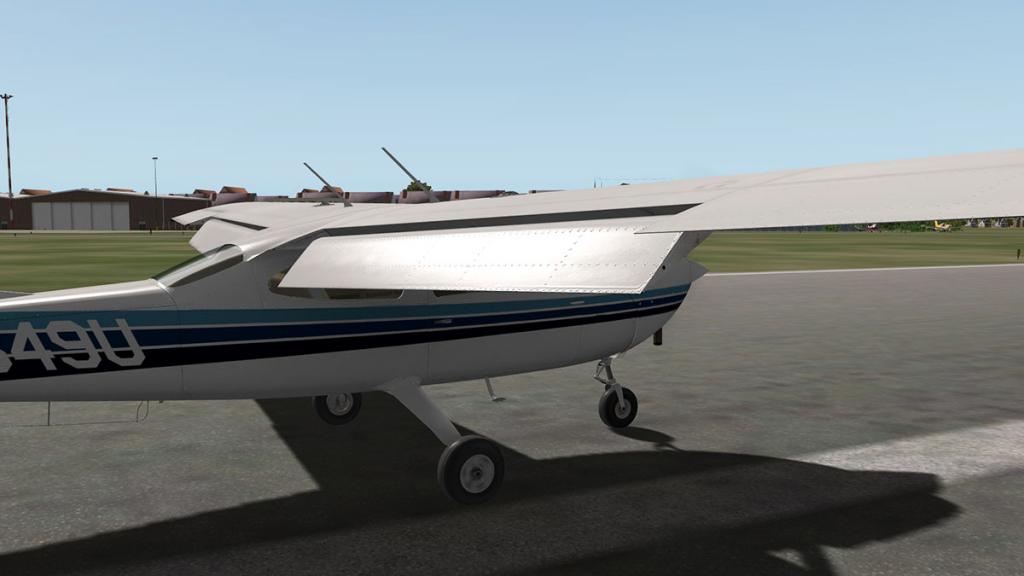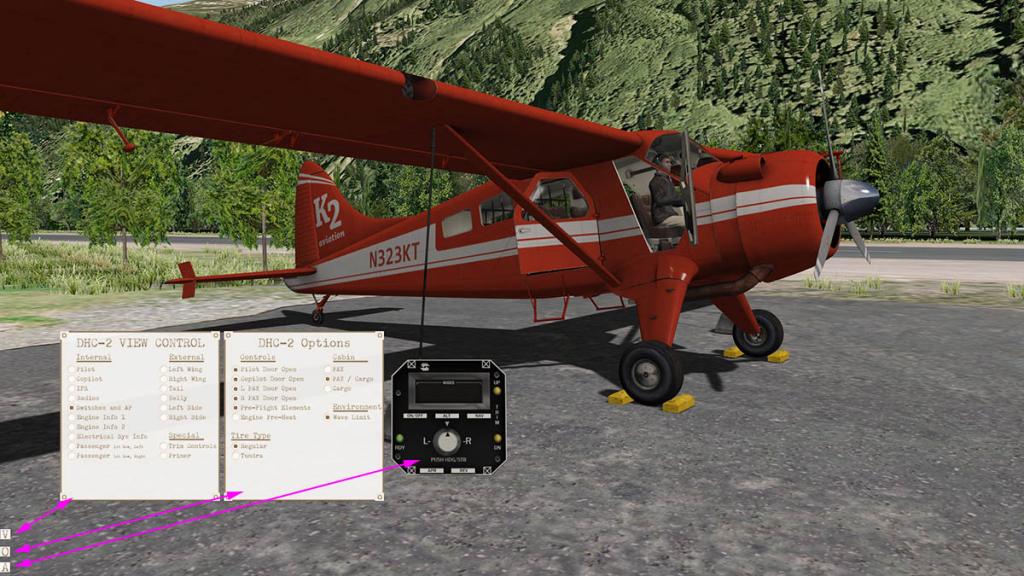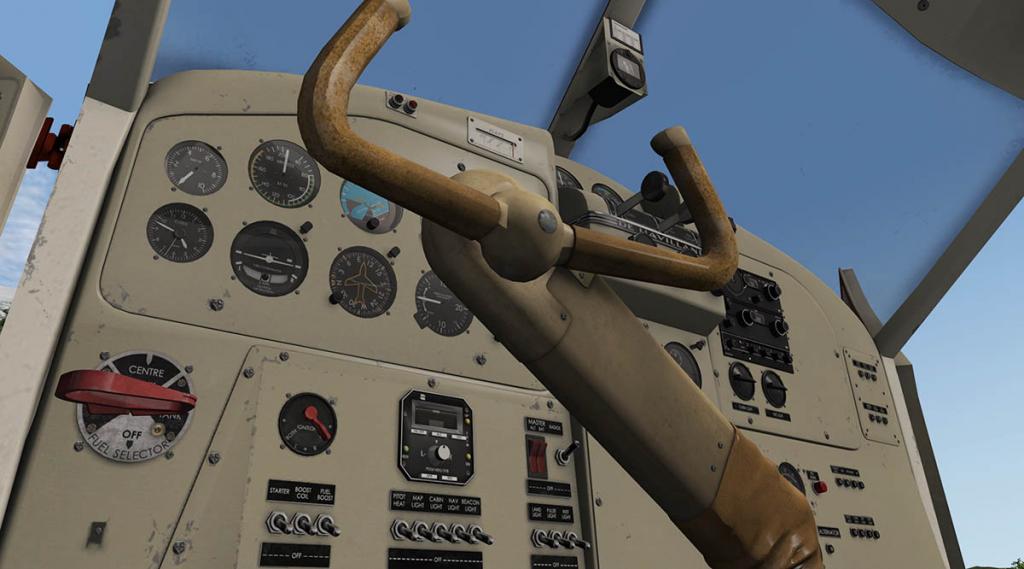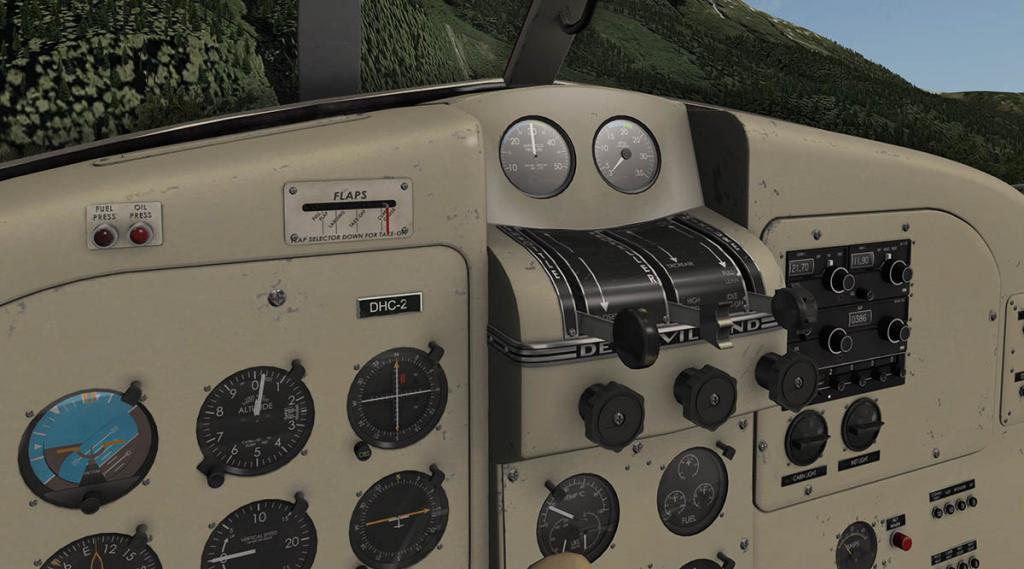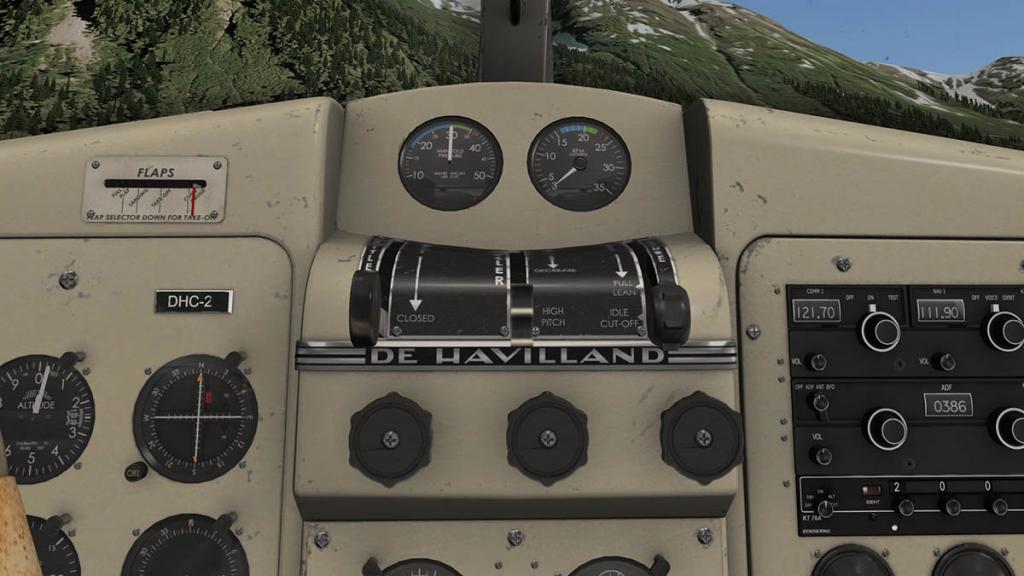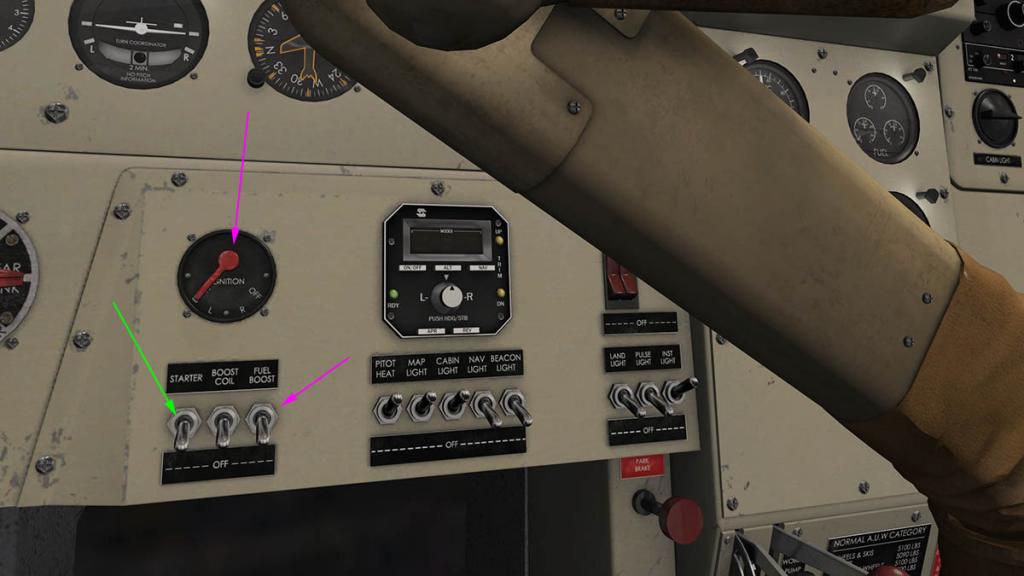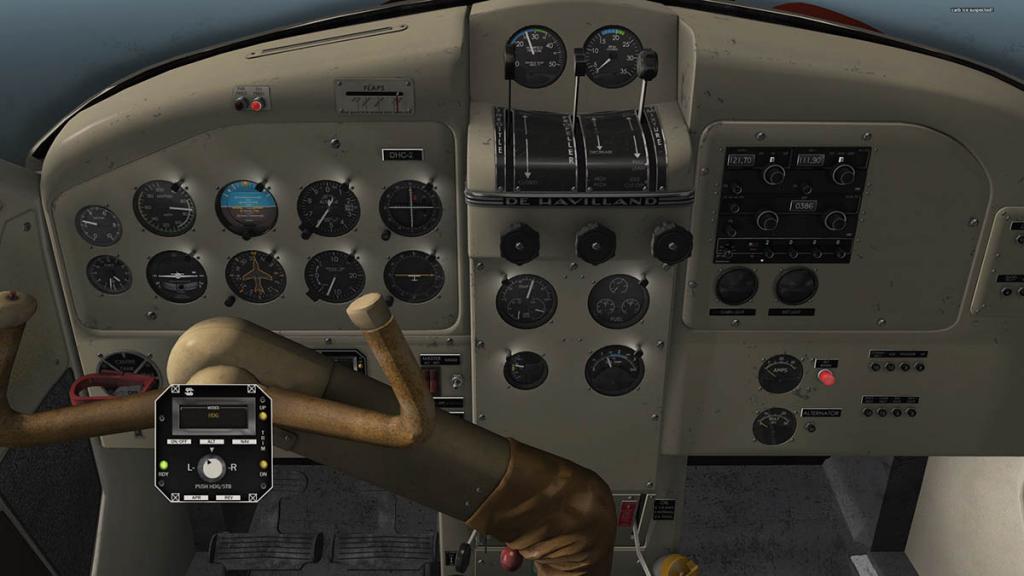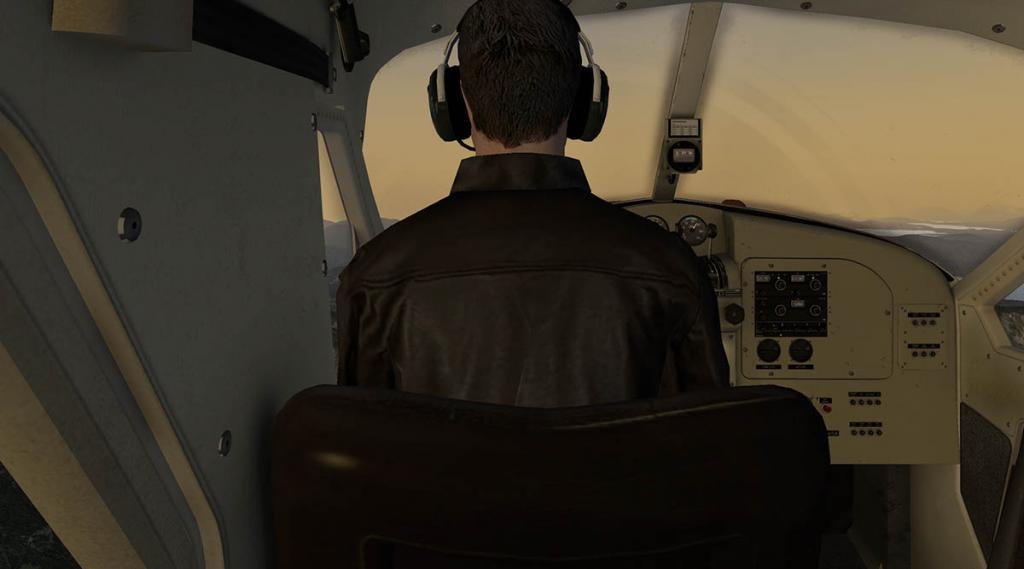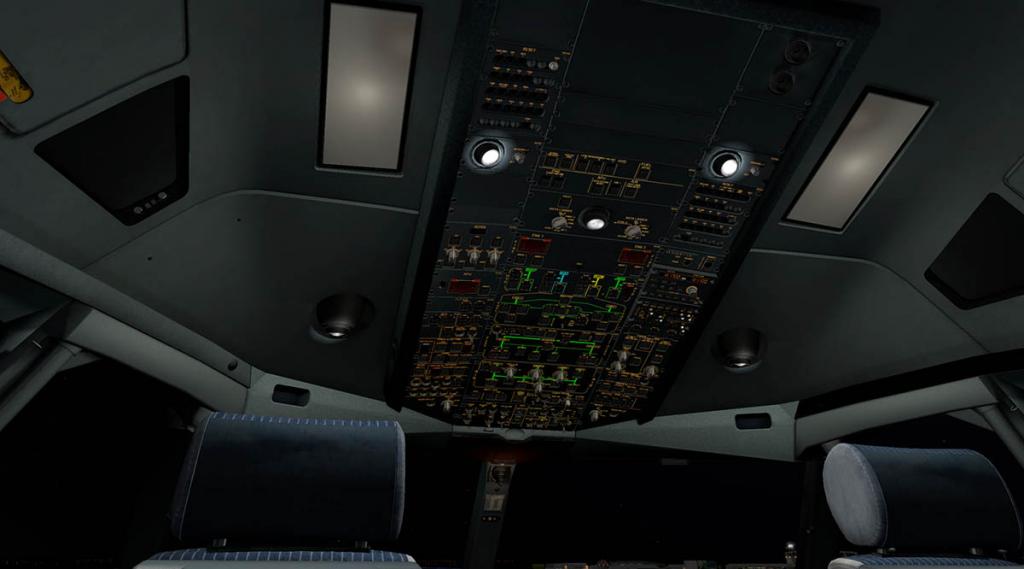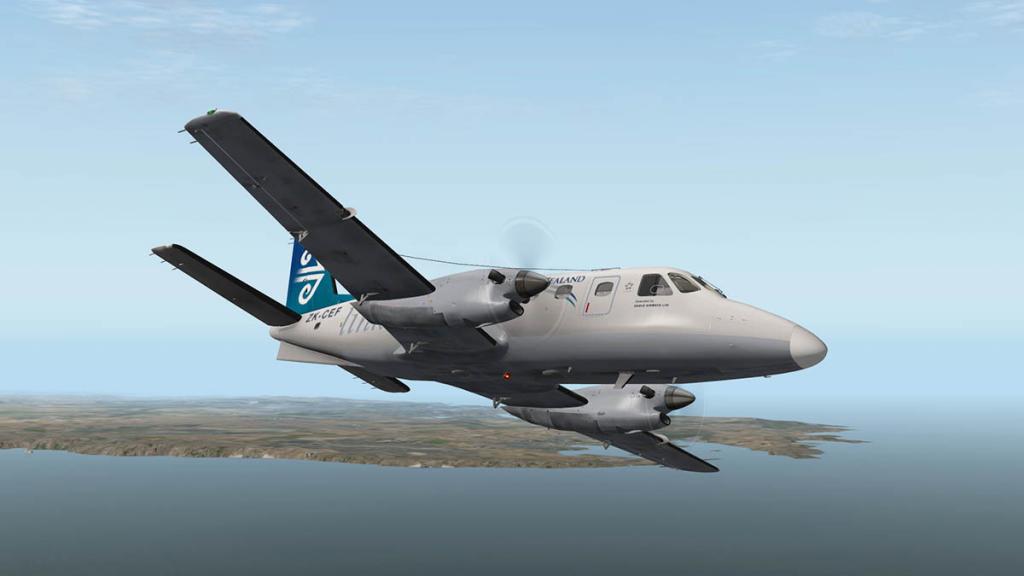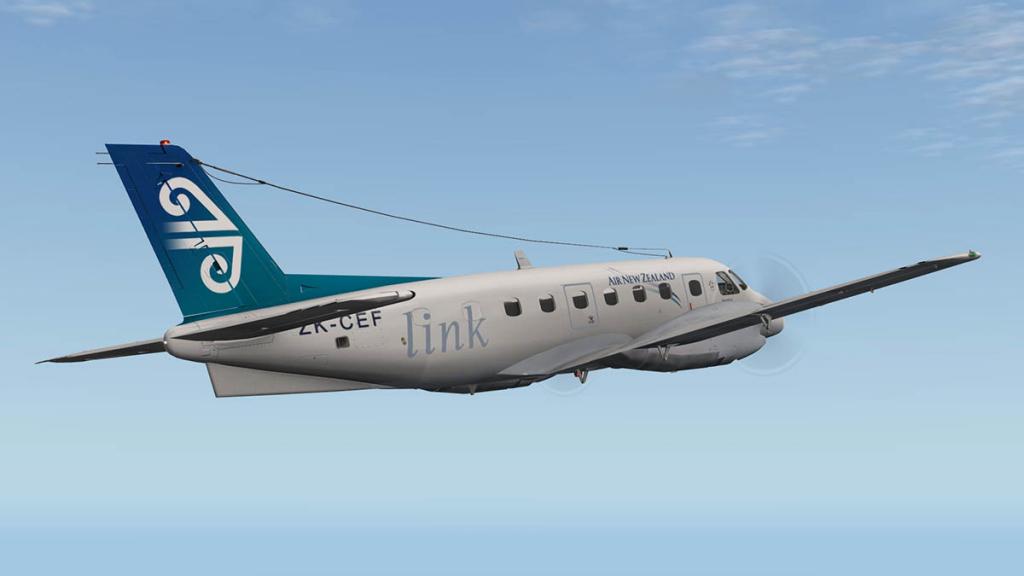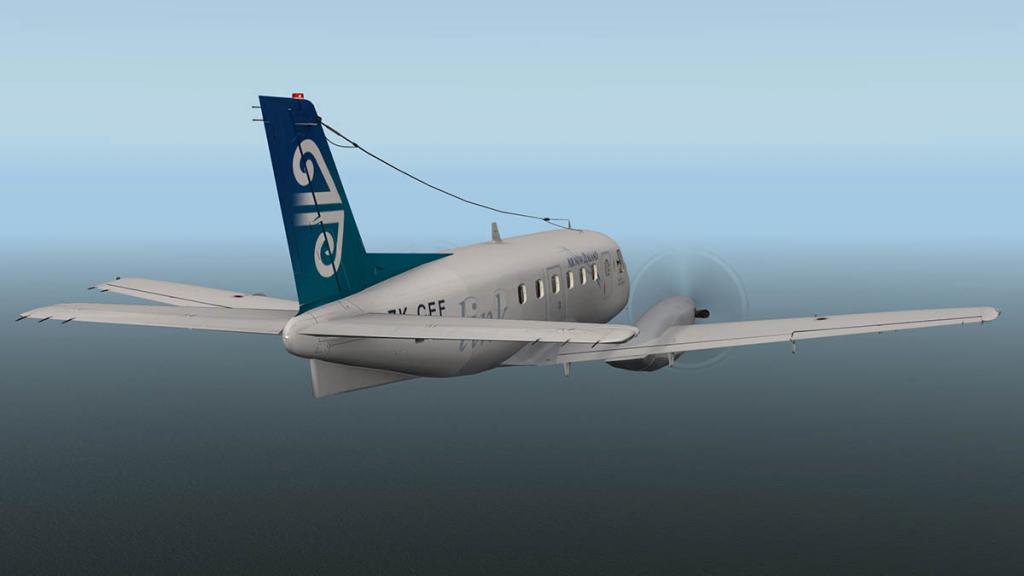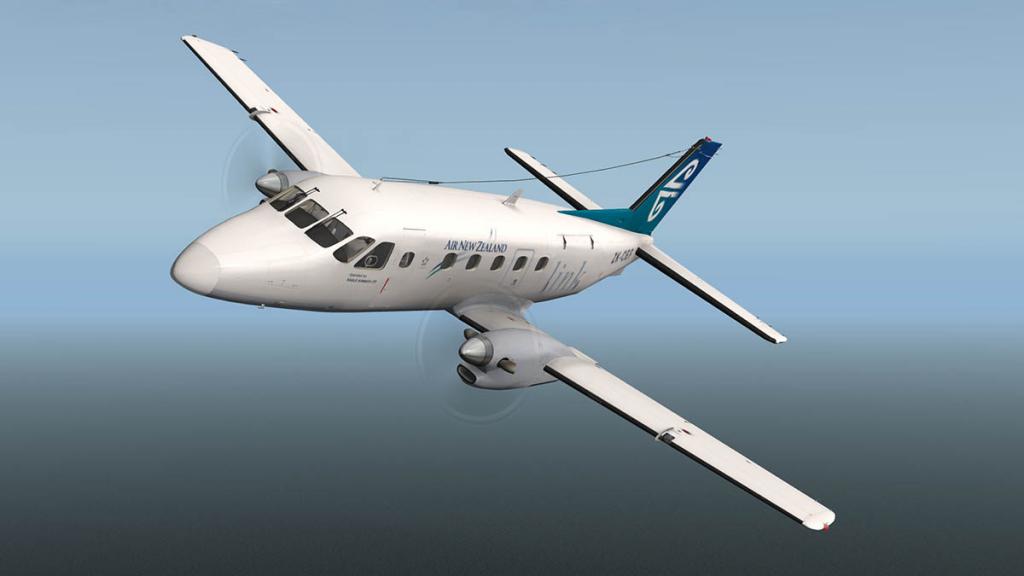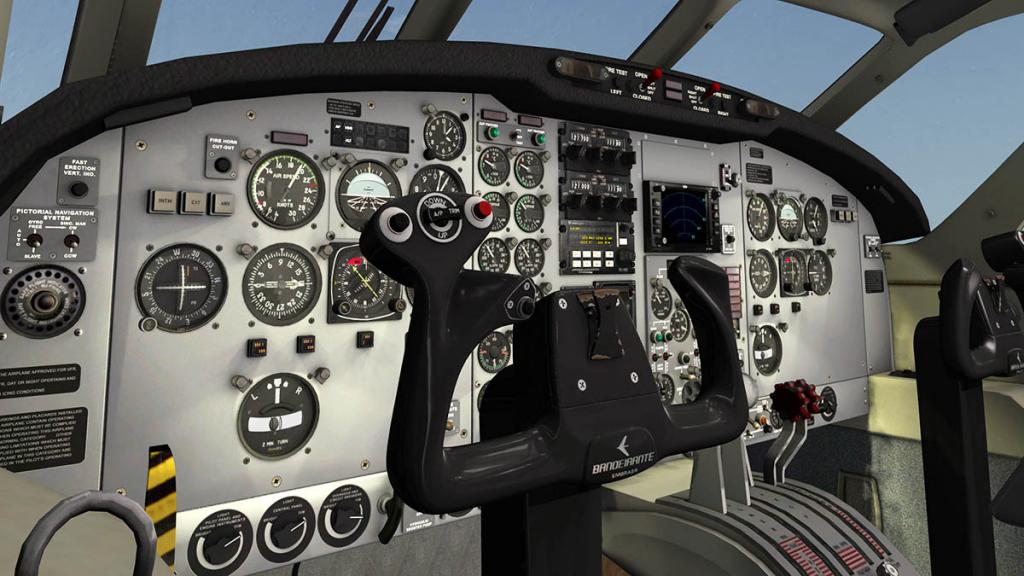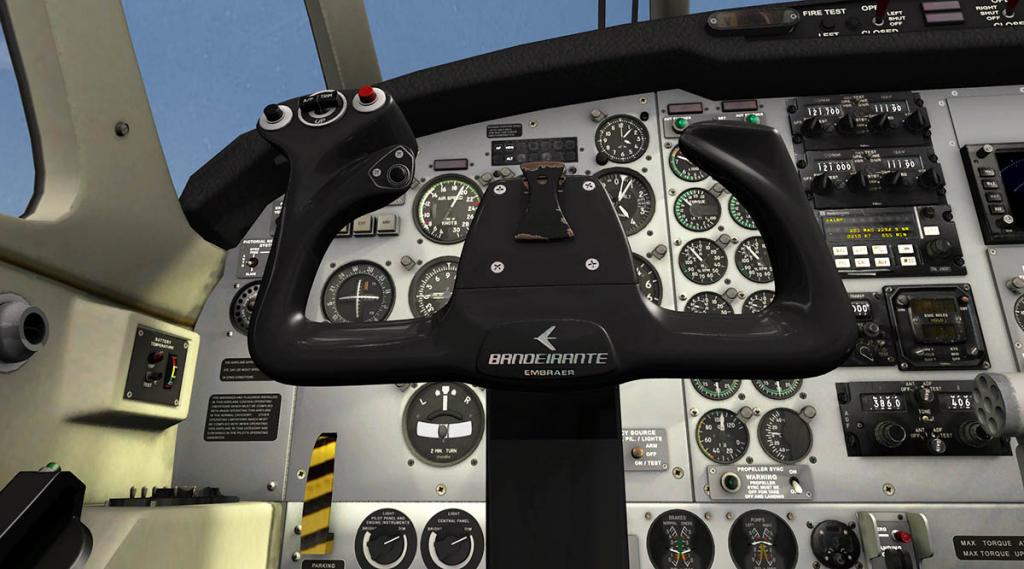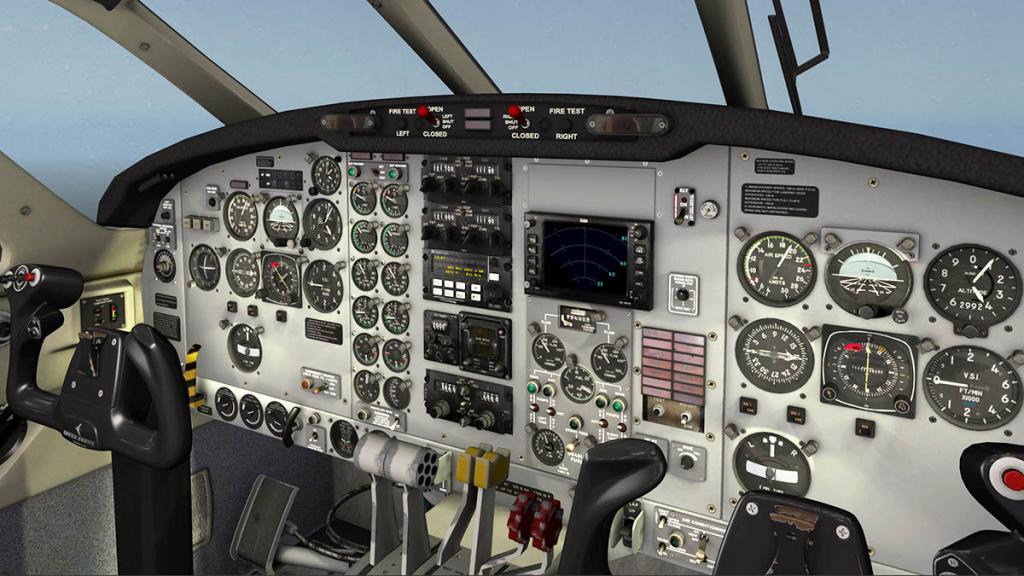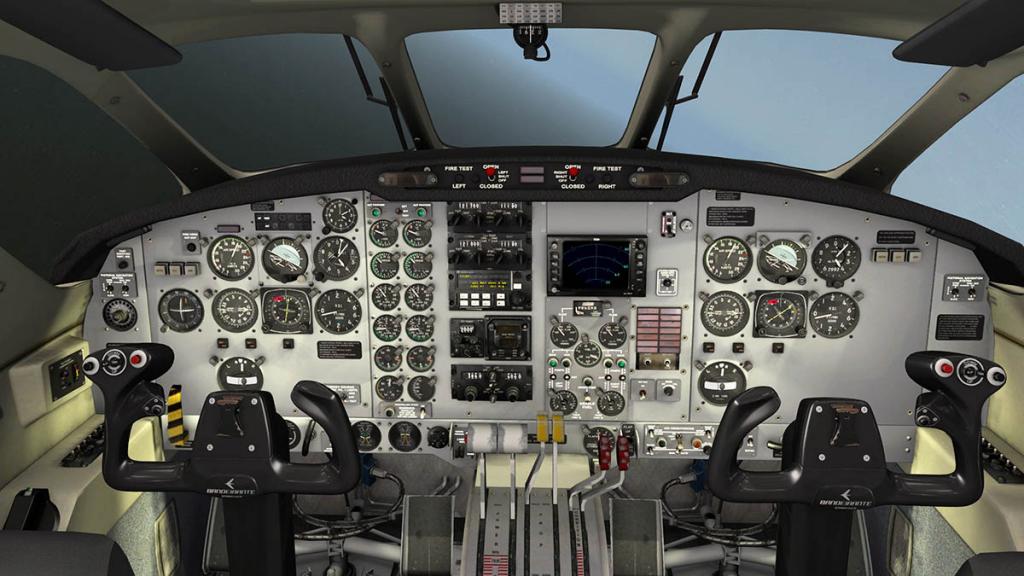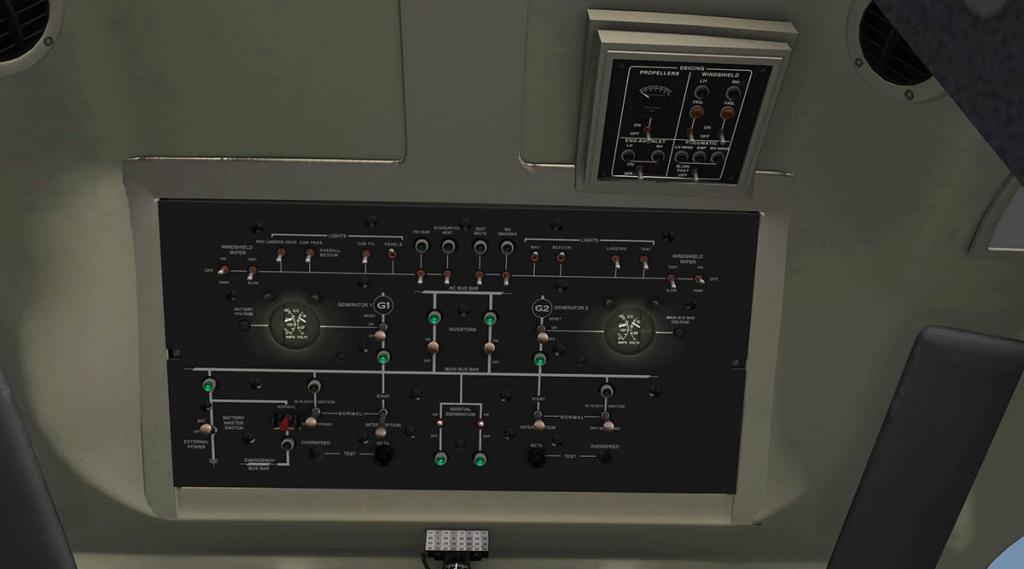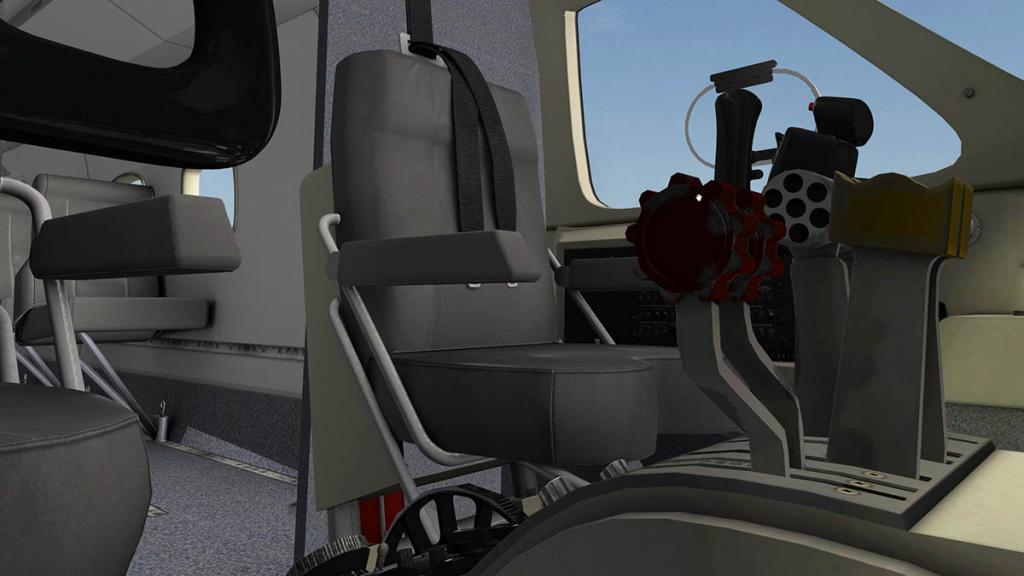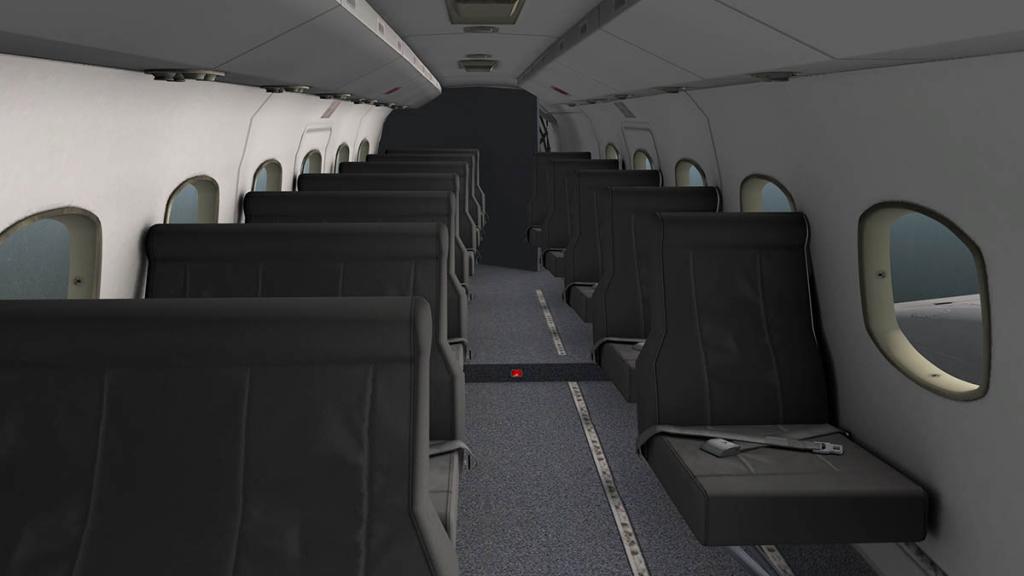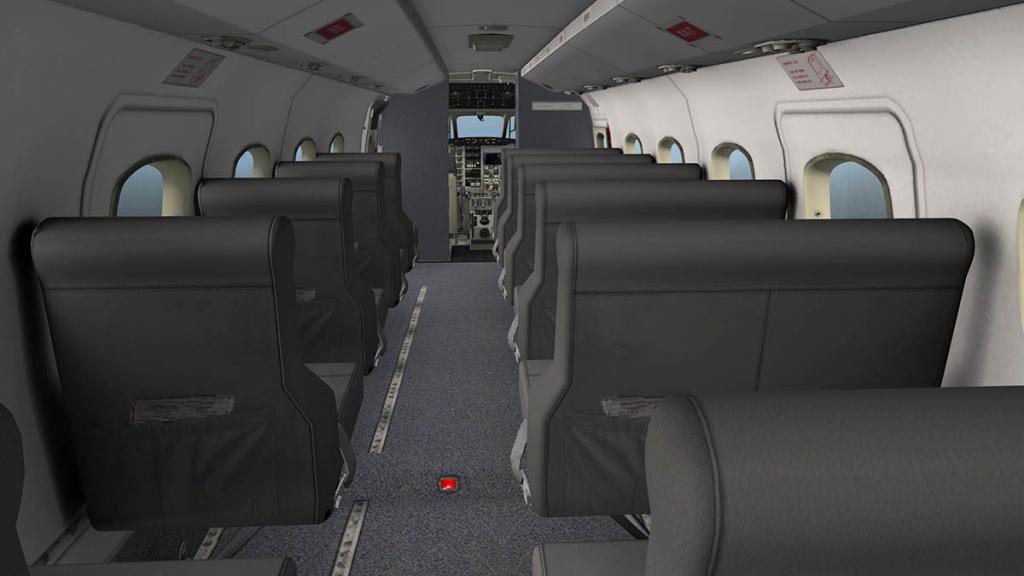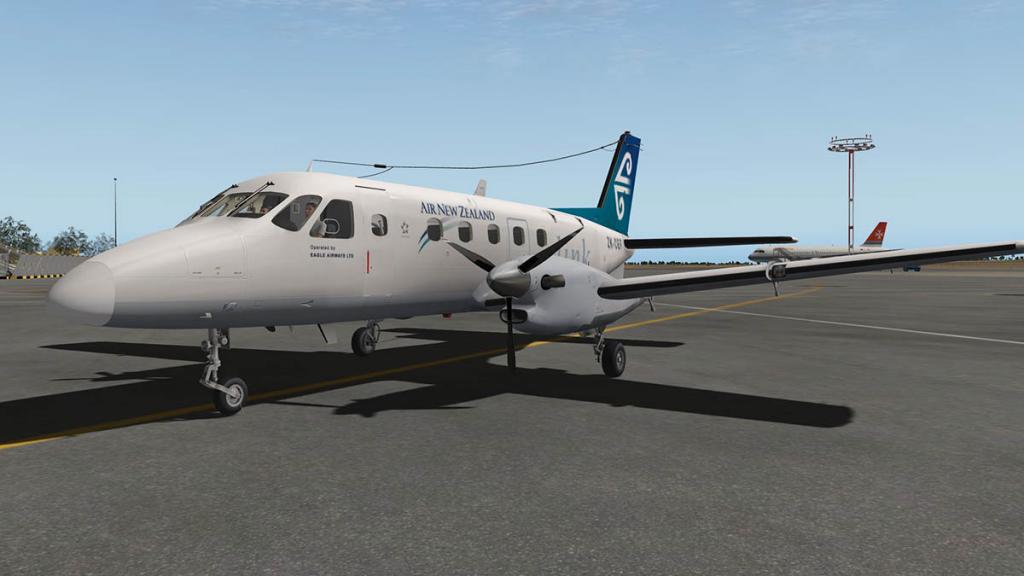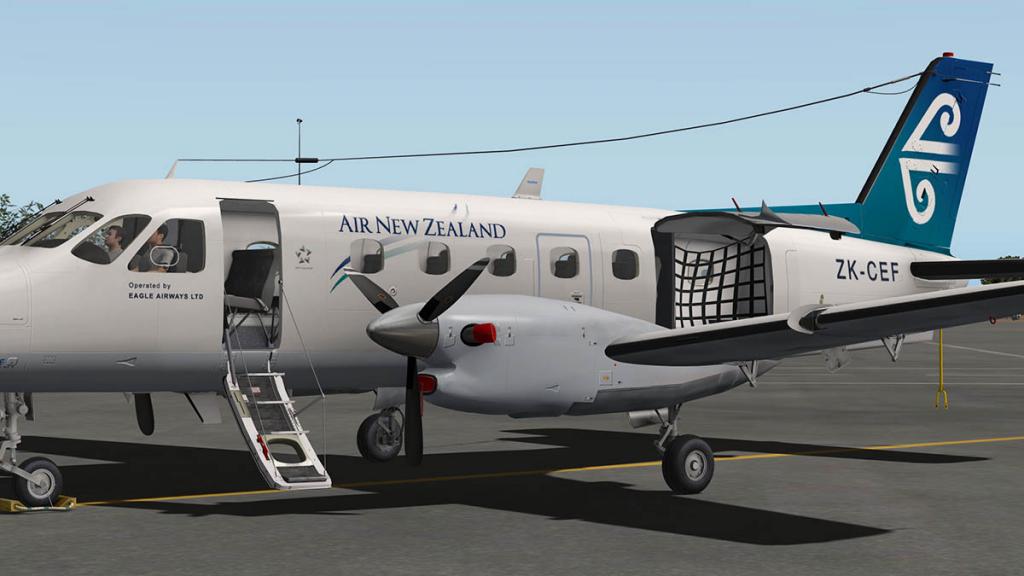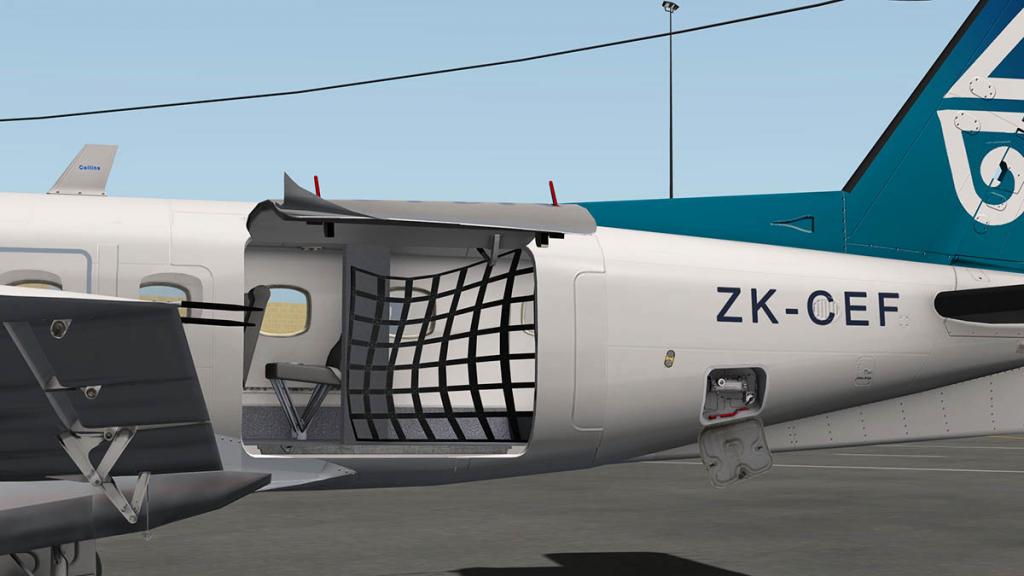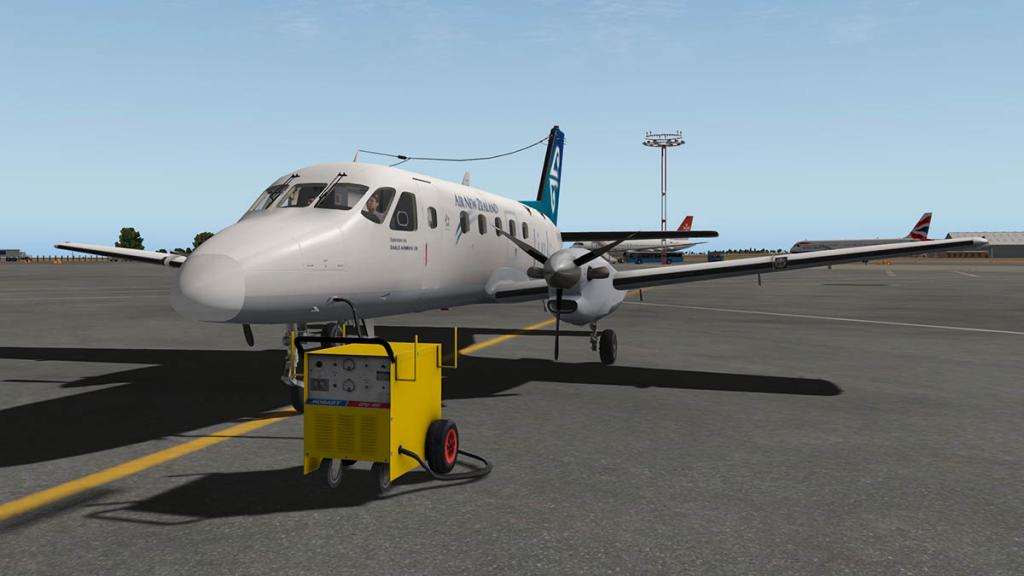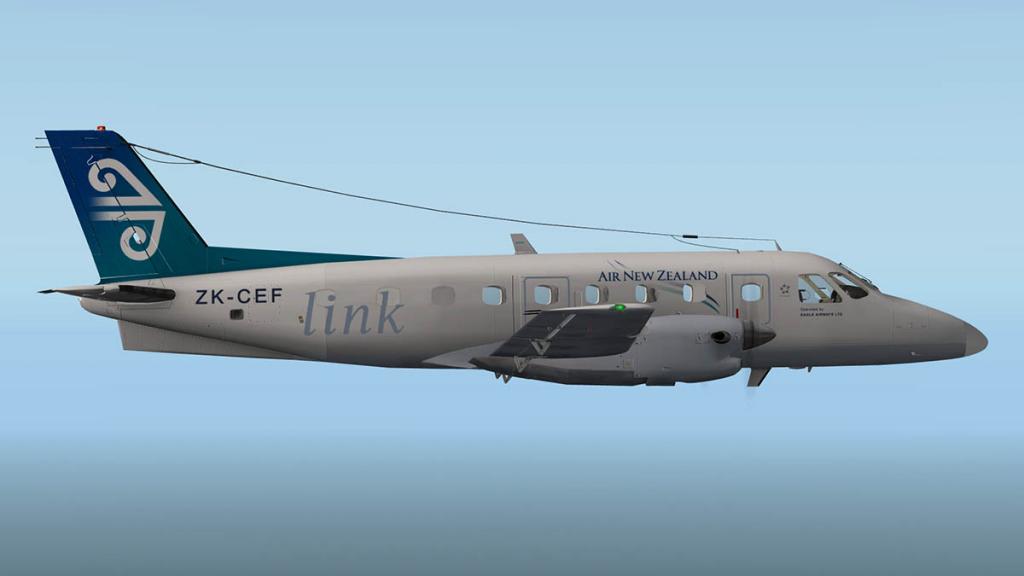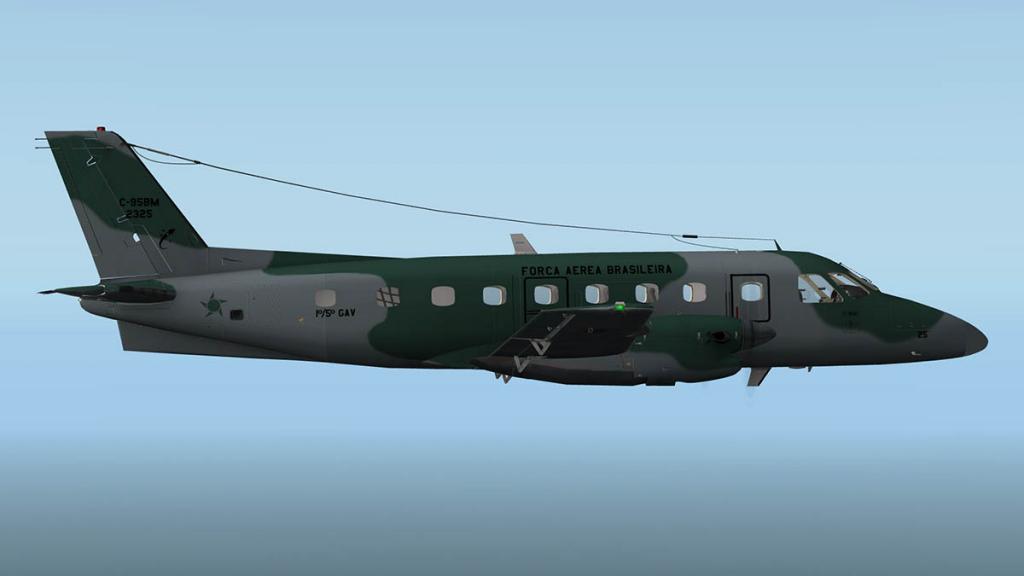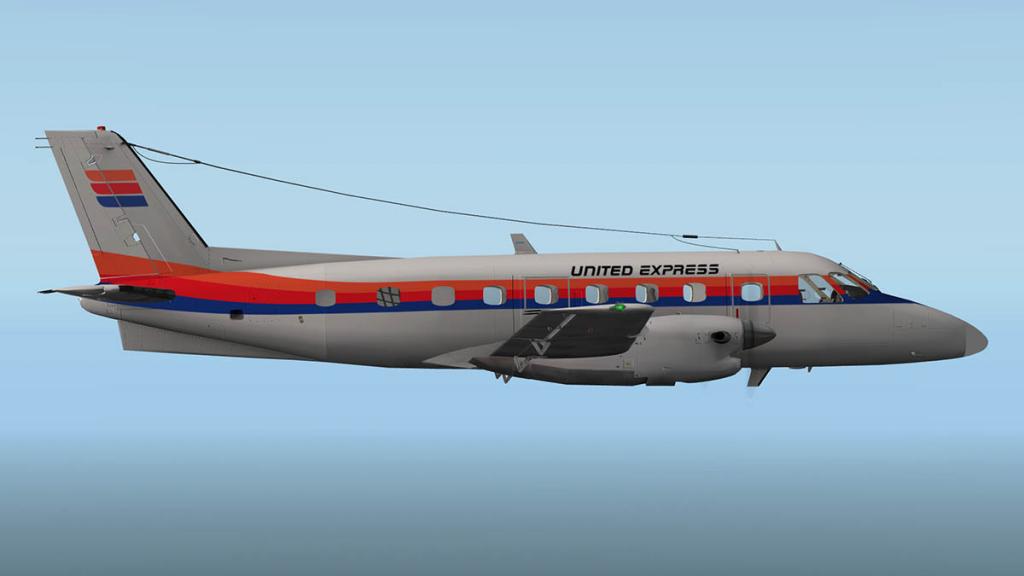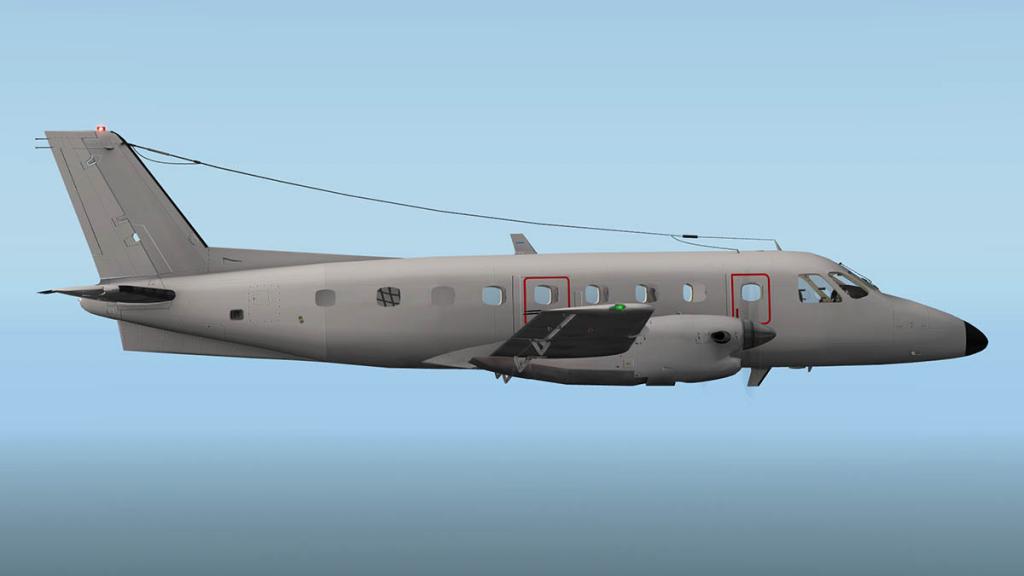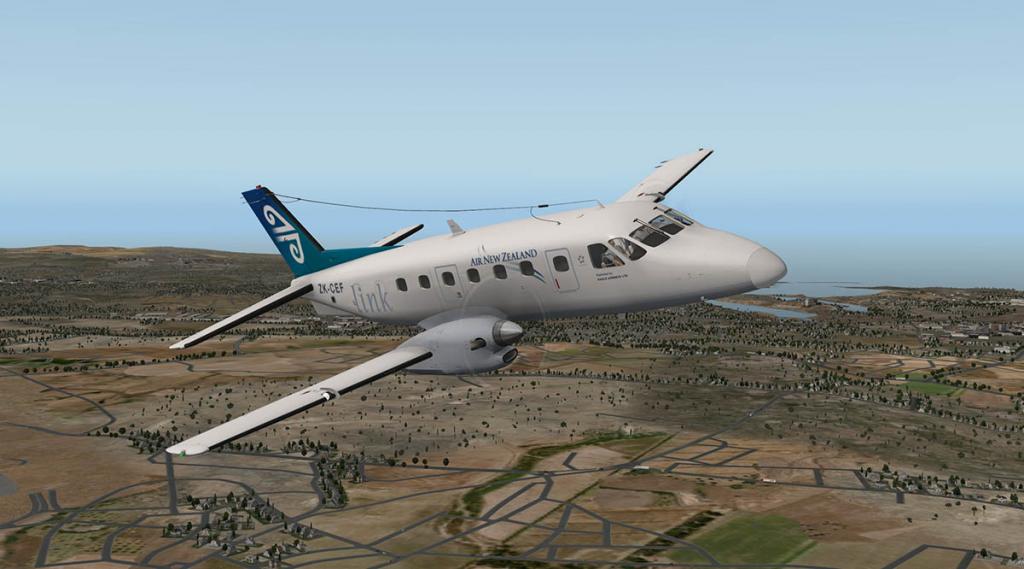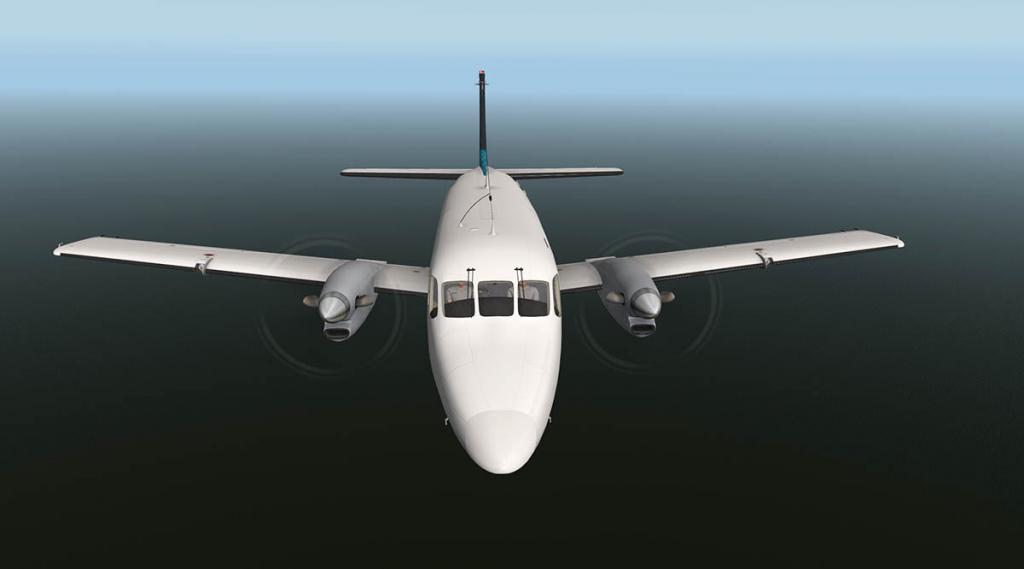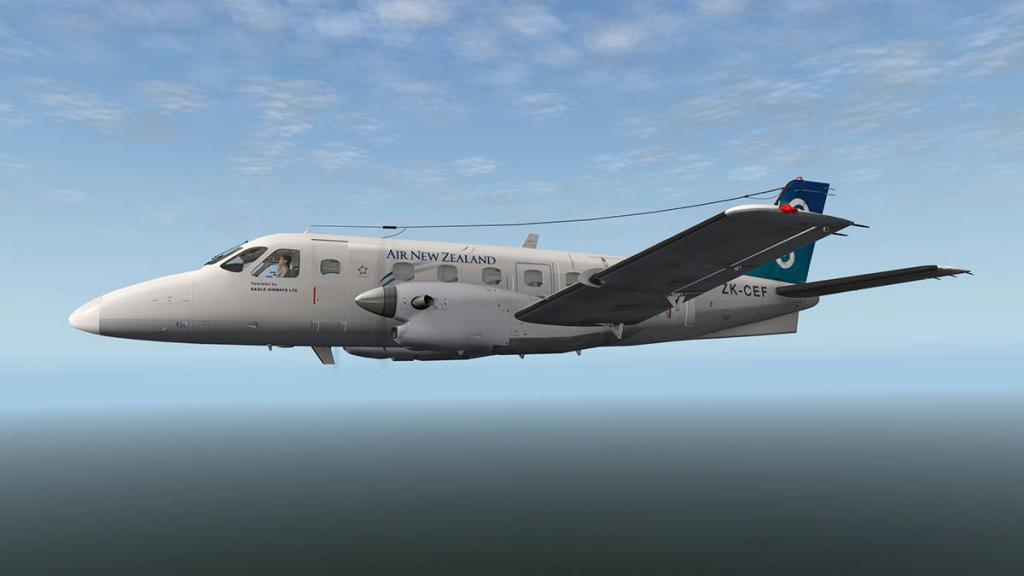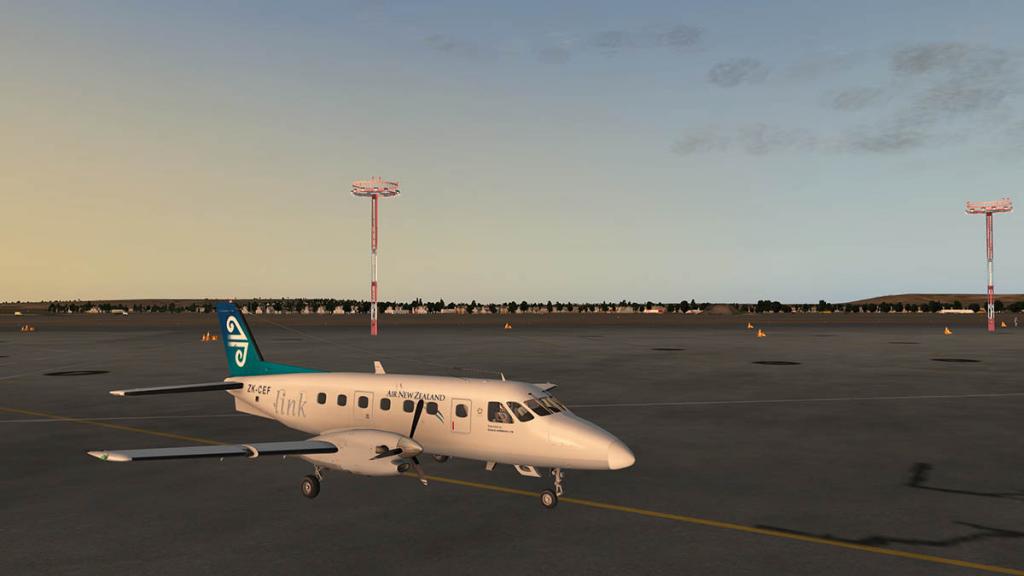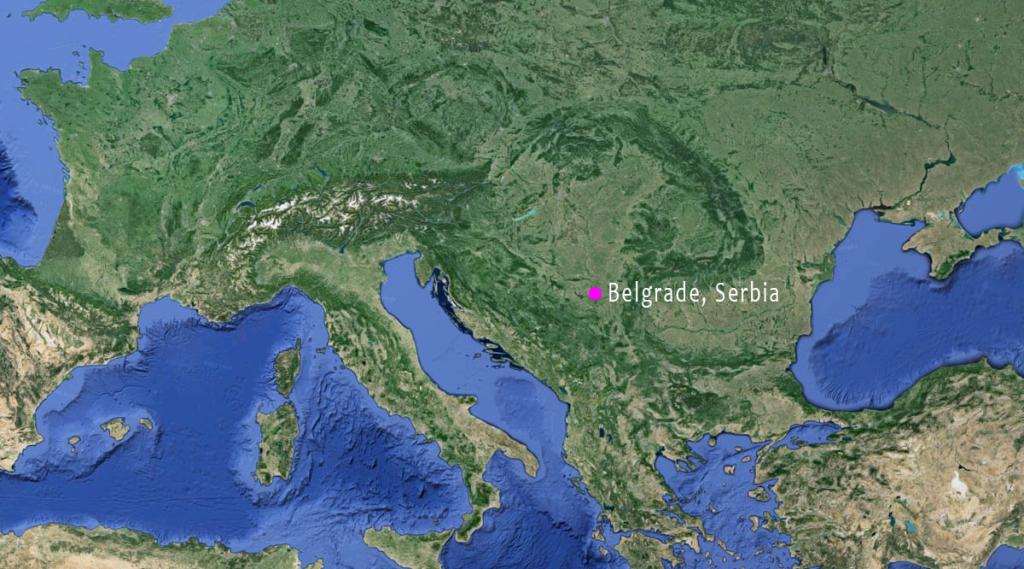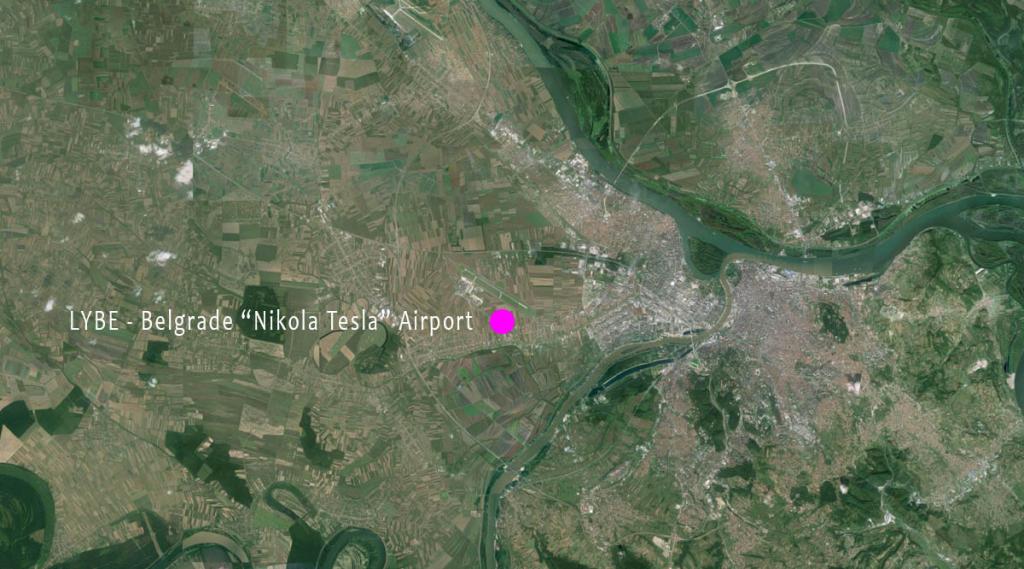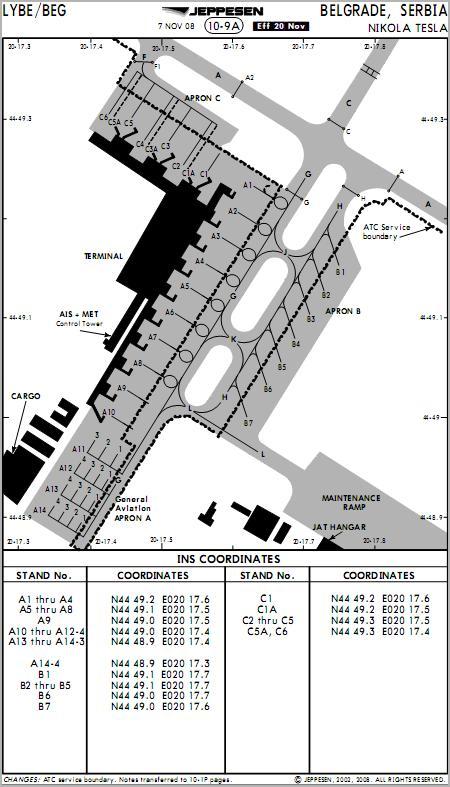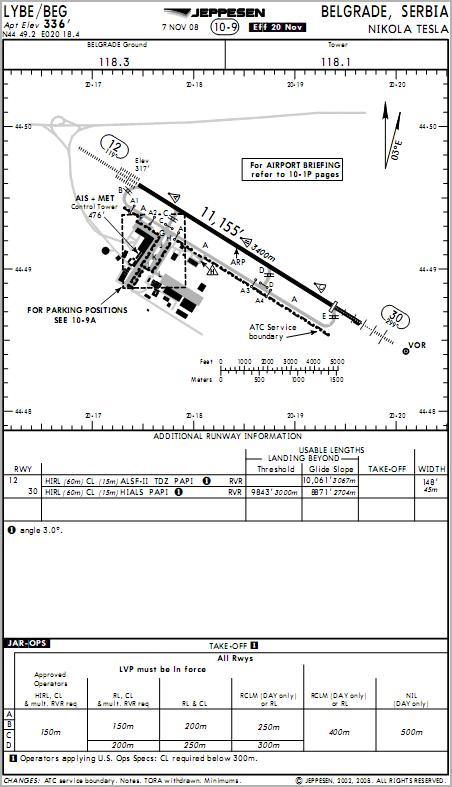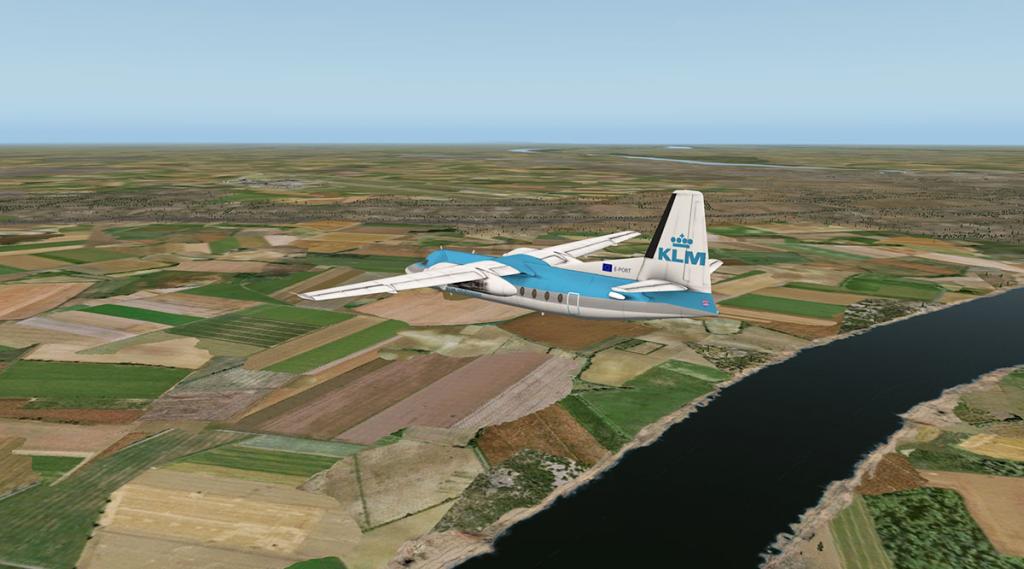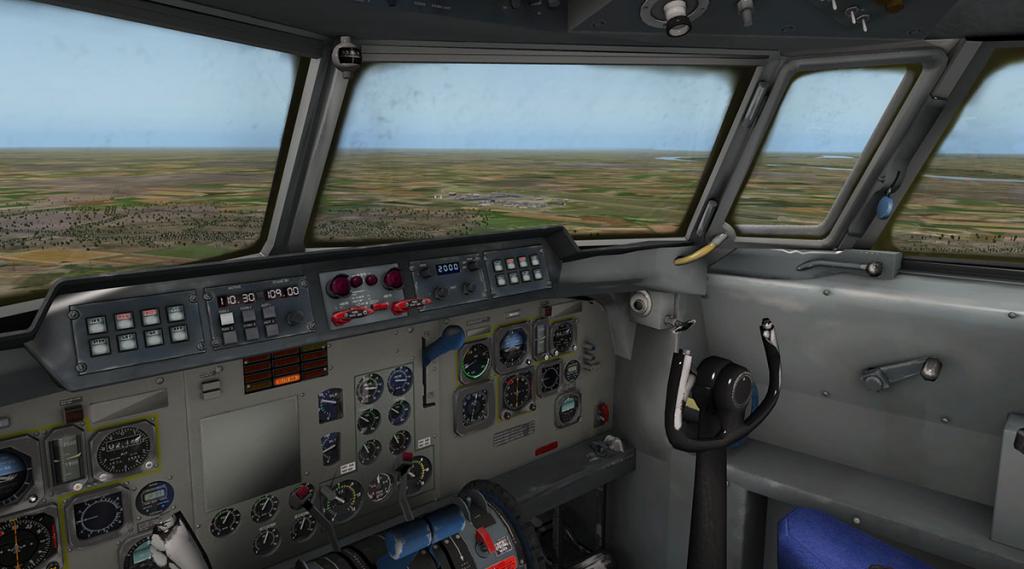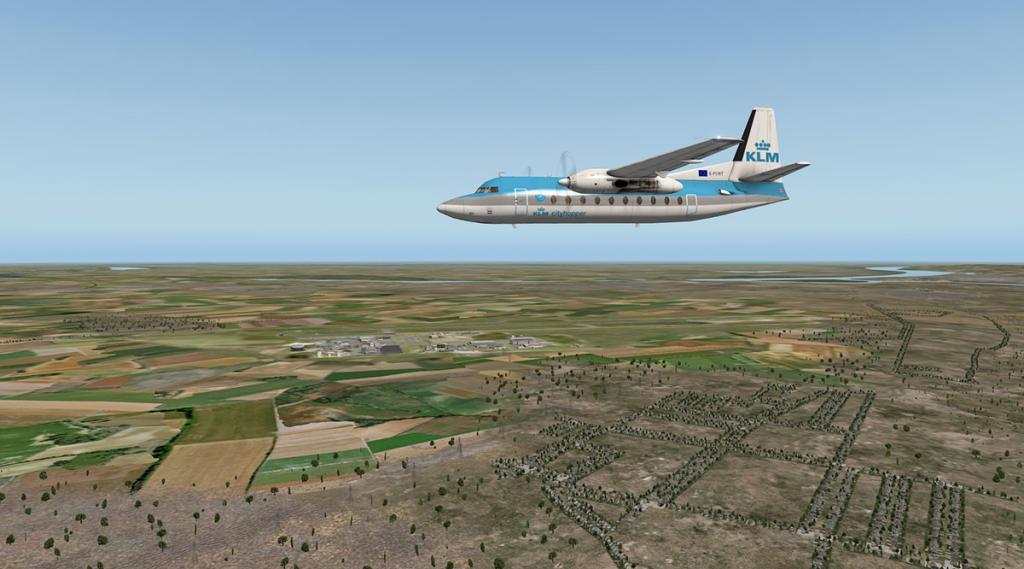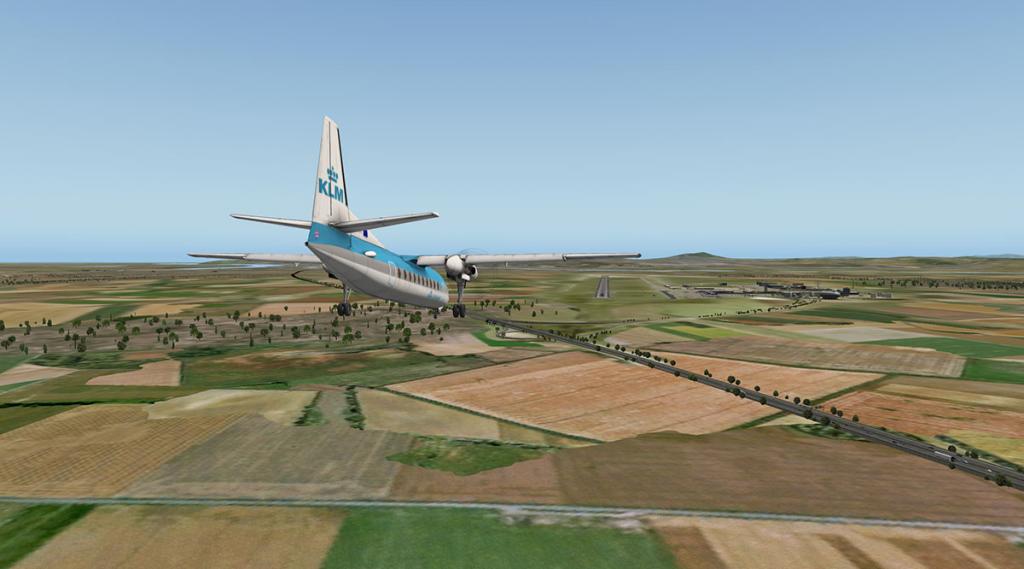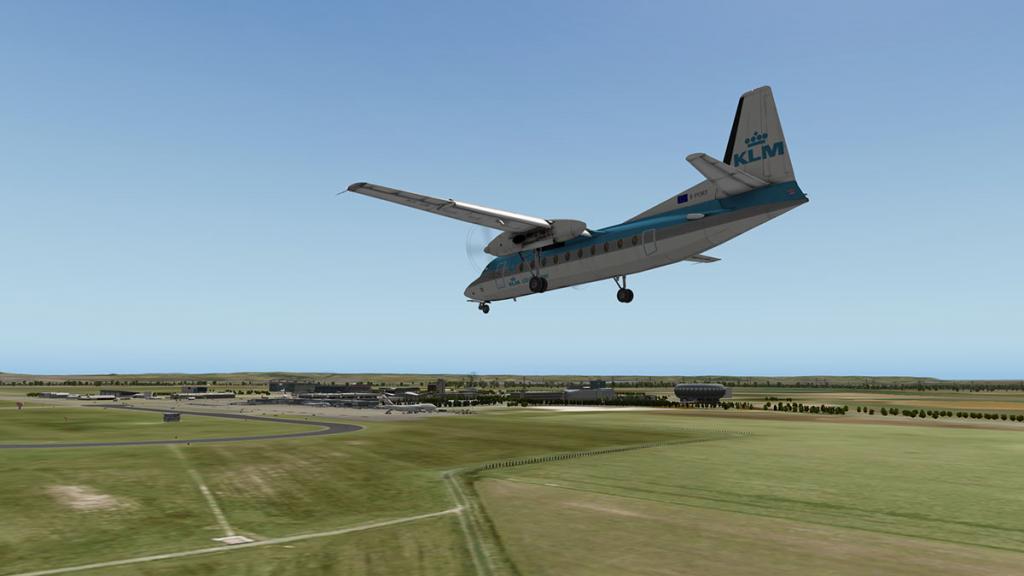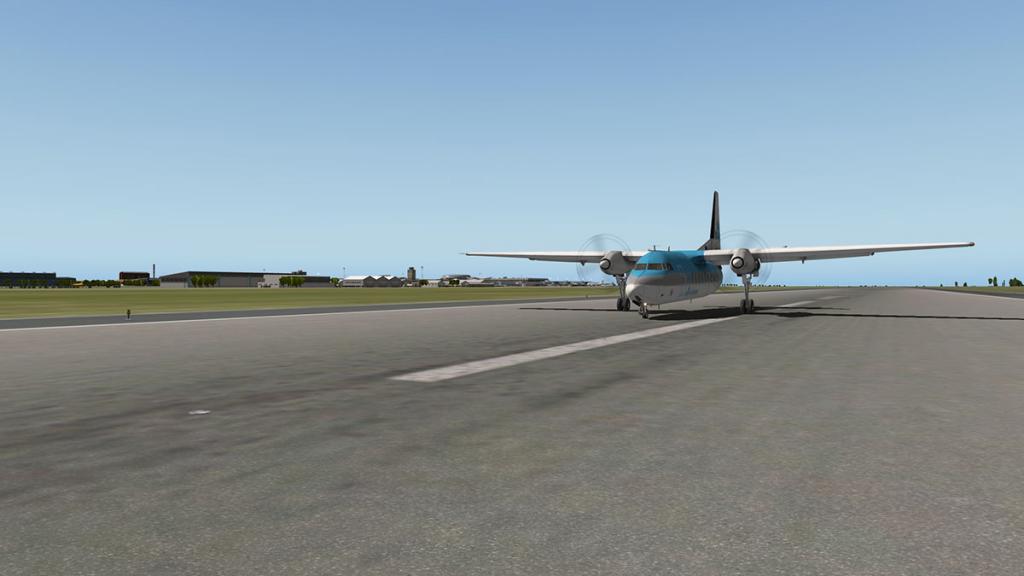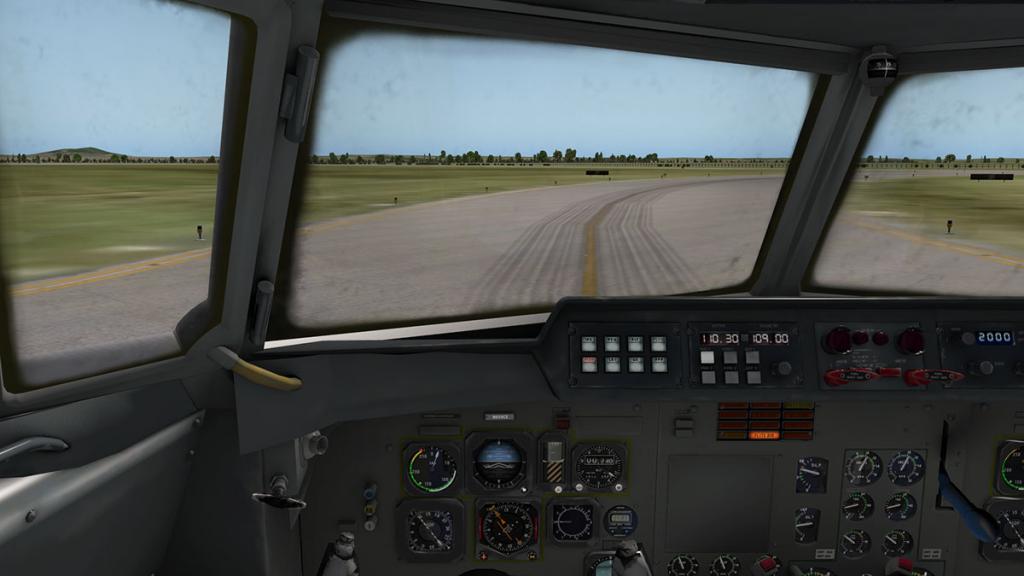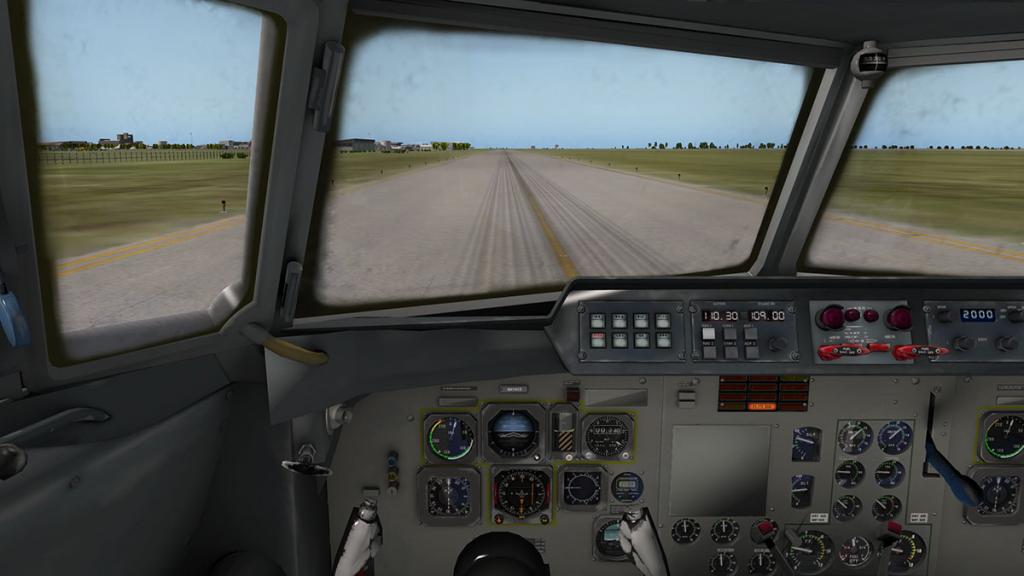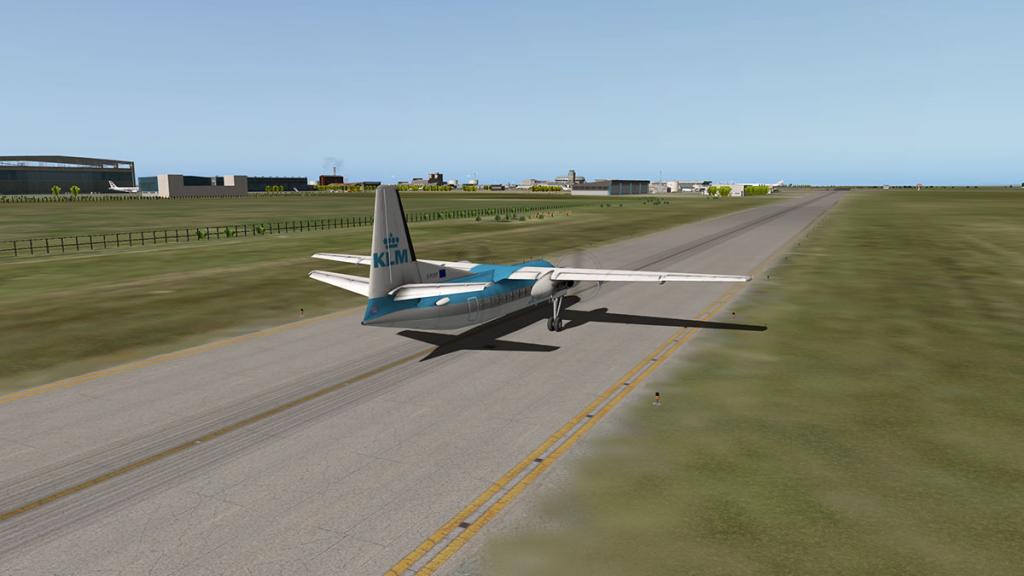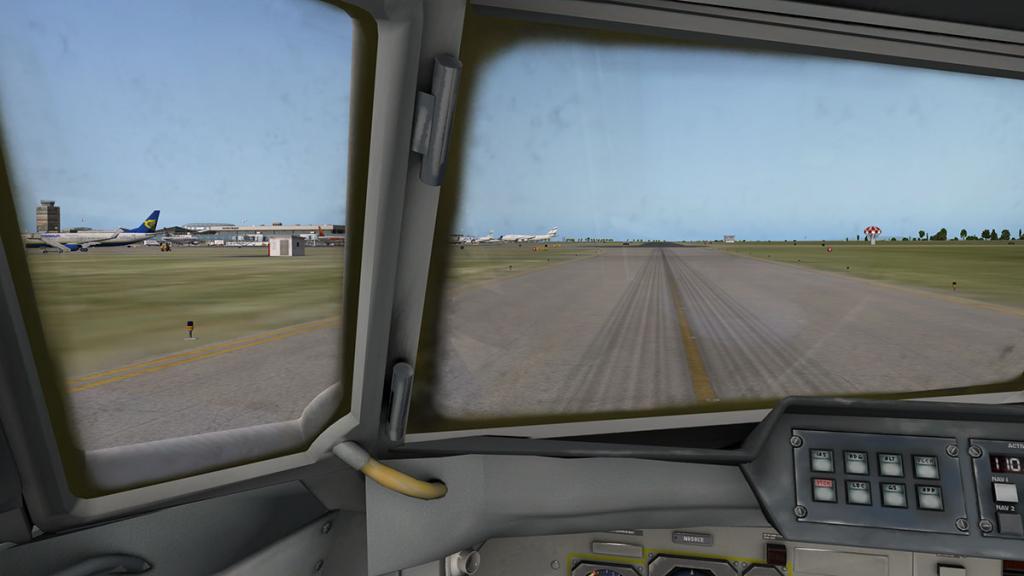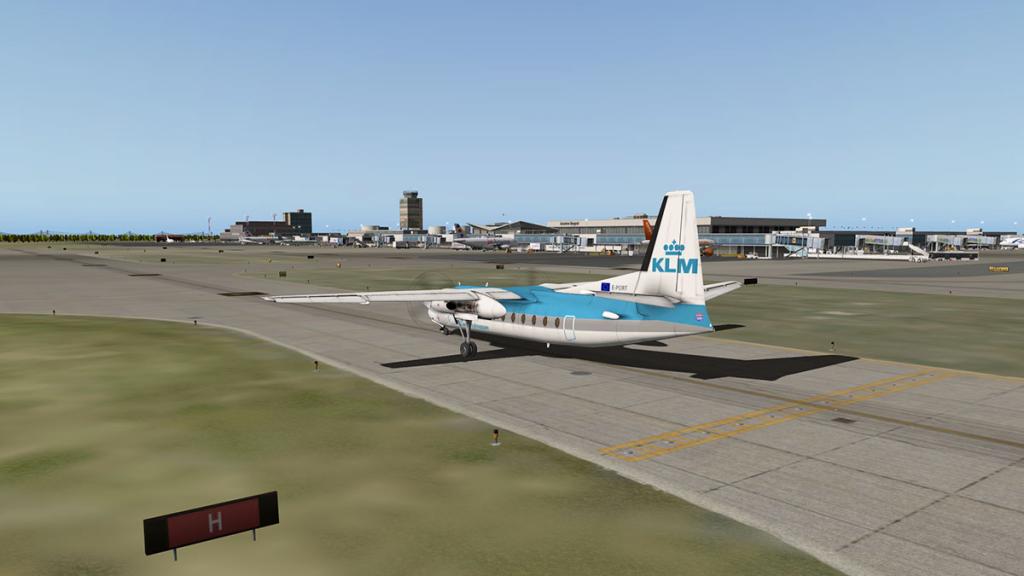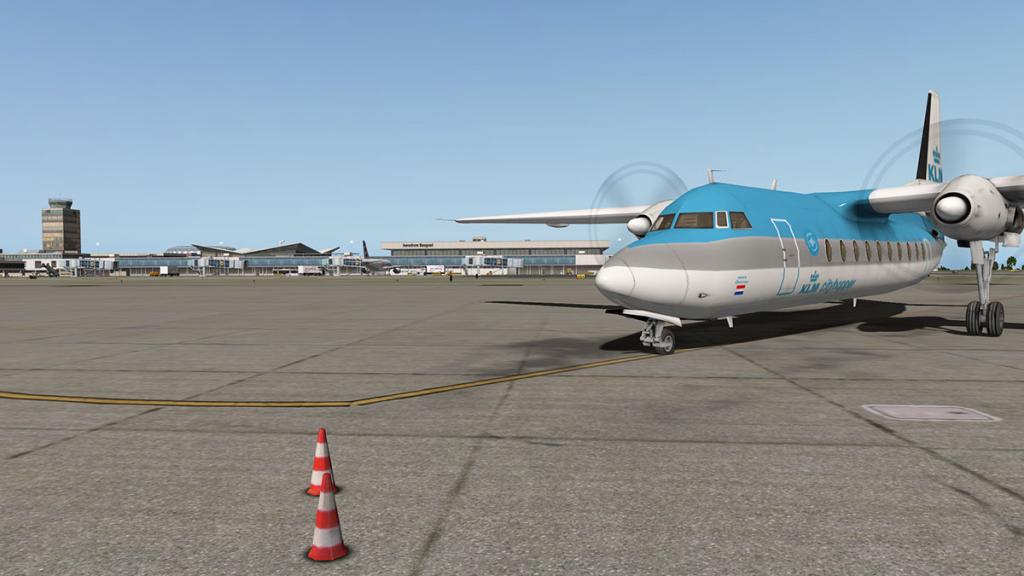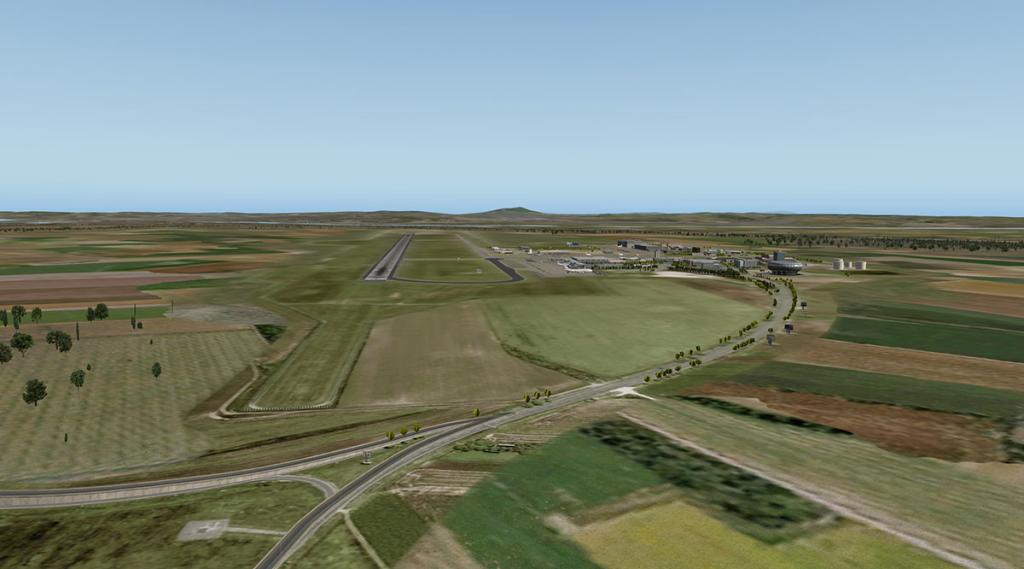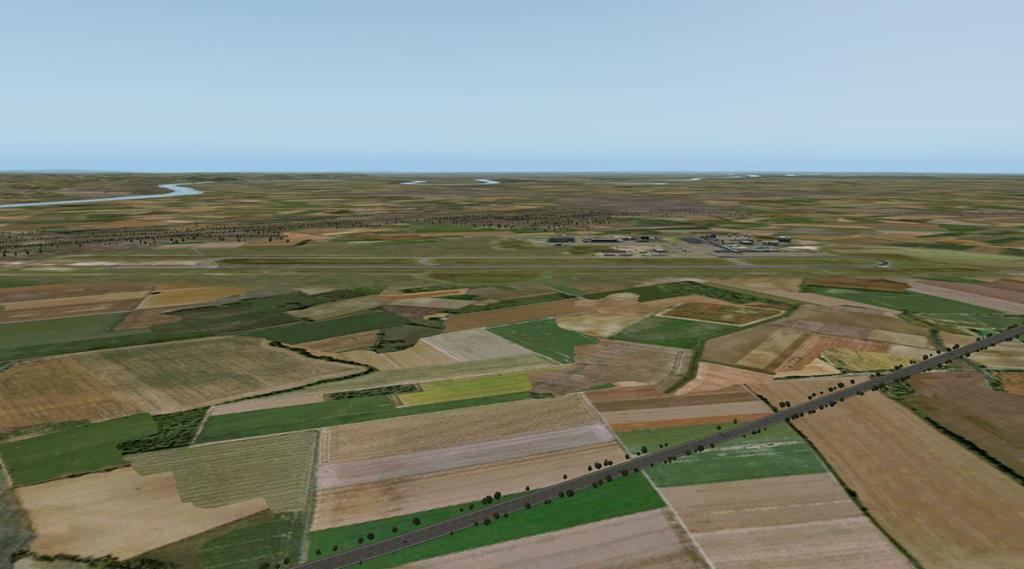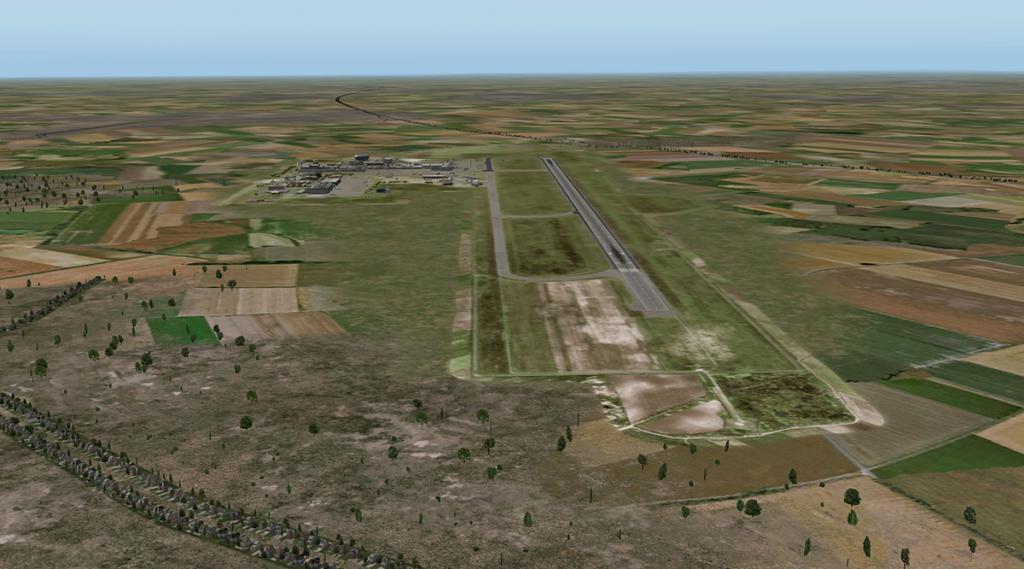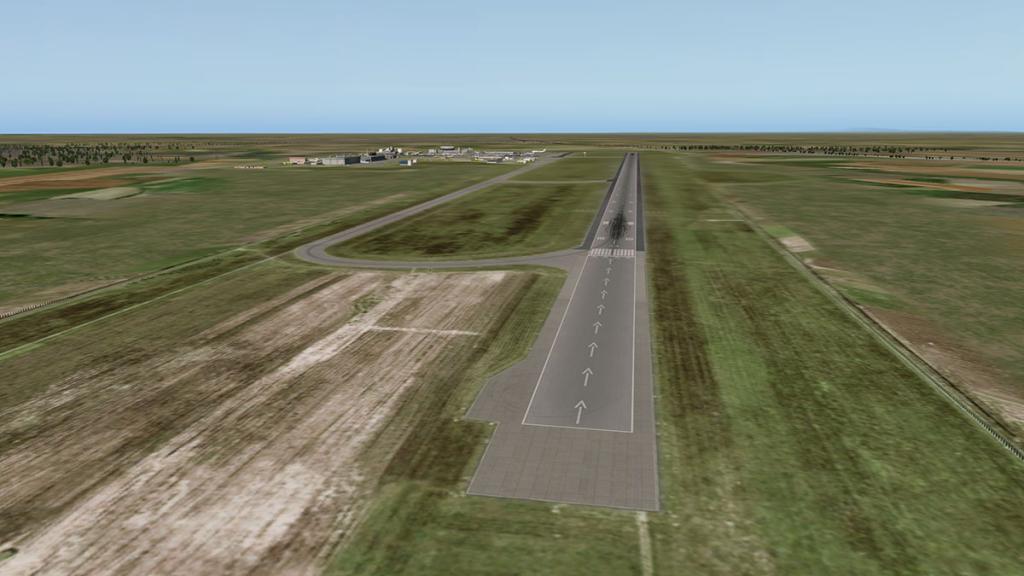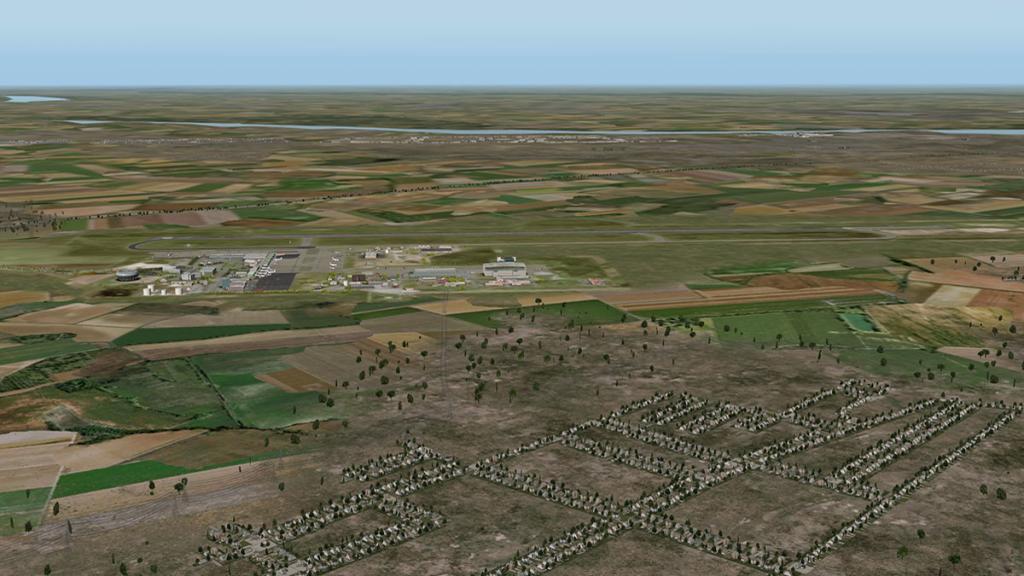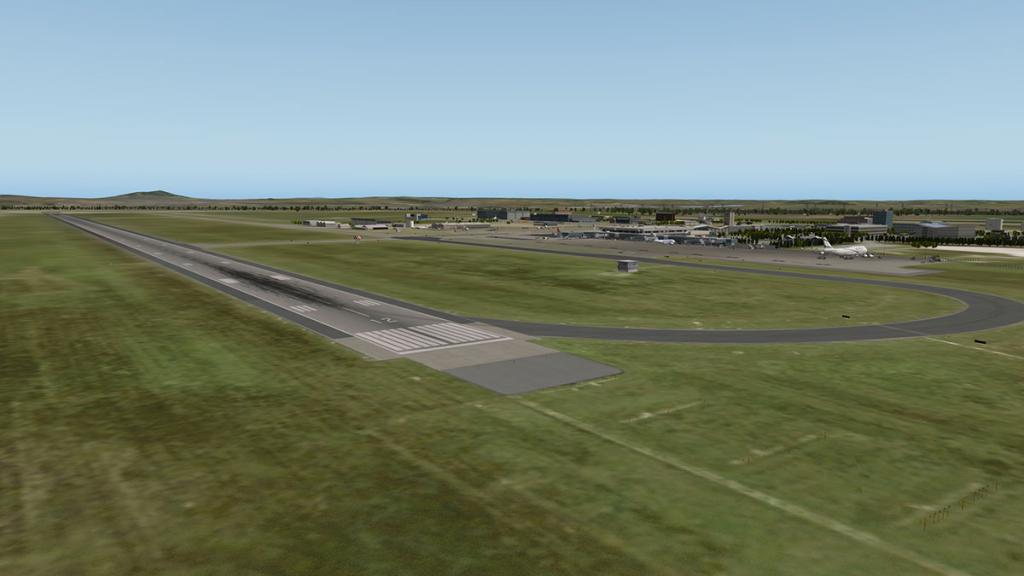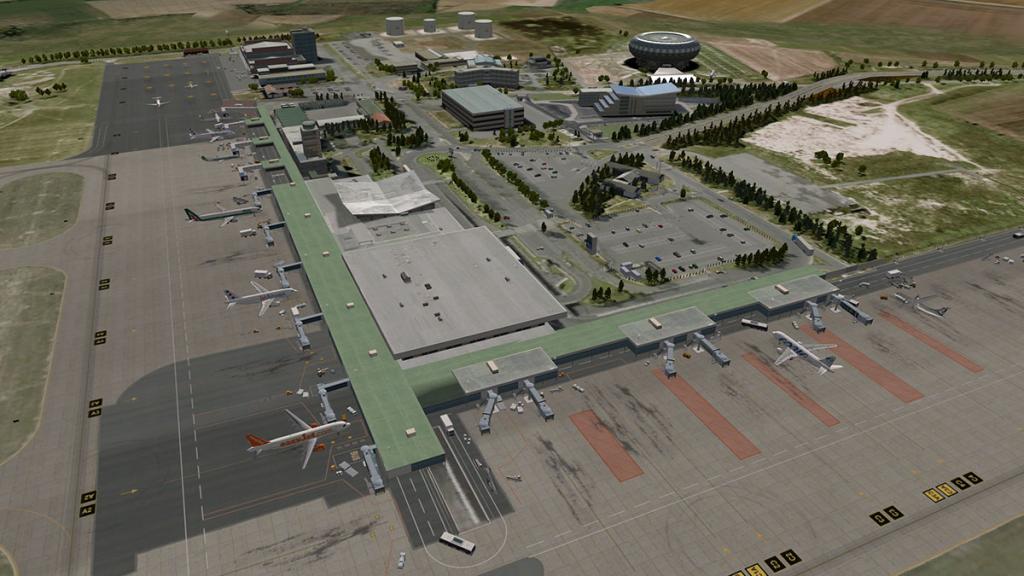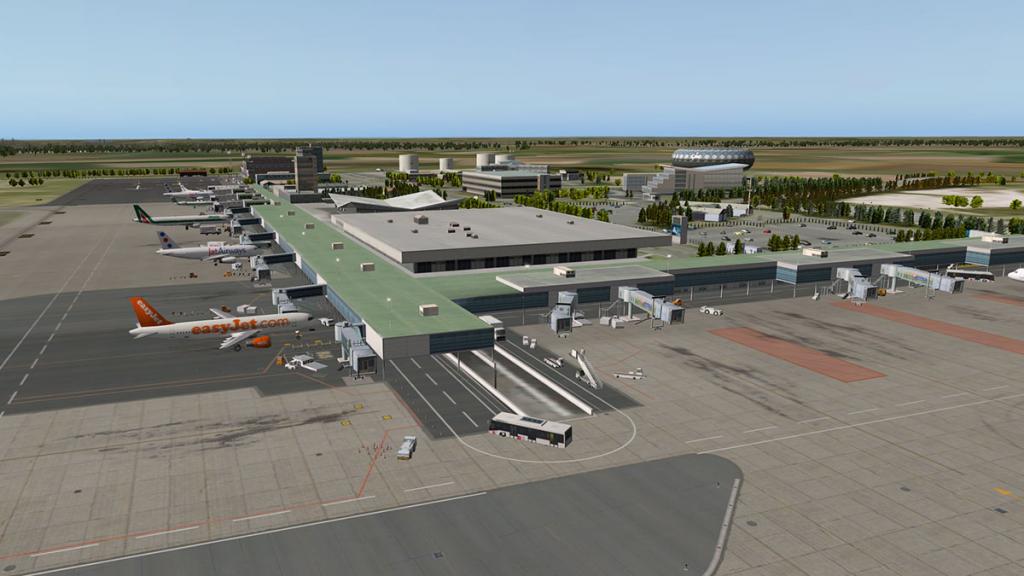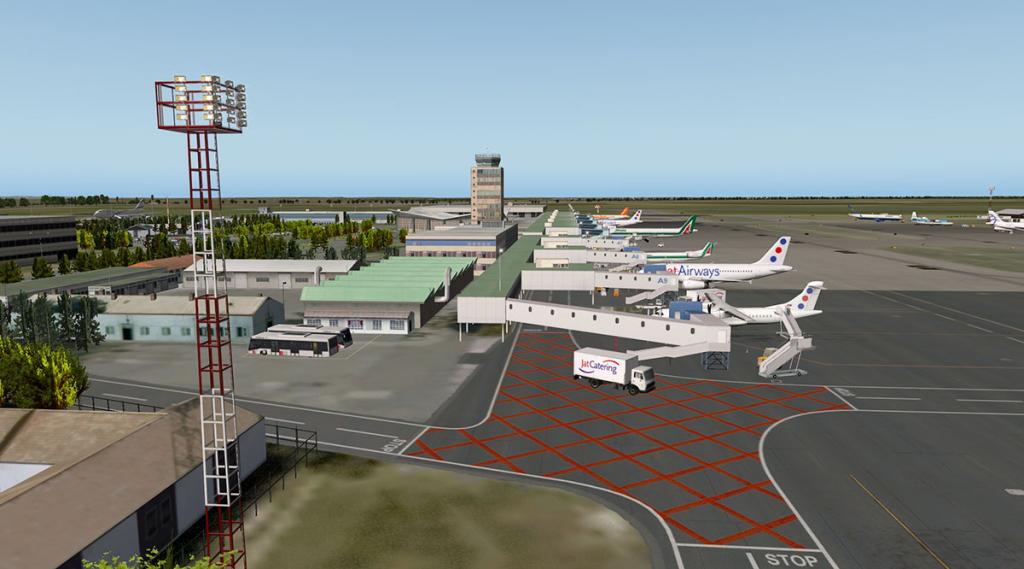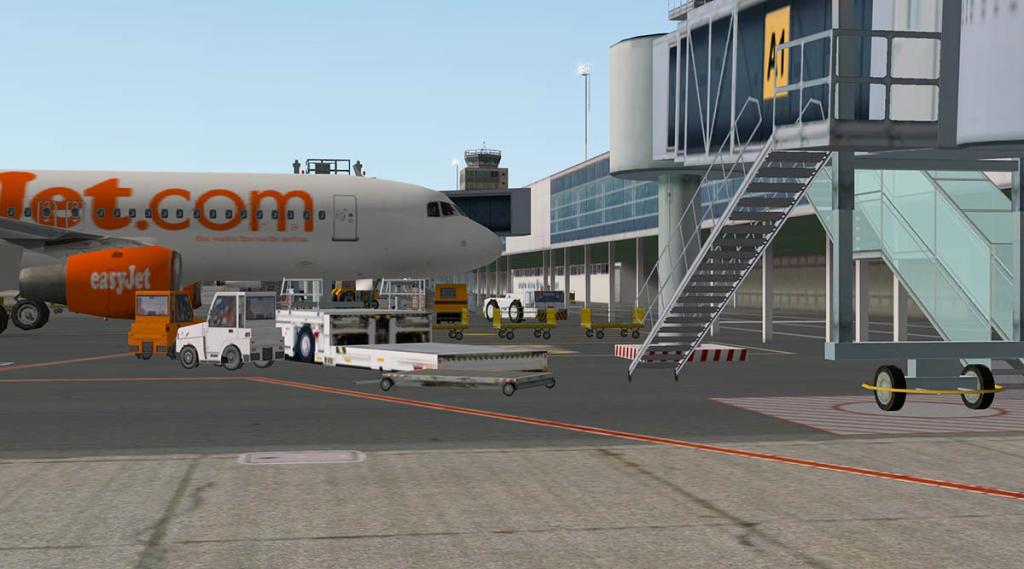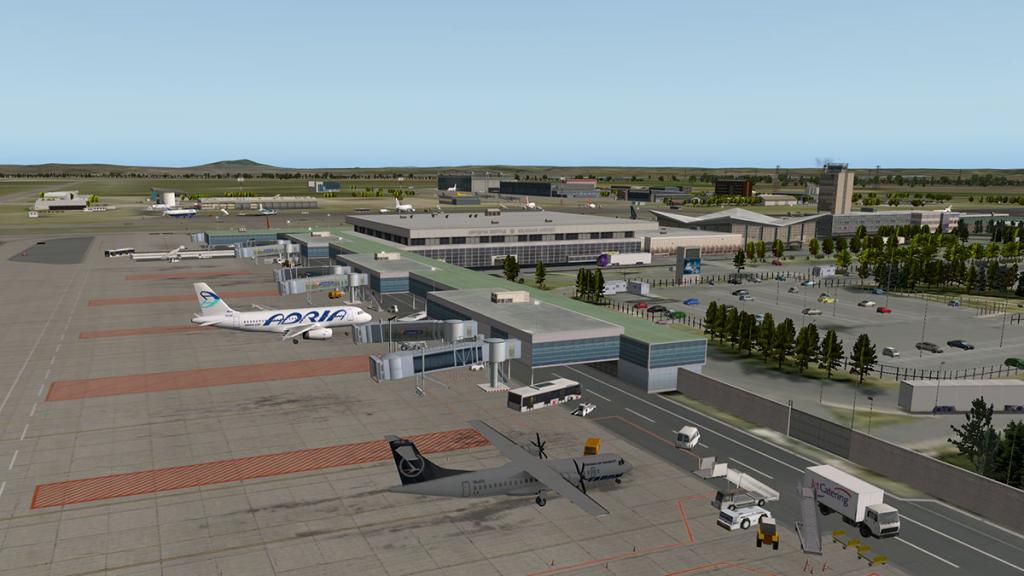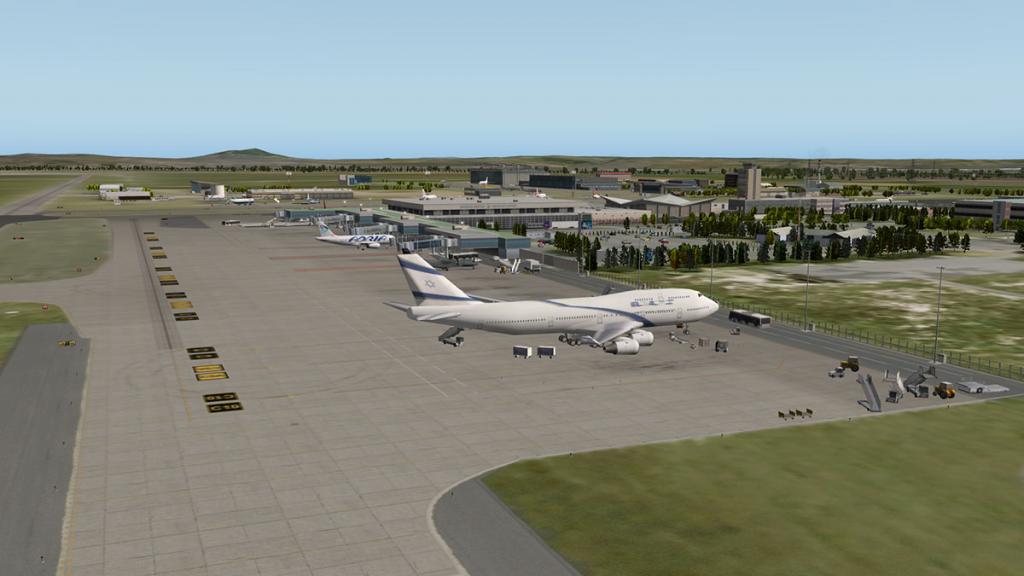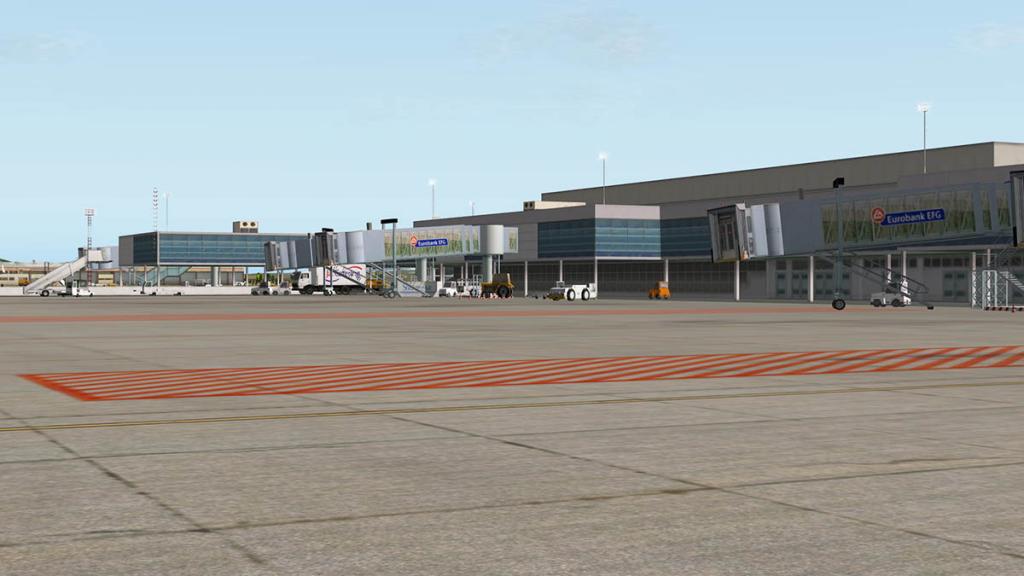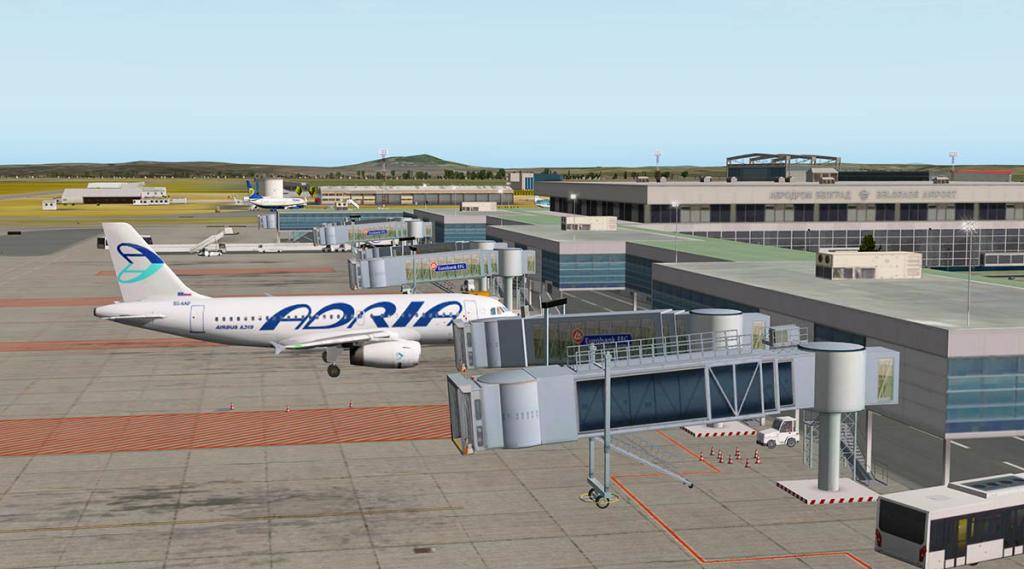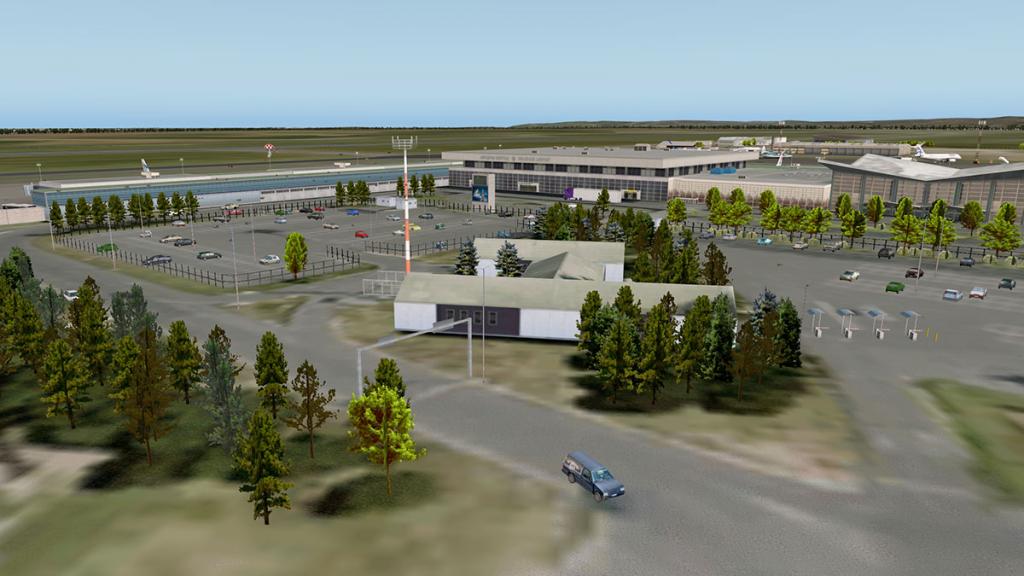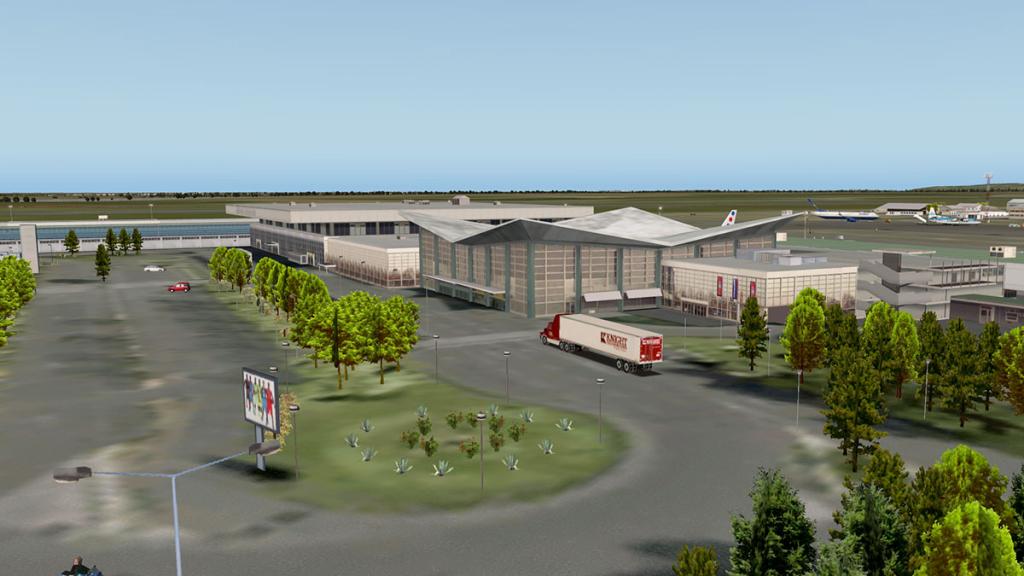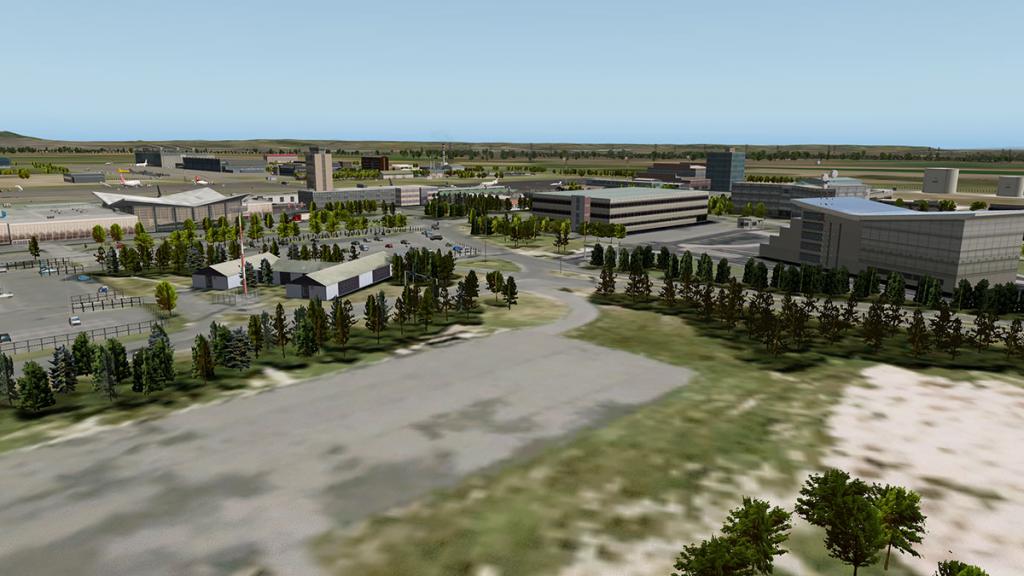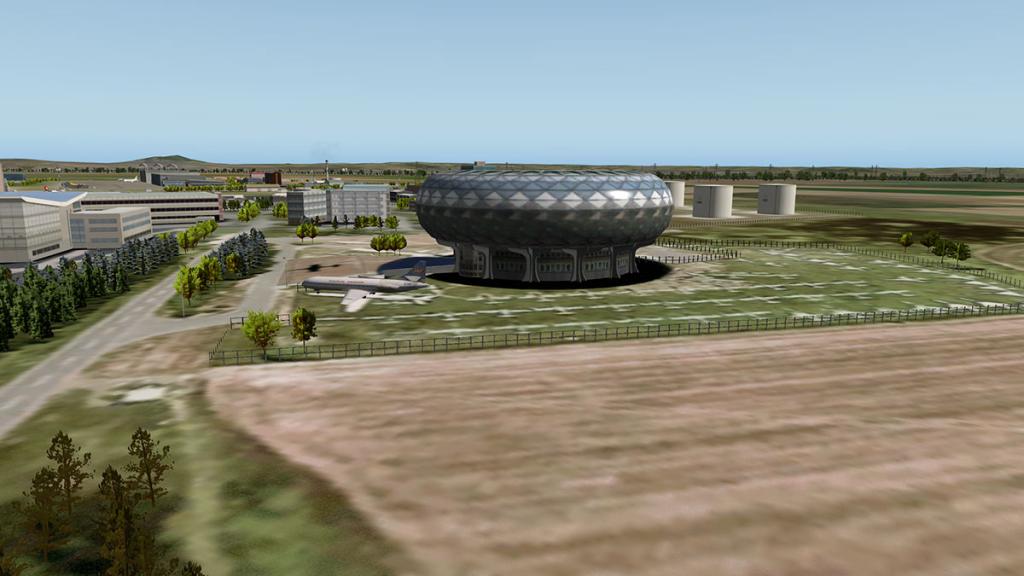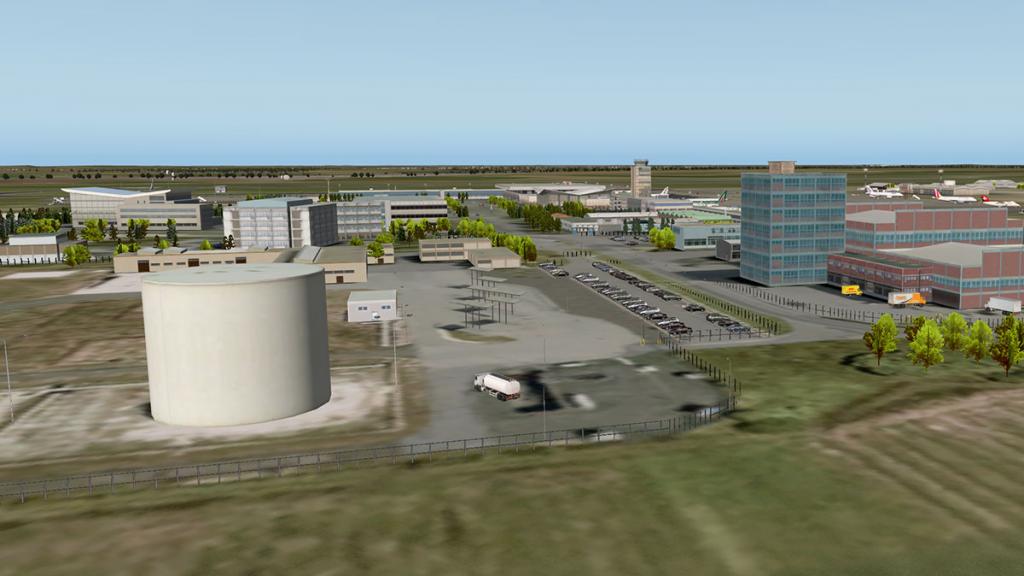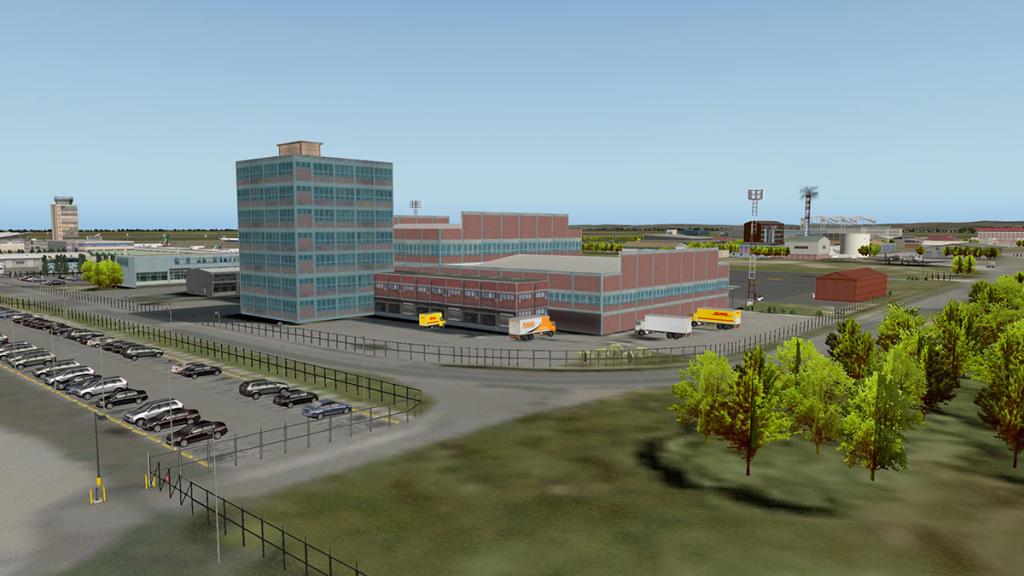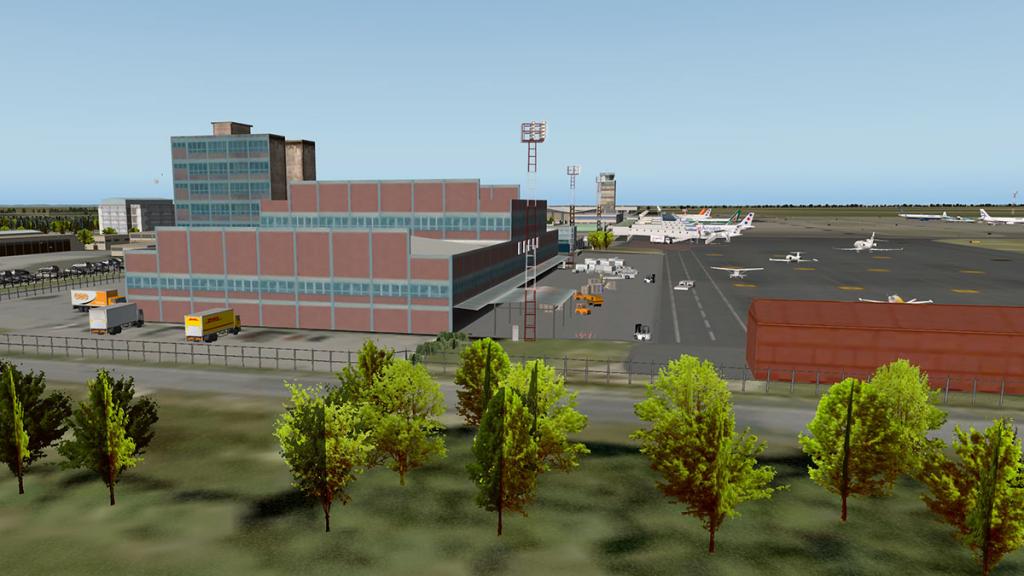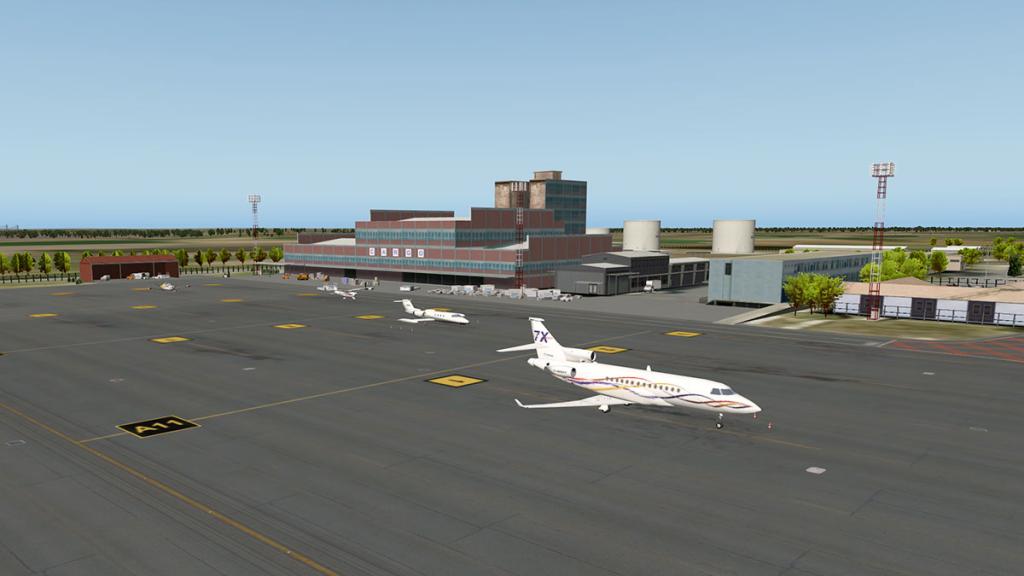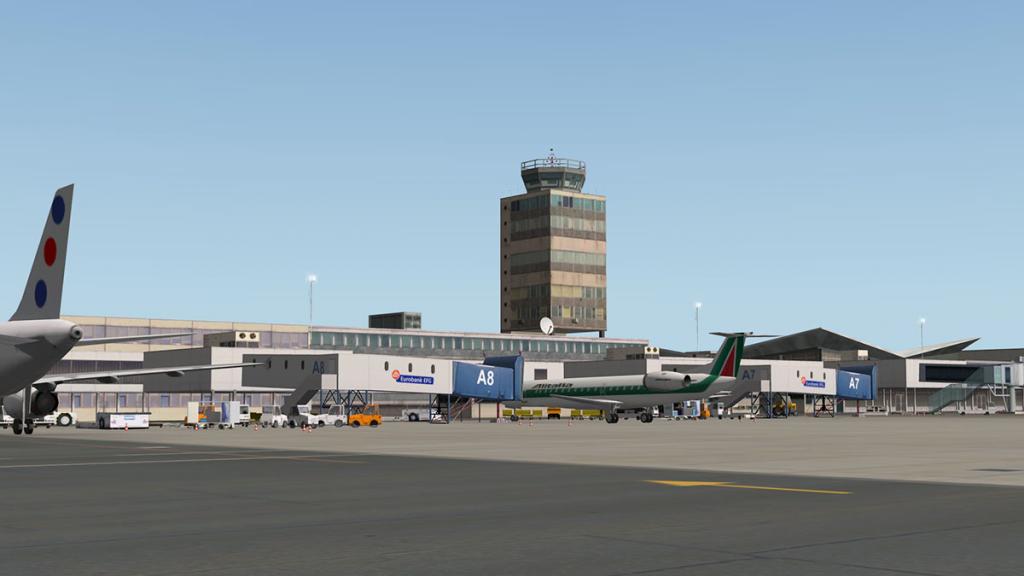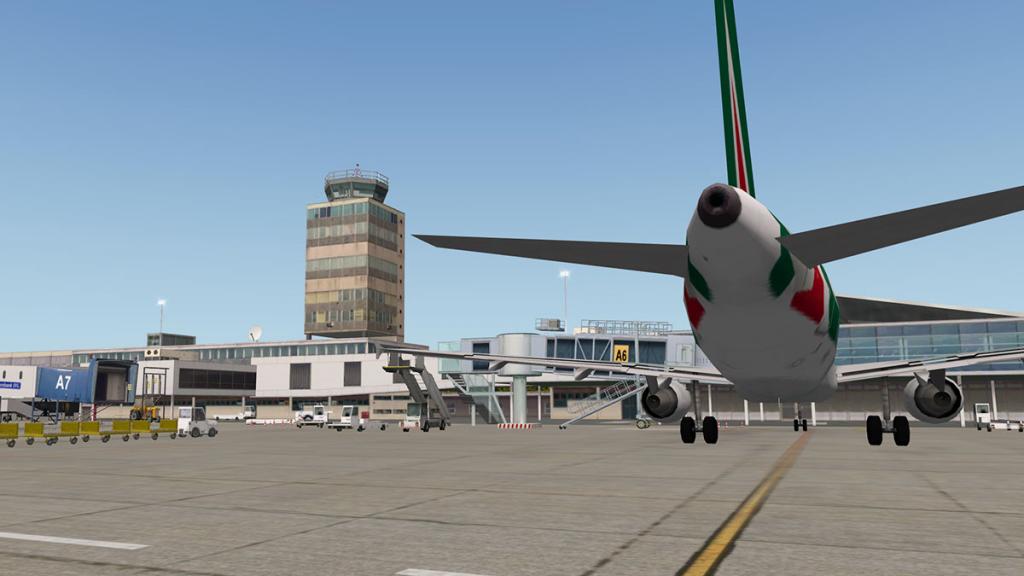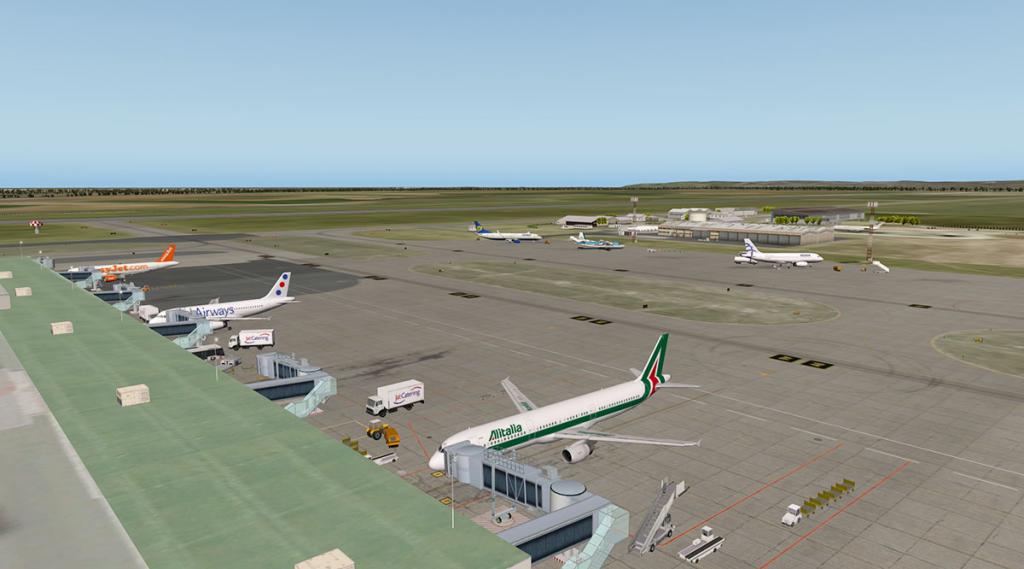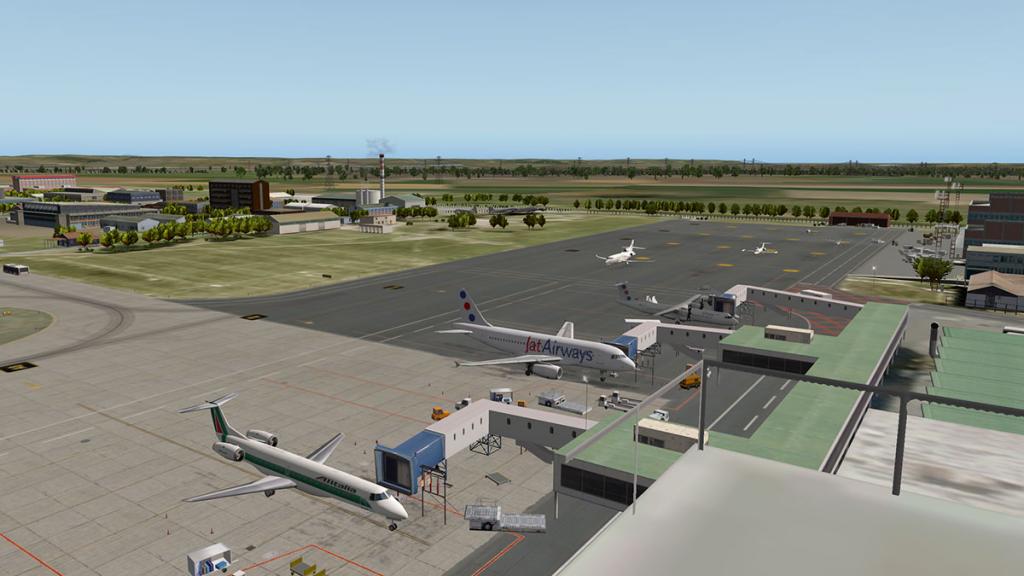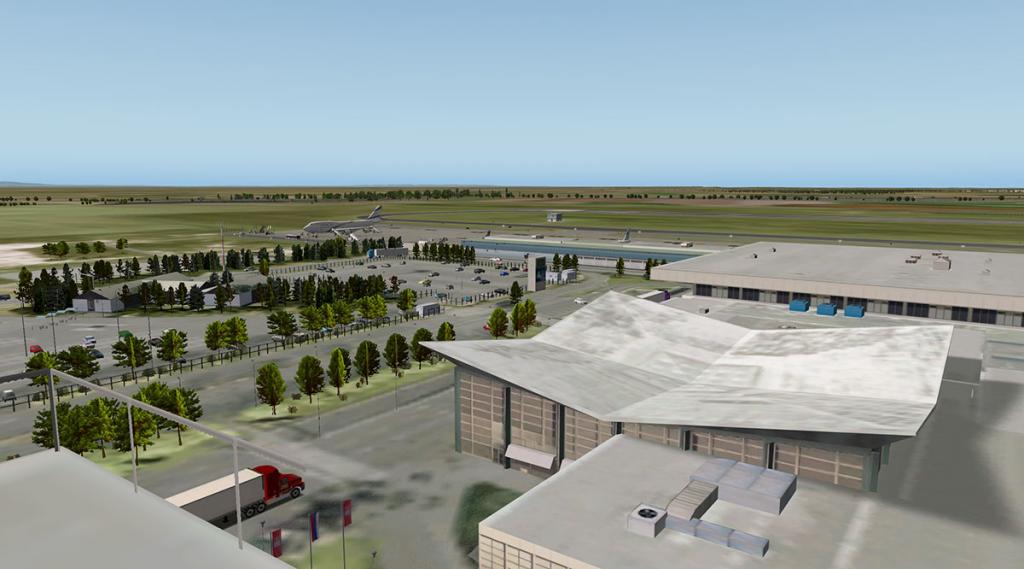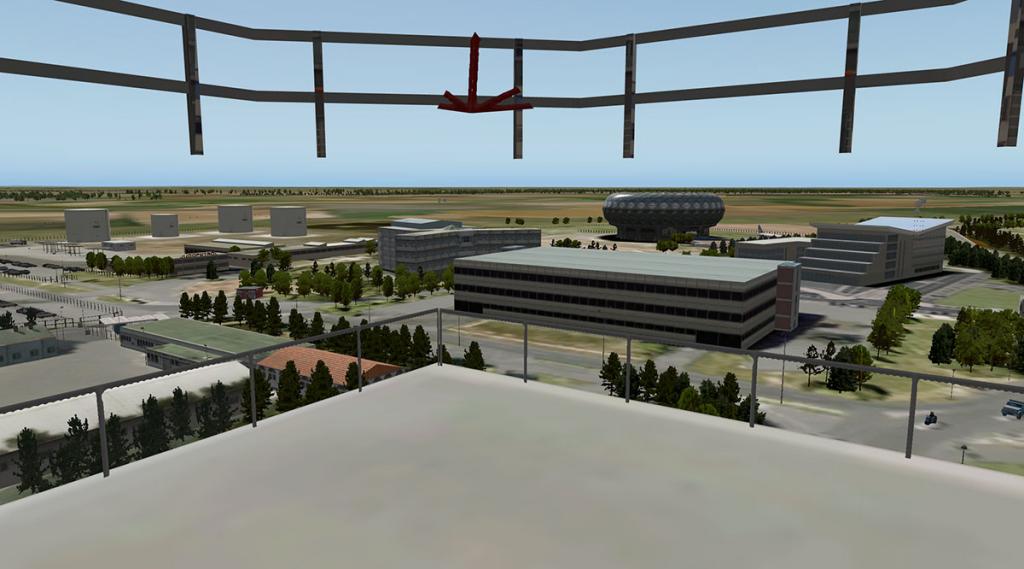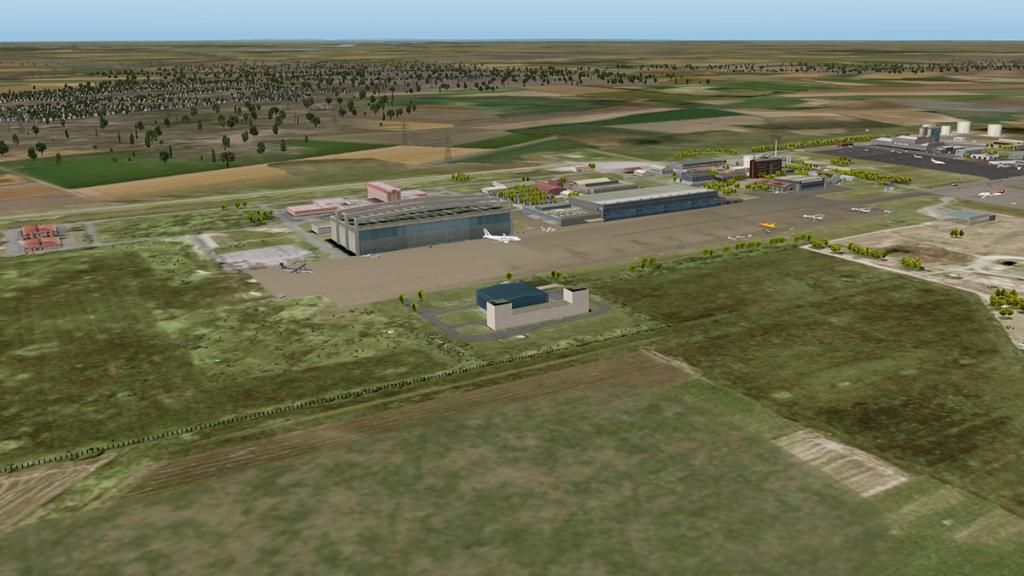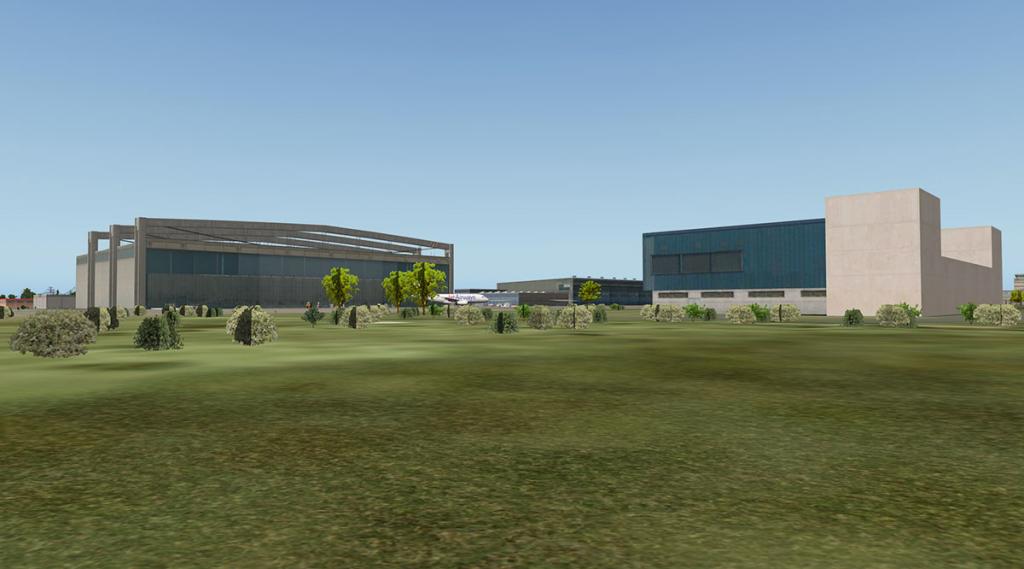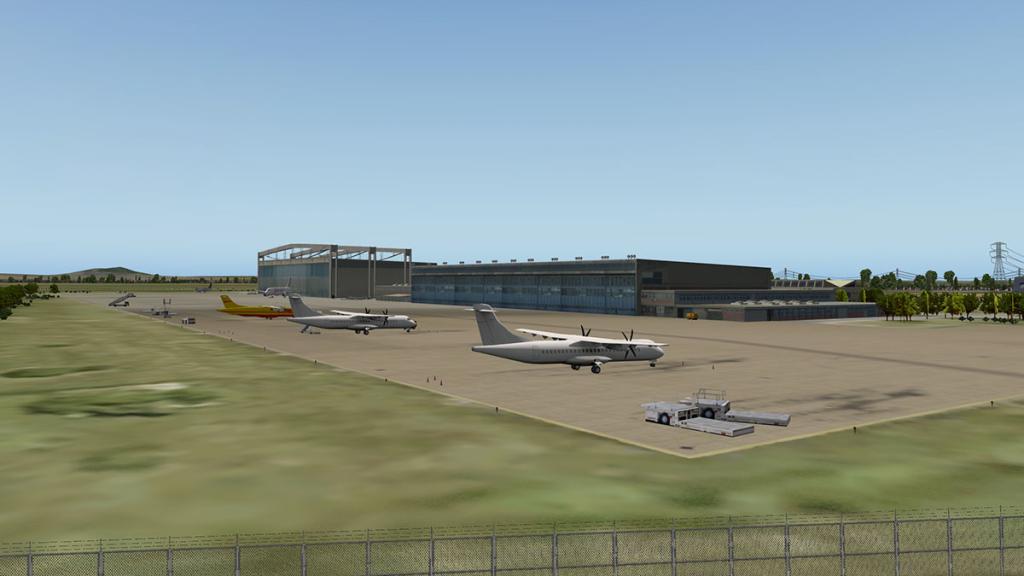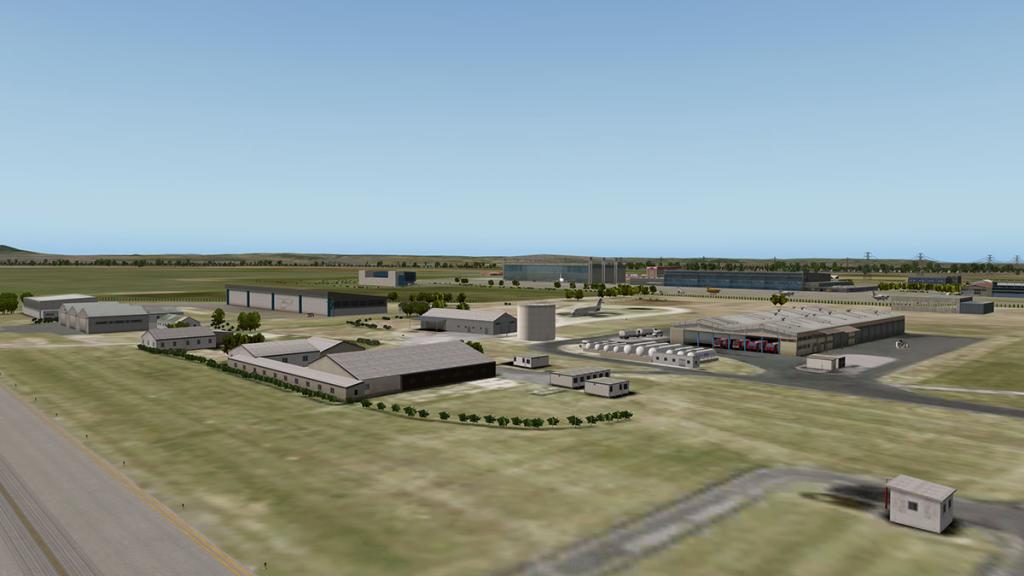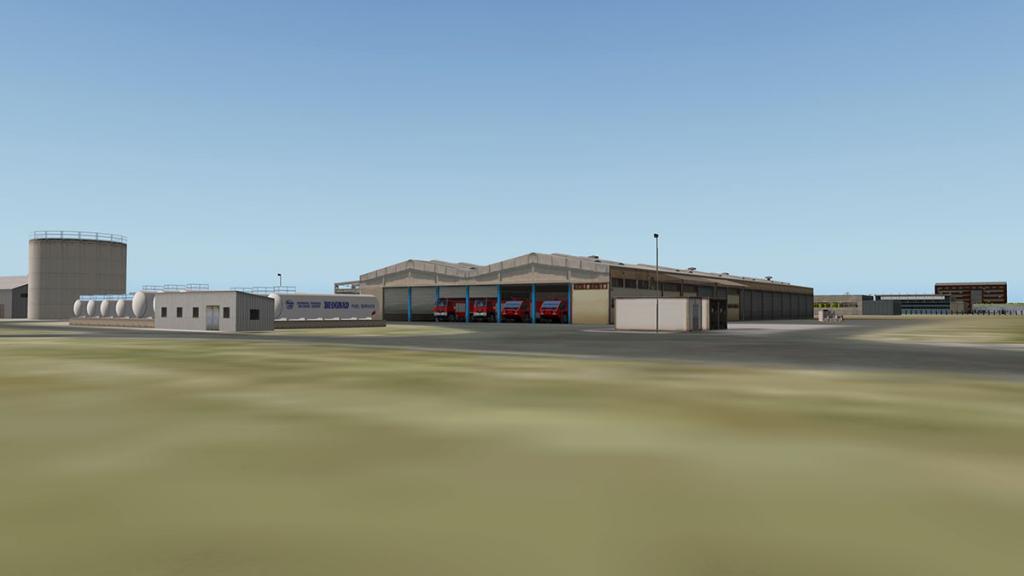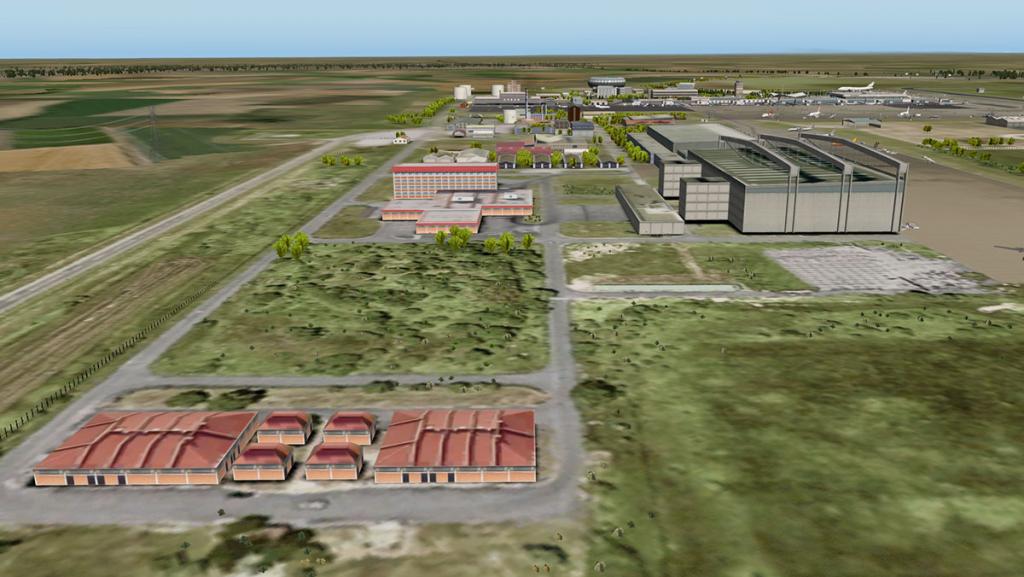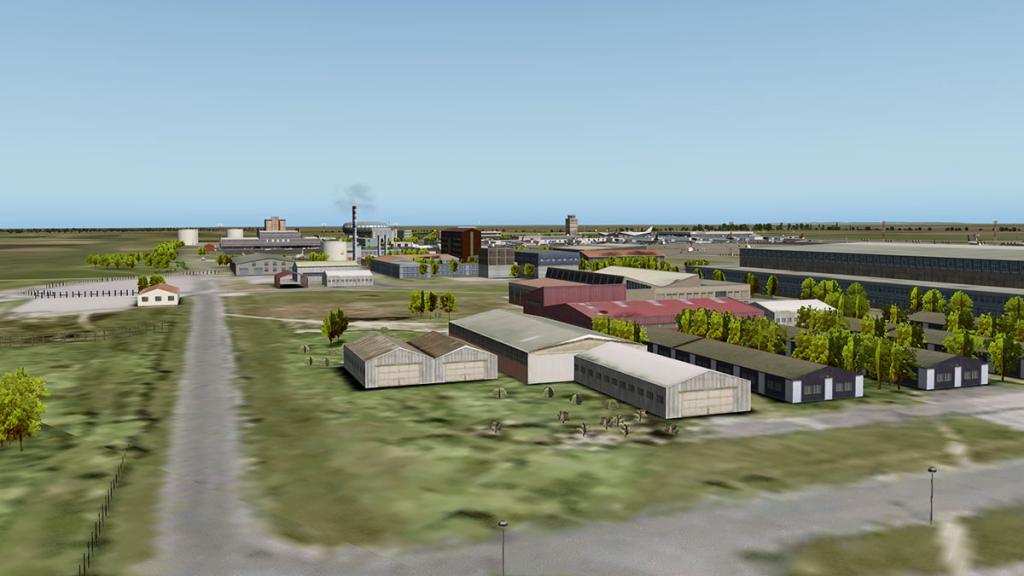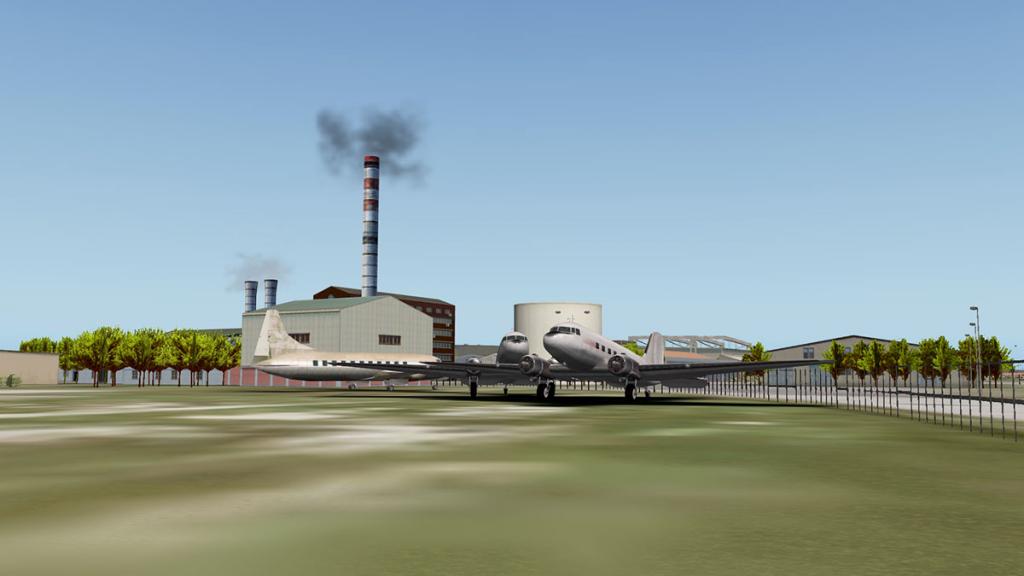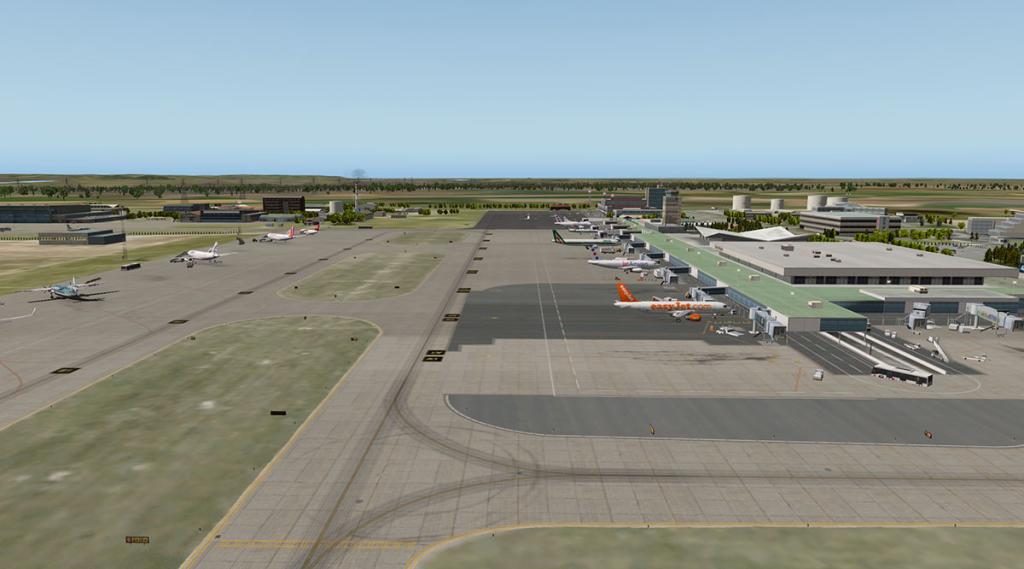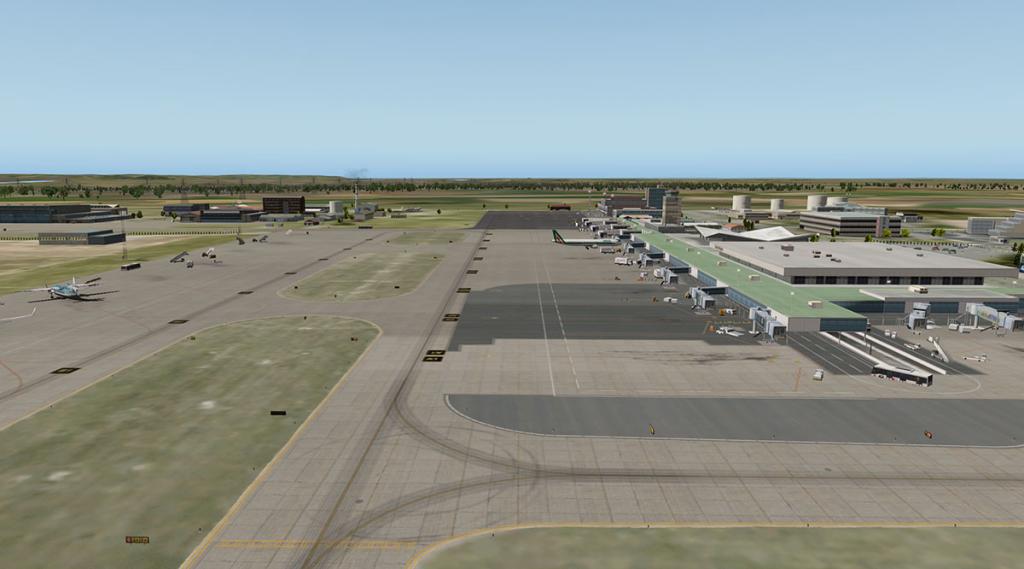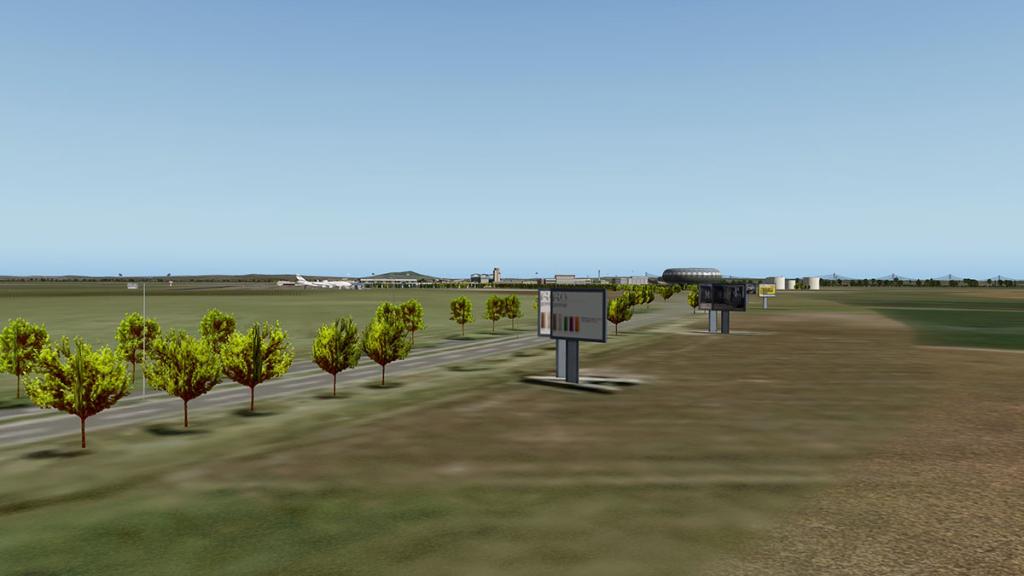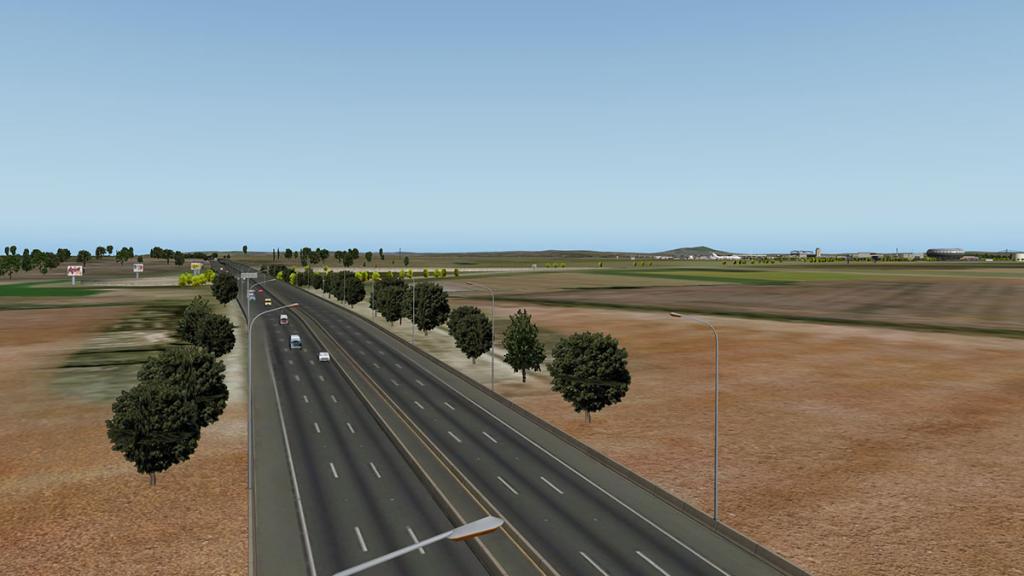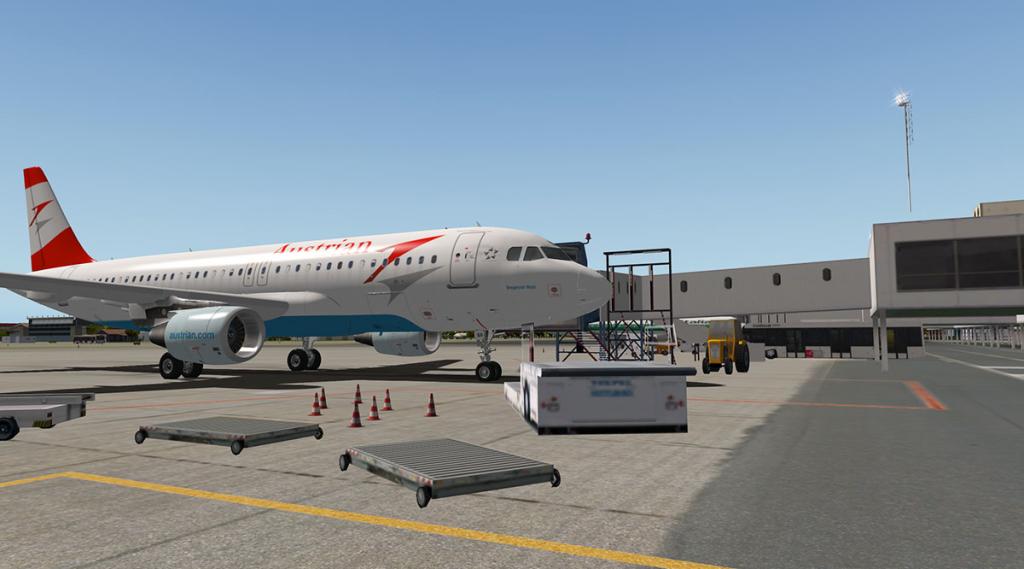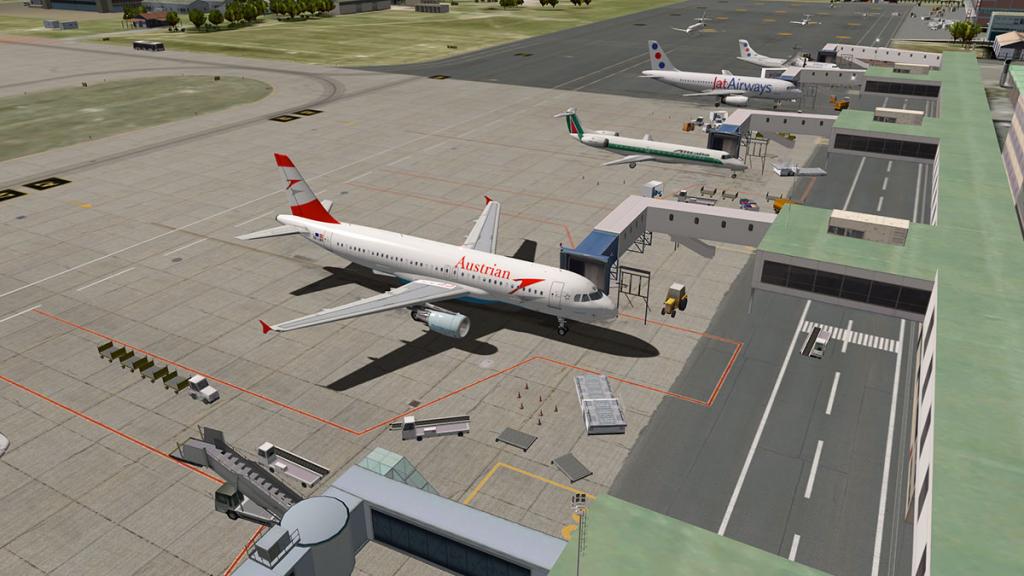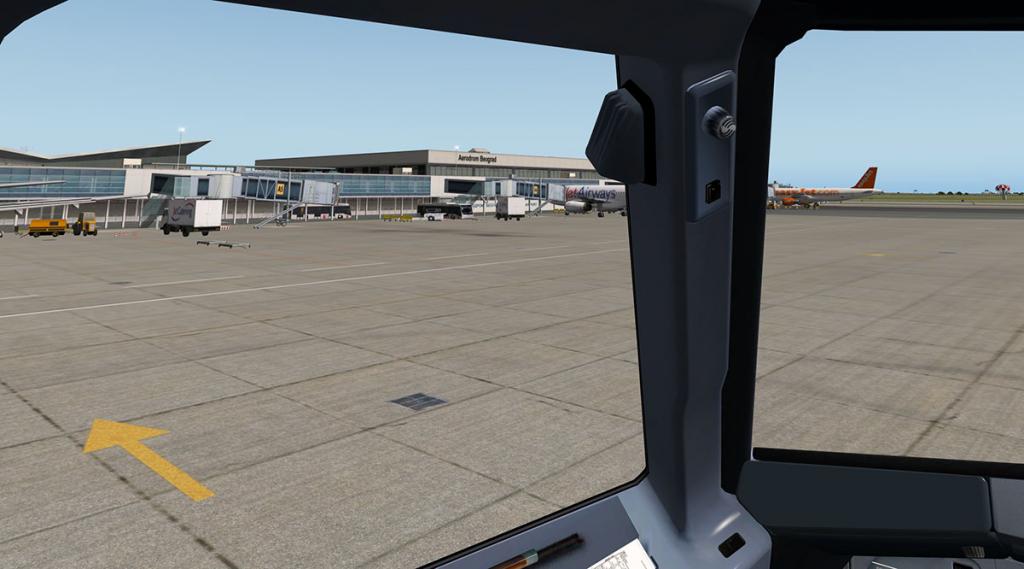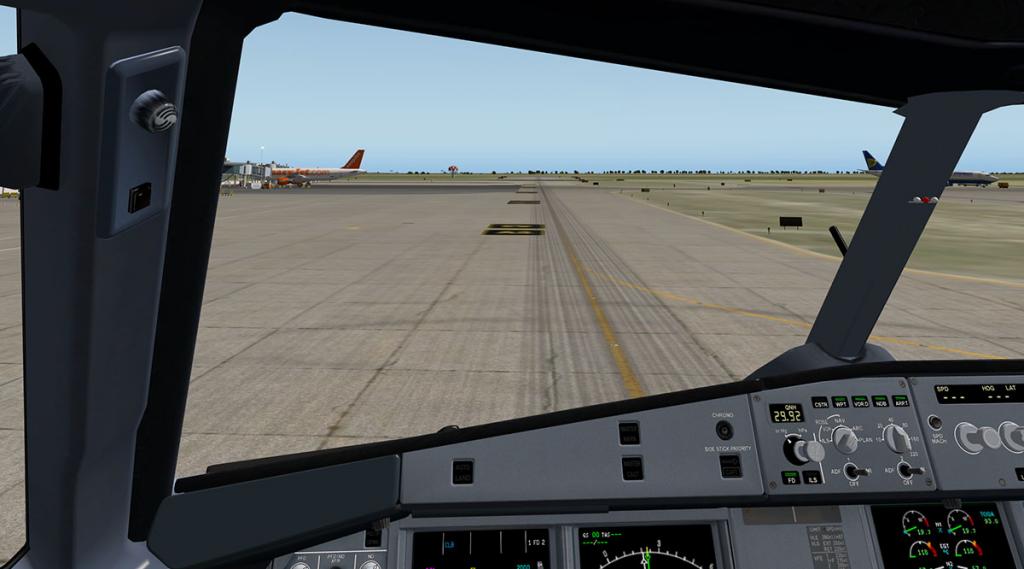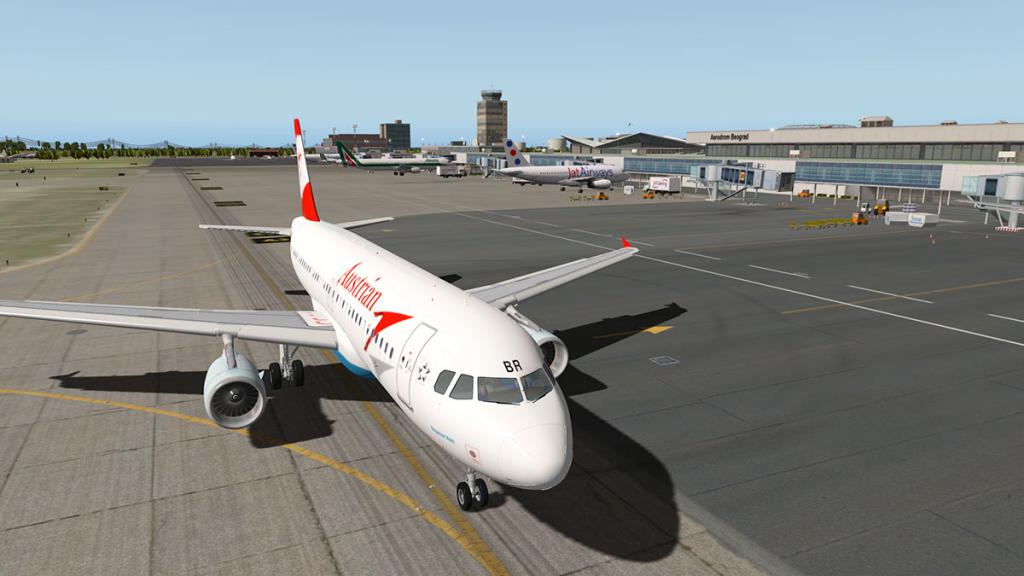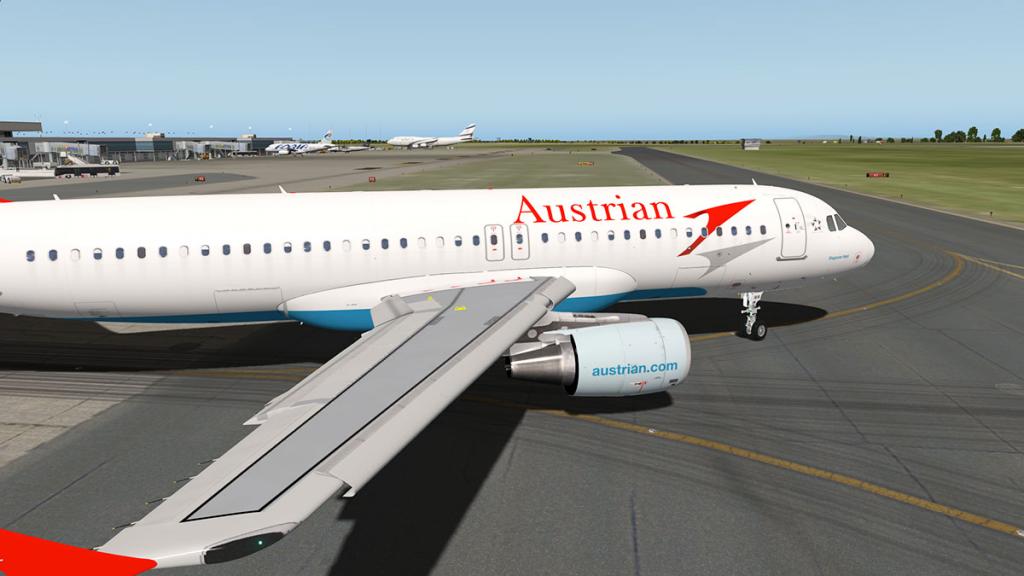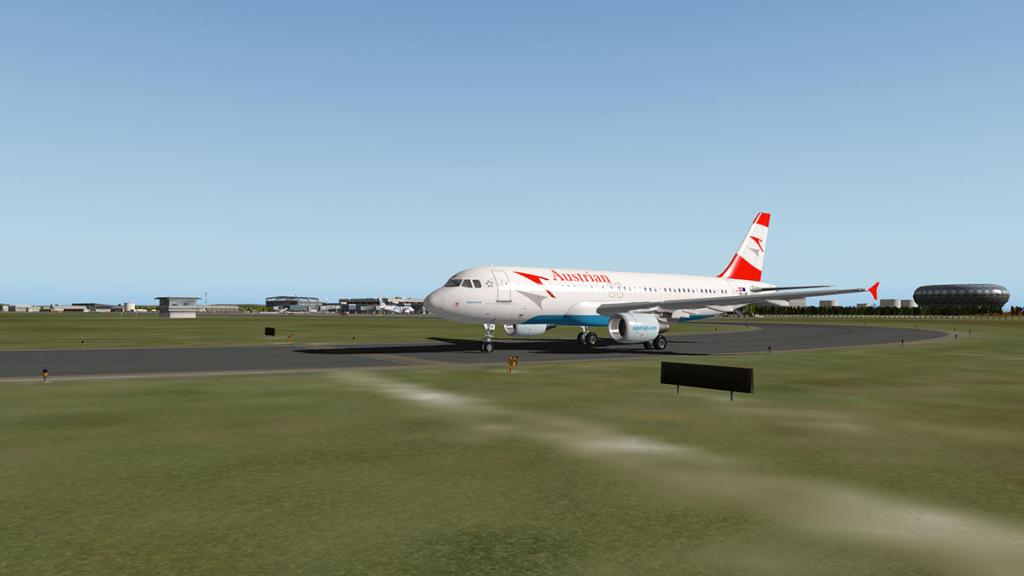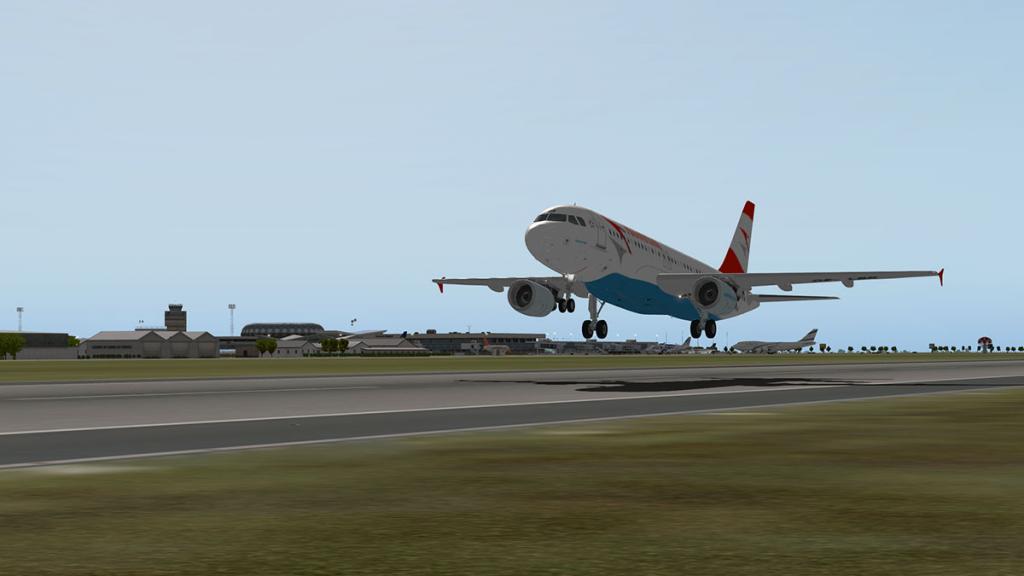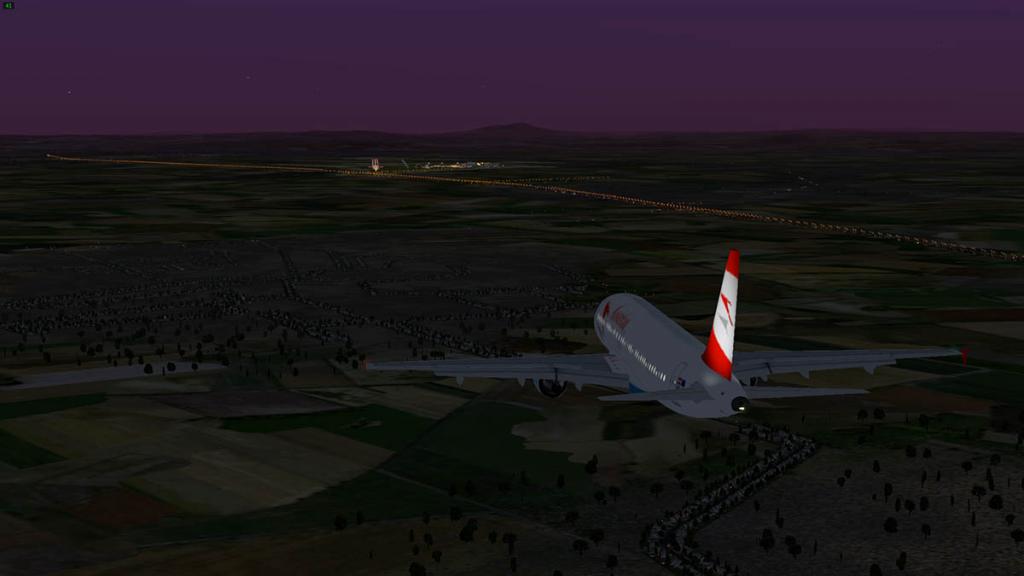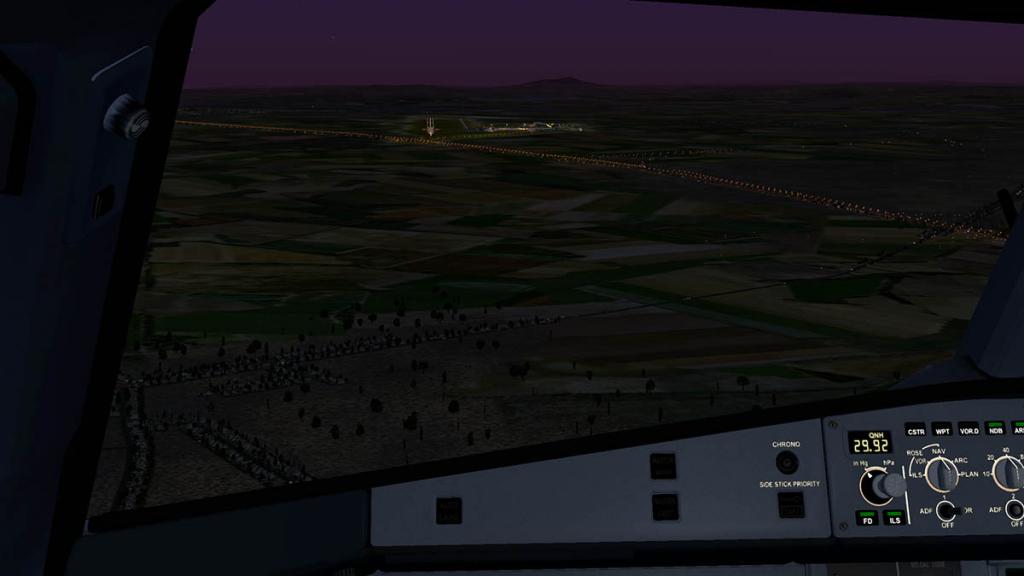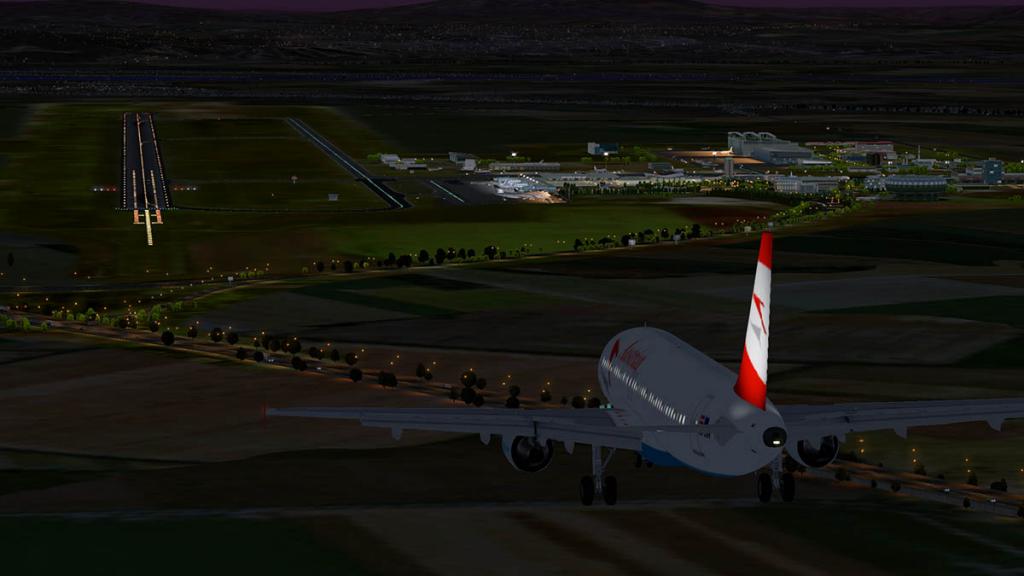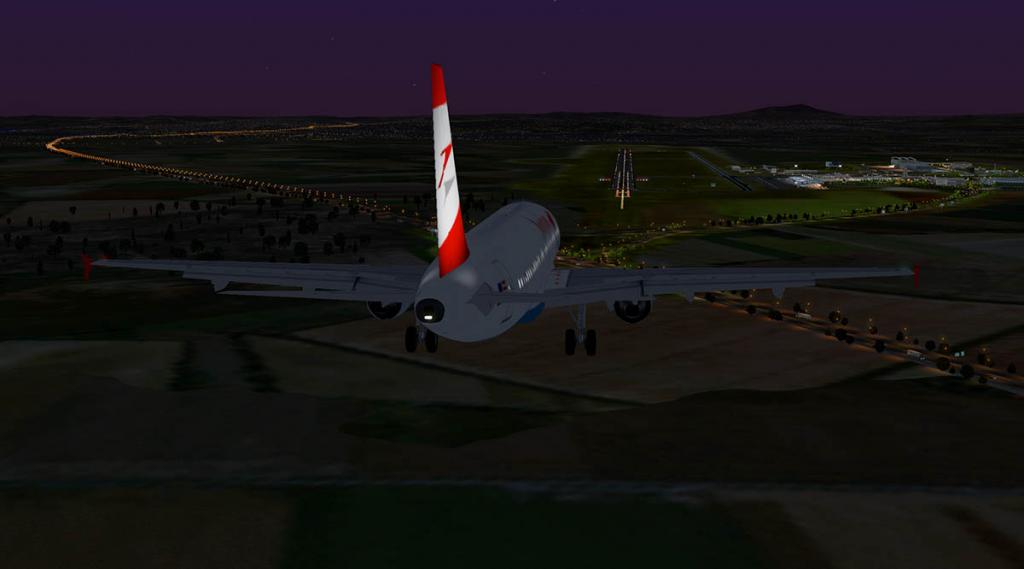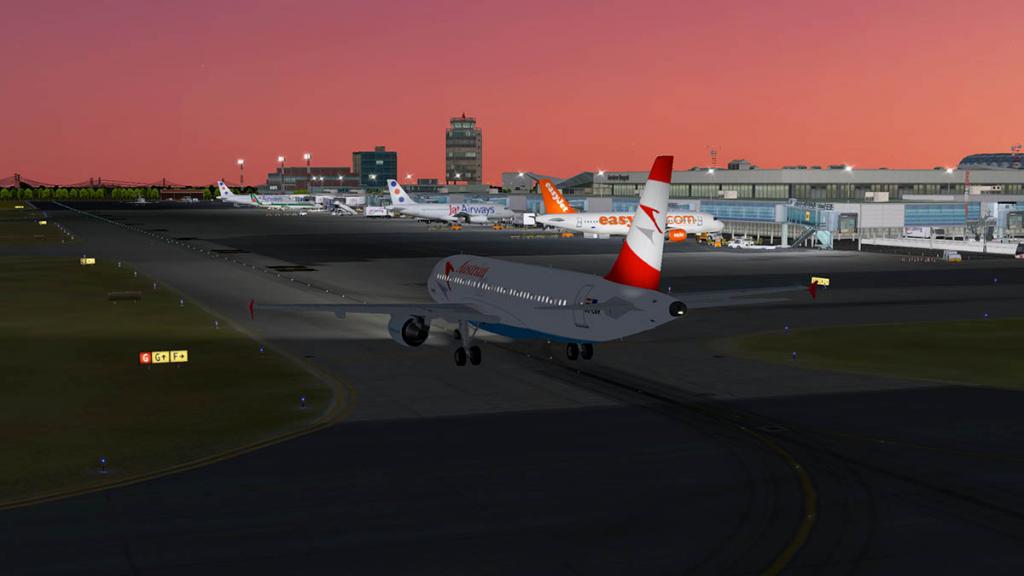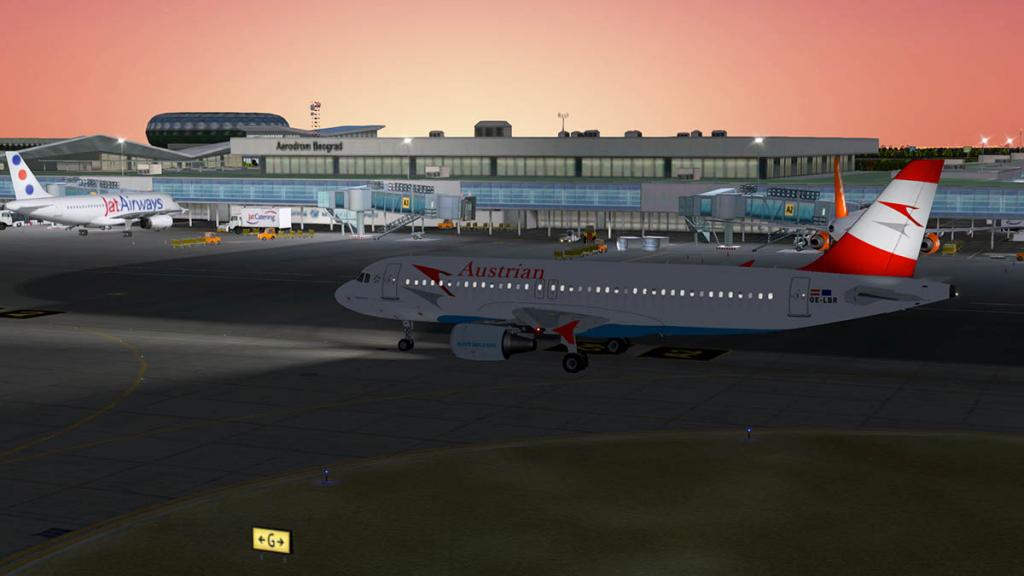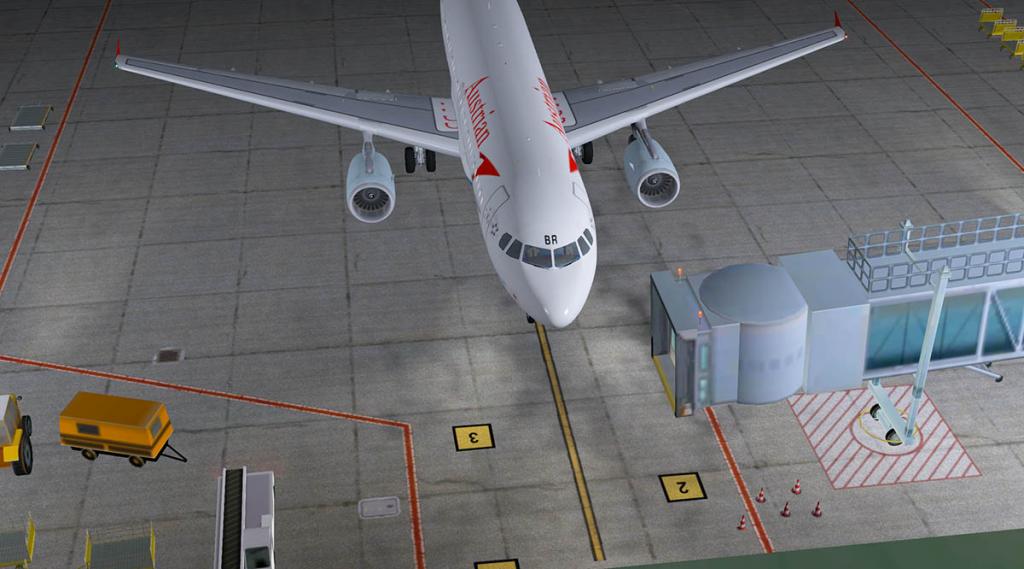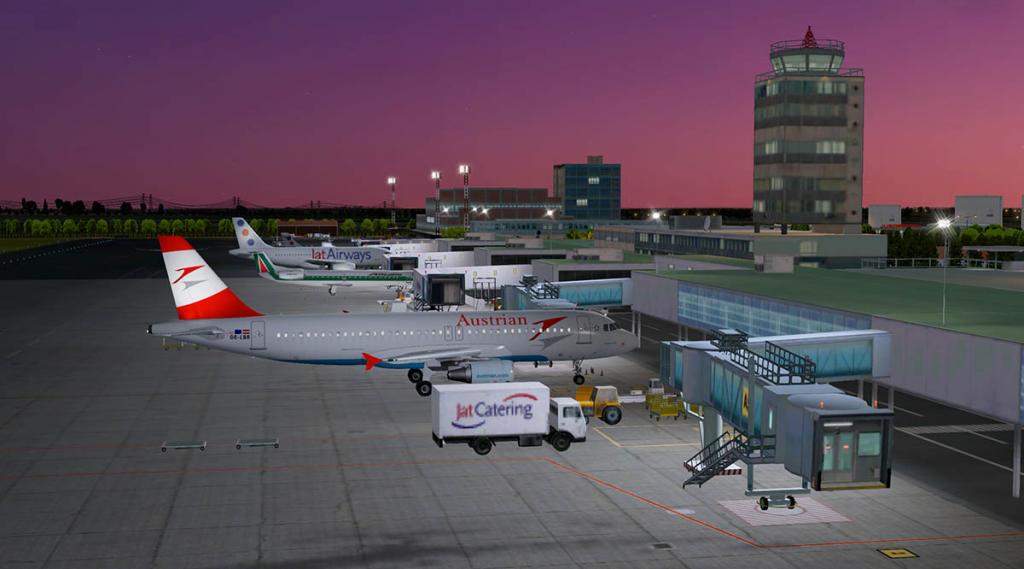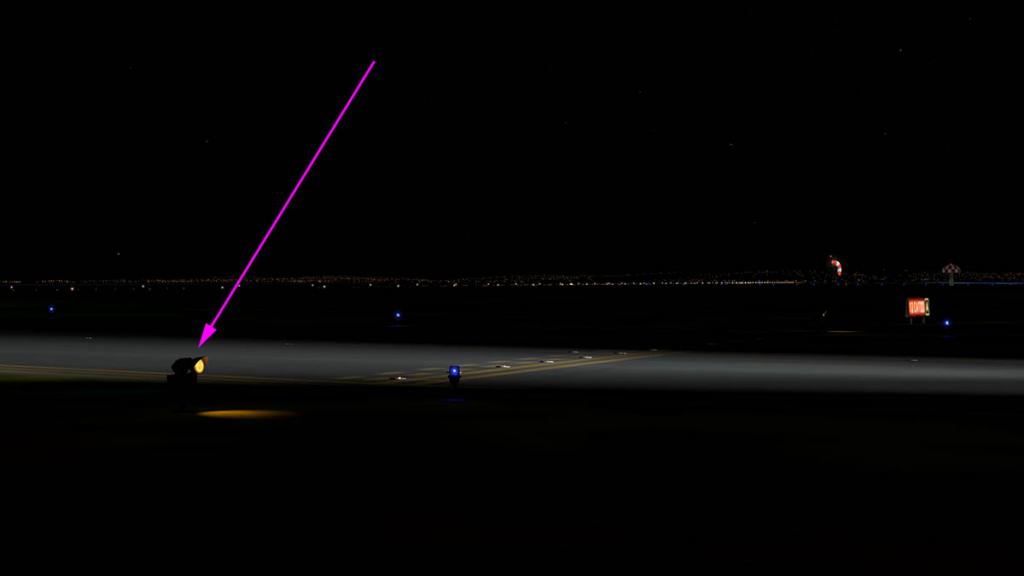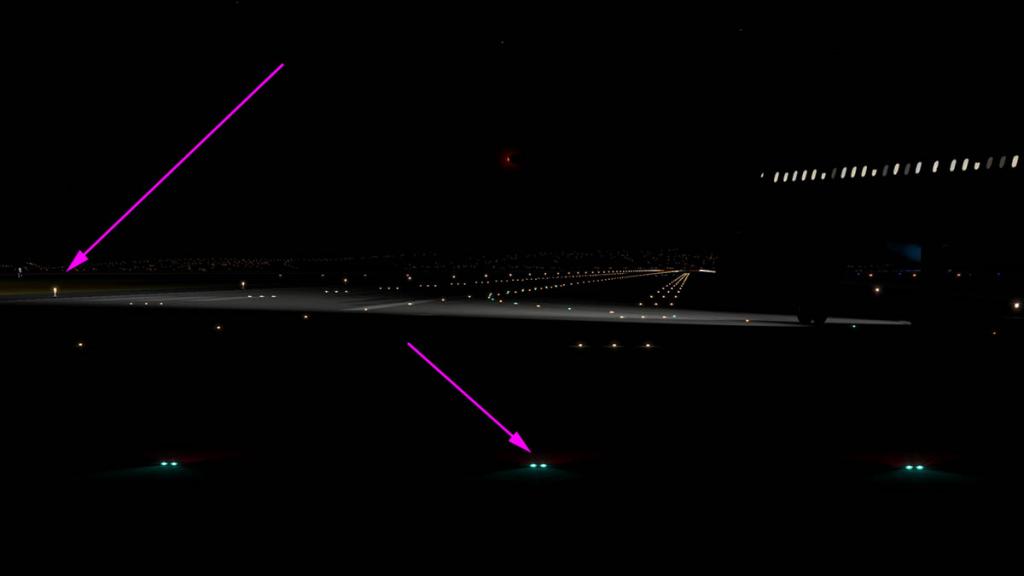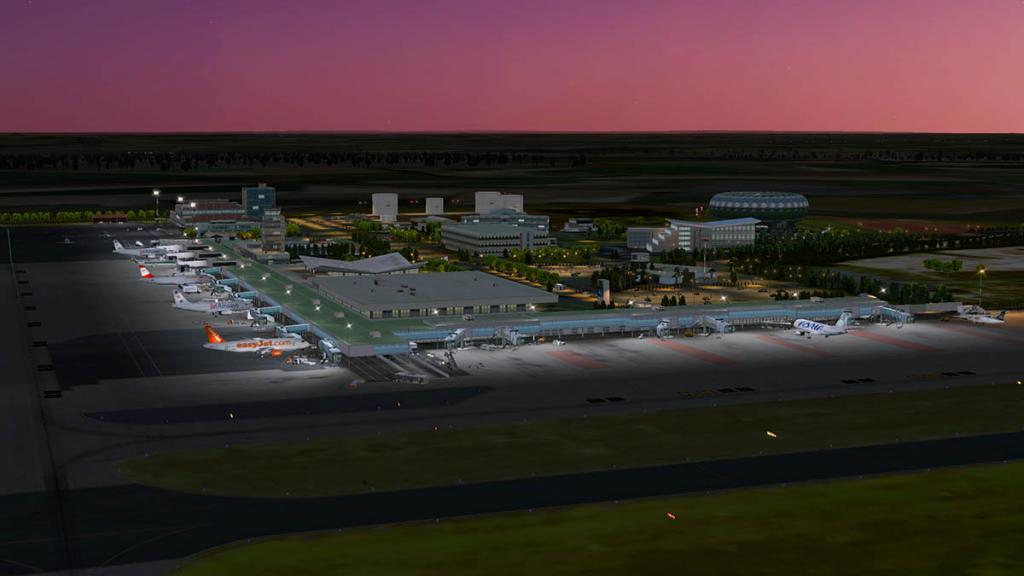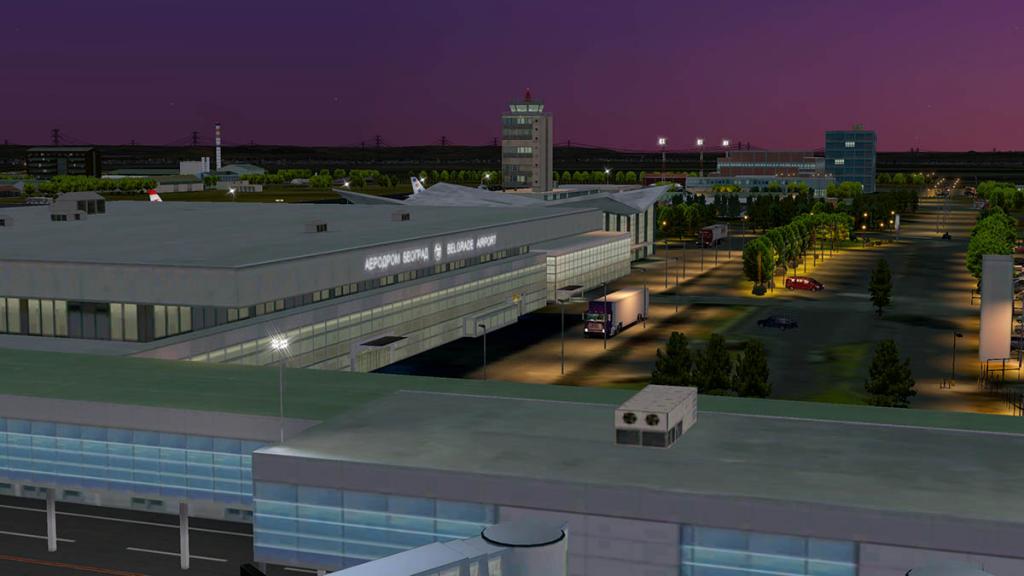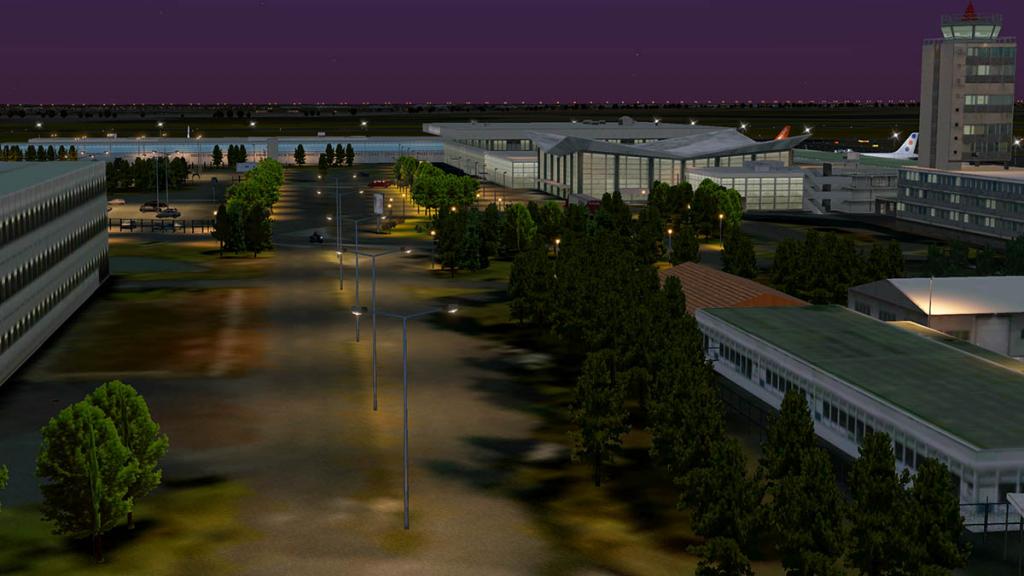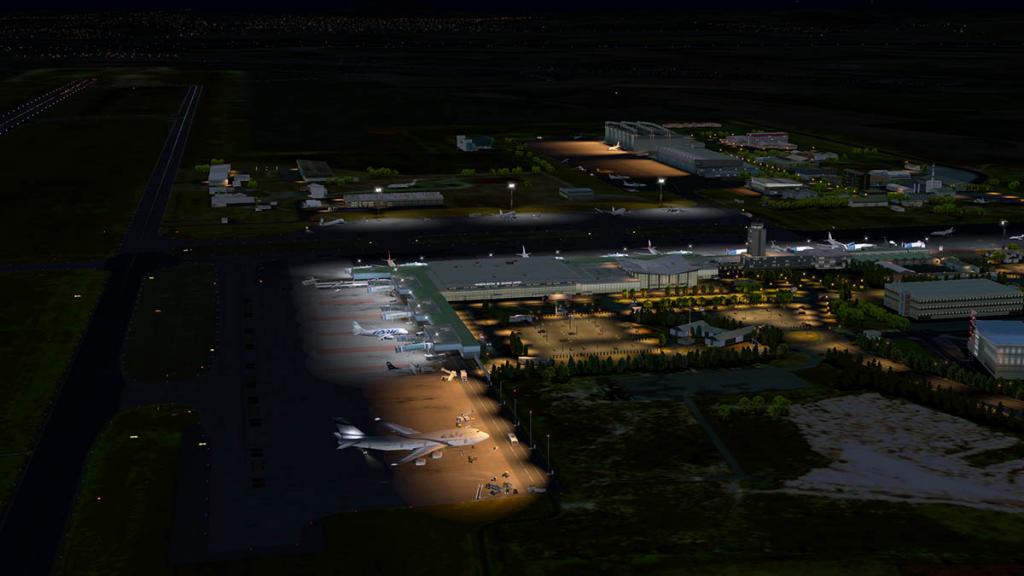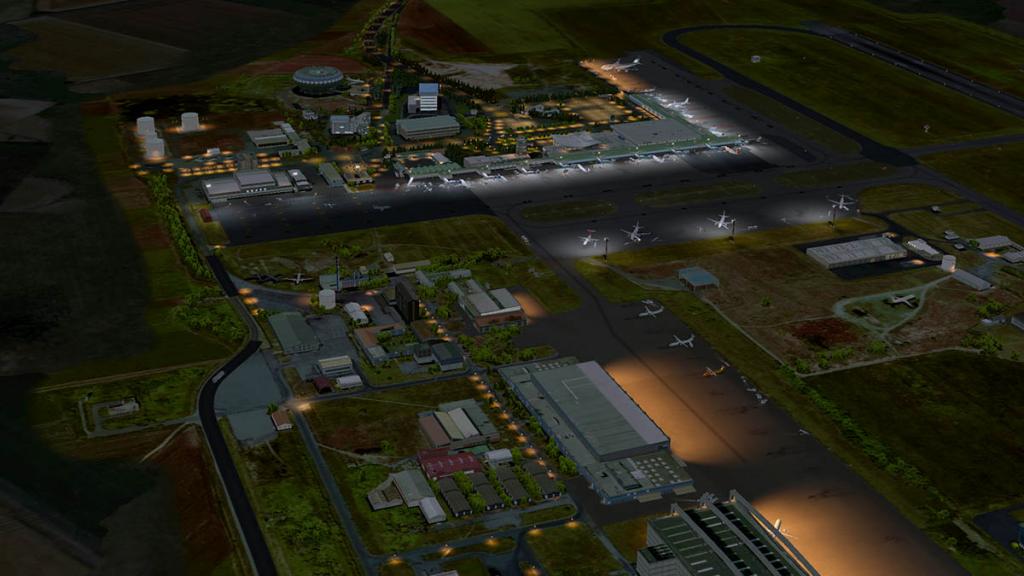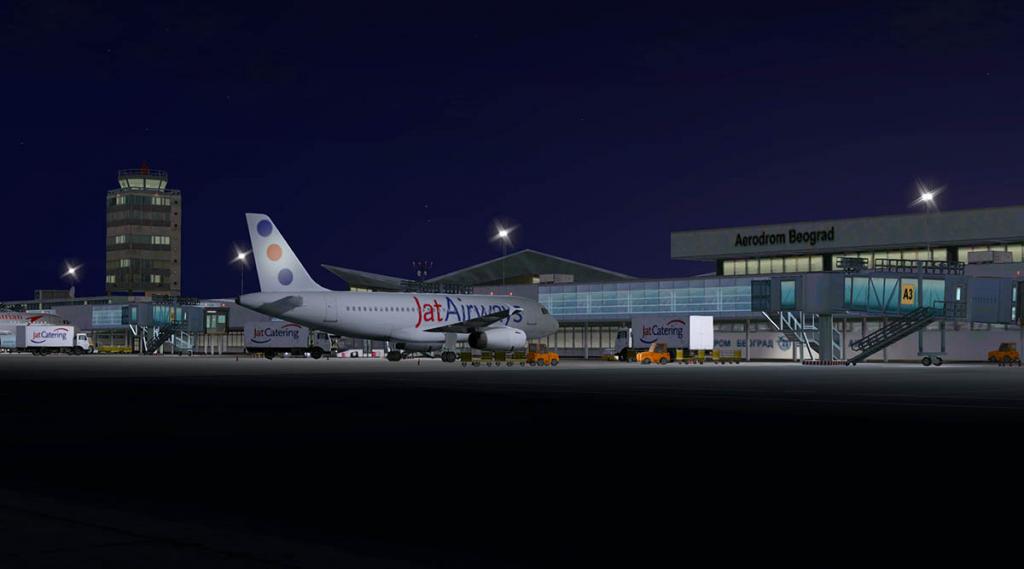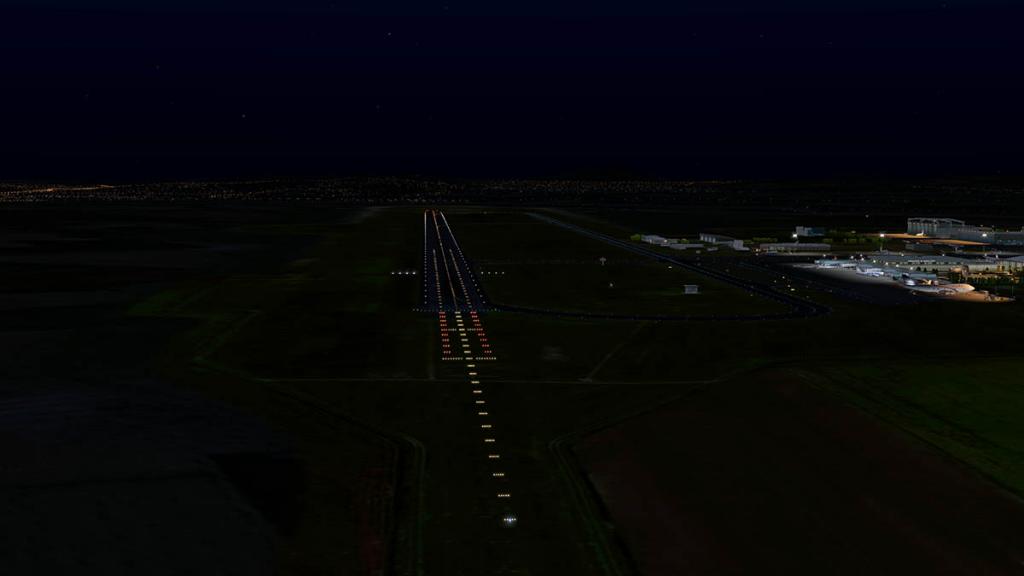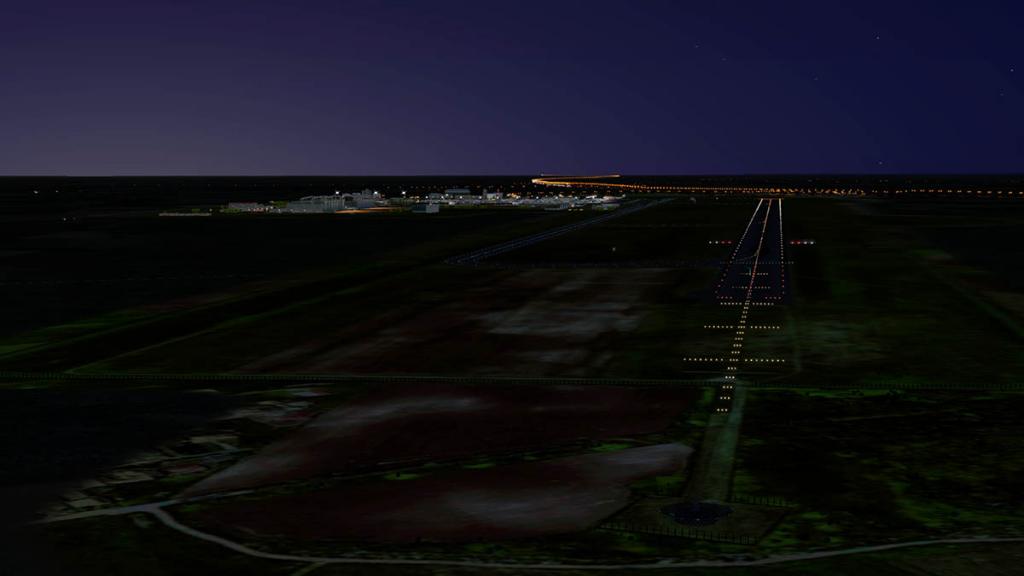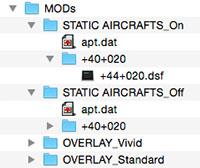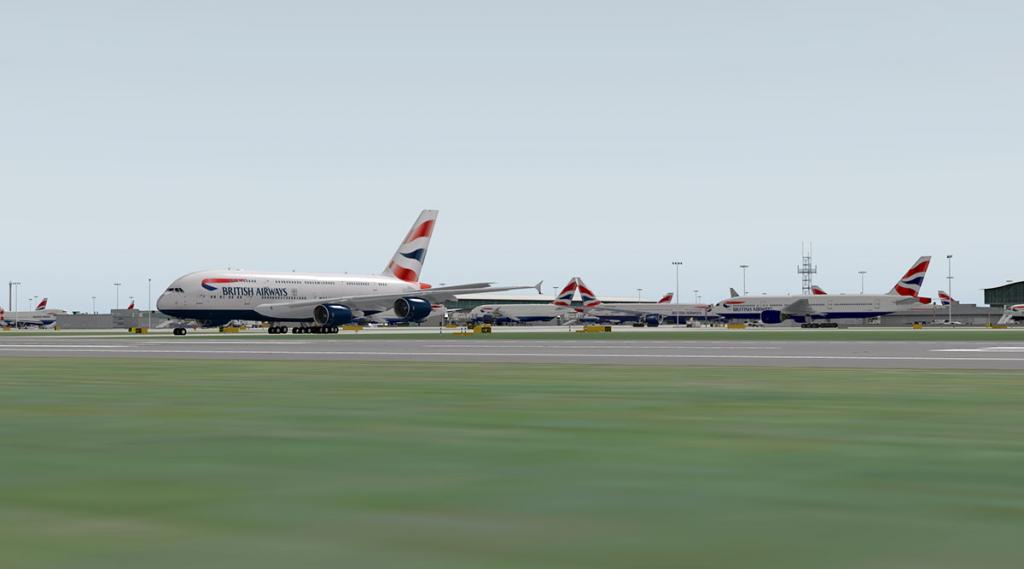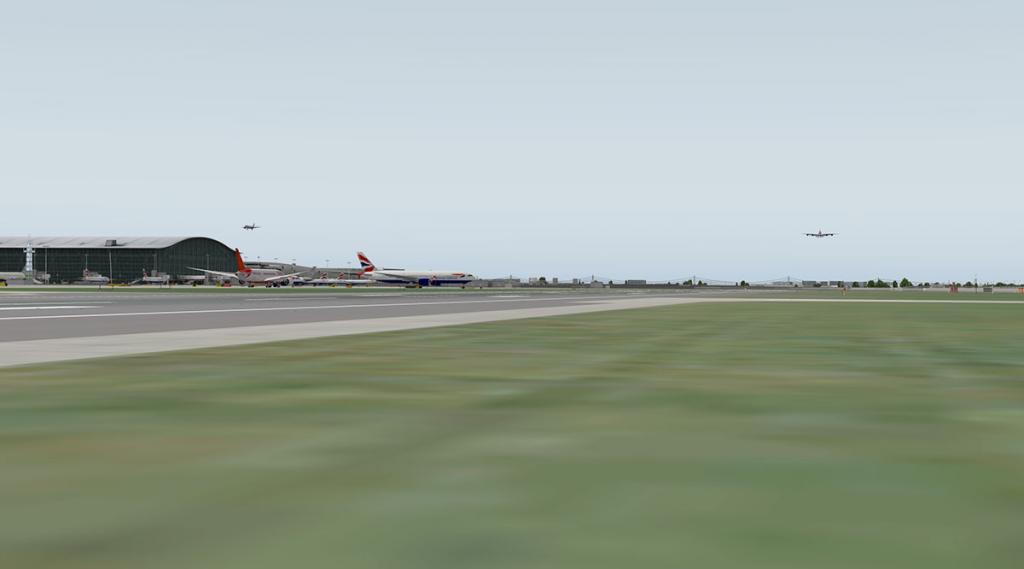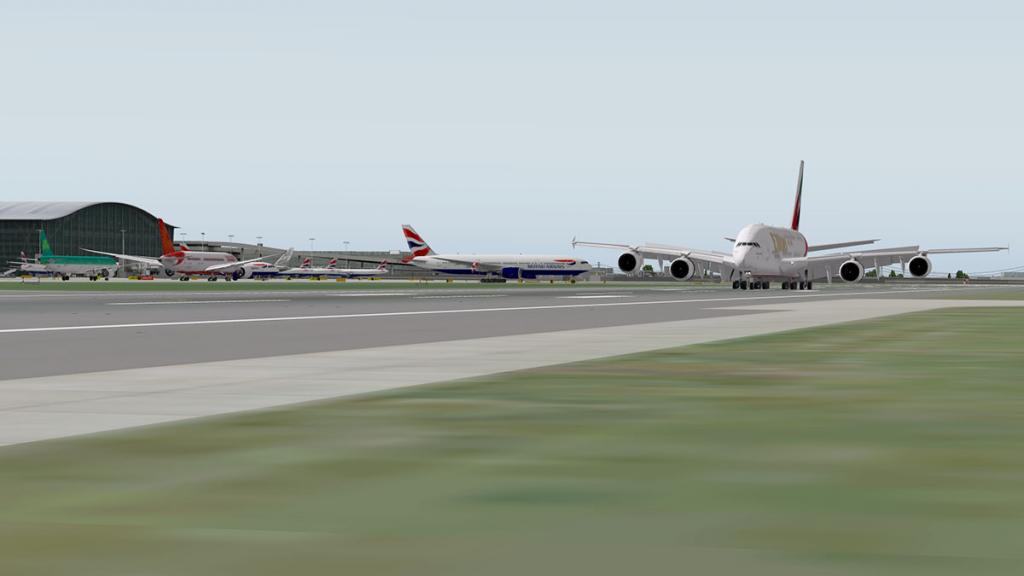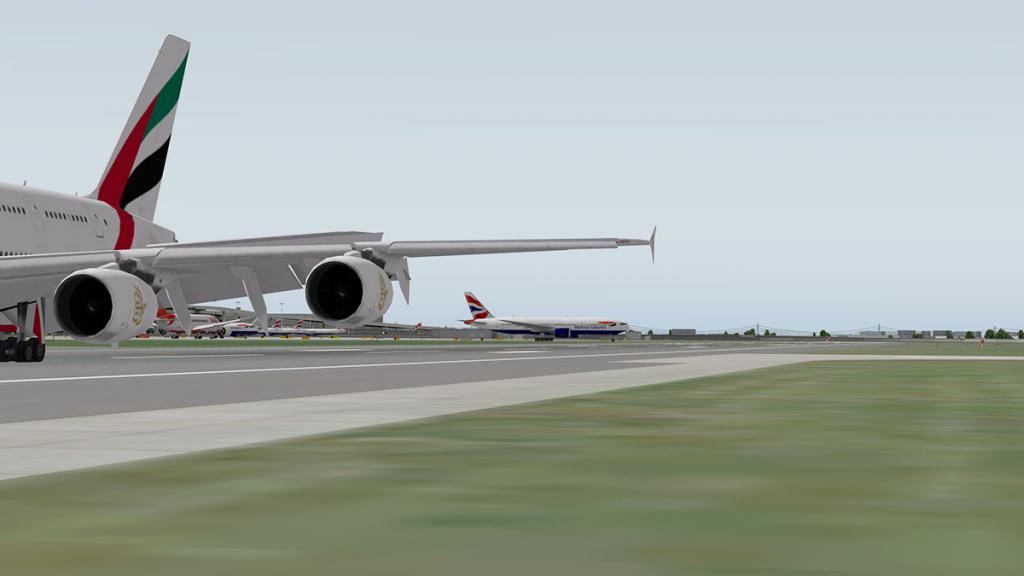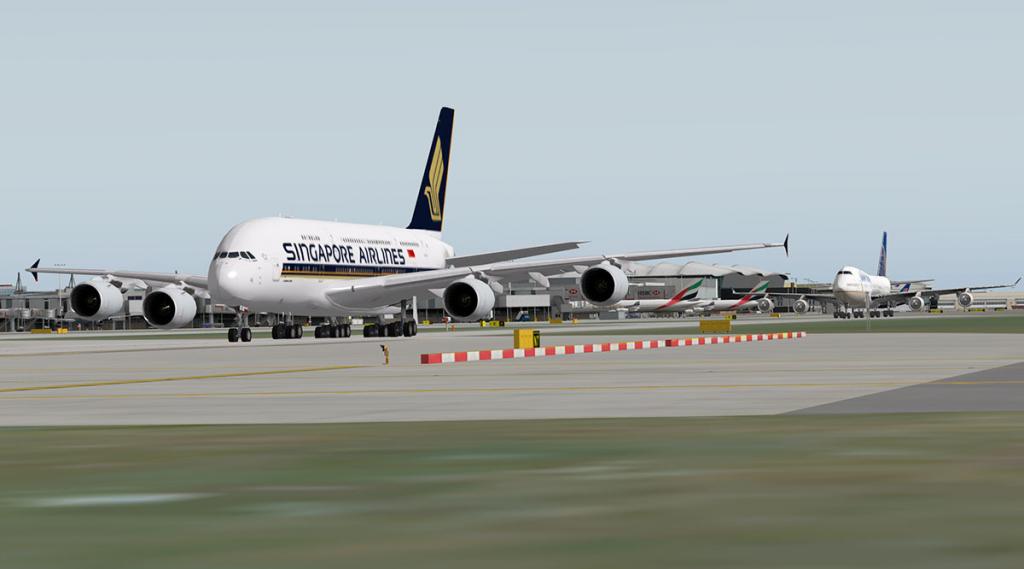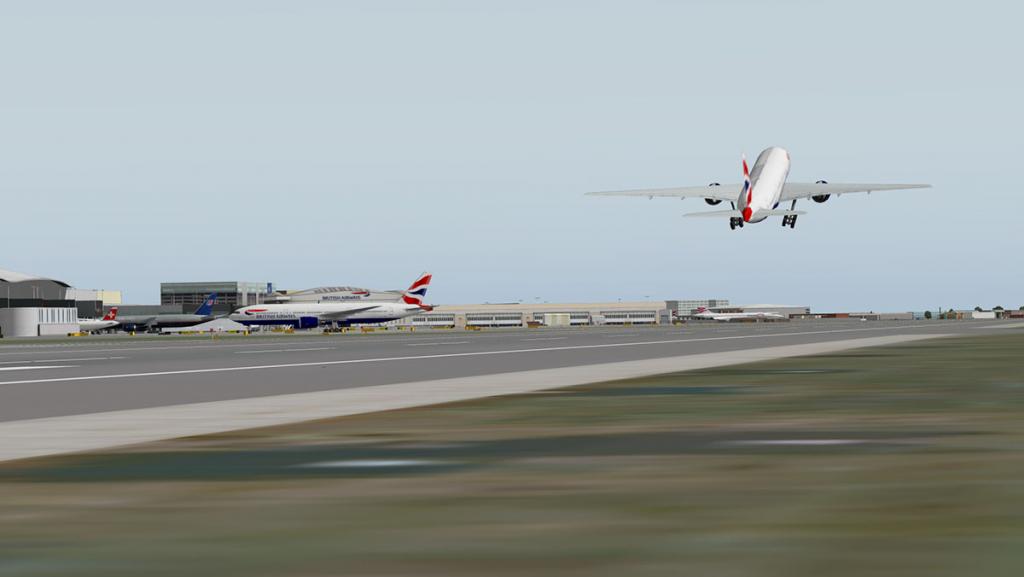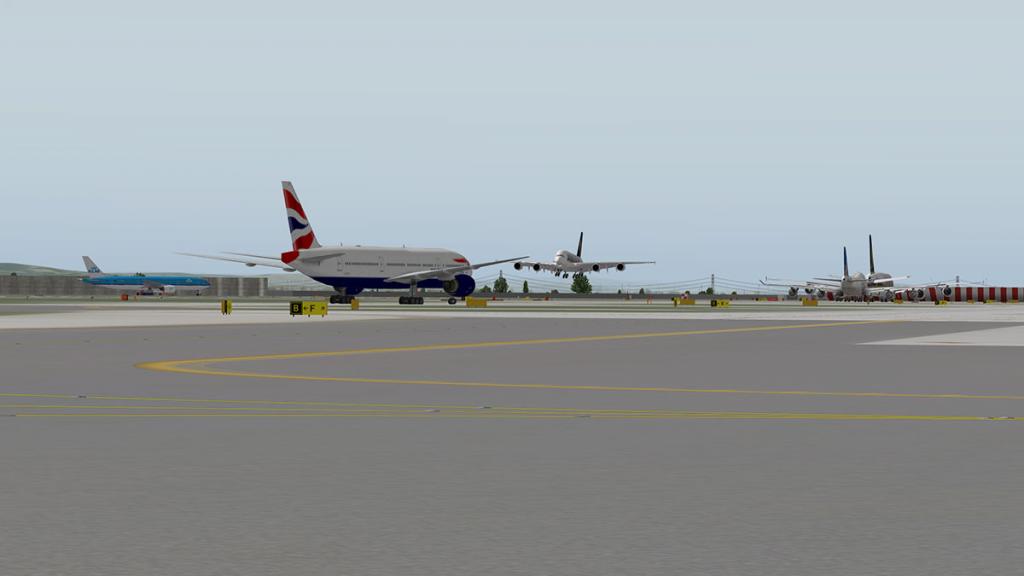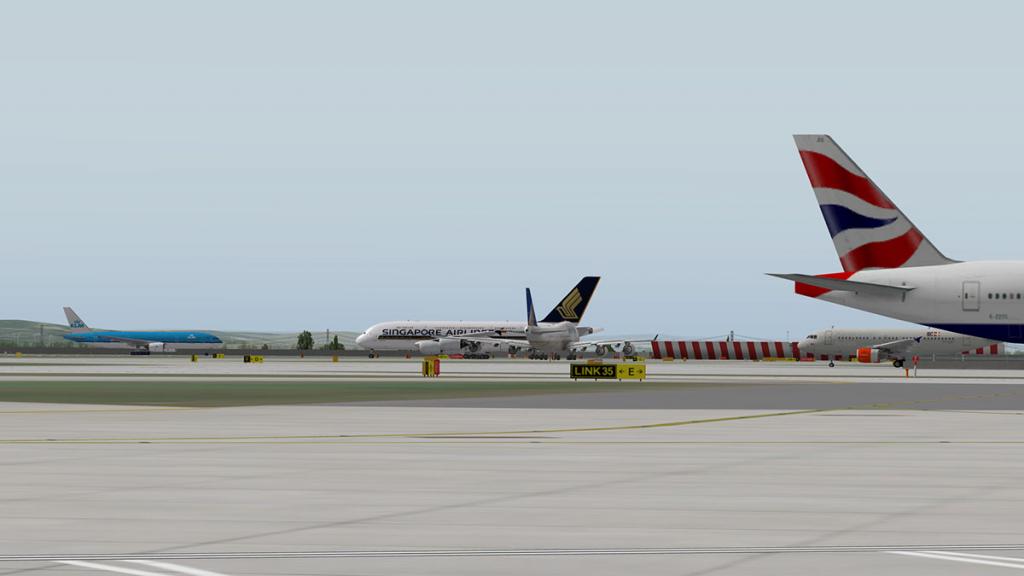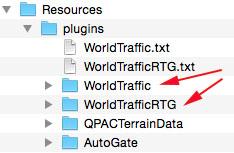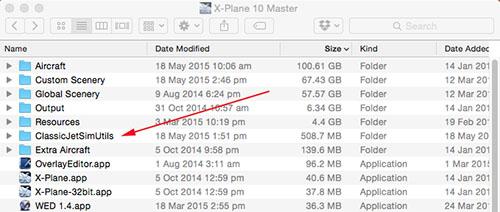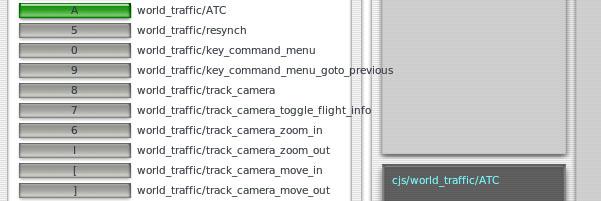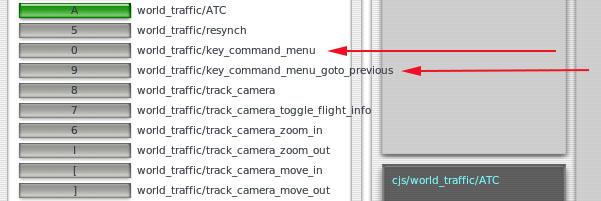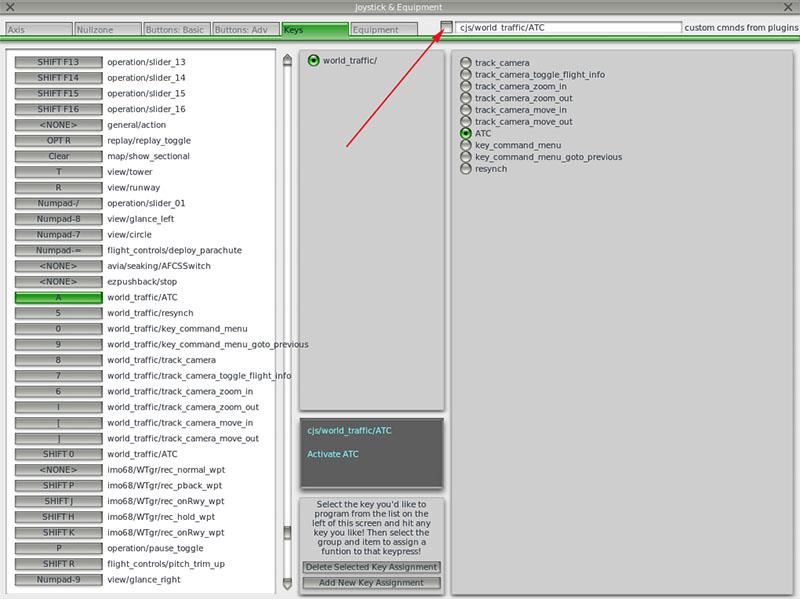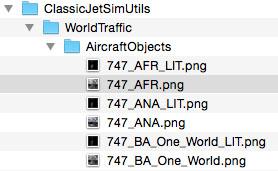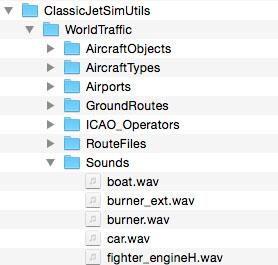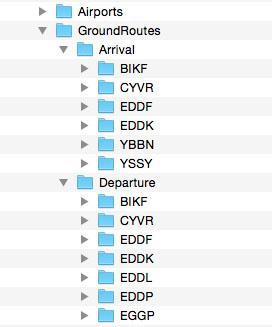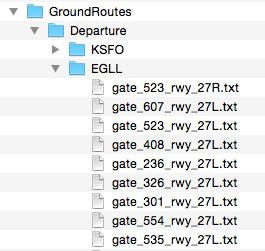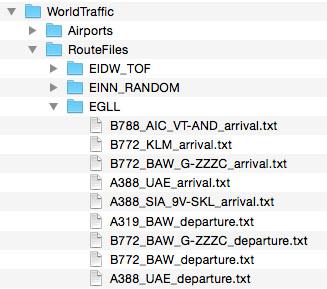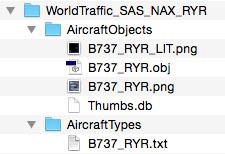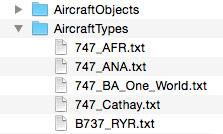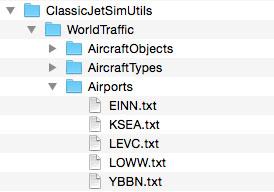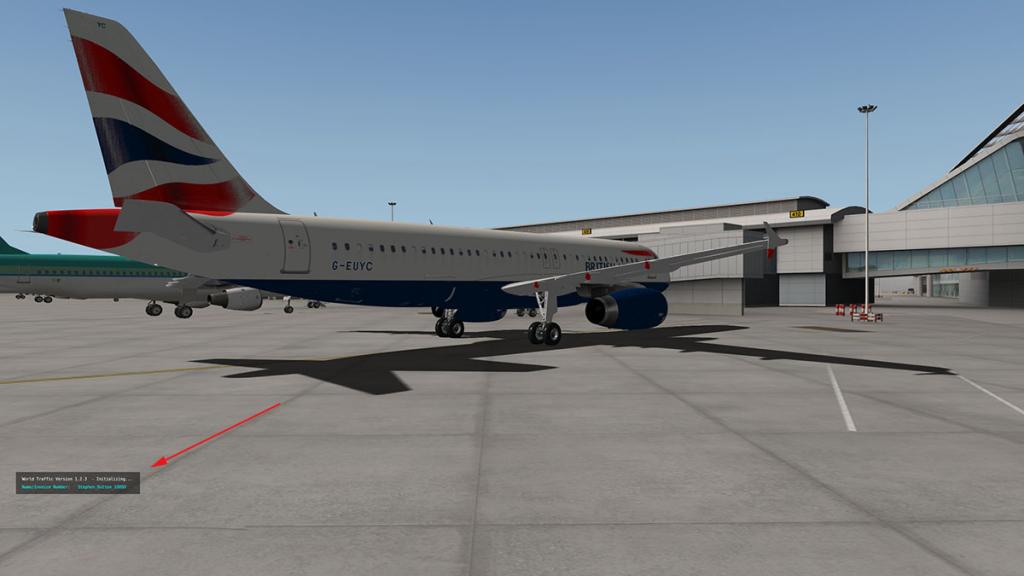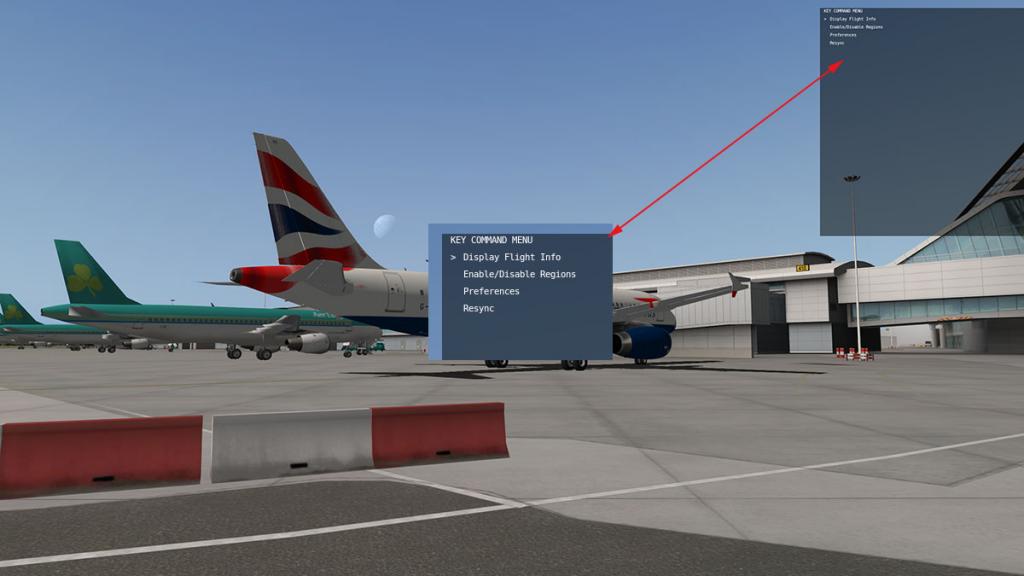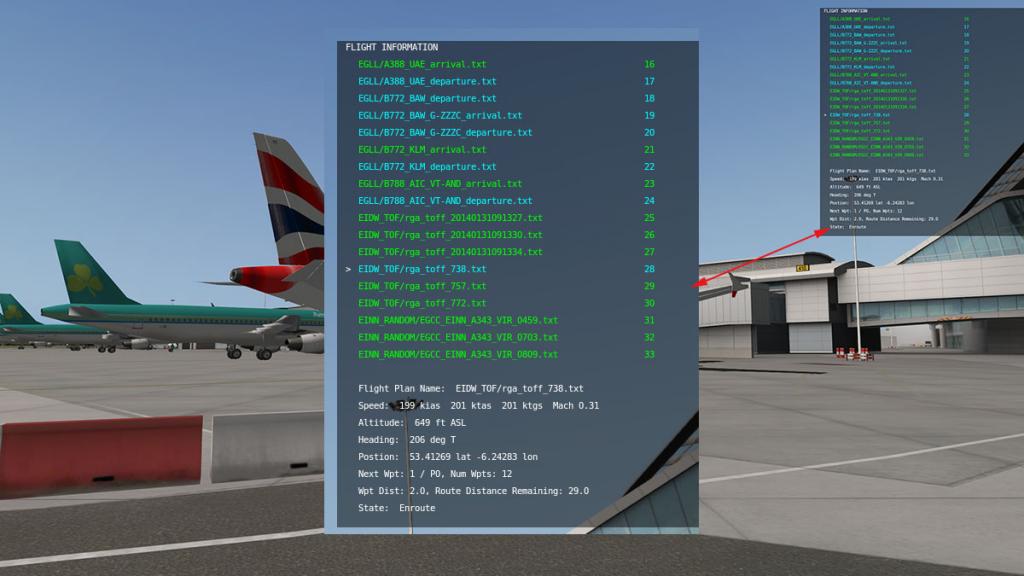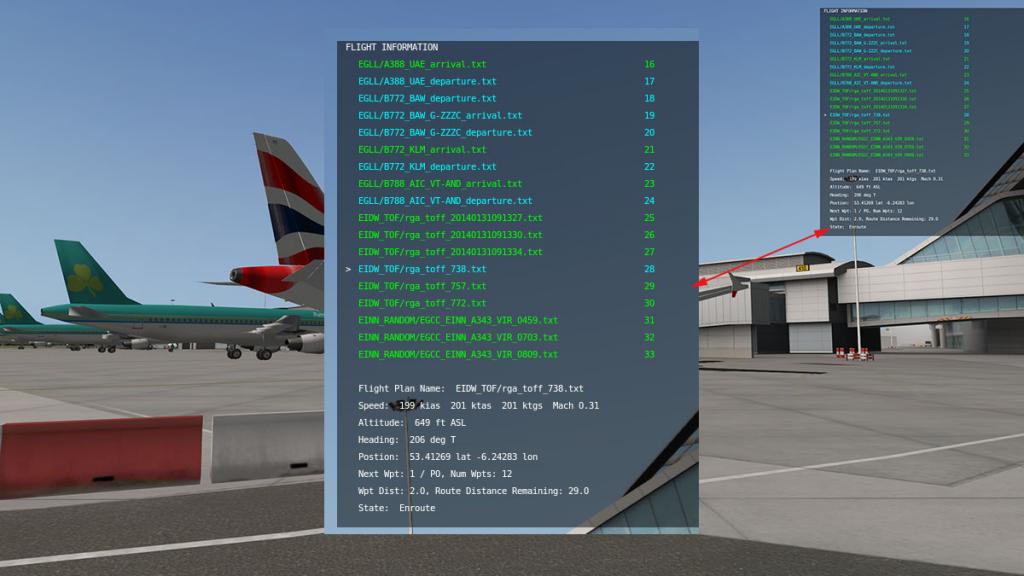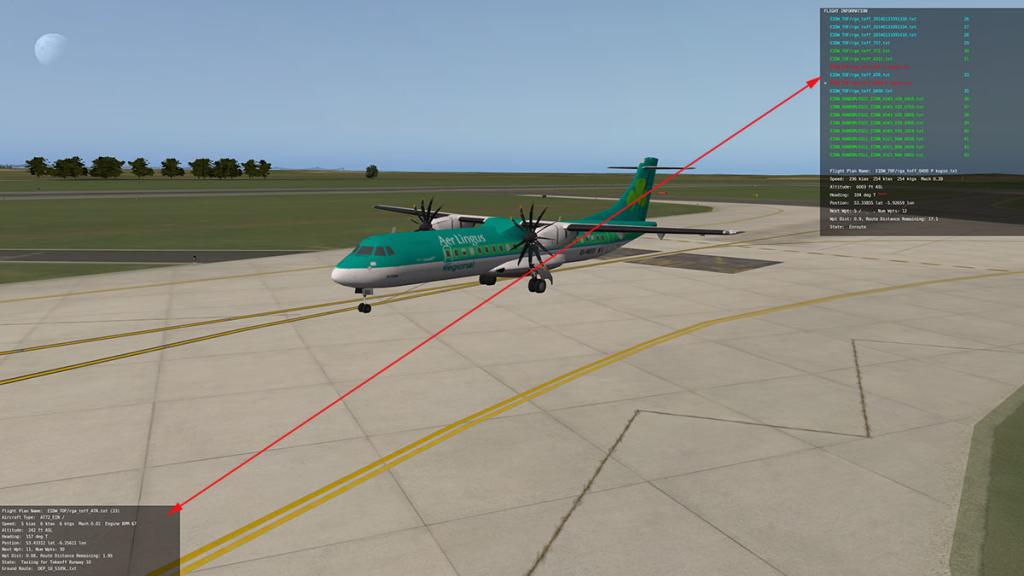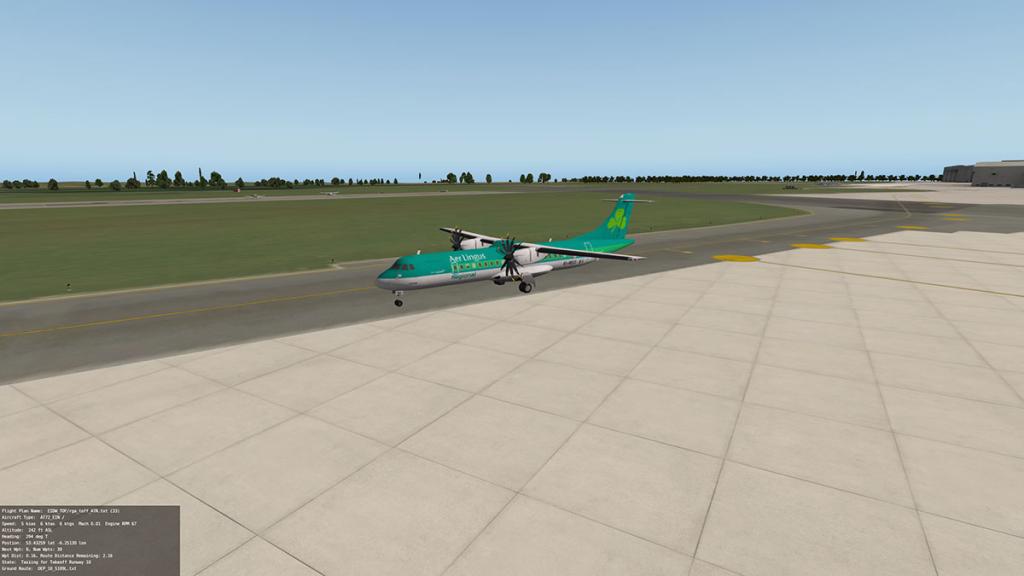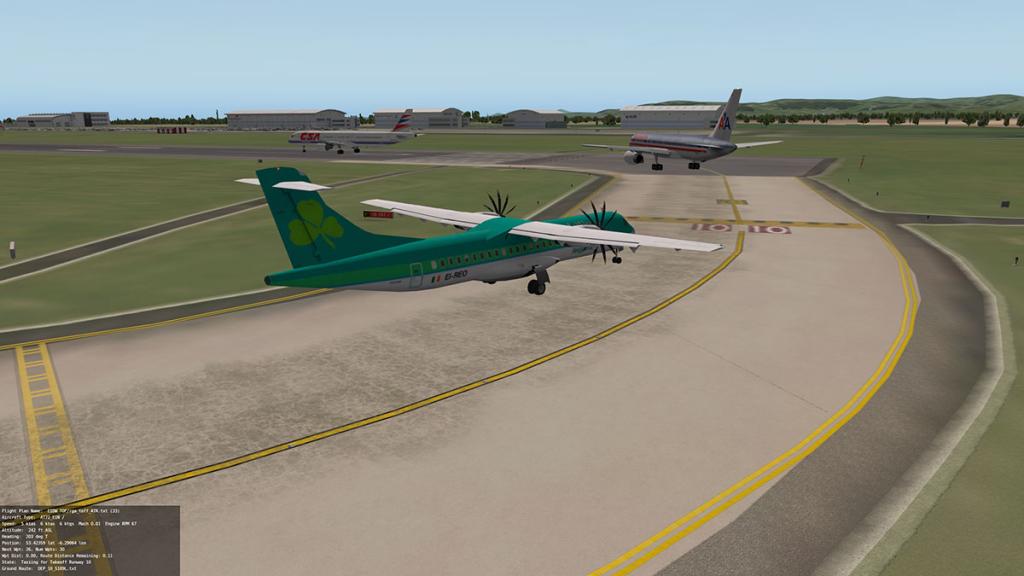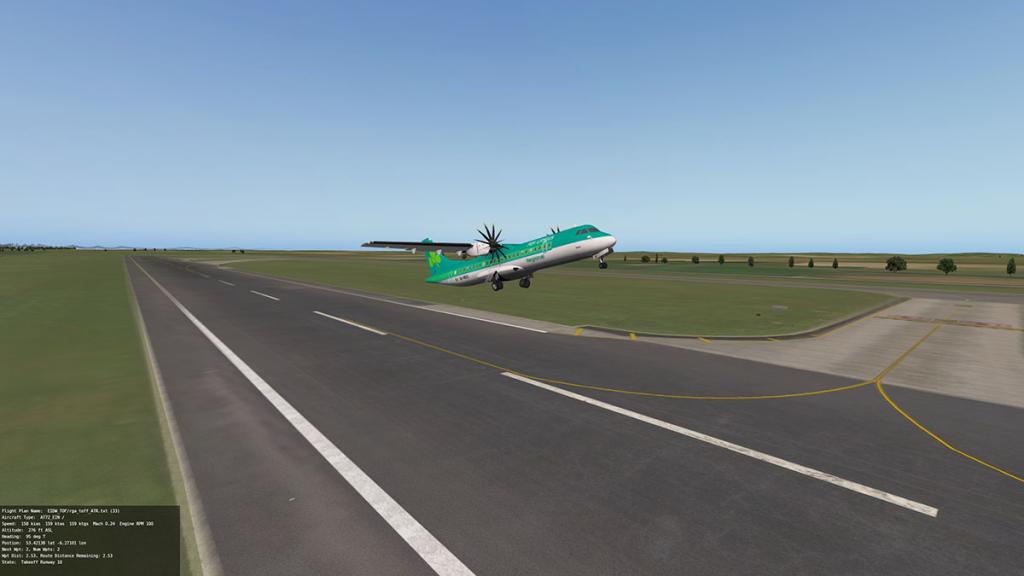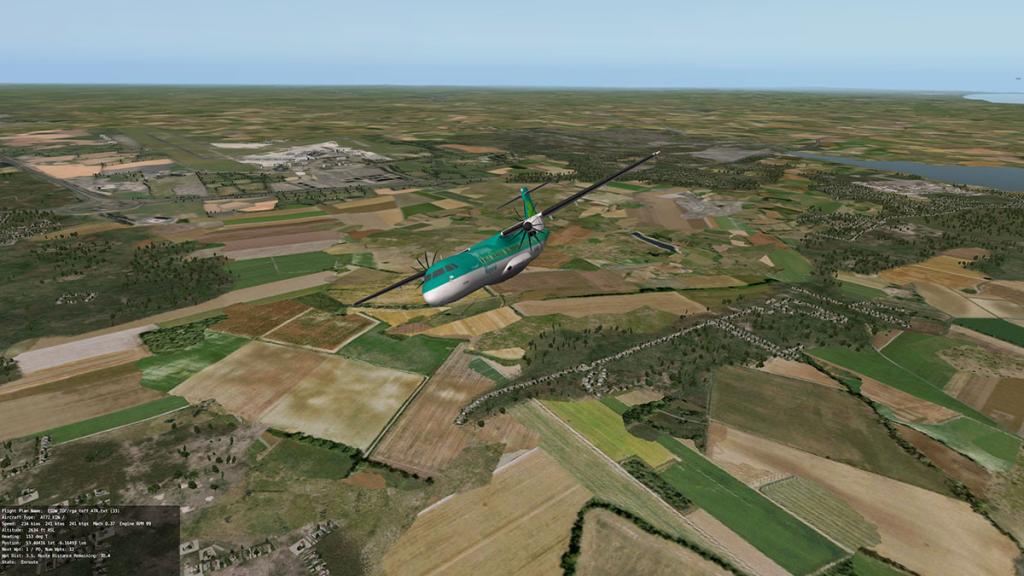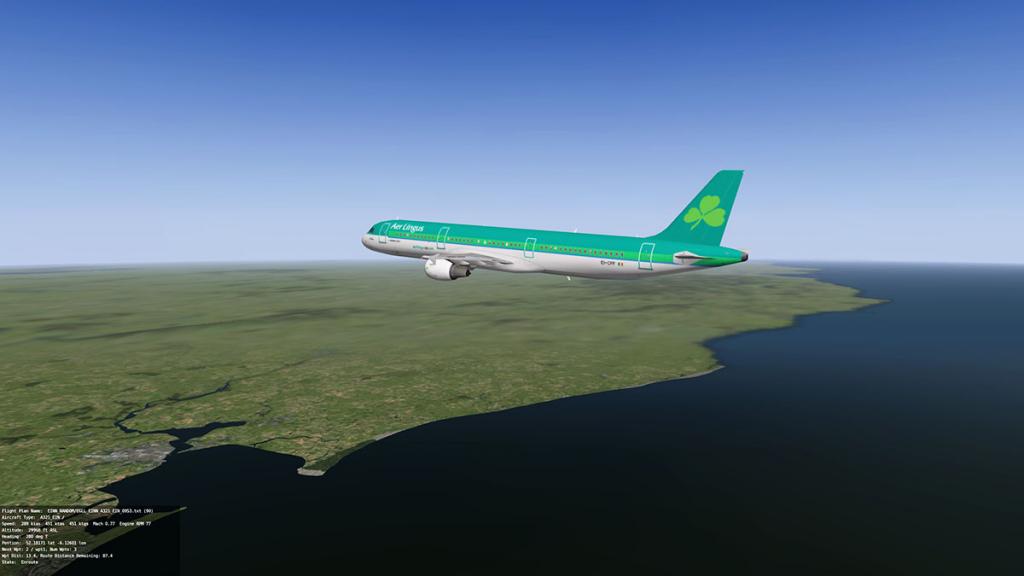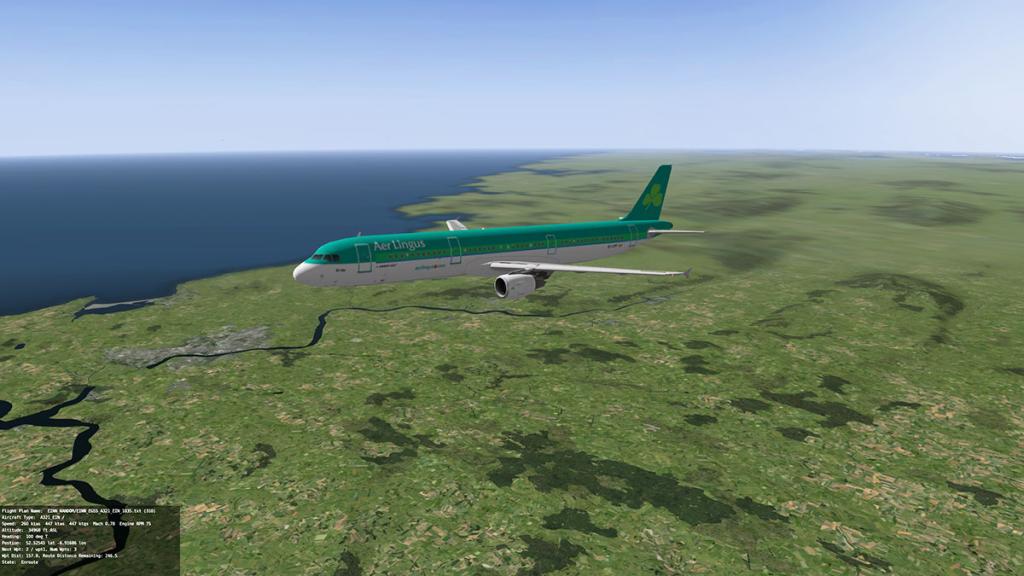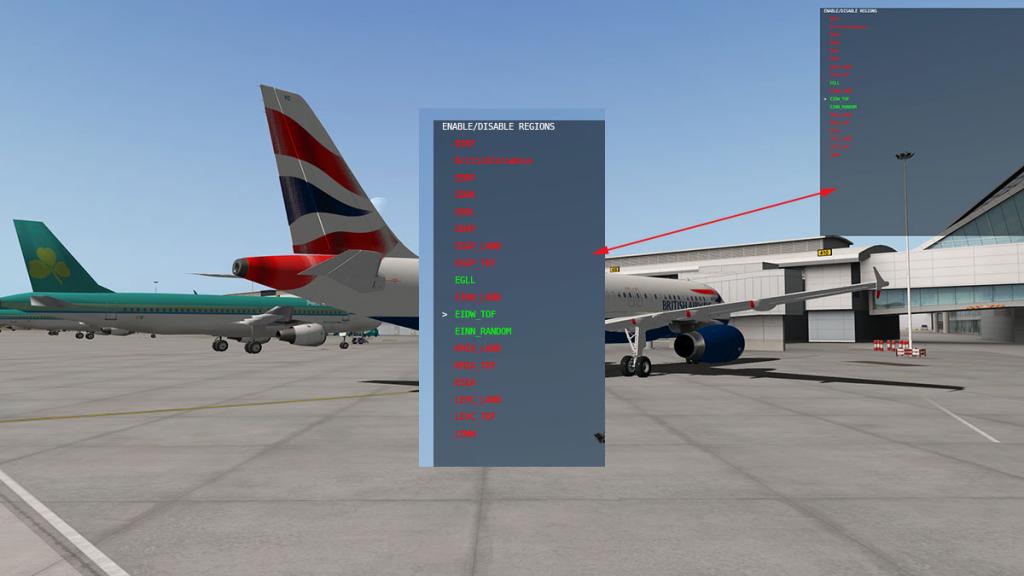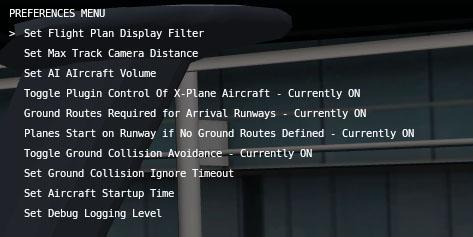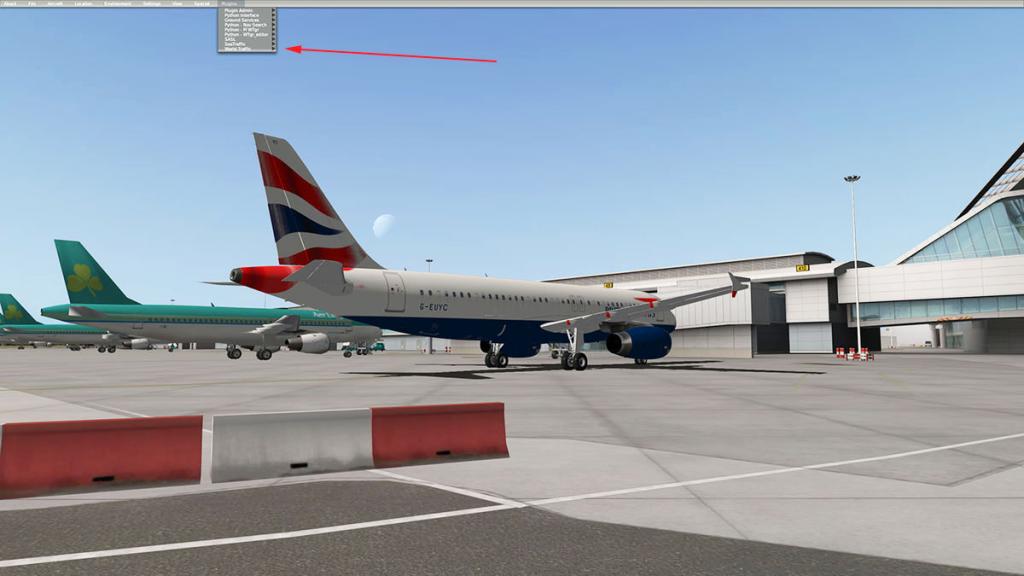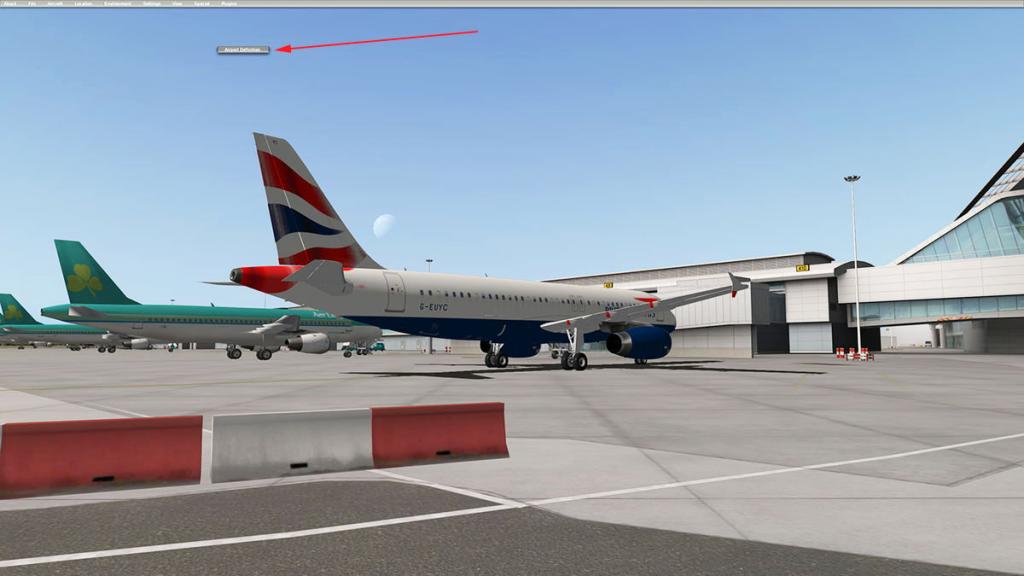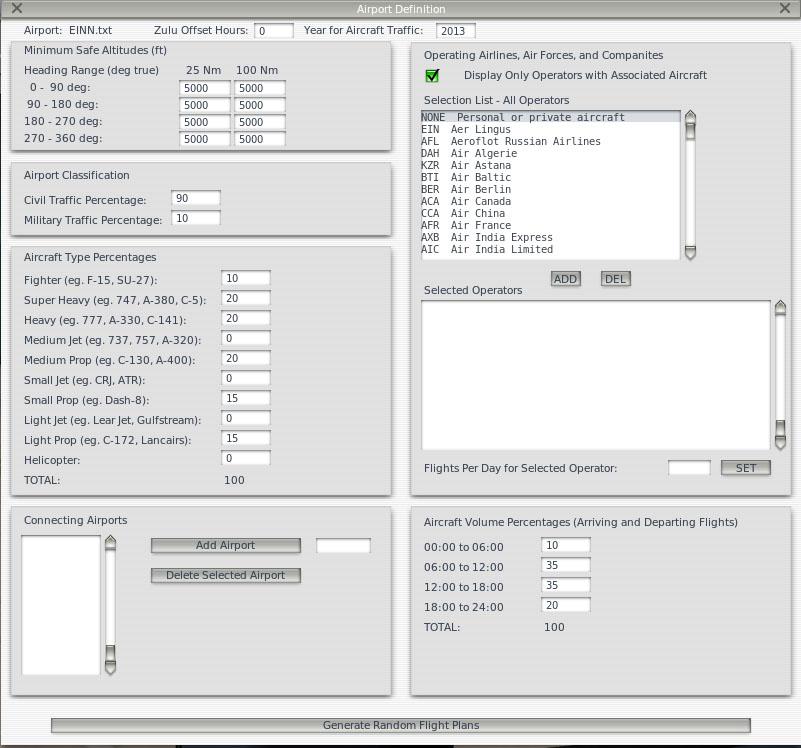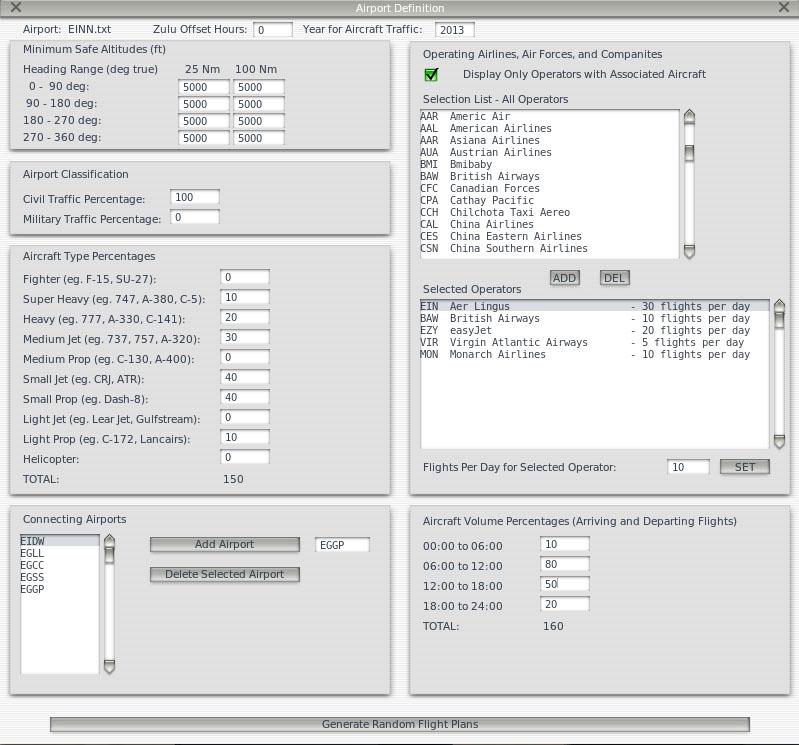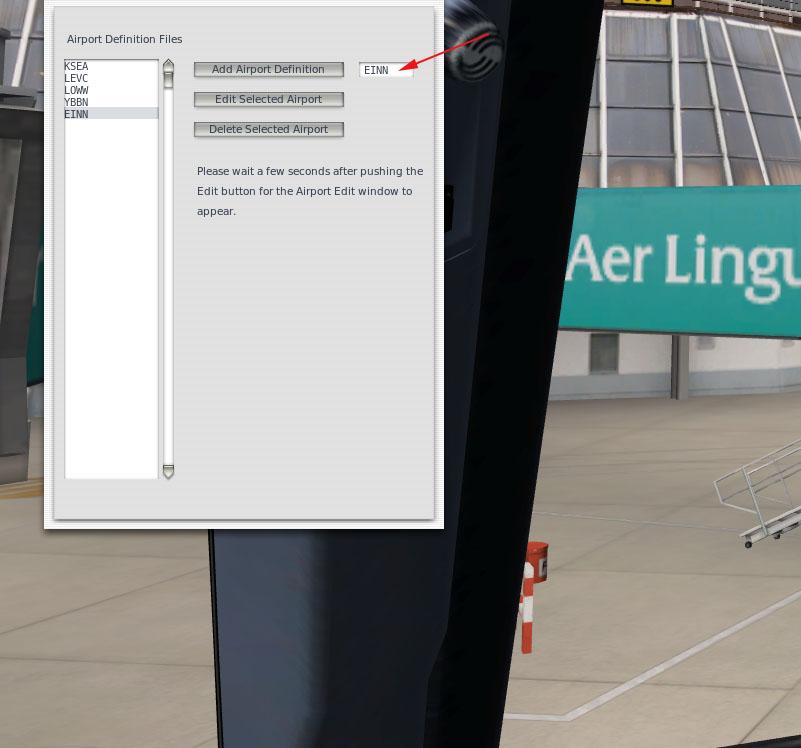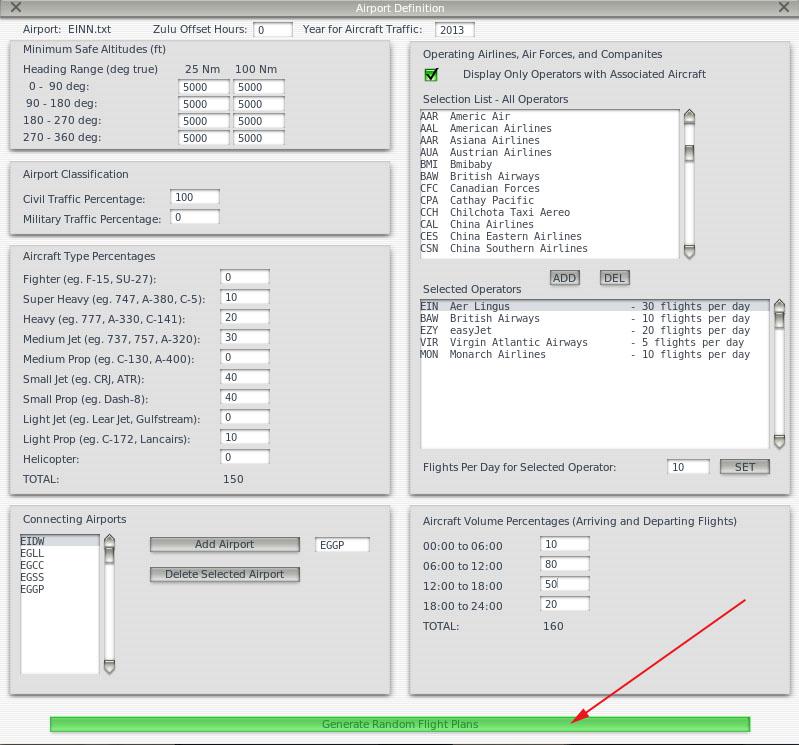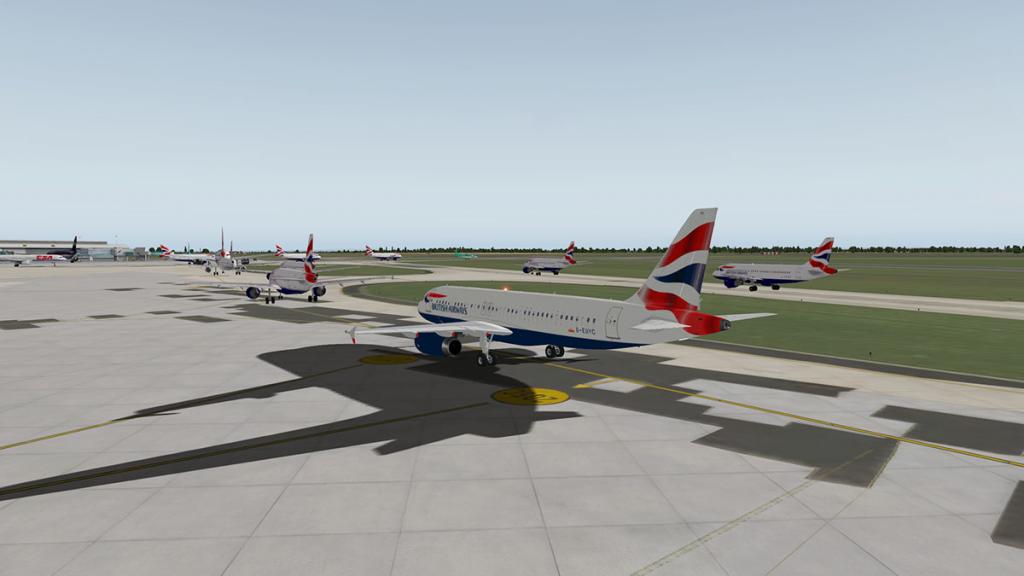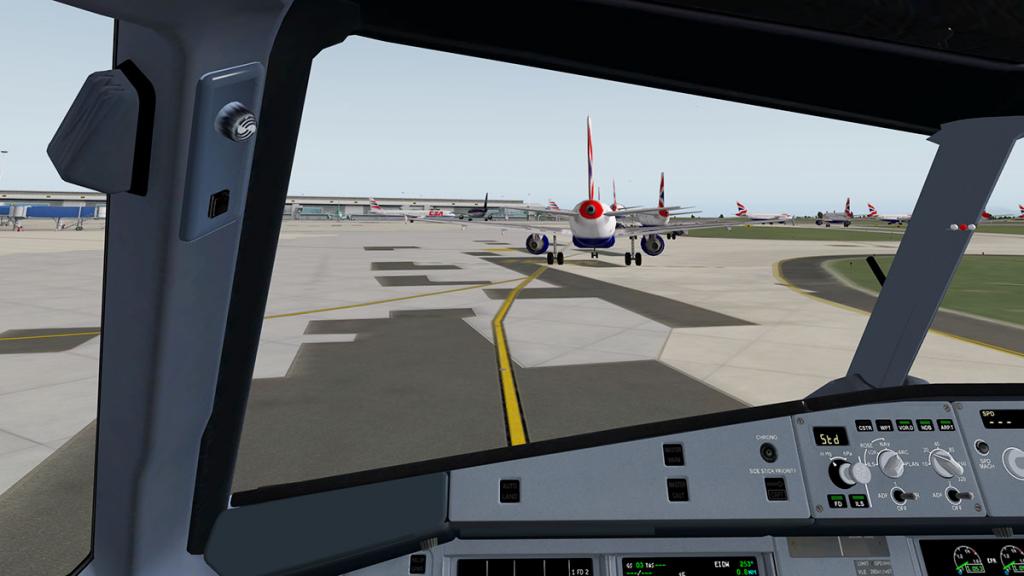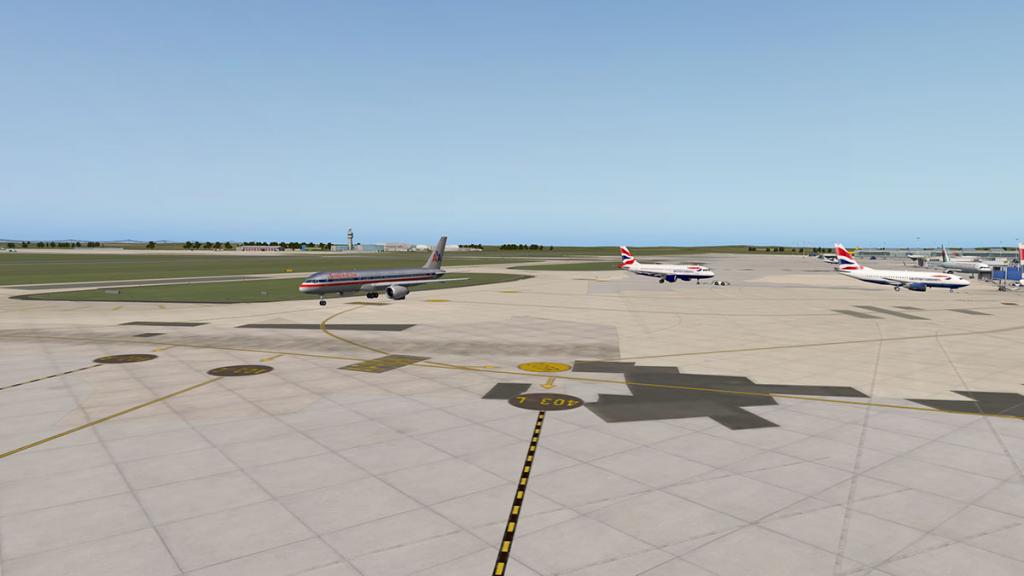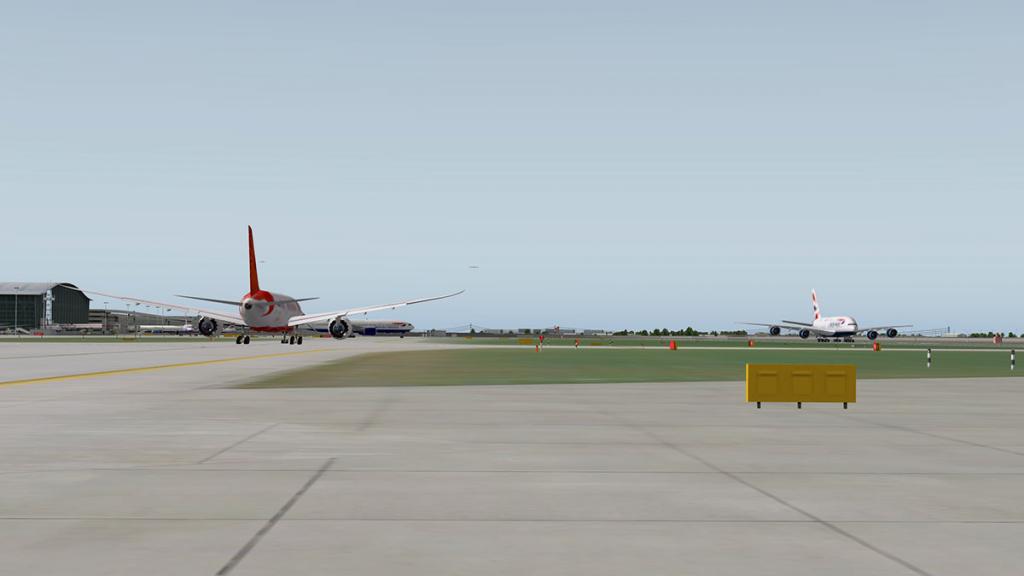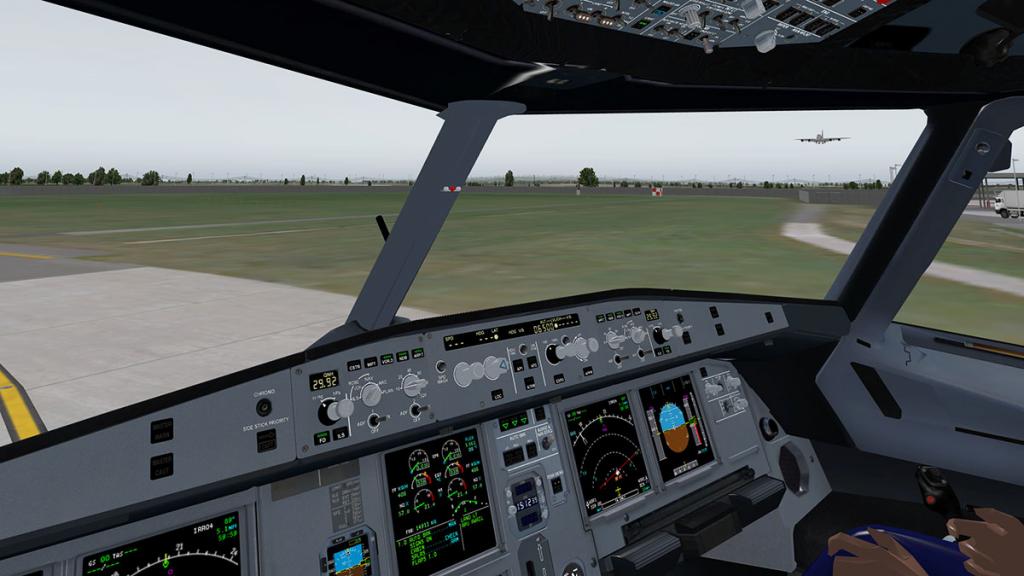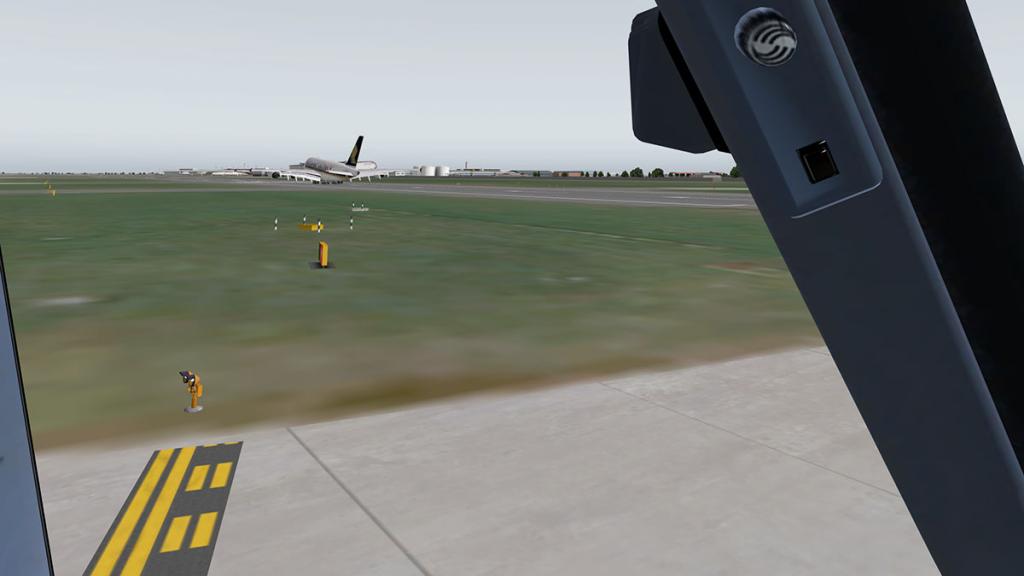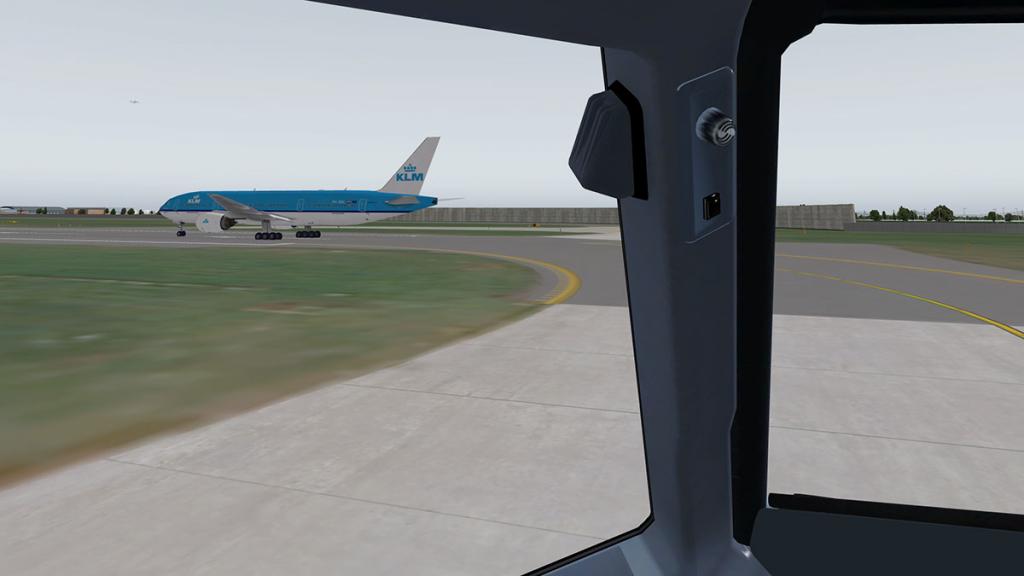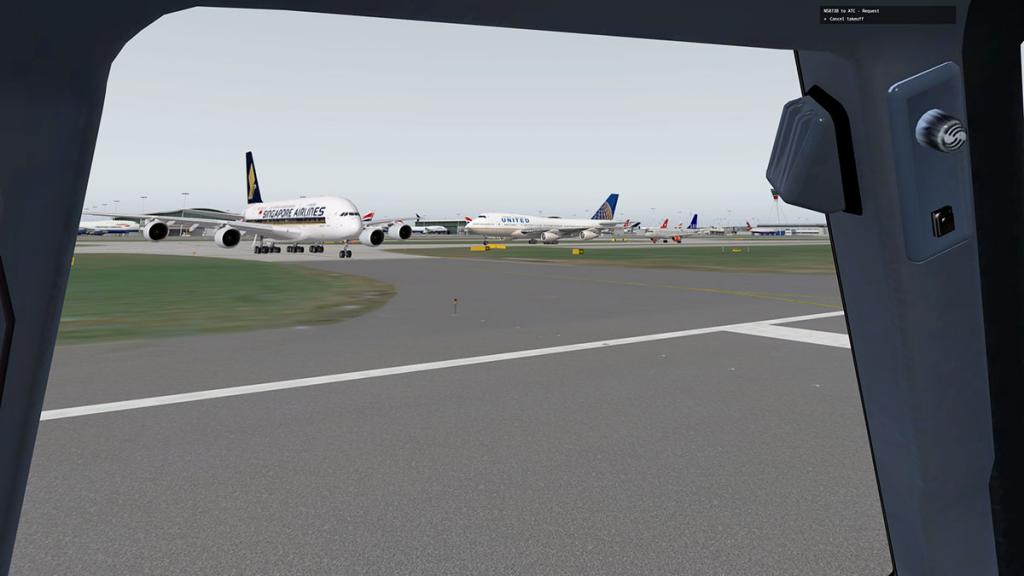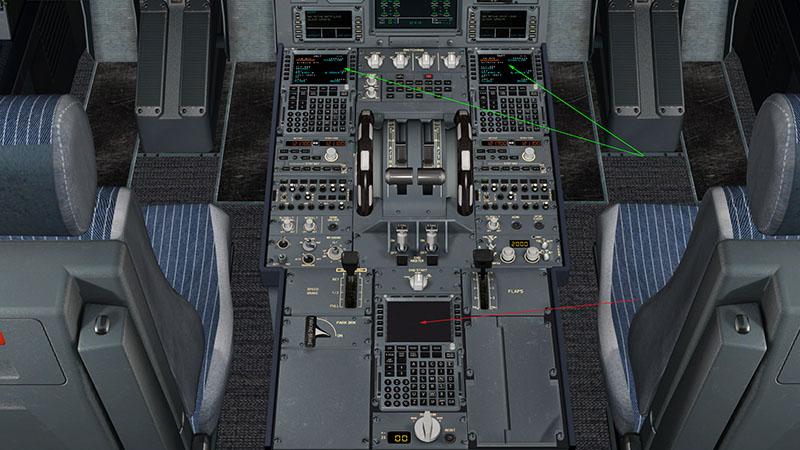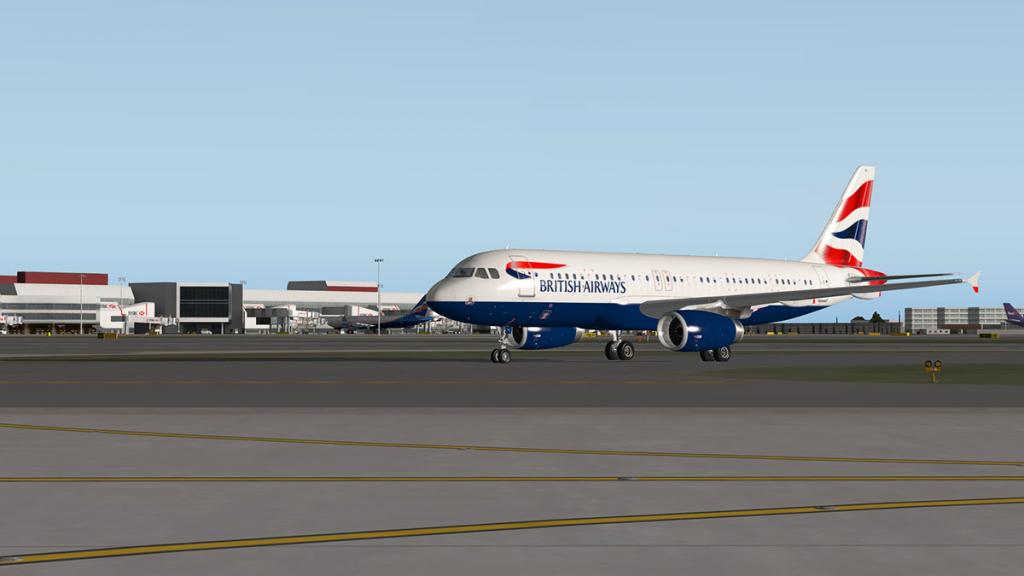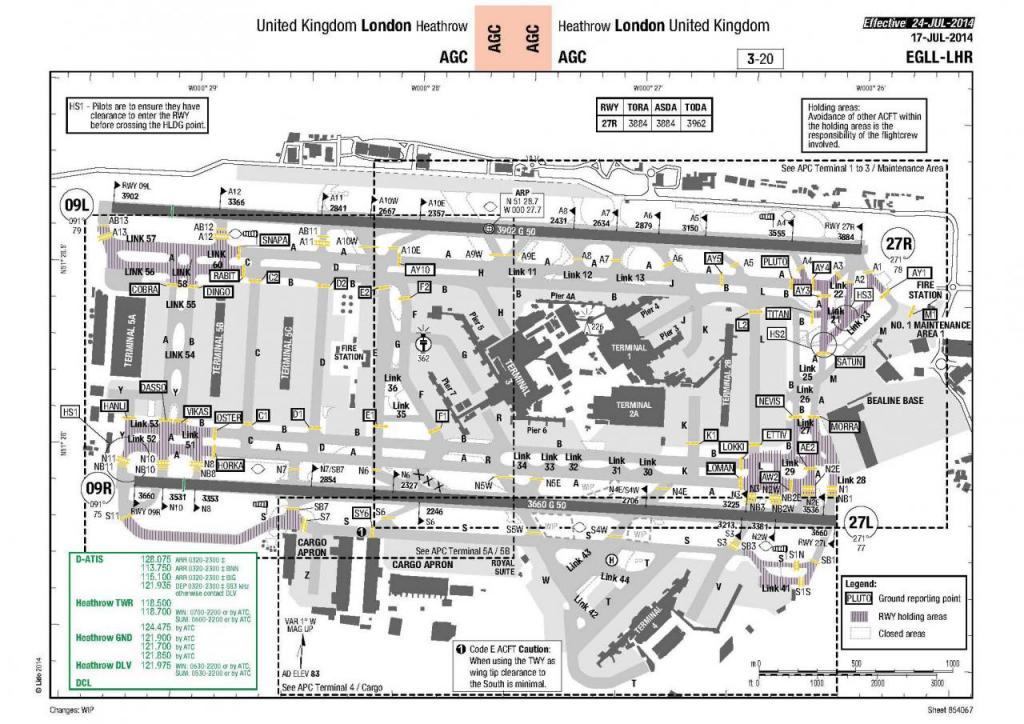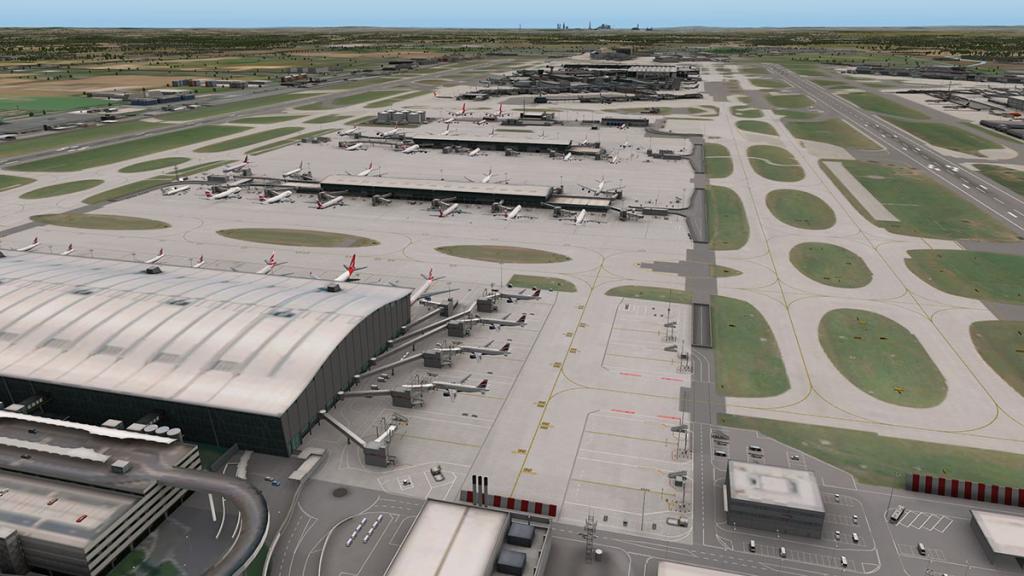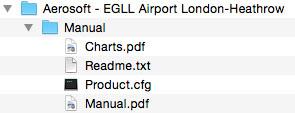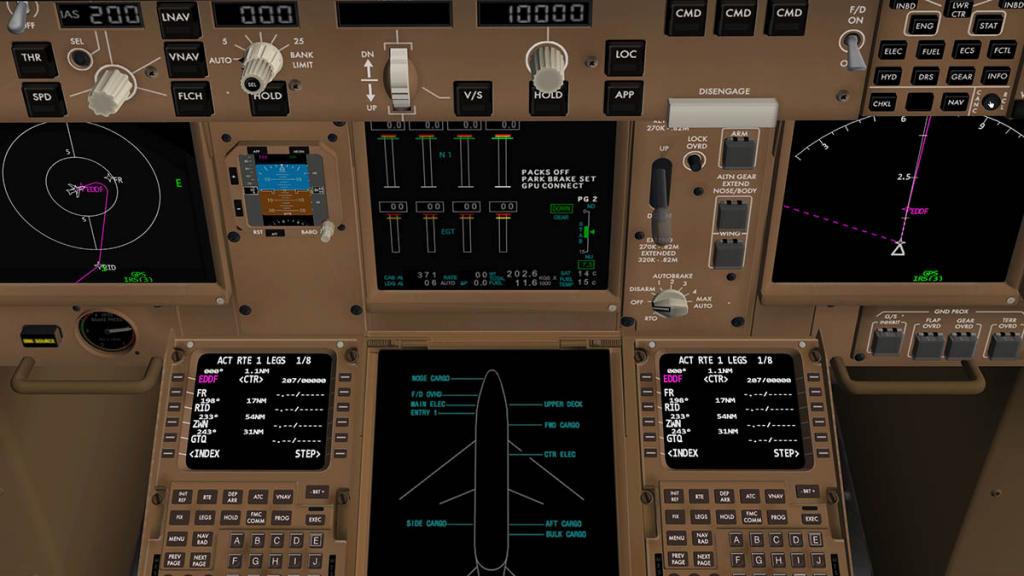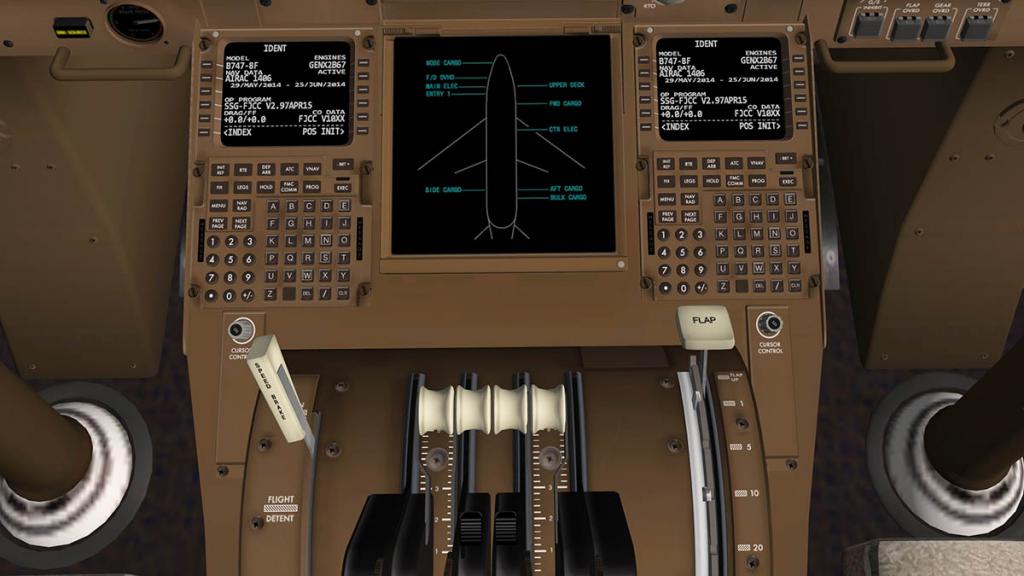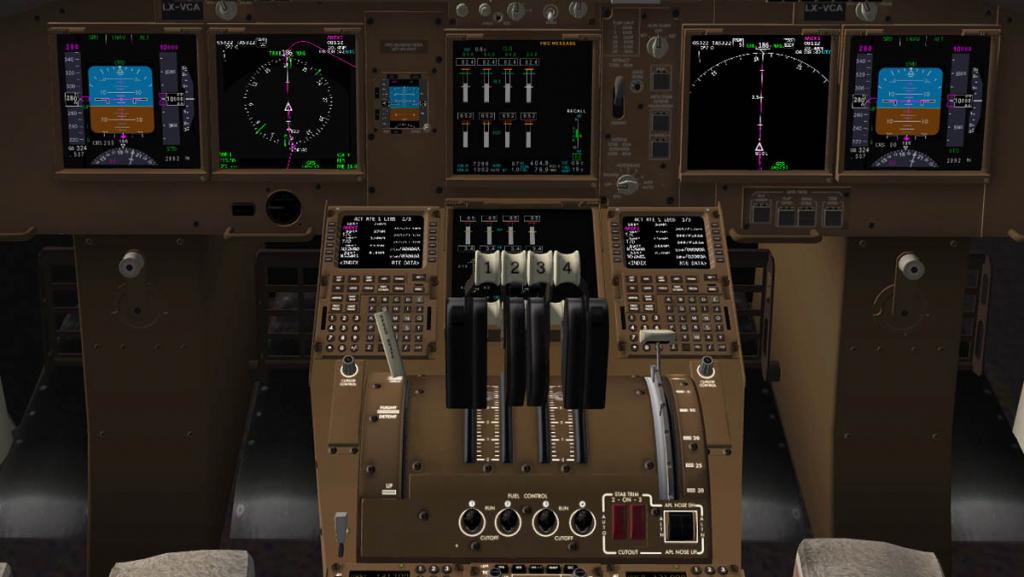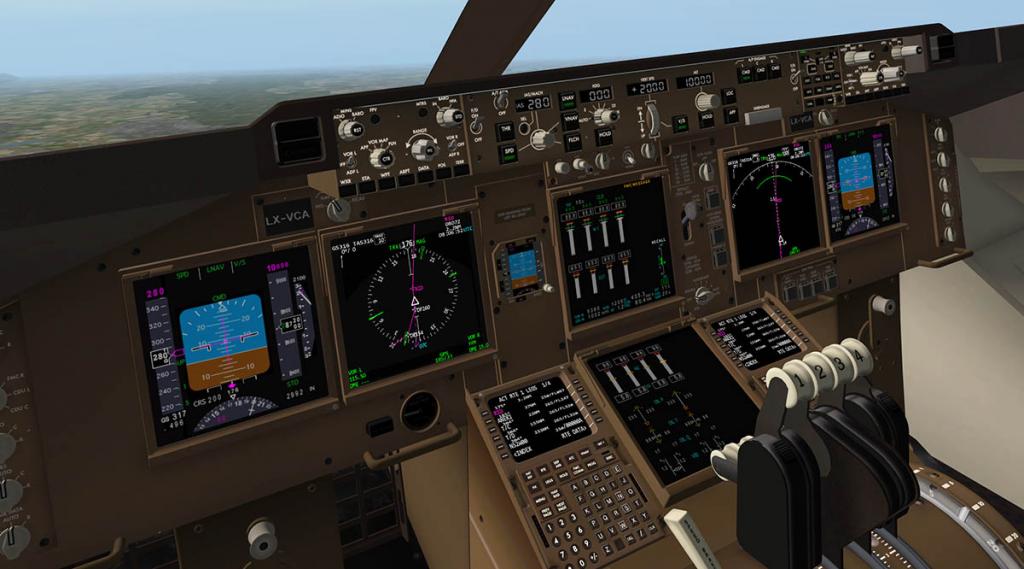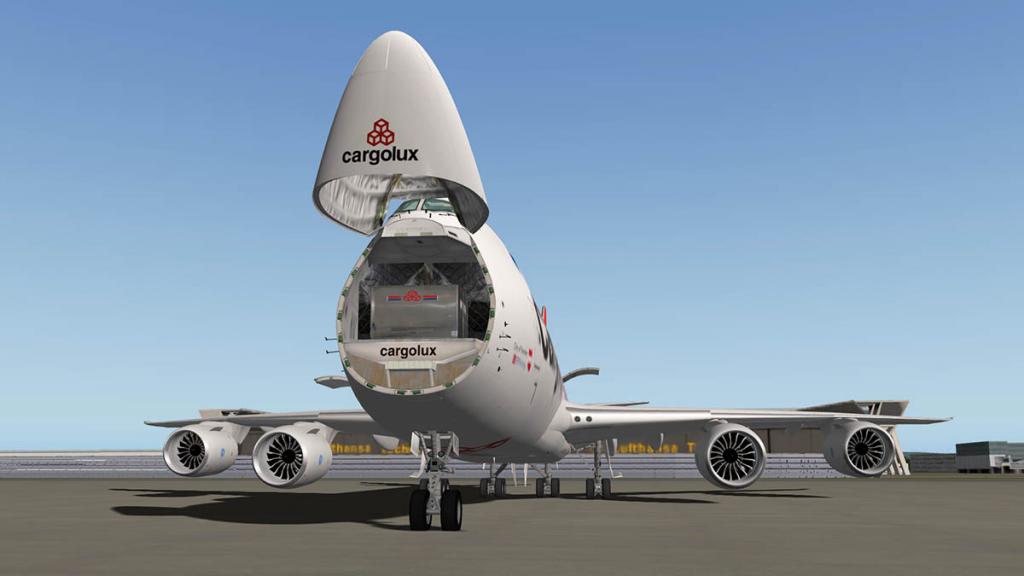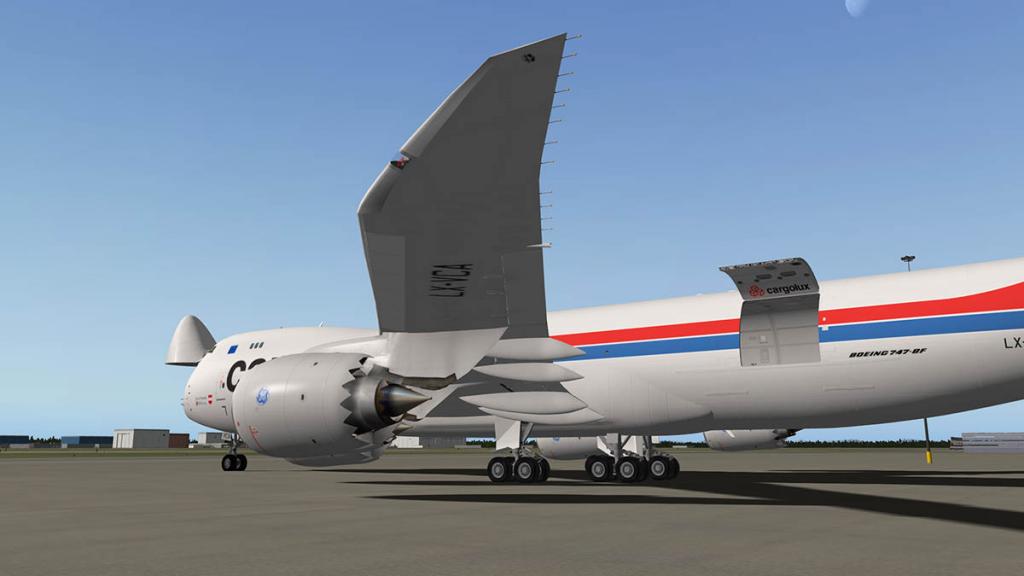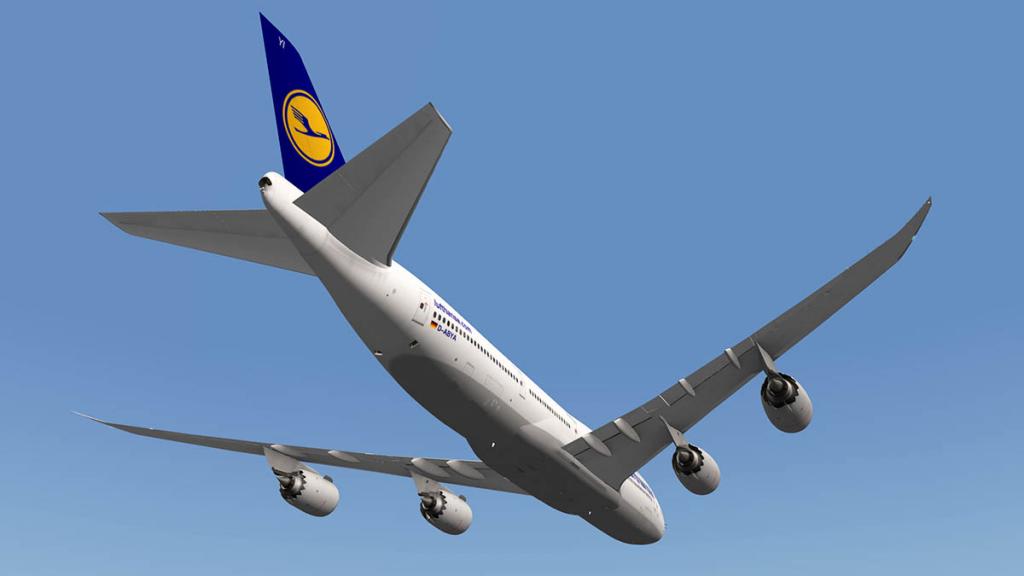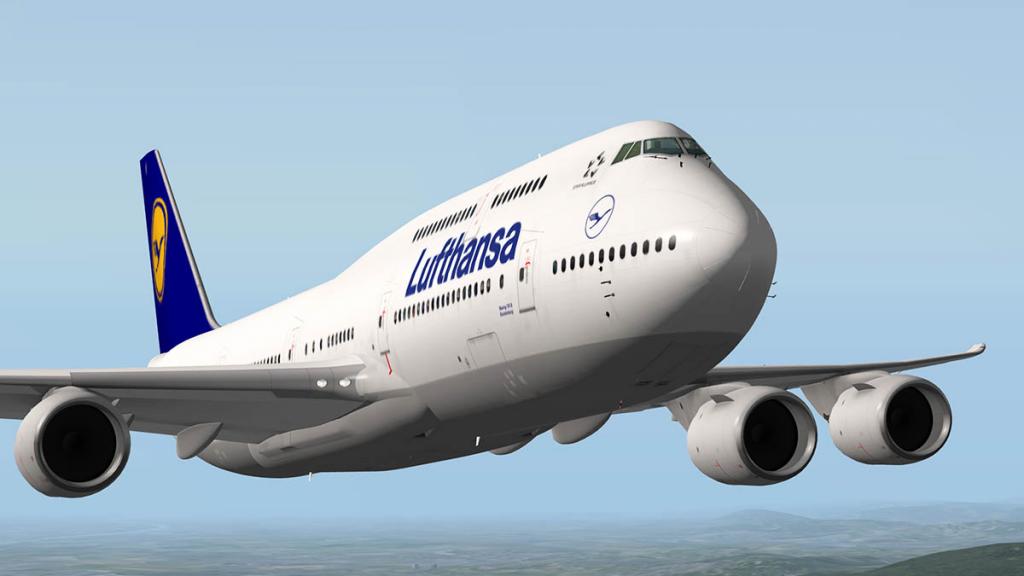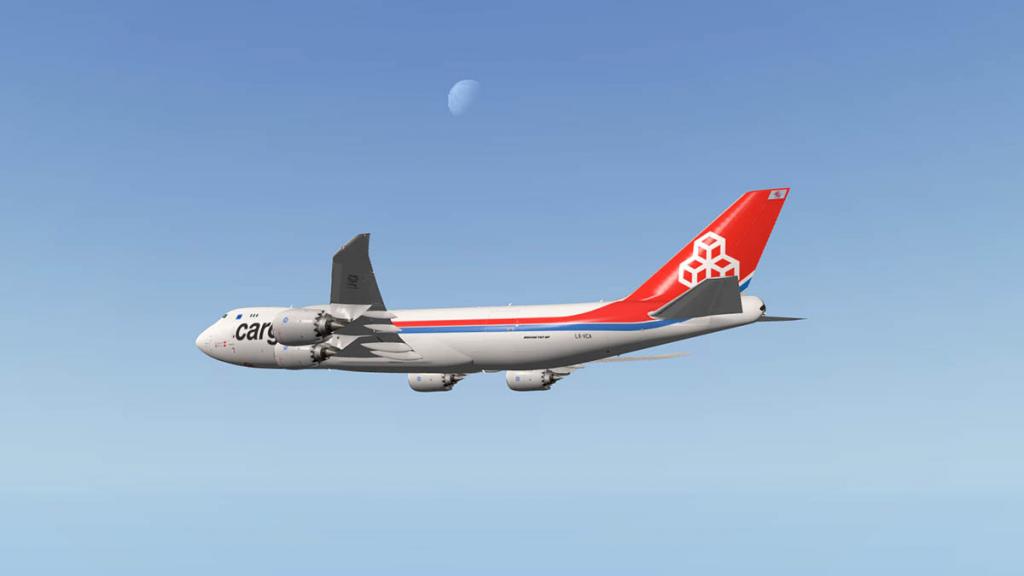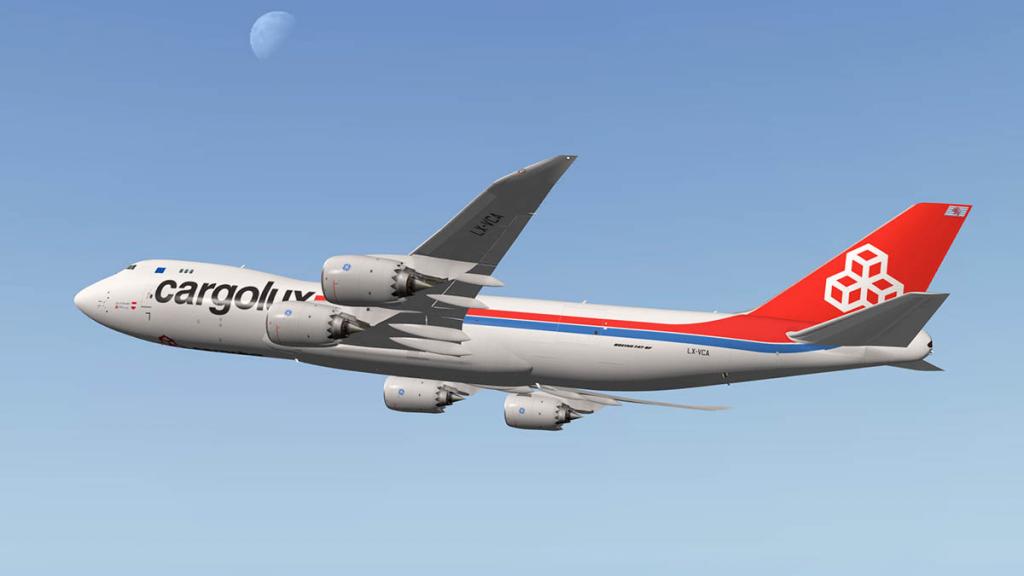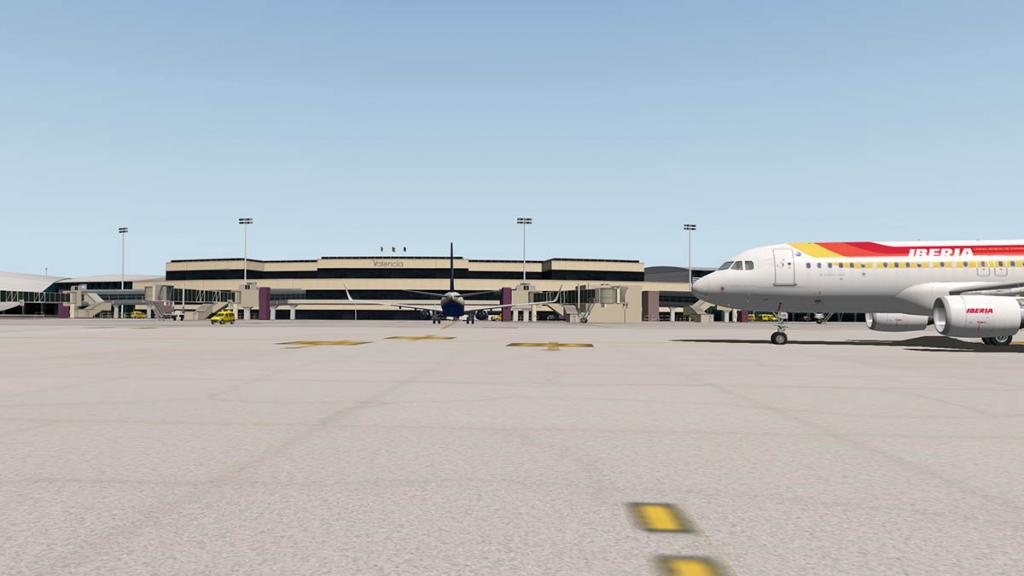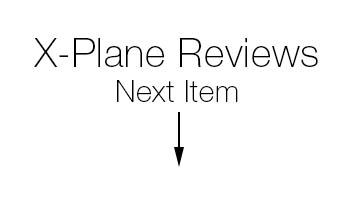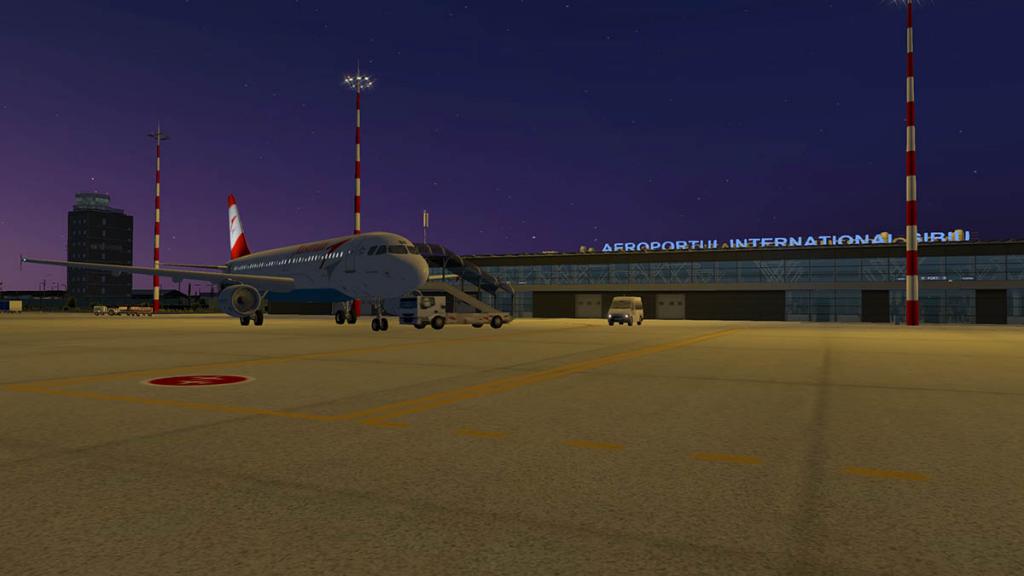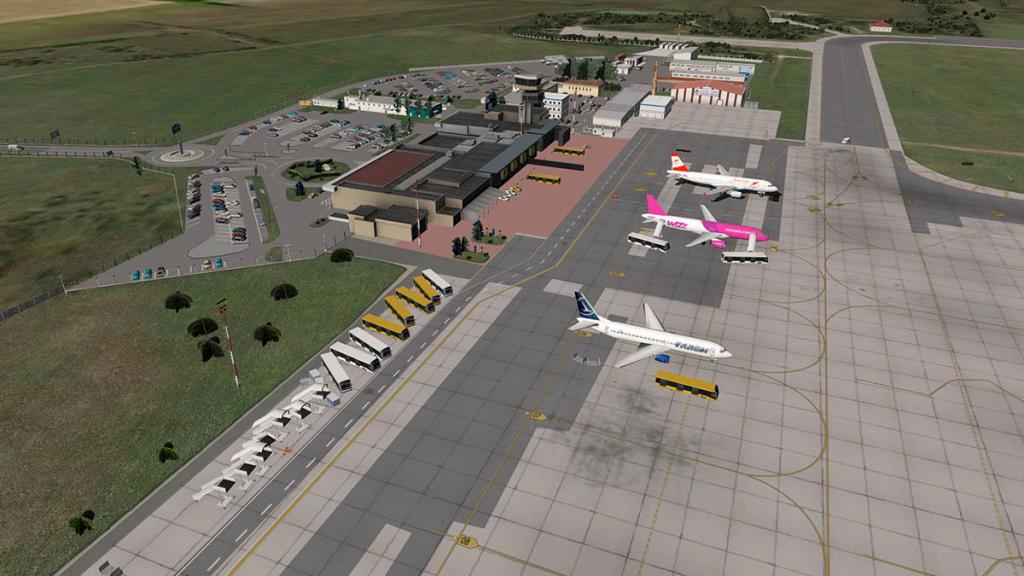-
Posts
2731 -
Joined
-
Last visited
-
Days Won
354
Content Type
Profiles
Forums
Articles
Everything posted by Stephen
-
Thanks If you believe it or not it is that I don't stray too far from the basics... But some things can really enhance the simulator. X-Plane has made enormous strides over the last few years to make your flying world extremely realistic, but the one missing factor is the interactivity of other aircraft... WT does fill that huge hole. It gives you a whole new dimension to a working environment. SD
-
Hi Dionsol... WorldTraffic v2 is coming out soon as noted above, and X-Plane Reviews are doing a full comprehensive overview with the breakdown on how to create and manage WT files and routes. I doubt it would become a very simply system because what it has to do is very complicated. In saying that it is as simple as it could be, and once you do understand the basics it is quite easy to add to and create. ATC at this point is very basic, and just really covers taking off and the landing phases and you connect with the ATC via the menu and not the radio, note that v2 will have SID/STAR involvement and that will make it very interesting and powerful. Q3 is that the WT is completely autominous in the background to your flying (In a very clever way, actually) but you have to interact with the aircraft around you, as they are almost as real as you are... Q4, is yes all the main files are installed within the X-Plane main folder, yes they are all quite simple to store and save to, however you do need to have a bit of a admin system to make it controllable and understand in the fact the Random route generator will generate and (I mean a lot, of a lot) of flightplans you don't need or require. So you need a bit of a filtering system, I have found one that works and that will be in the overview report. SD
-
Aircraft Release : Cessna C177/RG Cardinal II by Alabeo Alabeo have released the Cessna Cardinal II and the aircraft comes in two variants. You have the standard fixed wheeled variant and the RG, which is the Retractable Gear variant. The Cessna 177 Cardinal is a light single-engined, high-wing general aviation aircraft that was intended to replace Cessna's 172 Skyhawk. First announced in 1967, it was produced from 1968 to 1978. One of the design goals of this 172 replacement was to allow the pilot an unobstructed view when making a turn. In the 172 the pilot sits under the wing and when the wing is lowered to begin a turn that wing blocks the pilot's view of where the turn will lead to. The engineers resolved this problem by placing the pilot forward of the wing's leading edge, but that led to a too-far-forward center of gravity. This problem was partially counteracted by the decision to use the significantly lighter Lycoming O-320 four-cylinder engine in place of the six-cylinder O-300 Continental used on the 172. The forward CG situation still existed even with the lighter engine, so a stabilator was chosen, to provide sufficient elevator control authority at low airspeeds. The 177 design was intended to be a replacement for the 172, which was to be discontinued after introduction of the new aircraft. The new design was originally to be called the 172J (to follow the 1968 model 172I). However, as the time came to make the transition, there was considerable resistance to the replacement of the 172 from the company's Marketing Division. (wikipedia) Overall the C177 is a fairly basic aircraft, but Alabeo have provided a selection of very good options and features. 2 Cardinal II models: C177B (fixed gear) and C177RG (retractable gear) Default X-Plane 10 GNS530 HD Textures (416 pixel/meter) High quality 3D model and textures. Own sound system containing more than 20 sounds recorded from the real aircraft. Blank texture for creating your own designs. Accurately reproduced flight characteristics Simple user interface Realistic Systems simulations. 64-bit compatible - FPS-optimized model. Setup Menu - Easy livery selection. Easy B/RG model selection. Camera Presets. Easy Field of view slider, now with scroll wheel support. Easy Volume control including MUTE selection, also with scroll wheel support. Realistic Cockpit reflections SuperManipulator (Scroll, click, click-hold, click-drag vertically for fast changes, click-drag horizontally for fine tuning) Passenger shows/hides depending on weigh With the different variants you also get different coloured interiors... With a beige colour and dark green. Ground options are also well provided with great animations... Provided is: Model C177B fixed gear 5 hd liveries + blank texture Normal and Emergency procedures PDF Performance tables PDF Model C177RG retractable gear 3 hd liveries + blank texture Normal and Emergency procedures PDF Performance tables PDF The aircraft comes with the usual Alabeo quality and excellent flying characteristics.... Cessna C177/RG Cardinal II by Alabeo is now available from the New X-Plane.Org Store here : C177/RG Cardinal II and is priced at only US$28.95 Requirements Windows XP-Vista-7-8 (or higher) or MAC OS 10.6 (or higher) or Linux X-Plane 10.30 (or higher) 4GB RAM - 1GB Video card 335MB available hard disk space Release by Stephen Dutton X-Plane Reviews - 8th June 2015 Copyright©2015: X-Plane Reviews
-

Aircraft Review : DHC-2 Beaver by SoulMade Simulations
Stephen replied to Stephen's topic in Classic Aircraft Reviews
Fixed Thanks... SD -
Aircraft Review : DHC-2 Beaver by SoulMade Simulations Different aspects of areas around the world need specialised aircraft to perform in them. And in rugged remote terrain a simple aircraft can be the only connection between you and the rest of the world. Enter the DHC-2 Beaver which is single-engined, high-wing, propeller-driven, STOL aircraft developed by de Havilland Canada in 1946, and is known as a bush plane. There was 1,657 Beavers built between 1947–1967 and half are still flying and working hard. In fact you can buy a zero-time frame and just rebuild your aircraft and keep flying as long as you can afford new airframes. History de Havilland Canada hired Punch Dickins, a famous bush pilot, as Director of Sales who began an extensive program of collecting requests from other pilots, to understand what they needed in a new type of aircraft. Almost without variation, the pilots asked for tremendous extra power and STOL performance, in a design that could be easily fitted with wheels, skis or floats. When de Havilland engineers noted that this would result in poor cruise performance, one pilot replied "You only have to be faster than a dog sled". Other suggestions that seemingly sound mundane but important in the bush plane world; full-sized doors were installed on both sides of the aircraft so it could be easily loaded no matter which side of a dock it tied up on. The doors were also made wide enough to allow for a 45 Imperial gallon drum to be rolled directly up and into the aircraft. On September 17, 1946, de Havilland officially put together a design team consisting of Fred Buller, Dick Hiscocks, Jim Houston and W. Jakimiuk, led by Phil Garratt. The new aircraft was designed to be all-metal in using "steel from the engine to the firewall, heavy aluminum truss frames with panels and doors throughout the front seat area, lighter trusses toward the rear and all monocoque construction aft". At the time de Havilland Canada was still a British-owned company and there were plans to fit the evolving design with a British engine. This limited power, so the wing area was greatly increased in order to maintain STOL performance. When Pratt & Whitney Canada offered to supply war-surplus 450 hp (340 kW) Wasp Jr engines at a low price, the aircraft ended up with extra power as well as the original long wing. The result was unbeatable STOL performance for an aircraft of its size. it was decided that the new bush plane was much like the hard-working beaver and so as many aircraft at the time were named after animals, the aircraft was designated after this industrious animal. The first flight of the DHC-2 Beaver was in Downsview, Ontario by Second World War flying ace Russell Bannock on August 16, 1947. The first production aircraft was delivered to the Ontario Department of Lands and Forests, a design partner, in April 1948. The Beaver was designed for flight in rugged and remote areas of the world. Its short takeoff and landing capability made it ideal for areas normally only accessible by canoe or foot. Because it often flies to remote locations, often in cold climates, its oil reservoir filler is located in the cockpit and oil can be filled in flight. A series of upgrades to the basic design were incorporated. One major customer introduced the use of flat steps replacing the earlier tubes, a feature that is now almost universal. In 1987, the Canadian Engineering Centennial Board named the DHC-2 one of the top ten Canadian engineering achievements of the 20th century. The ownership of the certificates and tooling gives Viking Air of Victoria, Cana,da the exclusive right to manufacture new Beavers. Viking now sells a remanufactured and rebuilt DHC-2T Turbo Beaver upgraded with a Pratt & Whitney Canada PT6A-34 680 hp (507 kW) turboprop engine. With a maximum gross takeoff weight increased to 6,000 lb (2,700 kg) it can carry 2,450 lb (1,110 kg) of freight. However, Viking Turbo Beavers are only rebuilt from existing air frames, and are not new-builds, unlike Viking's own DHC-6 Series 400 Twin Otter, which is manufactured from a completely new airframe. (wikipeida) Performance - Maximum speed: 158 mph (255 km/h) - Cruise speed: 143 mph (230 km/h) - Range: 455 miles (732 km) - Service ceiling: 18,000 ft (5,486 m) - Rate of climb: 1,020 ft/min (5.2 m/s) DHC-2 Beaver by SoulMade Simulations Labours of love are known for creating aircraft of where certain aircraft would never exist. As so it is for Peter Krause for SoulMade Simulations, just building a DC-2 Beaver had to be more than just be a Beaver... It had to be the very best Beaver that could be created, and creating the "very best" can take time (in this case over two years) or even take over you life. Building any aircraft for X-Plane is a huge project, and many fall away after years of toiling away for nothing. But devotion and skill can see a project through and if you achieve your goals and do indeed create that "very best" design then both the developer and the community of online flying can both benefit... but the Beaver has another hurdle to climb over than just being an another aircraft to flying around in your simulator.... Bush Pilots. These guys are very different fliers than your standard heavy haulers like me. The aircraft has to perform to very different aspects of flying and do it well. Slow is not the word, but to get an aircraft that delivers the right feeling and flying characteristics is very important to their whole experience, I can't deliver a verdict on that, as these guys look at an aircraft in a totally different aspect than I would. As I can only evaluate the Beaver on its standards in X-Plane, overall only they can give the aircraft the final summation and approval. My DHC-2 Beaver was parked up at Stewart, British Columbia in Canada. Which is perfect Beaver country, that means it is remote, a rough airstrip in the middle of nowhere and the Beaver is really your only quick option of getting in or out of there. Beavers don't look new either but weathered, but they are easy to maintain and keep in a good flying condition as our is. SoulMade Simulations have certainly created an excellent Beaver, exceptional in fact. The standard today for X-Plane (aircraft) aircraft is very high, and the design and modeling is simply first rate. There are two main aircraft versions in "Regular" and "Amphibian", but the regular is in standard wheels and "Tundra" wheel variants, but there is no "Ski" version at this point. The Beaver is an all metal construction and the panel work and fit is very good with the sections of rivets perfectly aligned, certainly the engine cowling housing the 9 cylinder Pratt & Whitney radial engine is the highlight which is very hard to replicate really well in 3d. The wing is basically a very clean STOL high-lift wing with its entire trailing edge hinged, hydraulically operated flaps and slotted ailerons. The wing is in construction a one piece assembly. The tailplane (elevator) is beautifully done with the lovely metal airflow serrated moving panel and fences. There is no doubt the aircraft has a sturdy look about it, and it feels well built and strong. The DHC-2 is a taildragger so it sits nose high almost purposeful. On the lower left of your screen are three menu tabs, V-View, O-Options and A-Autopilot. First we will look at the O-Options panel and you have "Pre-Flight Elements" that provide chocks and tiedowns. You can choose your "Regular" or "Tundra" tyre options here as well. It is very clever in the way the tiedowns adjust for the different tyre sizes. You can open or close all the doors, via the menu or manually. Cockpit Step up on the right side wheel support and have a look inside (we had to turn the aircraft around into the light) Bush aircraft very basic, there are no frills or wood paneling in here, and the DHC-2 is an old classic aircraft by today's standards as well. Standout visually is the aircraft's panel, but also the yoke and its thick support column. The floors are all metal, detailing is excellent, with panels, pouches and labels all perfectly replicated. Looking along the aircraft's fuselage the windows are bubbled and have great reflections. The heart of this aircraft is its main instrument panel. A few years ago I did a review comment and noted that the future of X-Plane design was now becoming a completely different level in realism and quality, and my main image (or defense) of this future quality was this panel in its early conception. Now with the whole aircraft built around it, it has lost nothing of its quality, detail and excellent feel for a period of 50's aircraft design. Close up it is an astounding piece of reproduction with perfect curves, panels and even chrome fittings. And its colouring of a worn creme beige gives it authenticity and age. It is overwhelmingly beautiful if you like this sort of work and you have to admire the skill here in creating it at all. It is so real you just want to reach out and touch it, feel it and use it. The panel is extremely simple to look at and to use. The pilot gets all the flying instrument in the six standard flight instruments in the Artificial Horizon, Heading Indicator and the Airspeed, Altitude, Vertical Speed and RMI or automatic direction finder ADF, Course Deviation and Glideslope Indicator. Also there is a bank indicator, suction (vacuum) dial and clock. Above the (beautiful) three levers for Throttle, Propeller and Mixture are two engine dials for Manifold Pressure and RPM and with a mid- screen mounted compass. Mid-Panel are two gauges that cover (left) Oil Temperature Indicator, Oil Pressure Indicator and Fuel Pressure Indicator, (right) Fuels tanks Left - Middle - Right which are situated under the cabin floor. Two more gauges are set out below in Carburetor Inlet Temperature and Cylinder Head Temperature, both which are important on these piston aircraft. On the Co-Pilot's side you have a Bendix King KX 1708 COMM and NAV Radio with a ADF Receiver selector. KT96A Transponder and two dials that control the single Cabin Light and Instrument Lights. there is a separate panel for the six System Circuit Breakers and two dial cover the Voltmeter and Ammeter, there is also an Alternator Warning Light. On the Amphibious version there is a Landing Gear Control Handle sited here to upper or lower the wheels into the floats. They are hard to see (you can hide that bulky yoke by a switch in the upper panel) but on the lower switch panel on the lower left is all your lighting and electrical switches and Master Battery/Alternator switches. Fuel Tank Selector (red - three way), Magneto Switch and the STEC-50 Autopilot. The rudder pedals are beautifully carved and you can almost feel the metal plates and foot guides. Lower on the centre panel are three levers that cover the Carburetor Heat Control Handle , Fuel Wobble Pump Lever and the Fuel and Oil Emergency Shut-Off Lever. The Carburetor Heat Controls are very important in this aircraft. A park pull brake handle is on the left, but you have to admire the exquisite de Havilland aircraft production label. Great attention to detail. The important Oil filler cap and tube is angled out of the lower right panel. On the roof is an Outside Air Temperature Indicator gauge, Rudder Trim Control and Indicator and Elevator Trim Control and Indicator. You can't trim the here as SoulMade Solutions notes that it is very hard to operate them in a simulator, so you will have to set up keyboard commands to do so. Flap lever and pump lever is down on the floor by the pilot's seat. (You do a lot of pumping in this aircraft!) The seats (chairs) are again beautifully created with metal piping and leather covers. In the rear via the O-Options menu you have three rear layout choices in a full passenger cabin, a passenger/cargo mix or full cargo cabin. Cargo areas are covered with a net. Internal cabin detailing is excellent and authentic. There are six liveries. A basic grey as default, Green-White, K2, Brown-White, EPOCH Alaska Air and Alaska Forestry. Green-White and Alaska are noted as "ampib" and the rest as "tire", but I found they all worked on the tire version. The liveries are very well detailed and large at (4096x4096), but I found them a little dull and slightly too dark Amphibious version The Amphibious version is very well done, many developers put floats on as an afterthought and don't do them up to the standard of the main wheeled version... but that is not the case here. It is perfectly strutted and the floats are well shaped, the main and front support wheels drop down (and up) into the floats, and the rudders will actually turn the aircraft (with a little power) but don't drop right down into the water. There is a "Docking" tool found on the O-Options menu that allows you to moor the aircraft and once activated you can use the yaw, pitch and roll axis to move the aircraft around. My first try was a bit of a disaster... but you have to engage at under 5knts (or better still not really moving at all) or it doesn't engage. In my defense I didn't have the manual at the time to understand how it works, it does... and it is a great feature. The Environment option "Wave Limit" on the O-Options menu (Amphib) gives you option control about the maximum wave height to the user. If selected, the maximum wave height is 0.3 ft. and saves you going and adjusting it in the X-Plane Environment menu. Flying the Beaver The best way to explain the Beaver is to say it can be a little temperamental, not in a faulty bad design way but in a behavioural way, it is an old temperamental aircraft and you have to be aware of that aspect, certainly when trying to start the thing If from cold. Turn on all the electrics by their (Main) power switches and magneto switch to on. The top levers have to be set to Mixture - Full Rich and Propeller - High Pitch. If very cold you can use the O menu option "Engine Pre-Heat" to heat up the cylinders as noted the "Temp Cº" gauge, or check if the 9 cylinders are warm enough. Then you need to pump the Wobble Pump Lever to build fuel pressure to around 5psi. Then you have to prime the engine by pulling on the small pump handle down on the left of the pilot's seat, 4 pumps (or strokes) above 0º degrees or 8 if colder. then push up the starter/boost coil switches... The engine will crank, but you will need to up the throttle a little till the engine fires, if not you have to start again and repump and reprime the carb's. If the engine catches then adjust the throttle to get it running smoother and once it is clean running then you can reduce the throttle to idle and the red oil pressure light goes out, So I left it a little on the throttle till some heat came into the gauges and then pulled it back to idle. Easy, with practise yes... but it can have you priming and pumping a few times if you don't get it right. You certainly know it you are running or not because the noise is deafening, and the aircraft is slightly shaking, best of all the throttle lever is vibrating to the noise. GREAT, YES.... LOVE IT, BUT IT IS NOISY, VERY VERY NOISY. Sounds are recorded from a real DHC-2 and run in the DreamEngine with Sonic Solutions and SoulMade Simulations tweeked for maximum effect, you can hear almost every piston firing (in idle), I have a Bose system so my house was vibrating even at idle, if you have some fine china then you better put it away! Wearing real headphone helps with the effect, but a few hours of this and your family will have your skin for breakfast... at least it is very authentic. YES IT IS VERY AUTHENTIC! Make sure the "Carb Heat" lever is set down to "Heat", I didn't on my first flight (missing manual again) and I found myself saying to myself "Ohhh I am going swimming", and I did. Taildraggers can be hard to taxi if you don't know how to turn them, I found the DC-2 easier to turn than taildraggers I have flown in the past, and even turning around at the end of the runway was actually quite easy and the view out is not as bad as you would think it would be. The flap indicator is directly ahead of you on the panel, It is not noted as degreesº of flap but as Climb/Cruise - Take-off - Landing - Full Flap. If you use the Take-off position you will find yourself with the STOL airborne almost as soon as the tail lifts off the ground. I found it better with less flap and you can have a better run down the runway and feel the aircraft into the air. The panel lighting is indirect lighting, but very good and adjustable by the big rotary dial on the Co-Pilot's panel. A lot of heart and soul has gone into making the DHC-2 Beaver as close to the real aircraft as possible and you can use the as noted 450 bhp at 2,300 rpm and about 320 bhp at 30-20 (30" manifold and 2,000rpm), and you feel that power as much as you possibly could on a computer. It rattles, it shakes, it bounces... and it flies. The Beaver more rattles through the air than flies in the air, but that is part of its charm. You usually turn around and give a thumbs up to the terrified passengers in the rear, but all is well. In fact all is very well as the aircraft is very nice to fly manually and it is very docile but given to feel the wind in small lifts or (I had 7knts headon) twitches. You feel very safe in strange terrifying slow way, but you can feel why pilots love the old bucket. It is very easy to go past the green zone 145knts and turns are very nicely handled as the wing is rock solid in the air. You have the STEC-50 Autopilot as a popup menu option and it is quite a simply really a heading and hold altitude gadget. Turn it on and select heading (HDG) by pressing the centre of the knob and you can change your heading via the knob on the panel heading Indicator, or you can press the centre knob and go into STB mode and use the knob to turn to a L - R bank. Climb or descend via yoke pitch and when at the correct height then just press ALT to hold it and the aircraft will trim itself automatically. It has APP, NAV and REV buttons but you can't use them. The view menu is very good, with a slight quirk. If you use the X-Plane views the pilot will stay put and you will be looking at the back of his head? So you have to use the on board V-View menu to make him disappear by putting yourself in the pilot's seat. If can move outside the aircraft this way if you don't want the pilot in the view. The views cover Internal and External in Pilot - Co-Pilot, rear passsenger left and right, main wing left and right, tail, belly and various instrument focus points and the roof trim and floor primer. Lighting You have a main adjustable cabin roof light, and two side mounted map lights. Overall for the aircraft's age the lighting is internally pretty good but the panel lighting is always very nice to look at. Outside there are two landing lights with one in each wing, nav lights and strobe lights with are noted as "Pulse" lights. The beacon sits up high on a small pedestal mid-aircraft just behind the main wing and looks great. The original outside lighting (textures) was not refined, but with the v2 update the problem has been fixed. The aircraft looks perfect now in low light and shadow areas. Ketchikan, Canada My terrified passengers were wanting to leave from Ketchikan International Airport, so it was a 8000ft feet flight from Stewart in Canada to PAKT and Alaska over the Coastal Mountains and guided by the only nav-aid out here an ADB (NICHOLS-ICK 266khz) There is a VOR (ANN) but the aircraft is not equipped for VOR2. The view was astounding with the tie-down straps flapping in the slipstream as sun grew higher and we slipped lower into Revillagigedo Channel and I almost way way slipped way to low... Coming down to 2000ft the engine sputtered and sputtered again... "Awww no I am going swimming again!" and so were my passengers and their luggage. I looked frantically at the Carb heat and it was on "High"? not that. Now I was starting to lose altitude and towards the cold water below "aaaggh" I was looking at everything and gave the engine a few clicks of the starter, a few pumps of fuel and still nothing but silence. Then my eye caught the fuel gauges! "ha" two tanks were filled to the brim but the left tank was empty... A twist of the red handle to right tank and a few pumps of the Wobble Pump and another click of the starter (okay I prayed... "please god, please") and the engine roared back into life, another turn to passengers with a two thumbs up and a big grin and I was flying again... cool, but those tanks empty quick as they don't empty together but only one at a time, note that... please. I lined up RWY29 and slowed to 80knts and 700ft. There is drag from the flaps but not much lift if you get the speed right, set in "Landing" and a slight headwind the aircraft is lifting with even this slight airflow, so you have to keep on top of the descent so the aircraft does keep losing altitude. Ketchikan - PAKT does have a strange runway to ramp layout as the runway sits almost out of sight and set higher than the ramp and its terminal buildings. Over the threshold and the speed was 75kts and you could control the descent with the throttle but the aircraft will flare to the point of being almost stationary, and you can just touch those wheels down exactly where you want them. you feel like the pilot you are, all rudder, stick and throttle... you can see why bush pilots love this machine, the Beaver is great to fly well. I twist (slowly) at the end of the runway and guide the aircraft slowly by the angled taxiway down to ramp, another twist around (that power up and flip the rudder) to bring the aircraft to parking position. In a few moments my passengers are hurrying to the terminal and finally escaping this crazy noisy aircraft and its grinning pilot. Summary SoulMade Simulations is the right name for a developer to create an aircraft like the DHC-2 Beaver, can a aircraft have a soul? If one can then this is the one closest to it... even on a computer. A lot of love has gone into this machine, but does that still mean it is any good? In this case it is almost brilliant, but note that is my view and not of the pilots who will really have the final verdict on this DHC-2... the bushys. There is almost real failures and a realistic startup and operations that mimic the aircrafts classic period of aircraft, In other words you have to really kind to the aircraft. Design wise and that instrument panel is simply sublime, it is the perfection in a reproduction of a classic piece of aircraft. The menus and features are very good as well, on both variants with the tyre (normal and tundra) variant and the float variant. different cabin arrangements are well done as well, but a bit of cargo would be nice. Negatives are few, but the liveries are a bit dullish with no sparkle, they are good, but flat, V2 saw the update of outside textures at night so that issue has been resolved. The trim knobs can't be adjusted by hand and only from the keyboard. The yoke can be made to disappear but can't be swapped over to Co-Pilots side like you can in a real Beaver and VOR2 is missing. Sounds are excellent and at full volume your family will move out and leave you sitting there grinning with your headphones on. Over a long trip they can give you a slight headache, but so would a real DHC-2 give you a headache anyway? Startup and shutdown sounds are excellent and so is the stuttering out of fuel or with frozen carb's... is that realistic, oh yes, definitely realistic and so is your horror. The Beaver was introduced in 1948 and is known as the ultimate bush plane. And this is the ultimate X-Plane bush plane and is certainly the best aircraft in its category, lovingly created and will be loved and flown for years as it is a great quality aircraft and great investment if you love this sort of rugged design and bush flying. As a pilot you will absolutely love it, but your passengers will think you are totally mad, It is that sort of aircraft. _____________________________________________________________ The DHC-2 Beaver by SoulMade Simulations is available from the X-Plane.Org Store here : DHC-2 Beaver and is priced at only US$29.95 Special Features: Very realistic flight model. Flight tested by real former DHC-2 Beaver pilots. Realistic sound environment provided by DreamEngine, Sonic Solutions and SoulMade Simulations. Awesome and extremely accurate modeling of the DHC-2 Beaver cockpit, interior and exterior. Fully animated and realistic 3D cockpit. Every switch and control can be operated. Realistic cockpit instrument and cabin lighting for dusk/dawn and night flying activities. Detailed animations for the interior and exterior model. Many different pre-set views for the cockpit, cabin and exterior can be selected via a 2D pop-up menu. Options menu to easily change wheel configurations, cabin configurations, pre-flight parts and other things without re-loading the aircraft. 2D pop-up window for the STEC-50 autopilot to allow an easy operation when there is no time to look down in the cockpit. Features: SASL plug-in enhanced flight model and systems, where many systems have been coded to replicate the behavior of the real DHC-2 Beaver, like: Flight Model Engine and Engine Systems Electrical System Fuel and Oil System Carburetor Heating STEC-50 Autopilot SoulMade Simulations floatplane docking feature (first in X-Plane) to realistically tie down your aircraft and move it around on water naturally. STEC-50 Autopilot coded from scratch to re-plicate real behavior and functionality Plug-in enhanced ground model to improve ground handling in cross-wind conditions Realistic failures in case the engine is overly abused during operation. Designed by Pete @ Soul Made Simulations Support forum for the DHC-2 Requirements: Windows XP, MAC, Linux X-Plane 10.35+ . 32 and 64bit compatible Pentium 3 GHz+ 1Gb VRAM Recommended (Current version: 2.0 (Last updated June 15th 2015) Installation : Download is 261.60mb that is unzipped to 380.70mb to your X-Plane - "General Aviation" Folder. V2... Note that you download v2 in that it fixes the nightlighting "white" texture issues and the brakes which were 100% and not regular at 50% Documents : Pilot Notes / Reference Document, Normal and Emergency Procedures Limits, Operations and Performance Data, STEC-50 Operations Manual and a genuine POH is available for download. _____________________________________________________________ Review by Stephen Dutton 5th June 2015 Copyright©2015: X-Plane Reviews Review System Specifications: Computer System: - 2.66 Ghz Intel Core i5 iMac 27” - 9 Gb 1067 Mhz DDR3 - ATI Radeon HD 6970M 2048 mb - Seagate 512gb SSD Software: - Mac OS Yosemite 10.10.1 - X-Plane 10 Global ver 10.35 (final) Addons - Saitek x52 Pro system Joystick and Throttle - Bose - Soundlink Mini Scenery - CZST - Stewart by beti-x (X-Plane.OrgStore) - US$25.80 ( X-Plane Reviews Scenery Review: CZST - Stewart by beti-x ) - PAKT - Final Frontier v10 by XPlaneScenery (X-Plane.OrgStore) US$24.95 ( X-Plane Reviews Scenery Review: Final Frontier by Tom Curtis )
-

Aircraft Review : Airbus A330-243 by JARDesign
Stephen replied to Stephen's topic in Airliners Reviews
The lighting switches are spread all over the cockpit, from the overhead panel to the side position and on the pedestal. you have spots and main light is on the overhead as "Dome". You have to be in HDR to get the lighting working. -
Aircraft Release : Embraer 110 - Bandeirantes by Dreamfoil Creations Dreamfoil Creations has released the Embraer 110 - Bandeirantes or "Bandit" Twin-TurboProp 15-21 passenger aircraft. A total of 122 EMB 110 aircraft (all variants) remained in airline service worldwide with some 45 airlines. This is a high quality aircraft release with a high quality 3D model and textures and the detailing is exceptional. Internal Features include: Highly detailed and functional cockpit and cabin, cockpit and Instruments lights available with great lighting effects, full simulation of all switches and hydraulic simulation. Air Conditioner simulation and hotstart simulation for manual startup. Fully articulated and animated sun visors and Wx radar simulation. External Features Include: Caps for turbine inlet, outlet and pitot, GPU (Ground Power Unit) available, Prop Disc effects feature 3D holographic side view, which changes depending on prop settings, Windshield rain effects: rain drops move realistically in accordance with airspeed, get cleared by wipers, and repopulate after wipers are shut off. There is one white blank livery and two service liveries in Air New Zealand and United Express, with one FAB - Força Aérea Brasileira The aircraft comes with SmartMenu is accessible by clicking on right edge of panel, it will show a circular menu with easy access functions, including SmartLivery which is easy livery changing with image previews. DreamEngine sounds Over +50 sounds included Doppler Effect and Atmospheric Attenuation Realistic TurboProp sounds with real-time propeller dynamics Relative Sustain effect for startup and shutdown Engines: The aircraft is powered by two Pratt & Whitney PT6A-34 turboprop engines. The PT6A-34 is a reserve flow engine, free-turbine type, incorporating two independent turbines: one driving a four-stage compressor and another driving the propeller through a reduction gear box. The Bandeirantes is a great new addition to X-Plane, check it out right now... Embraer 110 - Bandeirantes by Dreamfoil Creations is now available from the New X-Plane.Org Store here : Embraer 110 - Bandeirantes and is priced at only US$29.95 Documents included: performance tables pilots operations handbook normal procedures emergency procedures Requirements Windows XP, MAC, Linux X-Plane 10.30+ . 32 and 64bit compatible Pentium 3 GHz+ 1Gb VRAM Recommended Release by Stephen Dutton X-Plane Reviews - 2nd June 2015 Copyright©2015: X-Plane Reviews
-
The MD-82 is not available, never was and then only as a beta. It survived, but it is a beta.... Save your money for the new MD-82 by Rotate. That will be the better MD-82 experience. SD
- 6 replies
-
- glitter gulch
- x-plane scenery
-
(and 1 more)
Tagged with:
-

Aircraft Review : Airbus A320 VC package by Peters Aircraft
Stephen replied to Stephen's topic in Airliners Reviews
Both are really good and I love both as well. Here is my take as It really depends on how you fly your aircraft, if you use the aircraft to replicate a current situation, by what I mean by that is I use my A320-232 to fly Jetstar routes around Australia to replicate those routes by airlines in Europe. Then if you read the reviews here is that you will see the aircraft popping up a lot... The NEO is newer, so there is only one livery (others will come when the aircraft is in service) so it is harder to use the NEO currently, flying wise they are identical with the same FBW (Fly by Wire) systems, but with the benefits of the NEO's extra range and economics. The price make a real difference here you are getting the same aircraft minus the liveries for a lower price with the NEO, and it will be the future in flying routes starting 4th quarter this year. If you do want a certain livery then maybe you could adopt one for the NEO as there is a paintkit available... so price wise the NEO is the way to go... SD -
Airport Review : LYBE - Belgrade “Nikola Tesla” Airport v1 by MB Sceneries X-Plane Reviews did a review on LYBE - Belgrade “Nikola Tesla” Airport in February this year. It was originally published by SkyHighSim in X-Plane as a conversion from their Belgrade X FS Scenery of the same name. Then just as SkyHighSim came they went again as they went out of the simulation scenery business, not only in X-Plane but their original FS markets as well. The scenery was picked up by MB Sceneries (Who did most of the X-Plane conversion anyway) and now LYBE - Belgrade “Nikola Tesla” Airport has been released (or relisted) as a version v1 updated scenery. X-Plane Reviews has updated here the original review to represent the current scenery and the changes between the two releases. (Googlemaps®) IATA: BEG – ICAO: LYBE 12/30 3,400m (11,155ft) Asphalt/concrete Elevation AMSL 102 m / 336 ft History Belgrade Nikola Tesla Airport - Aerodrom Beograd - Nikola Tesla) (IATA: BEG, ICAO: LYBE), is an international airport serving Belgrade, Serbia. The airport is situated 18 km (11 mi) west of Belgrade center in the municipality of Surčin, surrounded by Srem's fertile lowlands. The national flag carrier and largest airline of Serbia, Air Serbia (former Jat Airways), uses Belgrade Nikola Tesla as their hub, it is also one of the operating bases for low cost airline Wizz Air. Charter airline Aviogenex along with the air taxi services Air Pink, Jat Airways AVIO taxi and Prince Aviation also call the airport their home. Originally LYBE was officially known as the Belgrade International Airport (also known as Dojno polje Airport) was opened on 25 March 1927. From February 1928, aircraft owned by the first local airline Aeroput started taking off from the new airport. The airport's landing strip consisted of four grass runways between 1,100 and 2,900 m (3,609 and 9,514 ft) long. The project for reinforced concrete hangar was made by Serbian scientist Milutin Milanković, known more for his theory of climate change. A modern terminal building was built in 1931, and in 1936 poor visibility conditions landing equipment was installed. Constant traffic increases and the appearance of passenger jet planes demanded a significant larger airport. In the meantime there was a plan to build a residential and business district called Novi Beograd, where the airport was located. Thus, it was decided that a new international airport should be constructed near the village of Surčin. The last flight to depart from the old airport was at the beginning of 1964. The new location for the airport was on the Surčin plateau 12 km (7 mi) from Belgrade's city center. Building of the new airport started in April 1958 and lasted until 28 April 1962, when it was officially opened by President Josip Broz Tito. During that period a 3,000 m (9,843 ft) long runway was built with the parallel taxiway and concrete aprons for sixteen planes. The passenger terminal building occupied an area of 8,000 m² (2 acres). Cargo storage were also built, as well as a technical block with the air traffic control tower and other accompanying facilities. Modern navigational equipment was installed, earning the airport the highest international classification according to the International Civil Aviation Organization. Belgrade Nikola Tesla Airport has two terminals, with a reconstructed Terminal 2 opened since 14 May 2006. First Impressions Approaching LYBE from the south-east the airport is now harder to distinguish out from the flat plain area surrounding it. If you had bought LYBE or read the earlier review you would have seen the extremely bright different textures contrasting against the X-Plane default scenery It looked like the airport authorities have sprayed tons of Agent Orange/Dioxin to kill any foliage around the airport and totally succeeded in turning it into an almost ungainly strange yellow/green colour? That is all gone in v1 as the textures are now all compatible your surroundings and now very nicely blend in with their surroundings. Approaching RWY12 you fly over E-70 highway and the main airport buildings are on your right with the "Museum of Aviation" UFO shaped building standing out from the rest. There is only a single runway here in 12//30 and the textures are excellent as is the approach area. Taxiways and signage are excellent, but it is a long taxi ride to the terminal area on Taxiway A from landing on RWY12... but I really liked the taxiway textures and linage. The surrounding photo textures are also very good, but have no top side grass. There are both airbridges/jetways and hard stand areas on the ramps at LYBE. A1 - A10 is the main Terminal A and C1 - C6 is for the adjacent 90º angled Terminal C. B1 - B7 are the hardstand areas opposite Terminal A and I was given B2 for my KLM Fokker F27. Once parked I found the hard stand well equipped and ready for me with a set of stairs and bollards. All throughout the scenery the ramp equipment is excellent, prolific and extremely very well laid out, there is no wanting there in that case. internal taxiway and ramp lineage is also well laid out and easy to follow. LYBE - Belgrade Overview In the last few years, X-Plane scenery has become far better in creating that overall environment feeling. And here at LYBE you can see why it works so well. From a distance or close up on the approach or taxiing on the ground the airport boundaries are not clearly defined anymore and that is a great thing for realism. Certainly payware scenery should be good at this blending, but it is still gratifying when you see it has been done right. Terminals The two terminals are in a way buried inside the L shaped rows of gates with the long part of the L the "A" gates and the short part of the L (90º) for Terminal Two for the "C" gates. There is great detailing on the airbridges and on all the ramp areas. The airbridges don't move but parking is easy. On the ground the ramps are highly realistic and feel busy, but there are no animations like moving buses. In the terminal arrival areas you can see the different old and new terminals easily and the quality and design of all the terminal buildings and their extensions are excellent with the original winged Terminal One looking very well done... Without those earlier glaring textures the arrival areas and carparks are also far better. All the airport support buildings and offices are well represented... ... with the distinctive "Museum of Aviation" (formerly the Yugoslav Aeronautical Museum) is the spacecraft looking museum which is the significant building here standing out, and it is well done but not highly reflective like the real version. The museum owns over 200 aircraft previously operated by the Yugoslav Air Force, Serbian Air Force, and others, as well as aircraft previously flown by several civil airlines. It also houses the only known surviving example of the Fiat G.50. A regular early visitor to Belgrade Airport in the Sud-Aviation SE-210 Caravelle is displayed outside the museum. Far left of the terminal area is the brick cargo building and admin block, cargo ramp is also well stocked. There is a large General Aviation area parking in front of the building, but if you fill it up it restricts movement to the cargo bays? The control tower is front and center. And I like the old style design that is created here. Tower View has been fixed as well from the original version, you can see all the ramps and the runway, but there is an obstruction to the rear... But this is not an important viewpoint. Middle field is the Fire Station and GA parking, and large old impressive JAT maintenance hangars and engine test bay. Detailing is good in the old commercial area and with factory with a very dirty bad environmental smoking record and you have three old prop airliners with grass growing around their wheels. Road systems are excellent and have great flow around the airport... and into the airport to a point. Airport road approach has great signage and great flowing traffic on E-70 motorway. It makes a difference on how you set the amount of objects to be displayed. Set your "Number of Objects" too low and the ramps are virtually empty, reset at a higher setting and they fill out very nicely. You have the choice to have the "static" aircraft on or off (details in installation below) for the VATSIM and online flying users. Departure I left LYBE to return to LOWW Wien (Vienna) and changed aircraft to the A320 bus. From the cockpit LYBE looks good. A few vehicle animations and the latest X-Plane airport features of marshal's would work very well here. I'll be back at LYBE in three hours! Nightlighting Approach to RWY 12 at dusk gives you a very different feeling than when you left.... Runway lighting is simply first rate with a rail system working for you. After landing the taxiway lighting is one of the best I have seen yet, great coloured centerline lights to guide you and flashing warning and stop lights of were you can't go. Taxi into the terminal area and you have to be impressed. Ramp lighting is about perfect and highly realistic. From above the lighting is excellent with different airport areas illuminated perfectly. Off ramp areas and outer arrival building spaces are also really good and very well laid out. Overall the runway, taxiway and distance lighting is very good and close to perfect. Services A lot of choice in services to mostly all of Europe, Northern Scandinavia, Russian Block countries and as far as the middle east in Dubai and Abu-Dhabi Aegean Airlines - Athens Aegean Airlines operated by Olympic Air - Athens Aeroflot - Moscow-Sheremetyevo 2 Air Cairo - Hurghada Air Serbia - Abu Dhabi, Amsterdam, Athens, Banja Luka, Beirut, Berlin-Tegel, Brussels, Bucharest, Budapest, Copenhagen, Düsseldorf, Frankfurt, Istanbul-Atatürk, Larnaca, Ljubljana, London-Heathrow, Milan-Malpensa, Moscow-Sheremetyevo, Paris-Charles de Gaulle, Podgorica, Prague, Rome-Fiumicino, Sarajevo, Skopje, Sofia, Stockholm-Arlanda, Stuttgart, Tel Aviv-Ben Gurion, Thessaloniki, Tirana, Tivat, Vienna, Warsaw-Chopin, Zagreb, Zürich - Seasonal: Dubrovnik, Malta, Pula, Sochi, Split, Varna Alitalia - Rome-Fiumicino Austrian Airlines - Vienna Belavia - Budapest, Minsk-National Croatia Airlines - Seasonal: Split EasyJet Switzerland - Geneva Etihad Airways - Abu Dhabi flydubai - Dubai-International Germanwings - Seasonal: Stuttgart LOT Polish Airlines - Warsaw-Chopin Lufthansa - Frankfurt Lufthansa Regional operated by Lufthansa CityLine - Frankfurt, Munich Montenegro Airlines - Podgorica, Tivat Norwegian Air Shuttle - Oslo-Gardermoen - Seasonal: Stockholm-Arlanda Pegasus Airlines - Istanbul-Sabiha Gökçen Qatar Airways - Doha Swiss International Air Lines - Geneva, Zürich TAROM - Bucharest Tunisair - Enfidha, Tunis Turkish Airlines - Istanbul-Atatürk Vueling - Seasonal: Barcelona Wizz Air - Basel/Mulhouse, Beauvais, Dortmund, Eindhoven, Gothenburg-Landvetter, Larnaca, London-Luton, Malmö, Memmingen, Stockholm-Skavsta Cargo CityLine - Hungary Budapest Czech Airlines operated by Farnair Switzerland - Prague, Sofia EgyptAir Cargo - Cairo RAF-Avia - Budapest Silk Way West - Budapest, Kabul Solinair - Ljubljana, Sarajevo Swiftair - Cologne/Bonn Turkish Airlines Cargo - Istanbul-Atatürk, Madrid West Atlantic - Leipzig/Halle Routes 1. Tivat Airport - Air Serbia, Montenegro Airlines 2. Podgorica Podgorica Airport - Air Serbia, Montenegro Airlines 3. Vienna Schwechat Airport Air Serbia, Austrian Airlines 4. Moscow Sheremetyevo Airport - Aeroflot, Air Serbia 5. Istanbul Atatürk Airport and Sabiha Gökçen Airport - Air Serbia, Pegasus Airlines, Turkish Airlines 6. Zürich Zürich Airport - Air Serbia, Swiss International Airlines 7. Frankfurt Frankfurt Airport - Air Serbia, Lufthansa 8. Athens Athens International Airport - Aegean Airlines, Air Serbia 9. Paris Paris Charles de Gaulle Airport and Beauvais–Tillé Airport - Air Serbia, Wizz Air 10. Munich Franz Josef Strauss Airport and Memmingen Airport - Lufthansa Regional, Wizzair Airlines 1 Air Serbia - 2,347,923 2 Wizz Air - 415,590 3 Lufthansa - 283,867 4 Montenegro Airlines - 258,841 5 Swiss International Airlines - 203,518 Summary In many ways this v1 of LYBE - Belgrade is quite different than the original. Certainly the majority of the basic converted FS items are still exactly the same, but the sorting out of the smaller issues and the glaringly obvious horrible green-yellow toxic textures has made this scenery a far better place to fly to. Conversions from Flight Simulator/Prepar3D based scenery for X-Plane10 can be fraught with issues because from the start the scenery was not created for the style of X-Plane. X-Plane also has very different designs on features and if you think that a quick swap and place of your completed (and sometimes old) objects into the X-Plane scenario then you are going to get the very opposite of what you are aiming for in not having either a good conversion or worse something that looks totally horrible in X-Plane. The strange thing it is usually the very small things that gets missed in the conversion and are easily done in the first place. But get the conversion right and it will work very well in all simulators. There are a lot of FSX style items and objects in this scenery that stand out. The buildings and Terminals are well transferred, but there are smaller items like radar towers that are quite FS in their design and so you get the radar domes floating in mid-air from a distance? and small stuff like that. And there are no real X-Plane features like animated autogates, vehicles or people that are a standard now in good scenery. Overall the conversion is excellent and this is very good scenery and highly realistic from the air and on the ground. Lighting is very good and you will feel at home if you arrive on a late flight, ramp lighting, excellent runway lighting and the taxi lighting will give you a really good feeling of a place and an airport. Frame-rates are good, there is a very slight soft look and feel that comes with all FS converted scenery buildings, but that is a great tradeoff in frame-rate as the scenery is refined to get maximum of as a little impact as possible on your computer demands, certainly if you crank your settings very high in the texture resolution it will be noticed, but overall it is very good. This updated v1 scenery LYBE - Belgrade Airport scenery fixed mostly all the issues with the original release. And LYBE is even better now and even better value as well as it is at a lower price... and also available at the X-Plane.OrgStore rather than the download from SkyHighSim. So yes LYBE - Belgrade is a great addition to your collection and a great investment. LYBE - Belgrade “Nikola Tesla” Airport v1 by MB Sceneries is now available from the New X-Plane.Org Store here : LYBE - “Nikola Tesla” Belgrade Airport and is priced at only US$16.00 Note : MB Sceneries are working on a deal for all older original purchasers to be able to upgrade from the SkyHighSim product to the MB Sceneries v2 version, I will note here when the situation has been clarified. Installation : Download is 108.40mb that is unzipped to 568.40mb and is placed in your Custom Scenery folder. "Static" aircraft can be inserted or removed by changing over your "apt.dat" folder in the scenery, both "on" and "off" versions are supplied in the "MODS" folder. And full instructions are provided in the manual. If you want the ghastly FS textures then they are available in the "MODS" folder as "Vivid". Just replace the "Overlay" images in the MBS_Overlay folder. There is a set of standard images supplied if you want to go back to normal textures. Documentation : One Manual (That includes two charts) Features: Photoreal scenery High detailed dynamic and animated objects High detailed static aircraft Custom HDR lightning Taxiways, runway and apron with realistic rendered textures Update Review by Stephen Dutton 25th May 2015 Copyright©2015: X-Plane Reviews Review System Specifications: Computer System: - 2.66 Ghz Intel Core i5 iMac 27” - 9 Gb 1067 Mhz DDR3 - ATI Radeon HD 6970M 2048 mb - Seagate 512gb SSD Software: - Mac OS Yosemite 10.10.1 - X-Plane 10 Global ver 10.32 (final) Addons - Saitek x52 Pro system Joystick and Throttle - Bose - Soundlink Mini Aircraft - Airbus A320-214 CFM Engine by Peters Aircraft (X-Plane.OrgStore) US$54.90 - Fokker F27-600 by atgcab (X-Plane.Org) Free!
-

Aircraft Review : Airbus A330-243 by JARDesign
Stephen replied to Stephen's topic in Airliners Reviews
No signs from JARDesign, But I would buy it now as I have really no issues. My personal view is the way you set the aircraft up is to start the aircraft of what I call "clean". Which means starting only from the desktop, and don't move the aircraft around inside X-Plane via the local map or airport gate selection functions or start from a situation save. I found if I did this the SASL plugin would not restart right from the start of its programming and cleanly and that makes it a bit buggy. Otherwise the A332 works perfectly. -
Plugin Addon Viewpoint : World Traffic by Classic Jet Simulations v1.2.3 There is no doubt that the Aerosoft/Simwings EGLL- London Heathrow is great scenery and the highlight feature is the excellent airport vehicle animations, set out also is the default X-Plane Traffic that surrounds the airport. So you have a lot of movement and a great visual impact with these X-Plane features, but there is still a significant visual aspect missing... Aircraft. Or to be more precise aircraft movements around the airport. Certainly to bring Heathrow really alive you would need this visual point of view catered for and there is a solution, World Traffic by Classic Jet Simulations. The World Traffic (WT) plugin was released in early 2013, by Greg Hofer of Classic Jet Simulations and is a concept by Francesco Missarino of Aircraft3D. Now don't get it wrong in the fact that to create something as complex as an airport traffic solution is always going to be a hard task. This is reinforced by the current default A.I. aircraft as part as the X-Plane simulator. Does it work? no not really, it is actually a bit of a mess if you really want to be honest about it. But the real issue is that this is still very complex system to create and just getting something like this to actually work was always going to be difficult, and certainly with the early release versions were a bit full of say... growing pains. But the basic ideas behind the plugin were correct. In April 2015 Classic Jet Simulations released an update (actually two) in v1.2.3 (details are set out below) and version v2 is due any day, but the advantage now with World Traffic is that importantly it now has a lot of downloads available that can actually make it work, which were simply not available when the plugin system was released. A lot of accolades have to be laid at the feet of "Bluebell" and to a lesser point "letecxplm" for their excellent contribution to the plugin and without their work I doubt the World Traffic idea would now work as well as it does. Bluebell's conversions of v8 FS A.I. aircraft is the backbone of the system, and there are lots of routes to pick from. This is not a review or a tutorial, but I will do another post later to go deeper into the plugin and how to expand it yourself. Here we will just install it and get it up and running and see the benefits on what it currently gives you with the least amount of effort. The basic idea is to create a gate to gate flight in X-Plane, simple. Well no because every airport and its layouts are completely different, add in the factor that aircraft don't fly only from one single airport to another single airport. To get around this World Traffic is built into three different areas in - Ground Routes : Departures Routes (In the air) Ground Routes : Arrivals Ground Routes : Departures covers the route from the gate to the runway, Routes (In the air) covers the flight portion from which airport to which airport, and finally Ground Routes : Arrivals covers the last leg from the runway to the gate. In its simplicity it is very powerful and extremely flexible. If you remember this set up it makes it easier to install and use World Traffic. You can create the actual routes yourself, but there is an excellent random Route Generator built in to the plugin that will save you a lot of time and work. The awkward part of WT is the ground routes, as because every airport layout is different and every ground route aircraft take to the start of the runway is different (known as flows) then they can't be quickly randomly created, they have to all be done manually. (Chopinet is creating and auto one though called the AGRE - Windows only). A savior is a "Ground Routes Recorder 1.1" by Massimo68 (You need Python to run it) and this great tool allows you to taxi your aircraft and easily record your taxi route as you go from the gate to the runway, so creating these complex flow routes can be quite easy after you get the hang of the recorder. You can try out World Traffic by using a Demo version that covers the X-Plane Default area of KSEA - Seattle, but to run WT in its full capacity you need a key (after purchase) that you install within the plugin to make it work. World Traffic is a little complex to install, so we will cover that first. Download the WT Package and the folders have to be split up to two destinations in X-Plane. The WorldTraffic (Plugin) and WorldTrafficRTG or Random Traffic Generator (Plugin) are deposited in your X-Plane/Resources/Plugin folders. The "ClassicJetSimUtils: folder goes into your main X-Plane folder. Note the apt.dat file in the download folder... If you use the demo version of WT then you will find the tower view of KSEA is quite awful. so this file if you replace this apt.dat file with the current one in the X-Plane Demo Area (In your Custom Scenery folder) - Earth nav data folder it will give you a better view from the tower. Nice to do anyway. If you run X-Plane then absolutely nothing will happen! Yes the plugin is actually now running but it has nothing to work with... But first a little more of set up is required. To operate the plugin within X-Plane you need to set up a navigation set of keyboard key inputs. Key_Command_Menu – CTRL-W suggested Resynch – CTRL-R suggested Previous_Menu – this is optional if you don't like the default Backspace key ATC_Menu – CTRL-A suggested Track_Camera – F9 suggested Track_Camera_Toggle_Flight_Info – CTRL-F9 suggested Track_Camera_Move_In – V (you may use the mouse wheel as well for this) Track_Camera_Move_Out – C (you may use the mouse wheel as well for this) Track_Camera_Zoom_In – X suggested Track_Camera_Zoom_Out – Z suggested Track Camera Move In/Out – mouse wheel Track Camera View Lock – left mouse click My keyboard input is set out like this because I have different areas on my keyboard set out to do different functions... You assign your keys from the cjs list in the "custom cnmds from plugin" list at the top right of your Joystick & Equipment/Keys menu. Select and set up your keys to operate the plugin, and two inputs are important to note. One is the command_menu and command_menu_goto_previous. It is important that you have these two keys together and handy to operate, because they are your main navigation keys in the simulator, even note them or mark them so they stand out. I also note the Resynch Key and I recommend to not have it near any of the others were it can be mistaken and pressed... It will reset the WorldTraffic that is running, right back to the start and ruin all your hard work. I kept the ATC key separate as well and handy on the left of my keyboard (A). The heart of the plugin is the "ClassicJetSimUtils" folder in the main X-Plane folder. You could call this your resource folder, or folders. There are seven folders: AircraftObjects AircraftTypes Sounds GroundRoutes RouteFiles ICAO_Operators Airports The best way to start to use World Traffic is to download most of the all ready available resources on the X-Plane.Org: WorldTraffic Everything you need is here, but let us look at what you are downloading and what to look for? AircraftObjects These files are your aircraft in the plugin, and usually come in three files - 747_BA_One_World.png (day textures and livery) - 747_BA_One_World_LIT.png (night textures) - 747_BA_One_World.obj (Main Aircraft object). and you have to have at least one texture and one .obj file (with the same name) for the aircraft to work. Bluebell and other users have converted full sets (52) of aircraft and liveries to download on the WT pages on the X-Plane.Org and then you need to insert the aircraft files into this AircraftObjects folder. AircraftTypes The plugin tells the X-Plane Simulator on how to fly the aircraft correctly by the specifications noted in the "AircraftType.txt" files. It notes the type, weight, speed... And comes with every aircraft download. Name B772_NWS Key 004gwgklymbhyzy Type 2 Operator NWS NumEngines 2 EngineType 1 Length 63.7 Wingspan 64.8 BodyDiameter 6.2 Cd 0.02 This txt flie is deposited in the AircraftTypes folder and not with the texture and .Obj files which go in the above AircraftObjects folder. Sounds There are full sets of sounds to add to the plugin to make it sound realistic on the ground and in the air, you don't have to add to this folder. GroundRoutes These are your Ground Route Files that manoeuvre the aircraft around the flow of the airport layout from the gate to the runway and there are two separate areas (folders) in Arrival and Departure. (note - I have shortened the very long list of airports illustrated here) Airports are listed by their Airport ICAO code for Departures and Arrivals. But you can name these folder's routes anyway you want to to represent an area or an airport. And the GroundRoutes are defined by a txt file. There are GroundRoutes (75) available to download on the WT pages on the X-Plane.Org and you need to insert them into their respective "Arrival" and "Departure" Folders. RouteFiles Your routes are from runway to runway from ICAO Airport to ICAO Airport. The routes are the "in the air" segment of the the plugin, and note the departure and arrival airports and the waypoints the aircraft must follow for that route. In most cases it is a straight line from airport to airport, but in many cases the route can be tailored to be identical to a real world route. If "RANDOM" has added next to the Airport ICAO file (EINN_RANDOM), then the files were created by the in built WT Route Generator. The routes (folders) are noted by their Departure Airport or ICAO code. There are already completed World Traffic Route Plans (44) available to download on the WT pages on the X-Plane.Org and you need to insert them into this RouteFiles folder. But the WT Route Generator is a quicker way to create the plans you need to use. ICAO_Operators This is a list of airline operators and their ICAO code that is used by the plugin. They should be all listed in here so you don't need to add anything, unless it is a new airline or an airline's change of code, which is very rare but it does happen with mergers. BRW Bright Aviation Services CLF Bristol Flying Centre BHL Bristow Helicopters BHN Bristow Helicopters Nigeria BMH Bristow Masayu Helicopters BTZ Bristow U.S. LLC BZH Brit Air BAL Britannia Airways BAW British Airways XMS British Airways Santa SHT British Airways Shuttle BAN British Antarctic Survey BCL British Caribbean Airways BCR British Charter BGI British Gulf International BGK British Gulf International-Fez BIH British International Helicopters Airports This is a list of airports that are active in the plugin. It notes that particular airport's data for the plugin to use. And lists the airports connected to the airport, the airlines that fly from there (and their frequency) and the types of aircraft that use the field, it also notes the airports time zone in relation to -zulu. It is certainly worthwhile knowing how the files are stored within the folders in case you need to make changes. It is really quite easy once you understand the layout as it is reflected in the way the plugin works in the simulator. Running World Traffic Run X-Plane as you usually do, and to note that the World Traffic plugin is running and registered is a panel on the left lower of your screen. It will disappear once the plugin has set out the aircraft and routes. The more routes and aircraft you load then the longer it takes to startup, and that also included the usual X-Plane startup as well as there is a lot more to load into the simulator. Number one question will be how much does affect my X-Plane frame-Rate, well if you fill your routes to the brim with everything, then it is going to slow you down. But in reality if you keep your regions just to a set of areas that covers your flying areas (that is what it is there for) then the Frame-Rate hit is almost negligible at around only 3 to 4 frames, and considering the amount of movement and objects working on your screen, you could say you were very impressed on how much it does not interfere with the main simulator. There are actually two menus you work within WT. The main one is the "Key Command" Menu. This is accessed by the way you set up your "Key" assignment earlier with "command_menu". So to activate the menu then press your assigned key, which in my case is "O" the menu does slightly overide X-Plane so you lose a few movement functions. To move up and down the menu you use your UP and DOWN keys and RETURN to activate the menu option, to go backwards or turn the menu screen off, you use the other set Key "command_menu_goto_previous" or in my case "9" so between these two keys and your Return key it very easy to navigate the menus. Of which there are four: Display Flight Info Enable/Disable Regions Preferences Resync Display Flight Info (menu) This Menu selection will show you your current flight information. And there are three states - Red : means the plan is invalid or incomplete - Green : Shows the aircraft is currently parked - Blue : means the aircraft is active When the flight-plan is selected via your UP and DOWN keys, it show you the current route and the aircraft's current situation by the list: • Flight Plan Name – Name of the file including the sub-folder name which can be found in the ClassicJetSimUtils/WorldTraffic/RouteFiles folder. • Speed – Speed of the aircraft in indicated airspeed, true airspeed, ground speed, and Mach. • Altitude – Altitude of the aircraft in feet above sea level • Heading – Heading of the aircraft in degrees true. • Position – Position of the aircraft in latitude/longitude decimal coordinates. • Waypoint Info – The last waypoint in the waypoint list that the plane has passed. The waypoint list will either be the flight plan, the ground route file, or intermediate waypoint lists the plane is given for approach waypoints, takeoff waypoints, holding pattern waypoints, or overshoot pattern waypoints. • Waypoint Distance – The distance in Nm to the next waypoint. on the ground it also notes if the aircraft is - Parked - Pushback - Taxi to (runway) - Enroute. You can see the actual aircraft using the other assigned keys, Using the assigned "Track_Camera" Key WT will rotate through all the current active aircraft and you can - or + and have other camera movements. Or use your mouse to free move the aircraft around on its axis. Note - to get out of the rotating aircraft view you just select an X-Plane view... You don't press the go-back Key ("command_menu_goto_previous") The quality of the aircraft are extremely good, and fully working with rotating propellers (realistic ones), moving flaps, lights, airbrakes and opening engine reverser doors. You can follow the aircraft right through the route and note its position relative to the airport it has departed or arriving too. Regions (Menu) You can Enable or Disable Regions. This allows you to set up not only different areas or airports, but also different traffic patterns to certain airports (like departures or Arrivals). This can as noted control the amount of Frame-Rate usage, but why use areas that are not even close by, or the other side of the world? It is a waste of processing power for no gain. So this is a very useful tool. Green is an active region and Red is a not active region. Preferences (Menu) You can set different WT preferences by the "Preferences" selection. The most important one is the "Set Flightplan Display Filter" to declutter the Flight info display. There are three options: • Display All Loaded Flight Plans – All flight plans are displayed including ones for planes not yet loaded or for parked aircraft as well as for aircraft in flight. • Show Flight Plans for Active Aircraft – Flight plans are displayed only for aircraft moving in the air or on the ground. • Show Flight Plans for Active Aircraft Nearby – Flight plans are displayed only for aircraft moving in the air or on the ground that are near by. Resync (menu) You can resync or reset World Traffic to the current time. Like the Key input it will set right back at the start of your flight, but this is also a good option if you have to restart or redo a certain point in your simulation, just set the time to were you want to restart. But I can also cause those Moments!.... "awwww ffu, I have lost everything!". World Traffic Random Route Generator or WorldTrafficRTG There is a second menu option that is used to access the "Random Route Generator" This second menu is in the X-Plane Menu / Plugins Pressing these menu selections will bring up a panel to create random routes from one ICAO airport to another ICAO Airport. First you have to define (Add Airport Definition) which airport you want too depart from. And then you can Edit, or Delete your selections Pressing Edit will bring up the Route Generator panel which is a powerful tool. Across the top bar is the "zulu" offset amount of your airport and "Year for Air Traffic" is to set operating year ranges, which allows you to set eras like WWII planes set in the year 1942. Minimum Safe Altitudes (MSA) : allows you to set the minimum altitudes allowed at certain airports. Airport Classification : Is used to determine if an airport is a military airport or a civil airport or a mixture of both via their percentages. Aircraft Type Percentages : This is used to determine the how many specific aircraft types should be created by percentage i.e. Fighter, Heavy (A-330), and Medium Prop (A-400), this accesses the aircraft types required as stored in your "AircraftTypes" files Connecting Airports : This will set up the many routes listed and create random connecting routes out from this departure airport (EINN). Flights that are one-way are split evenly between either originating from the home airport and flying to the connecting airport, or originating from the connecting airport and flying back to the home airport. Operating Airlines, Air Forces, and Companies : This is to define the operators or Air Forces that you want to use on the randomly created routes, It allows you to set a geographical area of airlines or air forces that define that place... i.e South East Asia - WSSS (Singapore) can be SIA - Singapore Airlines, CPA - Cathay Pacific and THA - Thai Airlines and set the Flights Per Day you want to use with that operator. Aircraft Volume Percentages : Note: These values are local (X-Plane) time, not Zulu time. This allows you to set the percentage of traffic volume at the designated airport to certain peak or low periods. So if you require a busy morning and a quiet afternoon of arrivals and departures, then you can adjust that here. When you have completed the Route Generator, you then press "Generate Random Flight Plans" for the plugin to insert the new plans into the RouteFile folder and they are noted as - "EINN_RANDOM" or airport_random (files). As noted the RTG only creates the routes between the airports and not the ground routes, but if you select airports with ground routes that are completed and stored in the GroundRoutes folders then the aircraft will go gate to gate on the category of that certain type of aircraft. The new random flightplans however will not be listed on your "Flightplan Display" unless you do a "Resync" or restart X-Plane. As you will note WorldTraffic makes for a very powerful but very flexible route system that covers the airports and routes you fly to and from. World Traffic is even more versatile than this as it now has a basic ATC system built in as well and it can accept even Military aircraft, General Aviation, Helicopters and can do FlightTypes by both Civilian and Military Tactical flights. One point to note here though in tuning WT is the one thing that causes a lot of early confusion when you first use this plugin... When you start up the simulator (and the WT Plugin) there is a mad panic and rush for almost every aircraft to leave or arrive? This is at first a lot of fun and gives your airport a real live feel. But then once all the aircraft departed nothing happens for ages and it all get very boring. This is caused by the setting of -1 in the Route file as the "STARTTIME" or starting point of the route is set at the startup of the plugin. (this is caused by the Random selected routes) STARTTIME -1 ENDTIME You can fix this by changing the start time to be more realistic and even match real departure times at the airport. Say your current time is 10.30am, then open the route you want to fix in "RouteFiles" and change the -1 to a current time. or to the departure time you want. STARTTIME 10:37 ENDTIME In this case 10.37 and save the route (txt). Change another route to 10.39 and another to 10.42. this way you will create a more realistic timing system as aircraft leave and arrive over a period of time and not just at one point of time. There is nothing stopping you having two aircraft leave at the same time as they do in real aviation departures. This will change the whole way the plugin operates and the airport will be more realistic in its operation. This article is only to represent the set up of WorldTraffic... or to just get your airports buzzying with aircraft and animations. There are many other details to cover and X-Plane Reviews will cover that in another post soon as well as using the ATC, and show you how to get the very best from this powerful X-Plane addon. When running and certainly at a very large hub or airport like London Heathrow. World Traffic change the whole concept of an exciting working airport from the cockpit. It can make for a more realistic simulation (and more workload for the pilot) but totally creating a more immersion of a world we love to be in and those A380's are certainly big huge aircraft. You can download a World Traffic Demo version that covers the X-Plane Default area of KSEA - Seattle to see how it all works. _________________________________________ World Traffic by Classic Jet Simulations is now available from the New X-Plane.Org Store here : World Traffic and is priced at only US$24.95 To use World Traffic in its full capacity you need a key (after purchase) that will be emailed to you from (Classic Jet Simulations) to install within the plugin to make it work. Extensive Features include : General Features Now with Random traffic generation based on an airport definition file specifying traffic type, connecting airports, and traffic volume to allow you to quickly generate air traffic for your favorite areas. Sample flight plans and ground routes are provided for KSEA. These illustrate almost all of the functionality of the application and may be used as examples for your own flights. Several default aircraft are provided with many more to come. Users may create their own aircraft as well. Flight plans can be grouped into zones to enable/disable flights for a specific region or to enable/disable flights for a specific vintage of aircraft. You can organize the flight plan folders however you wish and enable or disable whatever regions you are interested in. Custom sound engine with directional, multi-track aircraft engine sounds with doppler shift. Simple ATC system to allow you to interact with the World Traffic application so that it is aware of your position and can vector you and and assign you arrival/departure runways. Flight information window allows you to quickly find active flights, flight information about that flight, and it lets you view that flight with the track camera. Collision avoidance features for ground traffic so aircraft hold for approaching and departing aircraft, aircraft will overshoot if they are too high or too fast or if there is a plane on the runway, and planes will enter holding patterns if the airport is too busy or their crosswind landing limit is exceeded. Flight Plans User-defined flight plans to specify the flight path of an aircraft or a formation of aircraft. Settable altitudes for each steerpoint in the flight plan where altitude can be in feet above sea level or feet above ground level for terrain following flights. Flight plans can be defined for specific aircraft tail numbers so that a specific aircraft can be defined to follow a multi-leg route. Ground Routes User-defined ground routes to specify specific parking locations for aircraft. Ground routes can be specific to a general type of aircraft, a type of aircraft, or a specific tail number so you can have planes park in the parking spots you want Flight Model Simple, tunable flight model using aerodynamics and ballistics equations from the NASA web site to provide a natural looking flight model accurate enough that you can follow the World-Traffic controlled aircraft. Wind and turbulence affect aircraft so that they will bounce around in turbulence and crab into the wind in flight to maintain desired headings. Afterburner thrust is settable so afterburner-equipped aircraft can accelerate quickly when required, perform vertical departures, and fly supersonic. Aircraft Object Animation and Lighting Custom datarefs are provided to provide your aircraft with full animation of control surfaces, landing gear, canopy, nozzle, engine blades/prop, thrust reverser, lights etc. All types of aircraft lighting is supported and the lights will function correctly depending on the phase of flight and aircraft type. Landing lights will go on and taxi lights will go off when the aircraft taxis onto a runway for takeoff. The strobe lights will turn off when the plane arrives and turns off the runway. Cabin lights will stay on and aircraft doors will stay open for a few minutes after an airliner parks until the passengers are all off the plane. Most other lighting turns off when the aircraft engines are shut down. Installation: 138.70mb Download, Installation and use is explained in the above article. Can be used with both X-Plane 10 and XPlane9 Developer Site : Classic Jet Simulations X-Plane support Sites : World Traffic Downloads Support Threads X-Plane Compatibility : X-Plane 10 and XPlane9 _________________________________________ Plugin viewpoint post by Stephen Dutton 20th May 2015 Copyright©2015: X-Plane Reviews Review System Specifications: Computer System: - 2.66 Ghz Intel Core i5 iMac 27” - 9 Gb 1067 Mhz DDR3 - ATI Radeon HD 6970M 2048 mb - Seagate 256gb SSD Software: - Mac OS Yosemite 10.10.1 - X-Plane 10 Global ver 10.32 (final) Addons - Saitek x52 Pro system Joystick and Throttle - Bose - Soundlink Mini Scenery - EGLL - London Airport, United Kingdom by Aerosoft (X-Plane.org) - US$27.56 - EIDW - Dublin Airport, Ireland by Aerosoft (X-Plane.org) - US$29.95
-

Aircraft Review : Airbus A330-243 by JARDesign
Stephen replied to Stephen's topic in Airliners Reviews
Well I checked, by starting up the A332 with a "Hot Start" and it worked fine? and I could input the MCDU perfectly. The rear MCDU panel is not used, so it is blank? but the two front ones are working fine. My only guess is that you could have a plug-in issue that is interfering with the A332's plugin?. SD -

Aircraft Review : Airbus A330-243 by JARDesign
Stephen replied to Stephen's topic in Airliners Reviews
First of all is the aircraft actually started up? There is a "Hot Start" button on the bottom left of your screen? You may also have to turn up the screen panel lighting? To program the MCDU I give full instructions in the review SD -
Well thank you, I appreciate the feedback... Like I mentioned in the review a lot of scenery is not cheap, the idea is to what is a good investment and what is not. Scenery and money is wasted to a point if you buy it and don't use it. So not only is the actual quality of the scenery important, but the position and use for your routes is important as well, I tend to focus on this in my reviews to give users the very best use of a scenery and to get the best out of their investment... Overall there is nothing more exciting than landing at a really great quality scenery, and like you mentioned EGLL -London Heathrow certainly delivers in that context.
-
Go to your X-Plane menu and select "Joystick and Equipment" then the "Keys" tab... Press new key assignment, which comes up as <none> and press it till it goes green. Then select a key you want to use and then select autopilot/ fdir_toggle I recommend fdir_toggle over fdir_on because it will turn the autopilot on and off... SD
-
Goodbye and Fly High : The passing of Heinz Dziurowitz I woke up to the sad news that Heinz Dziurowitz has passed away (In Australia you are always the last or first to know). To many in X-Plane Heinz was one of our founding fathers, and one of the earliest to create quality payware for the simulator. His work has been one of the foundations of our flying online and for that we will always be indebted to him. X-Plane has been built on the shoulders, skill and devotion of people like Heinz, and for that we are eternally grateful. But I like the idea that his soul will live (hopefully forever) on every time we use or fly one of his aircraft. His last aircraft update was the Beechcraft 18 which I reviewed only earlier this year : Aircraft Review : Beechcraft 18 by Heinz Dzuirowit So if you are not familiar with his work you can see or purchase the aircraft here. on the X-Plane.OrgStore Heinz Planes His X-Plane legacy can be seen here at his site : My Virtual Hangar and you can't help but be impressed by the breadth and scale of Heinz's work. X-Plane is not everything in everyone's lives, music was as a bigger and greater love to this man, so as a tribute to this talented man I post here his video of "Freebird"... Goodbye and fly high, my dear friend. Stephen Dutton
-
You are in the DA-42 thread, so I thought that was the aircraft you wanted to use the 3nm/10nm feature? On the A320neo, it is annoying that it does start from zero every time, there is the new "Hot Start" but it does not move very well around the X-Plane world... mostly this is caused by the way the FMC has to be programmed and the GPS positioning. Only solution is a loop circuit route or say EGLL/EGLL but ARR/DEP from different runways. I does work as I have done it.
-
I can't see why not? I can't see why not? A trick I use is to come in at 10nm on the opposite runway and create a circuit and fly past and then do two 90º turns to finals... this allows you to create the exact distance to the runway you require, sometimes the 3nm/10nm distances are too short to correctly set up the aircraft in height and speed. SD
-
Scenery Review : EGLL London-Heathrow by Aerosoft / SimWings When I was first indoctrinated into the X-Plane simulator (around early versions of X-Plane9) I was totally dismayed on how little was really available in the major areas of mega airports. There was a few, but most were converted 2004 FS sceneries done by devoted souls like Ted Davis. For the major London area it was really almost laughable, and the thought of not even a slightly decent London-Heathrow for the simulator was simply demoralising. If your British then Heathrow is the cornerstone of your route flying, in the same way that KORD (Chicago) is to the Americans. EGLL is in west London the single busiest airport in the United Kingdom and the busiest airport in Europe by passenger traffic. It is also the third busiest airport in the world by total passenger traffic, and in 2014, it handled a record 73.4 million passengers. The airport has a personal history for myself as well, as my father worked there as a chef in the central main airline and staff staff kitchens in the early 70's, and a few summers of my youth were not chasing skirt (oh come on!, those Air French stewies were WAY out of my league and I was to young anyway), but aircraft rego's from behind powerful binoculars perched up on the freezing cold Queen's Building terraces. It is Heathrow and that distinctive smell of everything British. The Heathrow of today is very different from the one of childhood memories, the Queens Building and most of everything else has I knew is gone or been replaced or renovated. In confined spaces the airport is changing to meet the modern demands of today's passengers, and there is more to come. But a few areas of old Heathrow are still there as I saw while creating this review, but for how much longer is debatable as committees usually get what they want in the end. Through the X-Plane simulator I was able to do something now I only could dream about on those cold terraces all those years ago, land and takeoff an aircraft at the airport... how great is that. But then another question came and haunted me, in? Will I be disappointed, can this scenery from Aerosoft live up to decades of memories and the feeling of a place that I have transversed through so many times over most of my life. First Impressions My BA699 route was from LOWW (Vienna) to EGLL (London), arrival was via RWY 09R with STAR (Weald) DETLING (DET 117.30) and EPM (EPSON 316). First sight of Heathrow is of not much. It blends in well with the default scenery as I pass due south of the airport. If you use Heathrow regularly then to the south and west of the airport then the huge seven reservoirs are your main visual focal points to your position to the airport and approaches to the runways 09L and 09R. Your focus soon changes on final approach as there is a then lot of buildings (if just blank objects) and a pass over the busy M25 that makeup the arrival view. The exceptionally large Terminal 5 looms on your left with the smaller T5B and T5C terminals in line just past and the distinctive British Airways cargo building is significant on your right. After landing and aircraft cleanup your now having to consult your charts as taxiing around Heathrow is quite a complex business, nothing is noted just as A or B taxiiways (they are there of course) but are all joined together by a multitude of "links"(noted by numbers "35") and short runoff points (off the runways) noted as like "N2", "S5" or "A10W". There are also multiple important ground holding points noted as "PLUTO", "RABIT" or "OSTER" were you have to note your position to the tower. If you are on the radio it is going to be a busy place in them directing you around. My runway departure point was "N4W" that put me directly in line with the new Terminal 2 building which was very impressive with its distinctive wavy roof. Besides the noted Taxiways A and B, there are two main sets of A and B taxiways on the north and south sides of the airport. "Link 32" then directed me to main taxiway "B" for my long trundle west to the T5 complex areas. You are extremely grateful then that Aerosoft have bundled in a full set of charts (73) with the scenery that includes the ground routes, SID, STAR, RNAV and SIDPT's (Standard Instrument Departure Procedure Text) significant also are the included ground route charts for Airbus A380 movements at the airport, you can only go certain routes in your movements to a certain runway or terminal gate position with this VLA aircraft. You will keep your printer working for quite a while to study the routes on the ground to make sure you follow the correct procedures and directions. Ground signage is excellent, not only are the directions clear on one side, but the actual signage boxes are well done in design with the back as detailed as the front... high detail on the infields is also excellent with a lot of various weather, ILS, stripy marker poles and even the many fire hydrants dotted around, but no grass? which is notable feature for an Aerosoft airport scenery? Runway, ramp and taxiway textures are excellent and so is all the taxi and ramp linage, with even great ground detailing like the drainage grates on the ramps. Heathrow is the United Kingdom base for its flag carrier... British Airways. And the flags are certainly flying here. You can download an optional comprehensive static aircraft file to fill EGLL out with a lot of static aircraft (OpenSceneryX is required) and very well done it is, but note that if arrive with your BA A380 you will be very hard pressed to find a gate to dock to? They are all filled up already, so a little editing is required to make a few gates available for use, even with the A320 I was taxiing, I was finding it hard even to find an open BA gate to berth in? Aerosoft's EGLL-Heathrow is extremely well populated with every imaginable piece of airport equipment you can think of, this airport is full, totally! You are surrounded by a perfect airport landscape and the detailing here is simply beyond believable, the surrounding areas are highlighted by the airports vehicle animated traffic, which is very expertly done, baggage carts dart, food trucks pass, buses bus, security survey in totally realistic surroundings, very impressive. My Gate is 523, nudged right up at the end of the most western southern end of the huge monolithic T5(A) Building. It is very impressive close up and when turning into the gate the full range of ramp equipment is waiting for me... the gate areas are extremely well appointed and the best replicated gate areas I have seen to date. You do have the "safedock" option, that will guide you in and on every gate or stand in the airport, but the airbridges don't actually dock with the aircraft? Just even a few working ones on each terminal would have been nice. Another feature is that every gate and remote parking stand is selectable via your X-Plane airport menu, that is a lot of choices! But the gates are well marked to select the one you want, notable is that there are very few gates that are without an airbridge? If you arrive with a regional aircraft and want your passengers to deplane via your stairs, then you will be taxiing around here forever trying to berth your aircraft... there are actually a few available and I will list them as well when we go through the different terminal areas, and I would note them down if you can. From the air Aerosoft's Heathrow looks a little empty from a distance but once into the scenery you will want for nothing in a visual sense. It is overwhelmingly good on the ground, but there has to be compromises, this is a very large area of airport to cover, if every single detail was covered your computer would simply grind to halt, so that is an issue to deal with first. EGLL-Heathrow Frame-rates Airports like EGLL-Heathrow get a triple killer whammy in simulation. First is that the airport scenery area to be covered is usually huge and complex with a lot of objects. The second hit is that usually the airport is surrounded by a dense city, in this case London and its suburbs, which translates to a lot of default "autogen" and even cityscape buildings, roads and god knows what else. The final whammy is that certainly in this case the airport requires a lot of very heavy metal, there are no GA or even private jets in here... it is all the really big stuff, A380s, B777s, B747s, A330s and even a lot of A320/1 and B737 series aircraft. And you want your serious (payware) heavy to work in here. My biggest concern when these huge airport sceneries are announced or released is not if they are any good, but can I actually run in them? Aerosoft's very good X-Plane EHAM (Schiphol - Amsterdam) is one in question, brilliant scenery no doubt but I can't fly there unless I am in a really light (note boring) aircraft and my texture resolution settings are set to almost zero, which defeats the whole idea of great scenery. So the biggest question of this review, is not if this scenery is very good scenery... but can I actually even use it without any serious compromises? My first impressions for Aerosoft's Heathrow were actually very good. Close to the line in around the low 20s (with Peters Aircraft A320), but with still with a high texture resolution setting is very impressive. Peters Aircraft A380 was very,very marginal at around 20-19 frames as was JARDesign's A330. So for my computer performance then EGLL is useable, but marginal. But still far, far better than EHAM, which I checked out by flying the A320 from EGLL - EHAM on the same settings and got a 12-13 frames there in contrast to EGLLs low 20's. For the power users then EGLL will be great and for the rest of us, it is actually still usable... there is a trick though to use! And I will show you how to later in the review on how run the most heavy of payware aircraft with no major compromises. EGLL London-Heathrow London's Heathrow airport is best visualised as three different areas. First is the Terminal 5 complexes of A, B and C. Then the (Older) central area with the new T2/T2B Terminals and finally the T4 Terminal on the south-east boundary of the airport layout. In fact Heathrow is three airports grouped around two runways. BA maintenance (or as the British say "Engineering") dominates the eastern area and Cargo is in the south. London Heathrow Airport (IATA: LHR, ICAO: EGLL) 09L/27R 3,902m (12,802ft) grooved asphalt 09R/27L 3,660m (12,008ft) grooved asphalt Elevation AMSL 83 ft / 25 m Heathrow Airport started in 1929 as a small airfield (Great West Aerodrome) on land south-east of the hamlet of Heathrow from which the airport takes its name. Heathrow area as a very big airfield started in 1944: it was stated to be used for long-distance military aircraft bound for the Far East. But by the time the airfield was nearing completion, World War II had ended. Croydon in South London was London's original aerodrome site, but when civil operations closed for WW2 and the airport was used as an RAF fighter base, Croydon was deemed to small for expansion after the war and so the title "London Airport" was moved to the new west London location in 1946 and then renamed Heathrow Airport in 1966. In the 1950s, Heathrow had six runways, arranged in three pairs at different angles in the shape of a hexagram (✡) with the permanent passenger terminal in the middle and the older terminal along the north edge of the field; two of its runways would always be within 30° of the wind direction. As the required length for runways has grown, Heathrow now has only two parallel runways running east–west. These are extended versions of the two east–west runways from the original hexagram. From the air, almost all of the original runways can still be seen, but incorporated into the present system of taxiways. North of the northern runway and the former taxiway and aprons is now the site of extensive car rental outlets and car parks. Aerosoft have created an extensive scenery over a wide area. Like most sceneries they can be confusing from a distance, but as we go through the various areas it is quite easy to see where and what is included into this scenery. Only portions of the original "mega" Flight Simulator scenery was actually used for the X-Plane release because there has been so many changes to EGLL - Heathrow since the original FS scenery was created for FS2004 with its release in Sept 2007. The current FS version is the "Extended" version of this scenery. If you were nosey enough to look closely at the X-Plane free inserted Aerosoft airports, then EGLL - Heathrow was quite limited and was quite an old layout with just really the central area in any actual form (not even T5?). So this extensive scenery here is totally different in context and even form. Listing of the Terminals and areas are noted by their location and not by their position in history. Terminal history is noted in the terminal area details. Terminal 5 Terminal 5 is a complex of one receiving terminal (A) and two island terminals (B and C). Leading architects the Richard Rogers Partnership designed the monolithic T5 Terminal from 1989, but construction didn't begin till September 2002 (with eight years of committees blathering in between). Queen Elizabeth II officially opened Terminal 5 in a ceremony on 14 March 2008. It is used exclusively by British Airways (and now IAG (Iberia)), the terminal opened for passenger use on 28 March 2008.... then abruptly in the following 10 days some 42,000 bags failed to travel with their owners, and over 500 flights were cancelled. British Airways was not able to operate its full schedule from Terminal 5 until 8 April 2008 and had to postpone the transfer of its long-haul flights from Terminal 4 to Terminal 5. The difficulties were later blamed on a number of problems with the terminal's IT systems, coupled with car parking problems. When finished I was not sure if this huge hen house deserved the accolades and awards that was thrown at the architects and engineers. I mean it is just really a big huge box like structure with a swoopy roof. Middle Eastern and Asian airport design was getting more stylistic and futuristic and all the British committees could come up with is four walls and a roof? The idea was how it looked from the inside and not out. It was to be big and airy and try to convince people that England didn't have the worse inclement weather on the planet. But to a point today the T5 Building has come to represent the iconic face of a modern Heathrow Airport, and with the other islands sections of Terminals 5B and 5C now completed there seems to be a more cohesion to the madness, but a pretty building or design I still don't think T5A is? Imposing however is a different perspective, as it is to be functional and not a statement of architectural prowness. At 396 metres (1,299 ft) long, 176 metres (577 ft) wide and 40 metres (130 ft) tall, It is the largest building in the Terminal 5 complex and is the largest free-standing building in the United Kingdom. There is no doubt that the Aerosoft version of T5 is simply outstandingly good. As we will find throughout this review, the one feature that is a really exceptional in this scenery are the glass textures (Day and Night). Not just in being glass but the way the depth is created and the internal structures are represented in the textures. This is what you pay for in payware scenery, great detail and realistic textures... and you really get your money's worth here as it is stunning. Gates A1–A23 internal and 501-523 external with 524-527 as remote stands. All stand fixures are absolutely perfect, about as real as you could possibly get. taxiiway and ramp signage is perfect, but you have to watch that some gates through out the T5 complexes have double usage, and that the same gate can be used for a single-aisle aircraft with one airbridge or as an twin-aisle aircraft with two or three airbridges, and usually noted by their L/Left or R/Right listing (548L). However the arrival side is well done but the ramps and smaller detailing are quite sparse, signage is good, but very little vehicle or passenger traffic. T5A is mostly used by single-aisle BA aircraft for local and European routes. Terminal 5B Terminal's 5B and 5C are satellite island terminals connected to T5A via an underground people-mover (not to be confused with the fast people-mover pods in the carparks) and long tunnels. The 5B design is similar to the T5A shape but a lot longer and smaller. Gates are noted internally as Gates B32–B47 internal and 531-548 (R/L) external. T5B is an international terminal with mostly twin-aisle aircraft. Externally in design T5B is very much the same as T5A with full fixtures and well prepared gates. the Terminal itself is faultless with excellent vehicle animations running all around the inbound areas. Terminal 5C T5C is set up almost identically as T5B, but it is the BA Airbus A380 terminal as well as the standard international routes. Gates C52–C66 Internally with 558-561 external. External 591 to 595 and 558 to 596 are all A380 stands. And the terminal like T5B comes with full fixtures and well prepared gates. To dock your A380 at this terminal you would need to remove a few A380's from the extra static aircraft feature. Terminal 5 Remote parking Part of the Terminal 5 complex is a central remote parking area. Remote stands 572 to 596 (13) are great for preparing or parking aircraft. A fuel storage area is on the north section, and a fire station mid-section. There is a significant admin BA building in the southern section and it is surrounded by well filled ramp and vehicle equipment storage yards. Great detailing is supplied here, and very realistic viewpoints if arriving and parking (passing through Heathrow for fuel) or aircraft flight preparation. Central area - Terminal One - Terminal 2 - Terminal 2B - Terminal 3 Terminal One Terminal One looks like the oldest terminal at Heathrow, it is not as that now is Terminal 3 and the older now demolished Terminal Two/Queens Building. Terminal 1 was opened in 1968 and was formally opened by Queen Elizabeth II in May 1969. At the time Terminal One was the biggest short-haul terminal of its kind in Western Europe, and this was the area the BEA Tridents and Viscounts flew their European routes from. Terminal One is the earlier Heathrow of my youth but it won't be there much longer as it will be closed on the June 30 2015 for the extension of the Terminal Two complex. But for now in this scenery it still lives on. A lot of Heathrow was like an added on jigsaw in the central area, The airport would call on some contractor and say "I do want another 8 gates going that way my good man" and the contractor would come in and say "No problems there guv'ner" and was simply added it all on in a none-orthodox fashion. Land at Heathrow and you went through long tunnels to places connected to other places until you came out the other end at a terminal building and sometimes not at the terminal building you actually gated at? Lovely place is Heathrow. The Central part of Terminal One has two piers in Pier 3 and Pier 4 which look now very old but very authentic Heathrow, situated off the north end of the terminal is a newer extension called the "Eastern Extension" or Pier 4A which was opened in 2005. Pier 3 Gates 16-21(Gate 21 is 21L/R) and stands 117-121R/L, Pier 4 Gates 5 (a-b/c-d) -8 (a,b,c,e and f) and are stands 101-110, The newer 4A concourse is Gates 74-90 with stands 174-192 (L/R). Stands 186 and 121L are none airbridge stands, and 121L is the best of the two for a regional arrival with walk off facilities. BA and TAM currently use T1 for mid-haul and long haul but that will all end soon You have a real mish-mash of styles in Terminal One in old, newer and modern, but all very reminiscent of an age now gone by. Detail work by Aerosoft is first rate as it really captures all the different building eras, for character then Terminal One stands out. Great animations flow around the different sections in one complete flow of passing vehicles. Arrival side of Terminal One is perfect, and just as I remember it, but the area is however quite blank of cars and people and no animations are activated in the central area so it looks totally boring including the central bus station (it does have a couple of buses). The main central iconic control tower is now gone (along with the central canteen), but everything else is still here and the maze of buildings and central carparks are very well recreated. The main ground radar is there as well, but it does not revolve? A real waste of an opportunity to give a great animation to the scenery... it is notably noticed from any view of the airport in its stationary position? Terminal 2 and Terminal 2B The original Terminal 2 opened in 1955 as the Europa Building and was the airport's oldest terminal along with the Queens Building which was the airport administration building. Terminal Two the building became increasingly decrepit and unserviceable and so a grand plan was created to build a brand new terminal to replace it (and the Queens Building) designed by Luis Vidal + Architects (LVA) and Terminal 2 opened on 4 June 2014. The new terminal does change the whole feel of Heathrow from the past to the future. Called the "Queens Terminal" it has a satellite island terminal attached like the T5 and T5B/T5C complex called T2B. T2 certainly compliments the T5 philosophy but moves it forward in design, it is a dark building but quite attractive in its own way and very distinctively modern in that British modern design. Again the outer building and glass textures are simply extraordinarily good. look at the glass panels and see the people set out behind the dark green tint of the windows, the dark panel facades are gorgeous and so is the waves of the distinctive roof, it is modelling at its best. Terminal 2(A) Gates are 3-26 internal and stands 216-226 external... stands 218 and 221 are L/R parking. Terminal 2 is Star Alliance operators with code shares Germanwings, Icelandair and Aer Lingus. Singapore Airlines and Thai Airlines use the A380 at gates 218/221. Gate 216 is a non-airbridge stand. Terminal 2B At this point access to Terminal 2B via a temporary "bridge" from Terminal 1 (and will continue to do so) until the T2(A) extension is completed, but the "bridge" is not shown in the Aerosoft scenery. Again the facade theme is like T2A, and it is again exemplary to look at. I have my texture resolution settings set on "very high" and the textures are perfect at that setting... some of the HSBC signage is slightly blurry, but otherwise it is all very good. Terminal modelling and airbridge links are perfect. And ground fixures and equipment is also as good as every other terminal area. Terminal 2B Gates are 28-49 internal and stands 231-249 external (the scenery positions are slightly different to the real stands because of the "bridge") Stands 233, 236, 243 246 and 247 have L/R Parking To the east of the Terminal 2B facility is a line of remote stands 251 to 258 with 253, 254 and 258 with L/R Parking. Terminal 3 Originally called the "The Oceanic Terminal" it was built to handle flight departures for long-haul routes and was opened on 13th November 1961. Renamed Terminal 3 in 1968, it was expanded in 1970 with the addition of a new arrivals building. Other facilities added included the UK's first moving walkways. The terminal was refurbished between 1987 and 1990 at a cost of £110 million. In 2006, the new £105 million Pier 6 was completed to accommodate the Airbus A380, and Emirates and Qantas now operate regular flights from Terminal 3 using the A380 aircraft. (stand 342 on Pier 5 will also accommodate a A380 aircraft) Terminal 3 is certainly an hodge-podge of various piers and areas, but no doubt it is well represented here in all its glorious forms. Basically the huge terminal had originally three piers in 5, 6 in a line and 7, until Pier 6 was redeveloped and turned east towards the new T2 complex. Terminal 3 is even if hidden below all that change is still the heart of Heathrow. It is today the base for the "Oneworld" carriers including American Airlines, Qantas, Cathay Pacific, Japan Airlines, Virgin Atlantic and many others. In most cases if you arrive at LHR from overseas then there is good chance you will pass through T3... from a simulation point of view then T3 will give you an authentic (meaning old) feeling to arrive at Heathrow from another far off continent. Note that all BA departures for the US will still depart from T3 and not T4 (from Oct 2015). Pier 5 are Gates 23-42 Internal and Stands 323 - 342 External with remote stands 351 - 355. (S342 is A380). Pier 6 (below) are the new gates 1 -11 Internal and Stands 301 - 311 with 305 and 303 L/R Parking (A380). Pier 6 was completed in 2006 for the introduction of the A380 aircraft, The building has the same sort of style as the newer T5 and T2 complexes in the evolution of creating the darker boxy design, and Aerosoft have been faithful in getting the details perfectly correct. Pier 6 feels new of which it is and again the ramps and stands are gloriously complete, and arrive here from a long-haul and you will get your achievement of an arrival in the UK. Pier 7 are Gates 13 - 22 Internal and Stands 313, 316 - 322 and 363 - 365. Arrival side of T3 is as it always was the face of Heathrow International. The area does have a few cars in the drop off area, but everyone knows that this area can be controlled chaos on most days. Again Aerosoft has done a superb job in representing this iconic terminal, it is a complex building, but it has been reproduced faithfully here. Control Tower To build the new Terminal 2 complex then the old original control tower building had to go. So this new modern Control Tower was built and completed and handled its first flight early on Saturday 21 April 2007. The tower is 87m high – the tallest tower in the UK. It is more than twice the height of the old tower which has served Heathrow for over 50 years. The tower was designed by Rogers Stirk Harbour and Partners and engineered by Arup. The tower was constructed on site at the world’s busiest airport. The 30m high cab at the top of the Tower is equivalent to six storeys and weighs more than a jumbo jet. It was built on the airfield perimeter, on the 29 October 2004 it was moved 2km overnight to its final location. Over a 12 week period, the structure was raised by jacks; six steel mast sections each 12m high and 4.6m in diameter were progressively slotted into place. The tower was finally anchored to the ground with steel cable stays. (There is cable Discovery show of the whole construction process). The new control tower was always going to be significant to the scenery, and no doubt here it is. The design is excellent and the tower looks and feels very realistic. Tower view is excellent as well, with all the areas and runways of the airfield covered with no obstructions. Terminal 4 Opened in 1986 on the site of a former farm or farms called Mayfields and Mayfield Farm, Terminal 4 is situated to the south-east of the southern runway next to the central cargo terminal and is connected to Terminals 1, 2 and 3 by the Heathrow Cargo Tunnel, and is now home to the SkyTeam alliance, as well as some unaffiliated carriers. Terminal 4 has recently undergone a £200m upgrade to enable it to accommodate 45 airlines with an upgraded forecourt including two new stands to accommodate the Airbus A380 with Malaysia Airlines and Qatar Airways now operating regular A380 flights. (Malaysia Airlines may soon with draw their A380's as they are leasing them to Turkish Airlines). Aerosoft have updated the scenery to take in the changes at Terminal 4 and so you get your A380 gates and updated lounges (as viewed from the ramp). In some ways T4 is a very conventional terminal with the arrival building central and a pier going out each end. On the northern end it goes into a large U section with a pier at the eastern point. The pier is not noted separately but as part of the northern extension. T4 Gates start south-east 1, 1a,1b, 2, 3 then loop around the front of the building to the north 4 -12 with 5a/5b and 6/6a being the A380 gates. At this point you go around the U infield with Gates 14 - 25. Stands follow the same course with 401 - 403 then 405 - 412 and in the U 414 - 429 there are three remote stands behind the U 430 - 432. Stand 406 is noted as 461 and Stand 429 is a non-airbridge stand close to terminal access. The terminal is again an excellent replication of the current buildings and piers, stands are full to brim with ramp equipment and vehicles and other areas are detailed well with used and stacked empty cargo containers. So authenticity is very evident while moving or parked in the areas. Carparks and all arrival areas are very well done with (not a lot of cars) positioned correctly. There is a Hilton hotel situated in front of the terminal, but it is quite average? Here it is represented just as an angled box with textures on each side, when in fact the front is a folded in design, and quite striking. To do the fold design was quite an easy thing to do? The south ground radar is as dead as the central one? Well designed though Terminal 4 Remote Stands and Royal Suite Directly opposite T4 is two remote stand/parking areas, in one central and one aligned along taxiway W. Both are good for refueling or aircraft flight preparation. There are a few FedEx aircraft here with the static feature, but these stands are too far away from the Cargo area to be really effective unless for parking. Central remote stands are 440 and 441, W taxiway stands are 449 - 456. There is a Royal Suite and VIP receiving centre that was run by that upper-crust snotty nosed woman in the reality show. So a great place to deliver your special guests or Royal charters as the ramp area and building is very authentic. The flags don't fly however? no flapping "Flags of the World" here? Cargo South and parallel to Rwys 09R/27L are Heathrow's Cargo areas. Central-south is the newer logistics buildings and further west are the older warehouse style piers. Most cargo today is not stored at the airport but transferred directly to the surrounding local large warehouses, so the area is mostly designed as an customs and shipping area. There is a large Royal Mail centre based here and noted in the scenery Stands 601 - 609 are on the main front aprons and 611 - 616 are in the older section The Heathrow "British Airways World Cargo" building is a very distinctive C - Curved design that was built in 2008, and Aerosoft have done a brilliant job in recreating it. And any landing or taking off on Rwys 09R/27L will love the view aspect of a pure Heathrow design. All the correct Heathrow cargo elements are set out correctly here and the cargo area is very detailed and well represented along the (very empty of vehicles) Southern Perimeter Road. Any serious hauler arriving or departing from the Cargo area would not be disappointed in their surroundings, it is here as good as it is going to be. The older warehouse style piers are noted by their building numbers 577 or 582 along Sandringham Road. And are very authentic with great worn rusted roofing and skylights and tired brick bases (very British) and very well done here, and there is a cargo fuel depot situated far west. British Airways Engineering and Maintenance All of the far eastern areas of Heathrow and the covers of the approaches of Rwys 27L and 27R is the large maintenance bases of British Airways and Virgin Atlantic. For many these areas are as famous as the airport itself, as most aircraft launches including the famous Concorde were done here. The BA base is huge, but once they were two areas for both BOAC and BEA, one area is still known as BEALINE Base even though the airline has been merged now into BA for decades. Aerosoft have recreated buildings that still look the same as passed by them everyday back in the 70's, certainly there has been a few new logo signs here and there, but mostly it is still the same. The buildings are very realistic and familiar which is the very point of good scenery. But the area feels very empty on the ramps around the buildings, There are few details but a few more items here would have not gone astray. Concorde BOAB is situated in the old Concorde engine test bed (tied down so it won't fly away or up) on the approach to runway 27L, the Old BEALINE engineering building is behind the aircraft. The iconic Virgin Atlantic maintenance hangar is well represented as here, with its distinctive shape. North Perimeter Road One of the biggest fears I had with any Heathrow scenery was not with the actual airport, but with the areas along the north of 09L/27R or the North Perimeter Road. Here we fear not, as any view when landing or taking off is well filled out to the north. The area mostly consists of car rental offices, car parks and hotels including the Renaissance London Hotel that rents room out for great views of Rwys 09L/27R. There is HM Customs house here as well with the main entrance to the airport. Most of the areas have been reproduced well including all the car rental offices and hotels, but the rental car parks are quite thinly filled. The area looks quite empty mostly because the underlying photo images cancels out the X-Plane traffic roads feature, as it does at other various areas around the scenery. So any movement or traffic activity around Heathrow except for the M25 in the west is mostly lost. There are basic building items in groups set out beyond the outer airport boundaries, they are not really anything of detail, but basic building forms, but they do go a long way in building up a complete picture of the airport area, and they are very good. But there is no interaction with the X-Plane autogen scenery and so you still get a blank area between the Aerosoft scenery and the default autogen and makes the outer areas slightly dead. Airport Night Lighting Lighting is good, but only a single tone. So although the areas are very well lit, there is not a lot of variation or very different types of light sources like you see in carparks and various off ramp areas. It is not boring, but could have been better. The Virgin Atlantic T3 entrance stands out from the single tone in a bright Branson style purple. Get in close to the terminals and the glass textures again shine brightly (sic) They are beautifully created to give a realistic feel to the airport. T5 mega building glows like a jewel with the new T2 looking great as well and the ramps are very well lit to work on. The T3 Pier 5 A380 gate area is excellent with a depth of the internal views that is highly realistic. All runway lighting and taxiway signage is first rate, landing at Heathrow at night can be a great experience. Frame-Rate Trick At the top of this review we talked about frame-rate and the triple-wammy effect that you get with heavy scenery like EGLL, a heavy aircraft and lots of surrounding autogen. Certainly you want to fly heavy aircraft like FlightFactor's B777 and the excellent JARDesign A330 out of LHR, but one I use quite regularly is Peter's Aircraft Airbus A380. Chances are my frame-rate with this aircraft is usually marginal at best here, and the average is just right on the margin of 18-19 frames. This makes the aircraft a bit of hard work and usually stuttering slowly around the airport is not much fun either. So try this... Most times to reduce your autogen you lower your "world distance detail" to get your frame-rate back up, but it is still marginal? but it is also messy in then X-Plane re-renders the full simulator to readdress the autogen outlay. A quicker way is too reduce your visibility distance on the Environment/Weather/Set weather uniformly for the whole world X-Plane menu, 6nm will still leave you with a slight blue sky, but 5nm or less can gain you more frame-rate by blocking out the autogen in the distance. In the A380's case 5-8 frames, not a lot you ask? but it still gets you off the borderline frame-rate stutter and makes the aircraft usable. out of the heavy frame-rate killing 3d cockpit and your frame-rate is 25 - 28 frames. It depends on the situation, but I have had as high as 30 frames in this mode and making EGLL and other very heavy scenery airports possible, and adjustment is instant as well with no rerendering. Yes you will get a very misty and foggy sort of view if you pull the visibility back to the lower numbers, but London-Heathrow is that sort of airport, days of bright sunshine and Heathrow don't really fit into the same sentence mostly. So LHR looks actually more authentic with this setting than it does on bright summers days... Departures can be breathtaking early in the morning as seen by this A388 departure to Hong Kong and with a very nice 43 frame advantage. Services Most airlines and routes run out of LHR, so to list them all would take pages of this review. So basically the terminal complexes are broken down into the alliances and their members, if you follow this guide you won't go far wrong. Terminal 2 Star Alliance (except Air India), Aer Lingus, Germanwings and Icelandair Terminal 3 Oneworld (except Malaysia Airlines and Qatar Airways), British Airways (some destinations and USA), Delta Air Lines (some destinations), Middle Eastern Airlines, Virgin Atlantic and a few non-aligned airlines Terminal 4 SkyTeam (except Middle Eastern Airlines and some Delta Air Lines destinations), Air India, Malaysia Airlines, Qatar Airways and most non-aligned airlines Terminal 5 British Airways (most destinations, except those at Terminal 3) and Iberia Domestic routes 1 Edinburgh - 1,472,812 2 Manchester - 876,597 3 Glasgow International 870,988 4 Aberdeen - 776,880 5 Belfast City - 674,889 6 Newcastle upon Tyne - 478,806 7 Leeds/Bradford -132,325 Dublin is noted as International International Routes 1 New York JFK 2,972,729 2 Dubai International - 2,437,889 3 Dublin - 1,650,675 4 Hong Kong - 1,563,714 5 Frankfurt - 1,506,705 6 Amsterdam - 1,486,995 7 Los Angeles - 1,354,610 8 Madrid Barajas - 1,274,707 9 Paris Charles de Gaulle - 1,247,665 10 Munich - 1,178,614 11 Newark - 1,168,357 12 Chicago O'Hare - 1,160,217 13 Singapore - 1,125,125 14 Delhi - 1,067,486 15 Zürich - 1,048,878 Cargo Cathay Pacific Cargo - Delhi, Hong Kong, Milan–Malpensa, Paris–Charles de Gaulle DHL Aviation - Amsterdam, Brussels, East Midlands, Frankfurt, Madrid–Barajas, Paris–Charles de Gaulle Emirates SkyCargo - Dubai-Al Maktoum Etihad Cargo - Abu Dhabi, Frankfurt Ethiopian Airlines Cargo - Lagos IAG Cargo (British Airways) - Madrid–Barajas, New York–JFK Korean Air Cargo - Seoul–Incheon Royal Air Maroc Cargo - Casablanca Royal Jordanian Cargo - Amman–Queen Alia Singapore Airlines Cargo - Abu Dhabi, Amsterdam, Copenhagen, Sharjah, Singapore Swiss WorldCargo - Zürich Turkish Airlines Cargo - İstanbul Summary EGLL London-Heathrow is a major hub not only for Europe and North America, but also the Middle East, Africa and Asia. And till this point X-Plane has not had a Heathrow scenery that can live up to the reputation to this quality of investment. This is a big scenery and it is not cheap either at US$27.56 From a distance it does not look as comprehensive as it is, but once inside this Heathrow you will want for nothing. Buildings, Terminals and the total infrastructure are simply awe-inspiring and the texture design is almost an art of perfection. You do look in and not out of Heathrow and in the areas that the aircraft are used you want or view for nothing, but an outward view is a little sparse like in the areas between the terminials and outer airport boundaries. To be fair, you can't install everything and choices have to be made to allow the scenery to be used, but carparks can be filled and more animations to cover blank areas would fill in a lot of space. The non-rotating radars are a noted oversight. Animated apron traffic is a highlighted feature, and you have "safedock" but no actual moving gates (just a few would have been nice) actual taxiway layout with new rapid runway exits and taxiway links is complex and very realistic. And London Heathrow with near airport surrounding areas is about 42 square kilometers in total. The airport is right up to date with all the T5 and T2 complexes available and great representations of the older and more familar terminals gives the airport users a great choice between old and new facilities. Overall EGLL London Heathrow Airport is a significant scenery, well delivered by the award-winning team sim-wings and a extremely good investment for the X-Plane simulator. If you run your routes and Europe is your hub, then you can't really not have this LHR missing from your collection, with a few extra updates to cover the few minuses, it could be one of the best large airport sceneries available for X-Plane... It is that good. EGLL - London Heathrow Airport is now available from the New X-Plane.Org Store here : EGLL London-Heathrow Airport and is priced at only US$27.56 Features: Airport London Heathrow with near airport surrounding (about 42 square kilometers in total) Fully detailed buildings at the airport Safegate and other dockings at all gates (only with AutoGate) Includes new T2 and T2B terminals Pre-rendered self shadowing and raytraced night lighting Fully customized high resolution aerial ground textures (about 30cm/pix) with custom detail textures for taxiways etc. Detailed ground markings Actual taxiway layout with new rapid runway exits and taxiway links Hand placed autogen Seamless integration of the ground to the Flight Simulator Animated Apron Traffic Requirements: X-Plane 10.30 / X-Plane 10 - Europe Edition / X-Plane Steam Version Windows XP/Vista/Windows7/8, Mac, Linux MultiCore Processor with 2.6 Ghz or faster 4 GB RAM 3D video card with at least 1 GB is required! Download-Size: 930 MB Installations-Size: 2.5 GB YOU MUST HAVE OPENSCENERYX INSTALLED FOR STATIC AIRCRAFT TO APPEAR. Current version: 1.0 (Last updated April 24th 2015) Installation : Download is 880.20mb and installed to 2.47gb and the scenery is placed in your Custom Scenery folder. "Static" aircraft add-on can be downloaded from the Aerosoft site - (Free Payware extension) EGLL - Statics a little editing is however required. and then deposited in your custom scenery folder (note: static aircraft "_DefaultStreets London-Heathrow" file must be placed above your Aerosoft - EGLL Airport London-Heathrow scenery in the "scenery_packs.ini" file to work!) Aerosoft provide their own installation application with the scenery and a serial number is required. The installer will insert the scenery into the main X-Plane "Custom Scenery" folder and remove the "Global Airport" default EGLL version. Note: To use the Autogate (safedock) you need the free AutoGate Plugin. You can download it for free under following link: http://marginal.org.uk/x-planescenery/plugins.html The "safedock" feature is off in the install. To activate the "safedock" align parking you have to switch over the supplied .dsf (tile) files. The image shows how your files should look when changed over and the safedock is activated. You take the installed +51-100.dsf and label it "+51-100.dsf.no_safedock" and remove it from the +51-100 tile folder... and the file noted as +51-100.dsf.safedock is then changed by removing the "safedock" text so it shows just +51-100.dsf and is then placed into the +51-100 tile folder. Once you run X-Plane the safedock pylons and system will guide you into the ramp areas. Documents : 1 Manual pdf, Charts (73) includes all the airport layouts, ground routes, SID, STAR, RNAV and SIDPT's _____________________ Review by Stephen Dutton 12th May 2015 Copyright©2015: X-Plane Reviews Review System Specifications: Computer System: - 2.66 Ghz Intel Core i5 iMac 27” - 9 Gb 1067 Mhz DDR3 - ATI Radeon HD 6970M 2048 mb - Seagate 256gb SSD Software: - Mac OS Yosemite 10.10.1 - X-Plane 10 Global ver 10.32 (final) Addons - Saitek x52 Pro system Joystick and Throttle - Bose - Soundlink Mini Aircraft - Airbus A320-214 CFM Engine by Peters Aircraft (X-Plane.OrgStore) US$54.90 - Airbus A388-841 Trent 970B-84 by Peters Aircraft (X-Plane.OrgStore) US$59.95
-
Aircraft Update : Boeing 747-8 - Intercontinental Adv / Freighter 1.2 by SSG Supercritical Simulations Group (SSG) has updated the Boeing 747-8i Intercontinental Advanced and their Boeing 747-8F - Freighter aircraft both to version 1.2. There is first a sync in aircraft versions. As both aircraft were released at various different times, they have been out of sync in the updates as their development points were once very different, but here they are now both on the same release version and the update here now relates to both versions and that means the aircraft are now both at the same development level. The major reason for this update is that now you no longer need to update your navigation data inside the aircraft folder. This data can from this version 1.2 on both aircraft be stored in a new X-plane/Custom Data/UFMC folder. You need to create a new folder called “UFMC” in your X-plane/Custom Data/ folder. Then place all Navigraph or Aerosoft NavDataPro files into this folder. The SSG 747-8 Series FMC will then look first into this folder and then into the aircraft folder and respective aircraft’s plugin folder. Here the FMC will find the default AIRAC 1406 data in the plugin folder. No user changes are required. To update the data, place all your files into this folder and then you will see in the FMC that the data being read is the one from the “UFMC folder.” The data files needed for the FMC are as follows: “earth_awy.dat” “earth_fix.dat” “ufmc_approach.dat” “ufmc_sid.dat” “ufmc_star.dat” Navigraph and Aerosoft have been notified to change their data package files and/or installer for future SSG updates. FMC and Autoflight updates are quite a few in : - Speed/altitude restriction operating in VNAV CLB and VNAV DES pages - Speed restriction management in VNAV CLB and VNAV DES pages - Better CLIMB autopilot behavior avoiding oscillations in most cases - More realistic STAR/TRANS/RWY selection - The destination runway/STAR/approaches transitions logic selection has been changed to match the real one - A bug when selecting airways has been fixed. This is different from the custom data folder use And as the aircraft is now past the development point of refinement, most areas in this update is more concentrated on the finer points. - Wingtip strobes have been adjusted to reflect the timing of the LED strobes on the real aircraft (which are different from the Xenon strobe on the tailcone) - The red anti-collision beacons are now controlled separately, allowing selection of LOWER and BOTH in the cockpit as in the real aircraft - Visual enhancements to EICAS messages - Tailstrike protection logic based on the real aircraft’s - Flight Path Vector (FPV) function added to the Primary Flight Display (PFD). This can serve as an indirect angle of attack indicator and works as in the real aircraft - External normal files by Leen de Jager showing enhanced aircraft skin details - Cockpit texture enhancements by Kostas Koronakis - Other external texture enhancements - Wing flex is now slightly greater and the wing in Replay mode now stays lifted - Minor fixes to the EFB - ND waypoints and airport representation is now better and faster - Speedbrake / Thrust Lever logic implemented Looking closer at the points (like the LED strobes) you can see the detailing is far better, but I can't say I see the differences in the cockpit textures, except for a little mottling on the glareshield? Most of the work in this update is really hidden well in the background to make the aircraft logic more efficient and cleaner, this B748i/F has been a big project but the refinement is now very much in evidence. So this great combo is now on the same page, which is better? The Intercontinental Adv is a global killer in one go, but the -8Freighter is one of the best choice in X-Plane for the Cargo Lifters (B777F is close but smaller) and really any choice of a set of dual airports is possible with this aircraft's immense range. I have more work on offer for the -8F so that would be my choice. Yes! the Boeing 747-8 - Intercontinental Adv is now available from the New X-Plane.Org Store here : Boeing 747-8 Inter Advanced and is priced at only US$45.00 The v1.2 update is free to all users that have already purchased the SSG - B748I Adv (check-in at your account at the .OrgStore) Yes! the SSG Boeing 747-8F Freighter is now Available from the New X-Plane.OrgShop : Boeing 747-8F Freighter and is priced at only US$45.00 The v1.2 update is free to all users that have already purchased the SSG - B747-8F (check-in at your account at the .OrgStore) Earlier reviews and updates are here: Aircraft Update : Aircraft Review : Developer Site : Supercritical Simulations Group (SSG) Support Forum : SSG Boeing 748i Advanced .org Features: • Officially licensed by the Boeing Corporation. • Completely rebuilt from scratch, building on SSG's experience with its popular freeware 747-8 releases. • Accurate 3D external model based on 2D and 3D drawings supplied by Boeing, complete with animations and hi-res textures • Accurate 3D Internal model based on 2D and 3D drawings. (Freighter version only). • Aircraft meets most of the real aircraft's performance data for consumption, AOA, speeds, flight dynamics, etc. in consultation with real world 747 pilots. • Manufacturer’s performance data embedded as tables in the FMC. • Realistic 3D cockpit with high resolution, in all render settings. • Realistic displays (PFD, ND, EICAS, and MFD with system synoptics) • Many systems are implemented with realistic logic, such as electrical, hydraulic, pneumatic, engine fire extinguishing, fuel (with dumping capability), wing and engine anti-ice, communications, and TCAS. • Electronic checklist system that can automatically detect certain aircraft configuration changes. • Complete autopilot functioning in modes similar to the real aircraft's. • External lights and strobes operate realistically. • Display management similar to that in the real aircraft (information can be switched between displays). • First Officer's ND display is independent from the Captain’s, and with a PopUp option • EICAS messages based on the real aircraft's with lists for multiple pages and recall capability. • Autobrakes with anti-skid system that works in all conditions and includes a realistic rejected takeoff mode. • Realistic wing flex and other animations. • Window rain effects and animated wipers (viewable from the cockpit). • Electronic Flight Bag (EFB) with payload management, fueling and pushback menus. • Ground vehicles include a tow truck, fuel truck, and GPU • 3D sounds with Dream Engine plugin • TSS (Turbine Sound Studio) real recorded sounds. Custom built-in FMC and Navigation • FMC made by FJCC especially for the 747-8i with more than 100 interactions with the flight model, including SIDs, STARs, transitions, approaches, flare and rollout modes. • FMC is compatible with AeroSoft's NavDataPro and Navigraph navigation databases. • Option to use either a 2D pop-up (resizable) FMC or one within the 3D cockpit. • Custom radio communication and audio consoles with digital keypad optimized for on-line virtual ATC operations. • FMC performance information based on real aircraft data, including calculated V-speeds. • FMC includes capability for autotuning navaid frequencies. • Vertical Situation Display (VSD) on the ND (a first for X-Plane) • Airport diagrams displayed on the ND (a first for X-Plane) • Compatible with the AirFMC app to permit the use of an iPad as an external FMC. • Comprehensive Flight Crew Operation Manual (FCOM) and a Quick Start Guide. Technical Requirements: Windows XP or Windows Vista or Windows 7 / 8 (32 or 64 bits) or MAC OS 10.7. Sorry not compatible with Linux X-Plane 10 fully updated. 32 or 64 bit. (X-Plane 9 not supported) 4GB RAM/512 MB VRAM (8GB RAM and 1GB VRAM Highly Recommended) Current version : 1.2 - last updated May 3rd 2015 4th May 2015 ©copyright 2015 : Stephen Dutton
-
Scenery Update : LEVC - Valecia, LRSB - Sibiu International, LRTR - Timisoara by DAI-Media What is important about scenery to you? If you are going to invest in scenery then you have to define why you need it but also if you will actually use it. There is without doubt a lot of freeware scenery, but also a lot of if not most of all those folders of places are really actually used, or are they just fillers to create an all rounded scenery system. Yes you need them, but payware scenery is different in the fact that if you are going to actually buy it, then you do expect a quality scenery to be in. But there is more to that investment to me... My main criteria for selection and investment in scenery is really three things 1 ) Quality, 2 ) usability, 3 ) and that I am there point of view. Quality is a given, the scenery should be as really well recreated as the original real area and buildings, in two "usability" is in most cases the most important factor? That actually would be quite low on your list, but it is very high on mine because if I don't use the scenery it is really a waste of money or investment, just having it there is simply not good enough. The "I am there point of view" is very important for me as well. When I land or depart I want to feel and see I am as close to the aspect of actually being in that place as I can. You may say that point of view is just simply impossible to recreate on a computer screen, and to a point I will agree with you on that. But you can at least try to get a close as possible anyway. Over the last few years, X-Plane's biggest weakness with its scenery finally is coming alive. Laminar Research's Global Airports are really good (and getting better all the time), but it is still the payware scenery that you need to give your view the real lift you need. I have been very impressed by the feeling on how well we have it now compared to days of a few converted ex 2004 FS sceneries, average was not the word back then. But today my personal flying does revolve around my network of routes, so very good scenery is always going to be part of my growing network and is my main reason for a purchase of a significant destination. I call them my "Holes" blanks in my network that I need to fill to complete my routing and reason's to fly from one point to another. The surprise is that a really good scenery can create a totally new network and many new significant routes because the scenery is just that good that you want to, and must use it. Drzewiecki Design's UUEE Sheremetyevo Airport XP by Drzewiecki Design is a great example, as would I have flown all the way to Moscow even a year ago... not really as it was not even on my radar. But now I have maybe six to seven routes connecting through UUEE, just to use the scenery, and that is how it all works. DAI-Media has always been on my radar so to speak, I like their scenery if that only a few are way out in Romania. But because the scenery is interesting I do go out there (not very often I admit) but I still find ways of networking them altogether and mostly out of LOWW - Wien (Vienna). Three of the sceneries have had updates since the start of the year in LEVC - Valecia, LRSB - Sibiu, LRTR - Timisoara, with LROP - Budapest having a major makeover and LEBL - Barcelona-El Prat Airport as their next release. LEVC - Valencia-Manises Valencia-Manises is one of my favorite routes so this scenery is always on my route list, in either routing from EGKK (Gatwick) or EGSS (Standsted) in the UK or LIRF in Rome, Italy. The LIRF - LEVC service is one of my test routes and this quick run over the western Mediterranean is one I do quite often. The airport is crowded in by the default buildings around it, so you have to account for that with your settings as they can hit your framerate. But what they take away in power is worth it by the great feeling of a city around you. But the airport has great animations and autogates and good traffic animation around it, so you always feel welcome here. DAI-Media's best aspects are their terminals, and the LEVC terminal is excellent with great design and a perfect representation of this building and its features with the swooped curved roof of the new T2 domestic terminal a standout. I try to time my arrivals at dawn or dusk, as not only is there a great view from the aircraft of the surrounding mountains, but the approach to runway 30 is simply great over the harbour, then the city and finally the landing finals over the highway, do it at night with HDR on and you are in for a treat and the lighting on the ramps is also excellent. The updates this year (2015) comprise of: - Corrections regional terminal roof - Change chain fence for concrete fence - Fix PAPI light on rwy 30 - Expanded taxiway in line with changes of actual taxiway states. - Update runway guards and holding positions - Changed grass, and some other misc textures - Add ATC Flow and fix and expand atc route - Some others bugs fixed - Add exclusion for compatibility with Gateway airport. - Changed visual Ads (signage) - Fix lights where taxiway cross rwy 30 - Add Skyline Library - Add shadows terminal and optimise terminal building, fix texture - Add more decals, more vegetation, oranges trees - Populate port with ships, containers, cranes. - Add volumetric effects on taxisigns - Some others bug fixed and improvements And you notice the updates, mostly with the new port and shipping on the approach, the fixed ATC flow is now excellent as well and far better than the wayward original tracks around the airport. And you don't get the "Global Gateway" version sticking out of the old terminal buildings. So LEVC - Valencia-Manises is an excellent investment and even a must have if you fly around the Mediterranean... LEVC - Valencia, ES cost is 25.00 € LEVC - Valencia Manises X-Plane Reviews release review : Scenery Review : LEVC - Valencia Manises by DAI-Media LRSB - Sibiu International Sibiu is positioned deep with in the valley surrounded by the Carpathian Mountains in Romania. Regular routes here are from LROP - Budapest, EDDM - Munich and LOWW - Vienna. Lufthansa Regional and WIZZ will keep you busy. I run a loop from LOWW to LRSB then to LRTR and return to LOWW as a sort of charter pickup trip for international onward connections out of Vienna. (You have to admit I have a brilliant imagination). But it is in fact a great service. Mostly the CRJ200 equipment is better here, but today I am using the Airbus A320 series as I want time on the aircraft. The airport of Sibiu is an important cultural center of Romania, and tourists are finding their way there now more and more in bigger numbers each year. This is good well crafted scenery, as noted the terminal is again the highlight, but mostly the scenery is full of objects and details. The ramps feel more empty than I thought they were? But the images in the review say the same story. Highlight is the great Șoseaua Alba Iulia (Highways 1 & 7) which are very well set out and are perfectly set into the airport scenery and making this scenery very animated. Not a lot of animations on the ramps still though.... Night lighting is excellent with the airport having great coverage and the ramp area is excellent... arrival and departures are great in low light as the runway/taxiways are both very well lit. The signage lighting is a standout feature here. The updates comprise of: – Fix some Bugs, – Add more shared objects – Add mesh correction. - LRSB - Aeroportul International Sibiu Mesh/ be down to: SCENERY_PACK Custom Scenery/DAI Media Scenery - LRSB - Aeroportul International Sibiu/ – Fix chart links – Fix some taxi edges light and bars – Excludes conflicts with HD Mesh 2 – Some textures update to more details – Others small bug fixes. – Reconfigure boundary for flattering control on mesh when “runway follow terrain contours” enabled , and Lights fix – Reconfigure ILS runway 27. (See the point 7 for fix) – Some small bug fixes. Surprisingly the RWY 27 Alignment is still out but a fix is noted in the manual. And note the position of the Sibiu Mesh folder must be below the main scenery folder in the Custom Scenery ini order unless you want no scenery on landing. For value LRSB-Sibiu is still very good and great value at only 14.00 €. LRSB - Sibiu International cost is 14.00 € LRSB - Sibiu International X-Plane Reviews release review : Scenery Review : LRSB Sibiu, Romania by DAI Media LRTR - "Traian Vuia" Timişoara LRTR is a short hop directly west from Sibiu and only an easily under the hour flight. Timişoara "Traian Vuia" International (also known as Giarmata Airport) is Romania's third largest airport and DAI-Media's very first project. It feels far more active than Sibiu straight away, although I was not sure of the aircraft parking? one aircraft blocked the way on to the ramp and the others were all aligned facing outwards, correct of course but they make it hard to turn around and park. Highlights of all DAI-Media sceneries are the very well meshed in photo-scenery (orthos) to the surrounding default X-Plane scenery. I will note that the realism of this aspect was why I was attracted to DAI-Media's work, no other scenery designers get this intermesh as good as these people do, when you cross the fence to land then any visual aspect is perfect... as it should be. Timişoara is highly detailed scenery, very detailed and a great destination... My point on that "point of view" on the ground is evident here. It is very realistic, so an airport like LRTR maybe not on your everyday radar, but when you get here you feel you are somewhere different. And that is part of my points on good scenery, as you buy scenery for different reasons. But the main point it must represent the place and even it is well far off the beaten route, if the scenery is good it is worth the investment and time to go there. So the detailing and objects are first rate and the airport terminal (again) and signage are the highlights. Make sure that the "mesh " is below the actual scenery unless you want another blank area on landing. Grass and fence features are also first rate thoughout all these sceneries, it is this sort of detailing that is what you pay for. Night lighting is excellent. I arrived very early in the morning and the airport looked great. Ramp lighting is perfect but throughout all of the scenery the lighting is very good. – Correct Airport Name & some ground marks. – Exclusion extended to fix errors with Treelines Farms Europe v2 & HD Global Scenery2 – Fix mesh and altitude. Please be sure that Mesh folder have lower priority than Scenery folder, this can cause incorrect load of scenery, for sure please take a look to your “scenery_packs.ini” in your Custom Scenery and be sure that the line: SCENERY_PACK Custom Scenery/DAI Media Scenery - LRTR - Timisoara Traian Vuia Mesh/ be down to: SCENERY_PACK Custom Scenery/DAI Media Scenery - LRTR - Timisoara Traian Vuia/ – Added tower point view – Some others minors bugs fixed. – improvements in grass, texturing, modeling, without killing fps Animations are excellent with opening hangar doors between certain hours and a stop bars for when taxiing until clearance is given from the tower. There could be more ramp animations though, as that is now more of a requirement when purchasing modern X-Plane scenery. LRTR - "Traian Vuia" Timişoara cost is 17.00 € LRTR - "Traian Vuia" X-Plane Reviews release review : Scenery Review : LRTR - Timișoara "Traian Vuia" International, Romania by DAI-Media Checkout DAI-Media's excellent last release in EFRO - Rovaniemi (Scenery Review : EFRO - Rovaniemi by DAI Media ) which is another great scenery... So it is time to head back to LOWW - Wien (Vienna) Even in this circuit of airports you can see how far X-Plane has come in the last few years of scenery, landing back at LOWW which is the Austrian X-Plane Design Group's (AXDG) excellent Wien Schwechat (LOWW) your X-Plane world of great scenery is becoming now a reality. It is the realism that we desire and invest in, and in some cases that realism is comes with our hard earned wages and income. But such investment is certainly worth the effort... X-Plane is making huge strides now and that is because of users willing to invest in great scenery, and I am all for the better of all that. All DAI-Media Scenery is purchased through the DAI-Media site here : DAI-Media Update Article by Stephen Dutton 30th April 2015 Copyright©2015: X-Plane Reviews Review System Specifications: Computer System: - 2.66 Ghz Intel Core i5 iMac 27” - 9 Gb 1067 Mhz DDR3 - ATI Radeon HD 6970M 2048 mb - Seagate 256gb SSD Software: - Mac OS Yosemite 10.10.1 - X-Plane 10 Global ver 10.35 (final) Addons - Saitek x52 Pro system Joystick and Throttle - Bose - Soundlink Mini Aircraft - Airbus A320-214 CFM Engine by Peters Aircraft (X-Plane.OrgStore) US$54.90
-
Jetsim developer thread is here - A330 by Jetsim X-Plane.org.
-

Aircraft Update : Bombardier Challenger 300 v10.31 by Dden
Stephen replied to Stephen's topic in Airliners Reviews
No sorry, the FMC is only X-Plane default at this point, so X-FMC is the only way to go...


